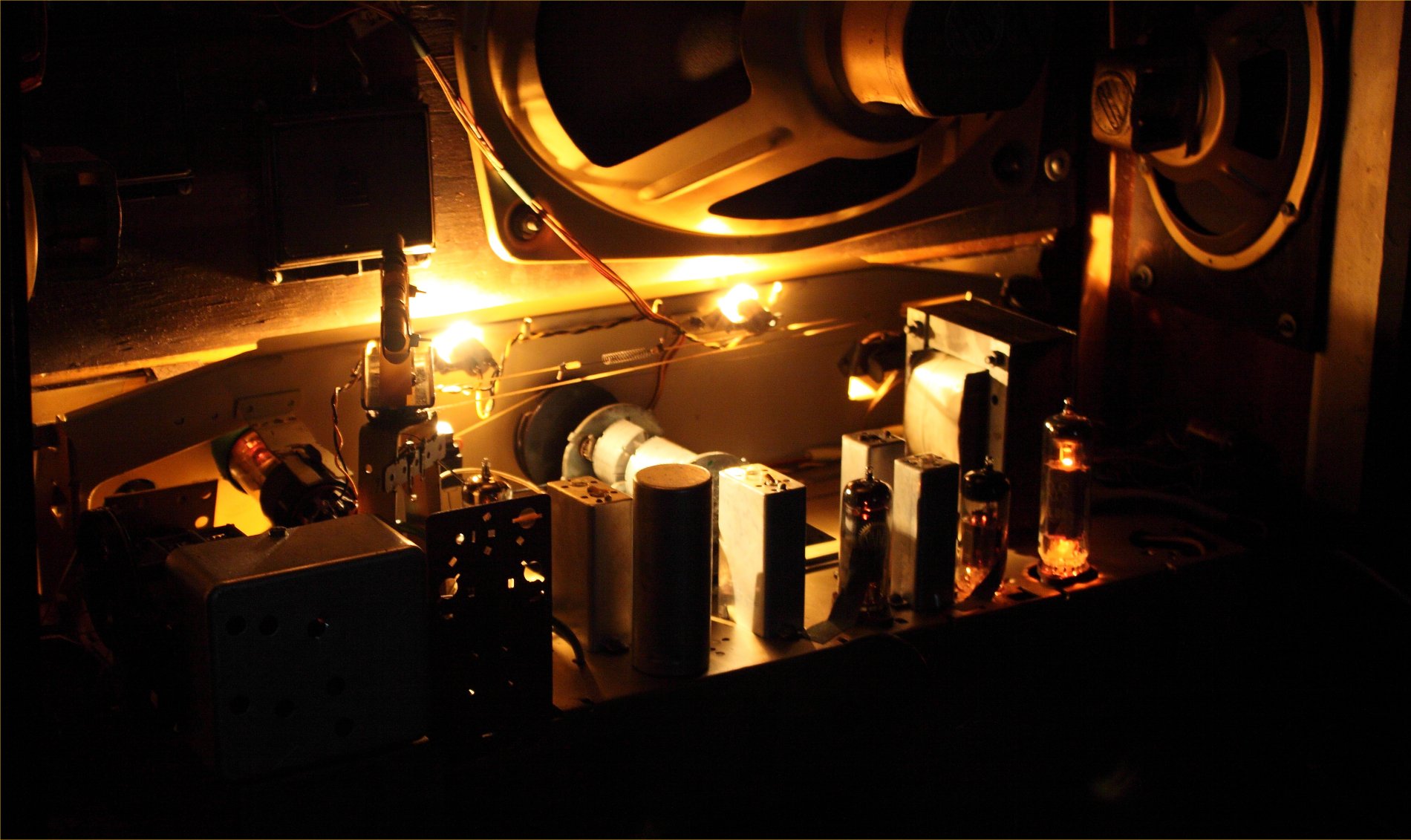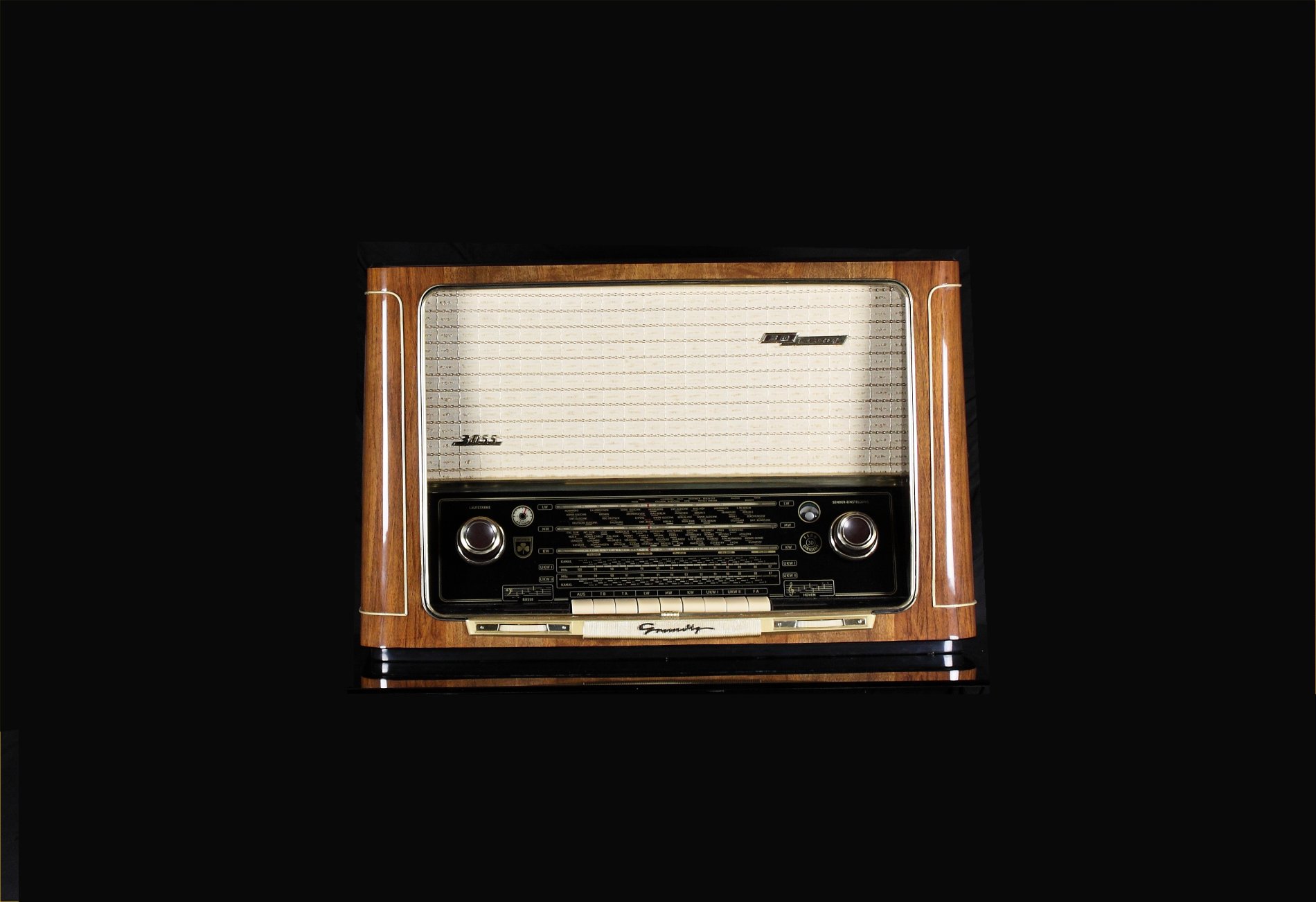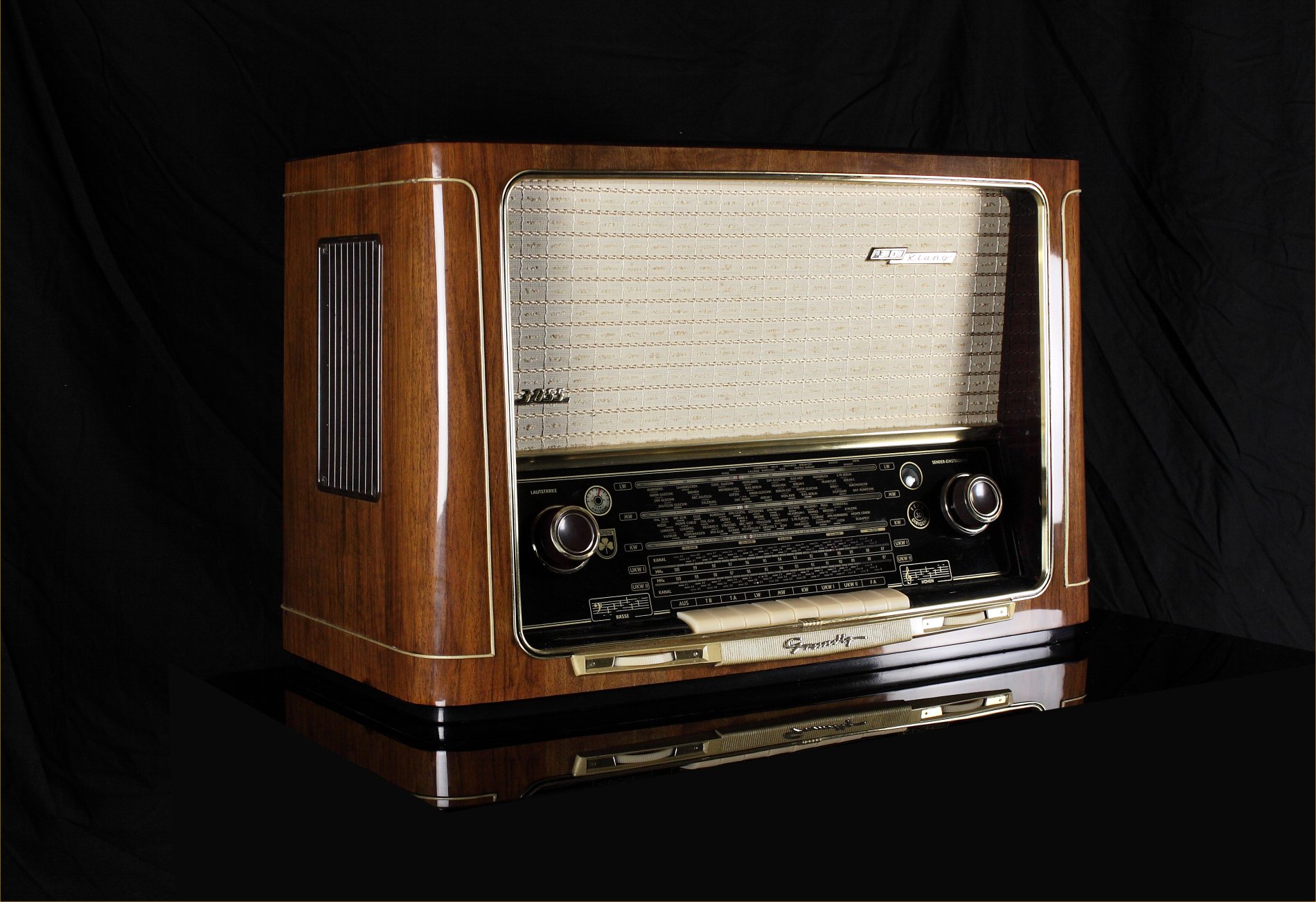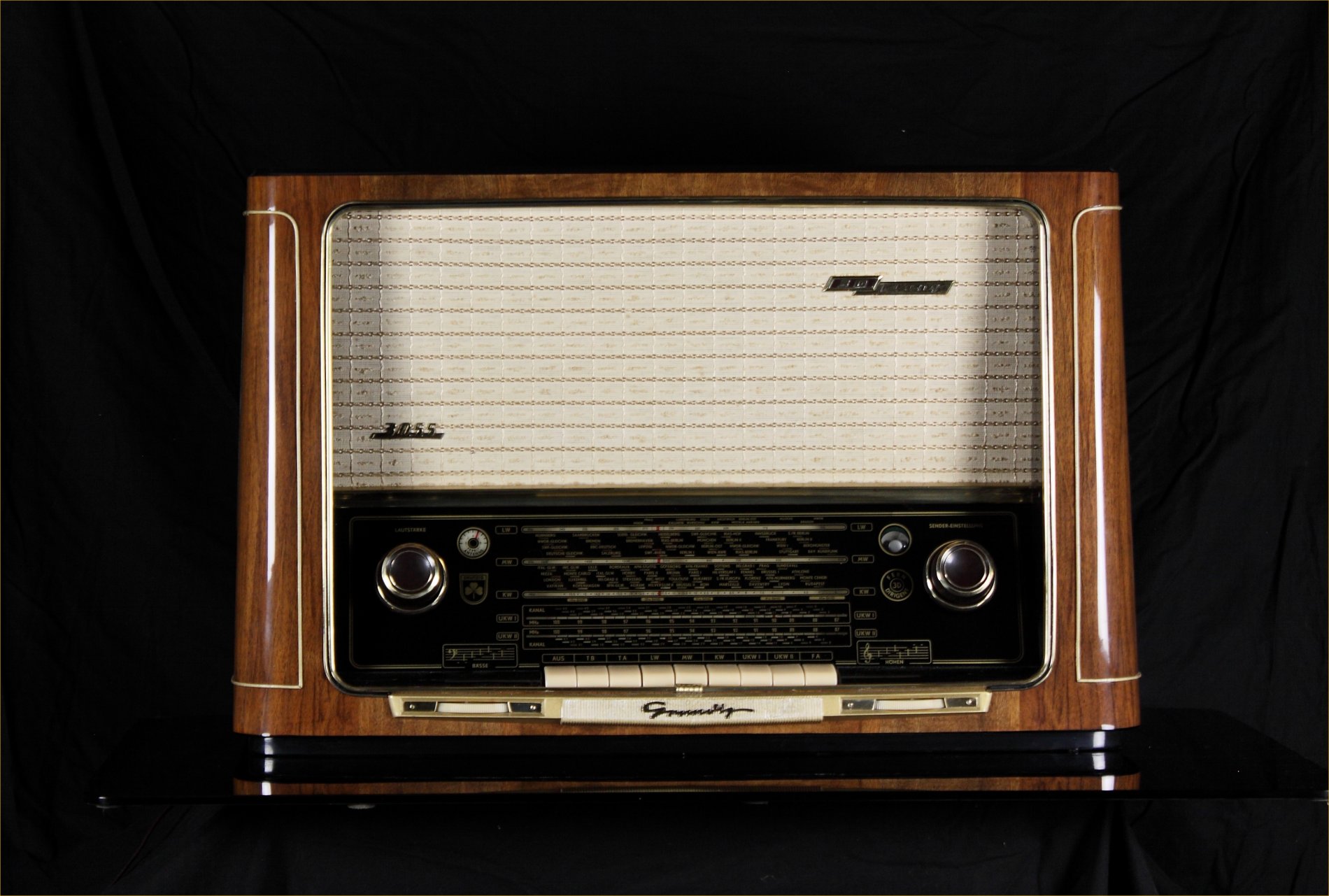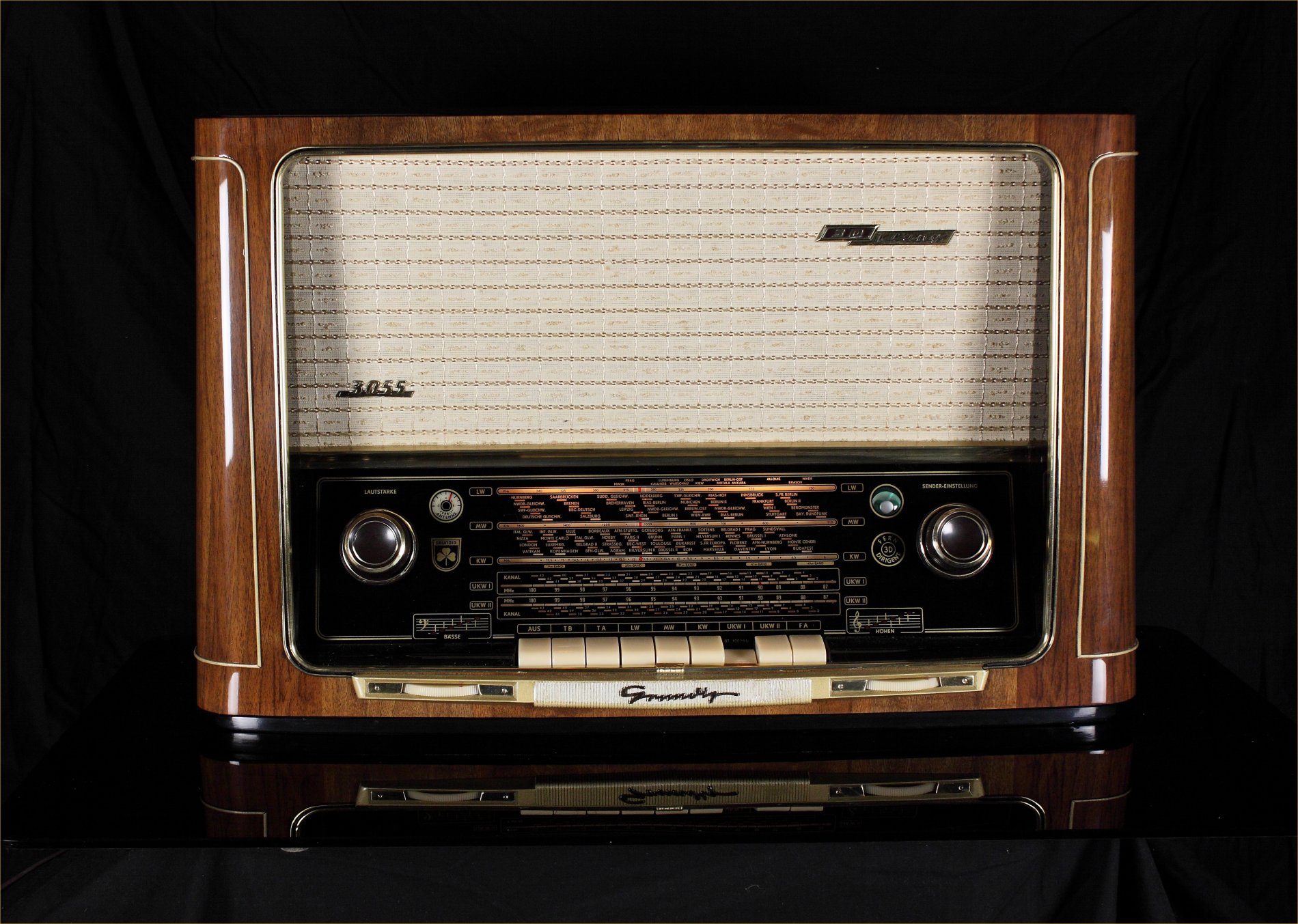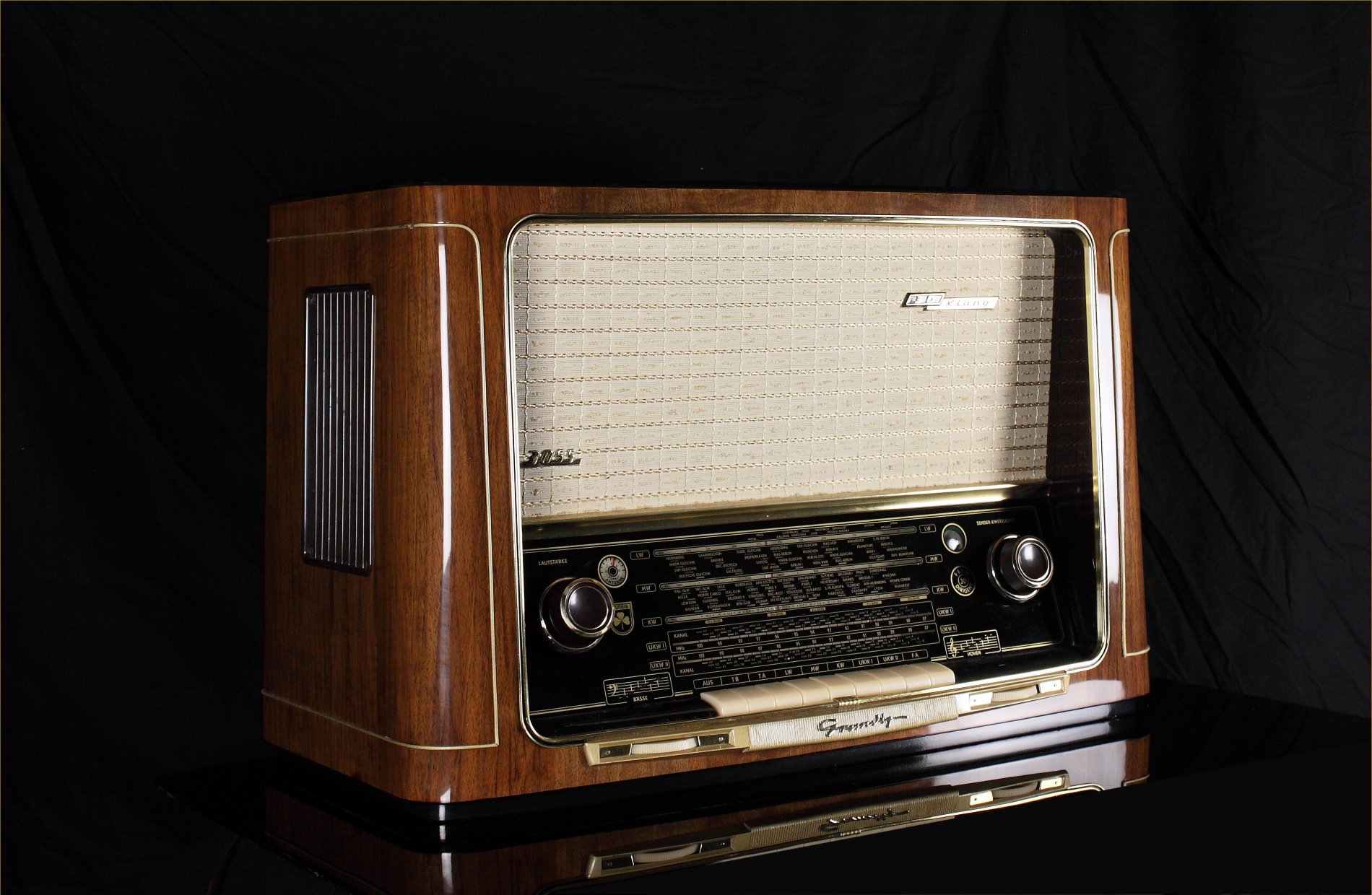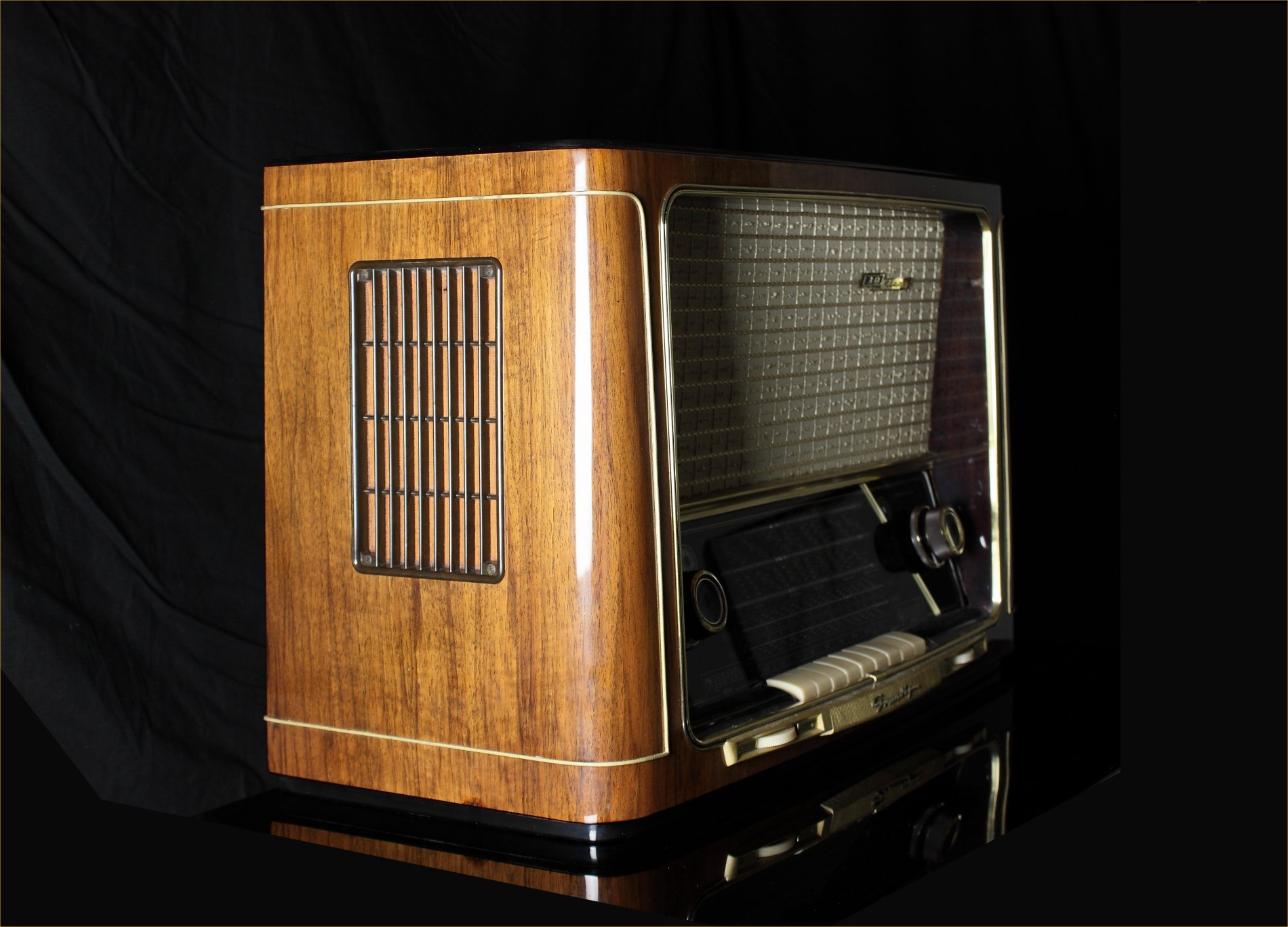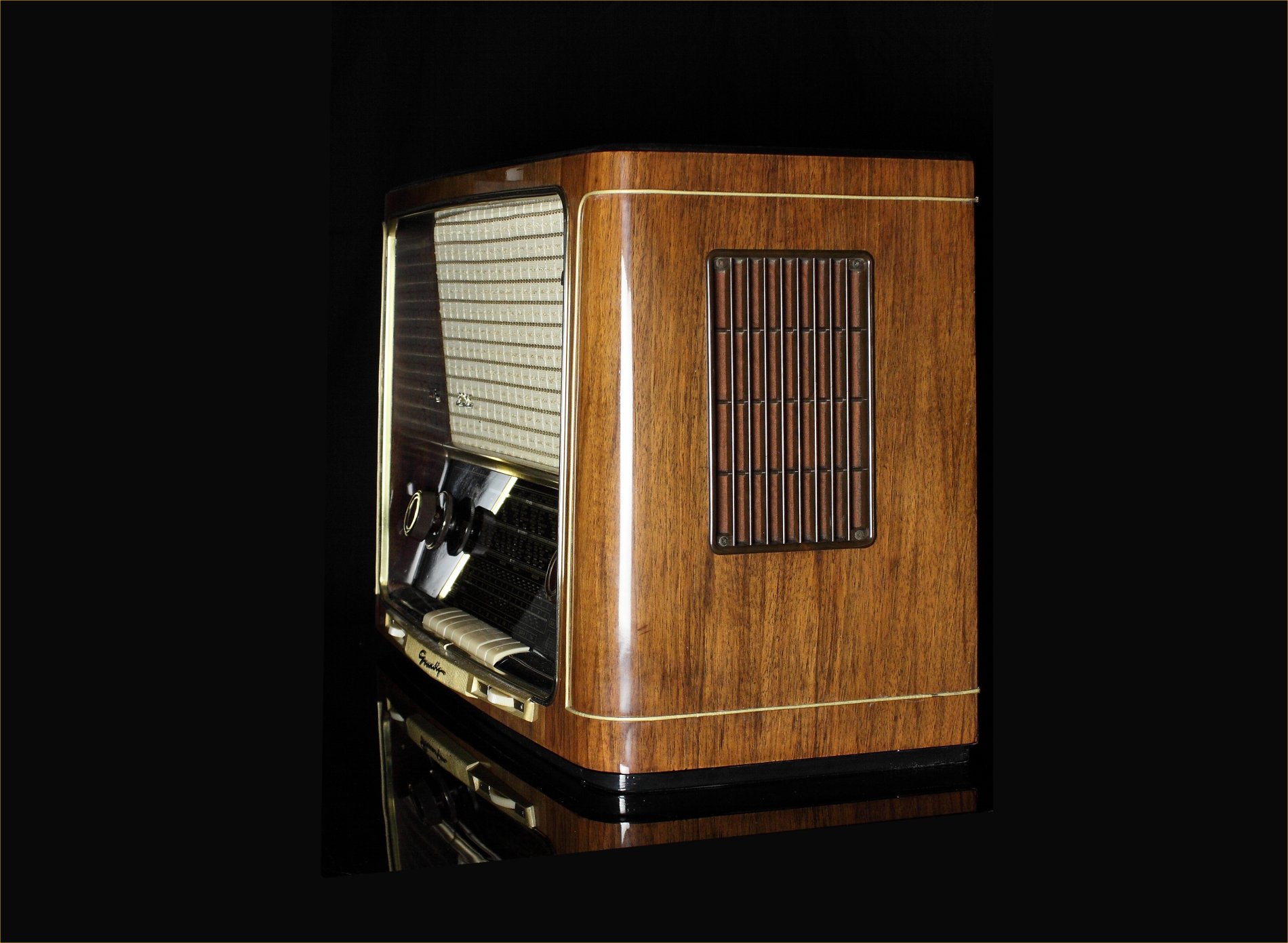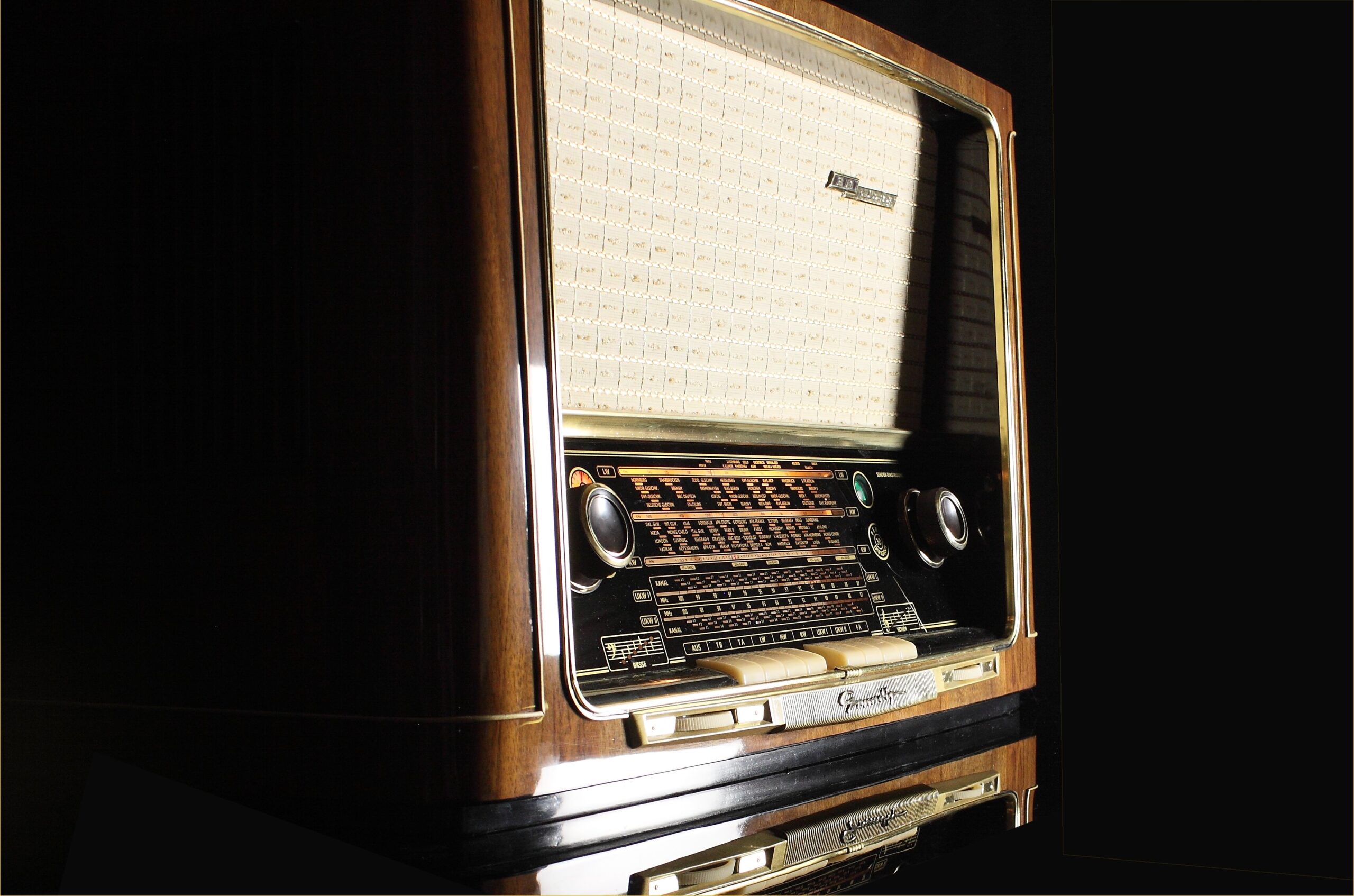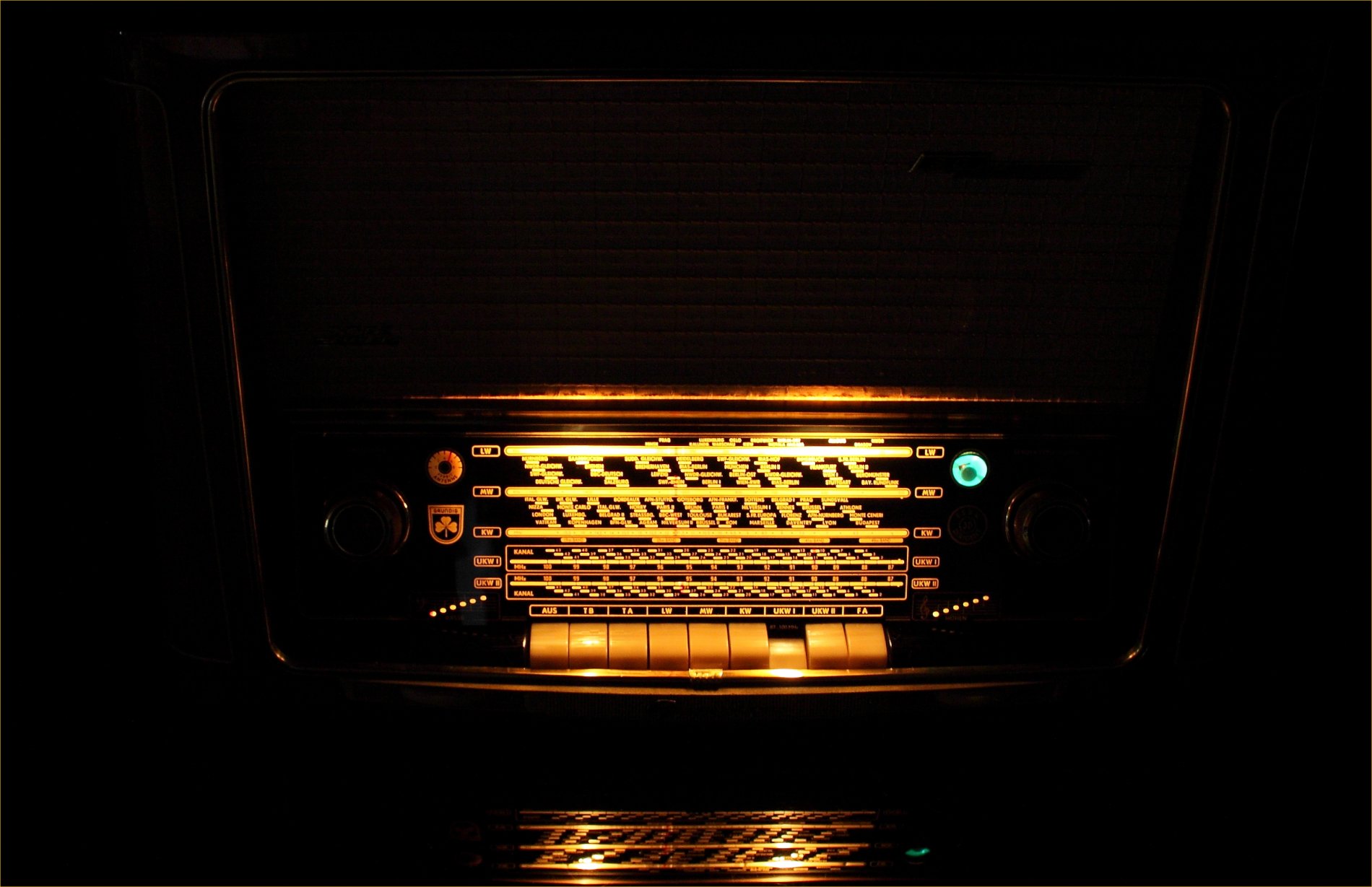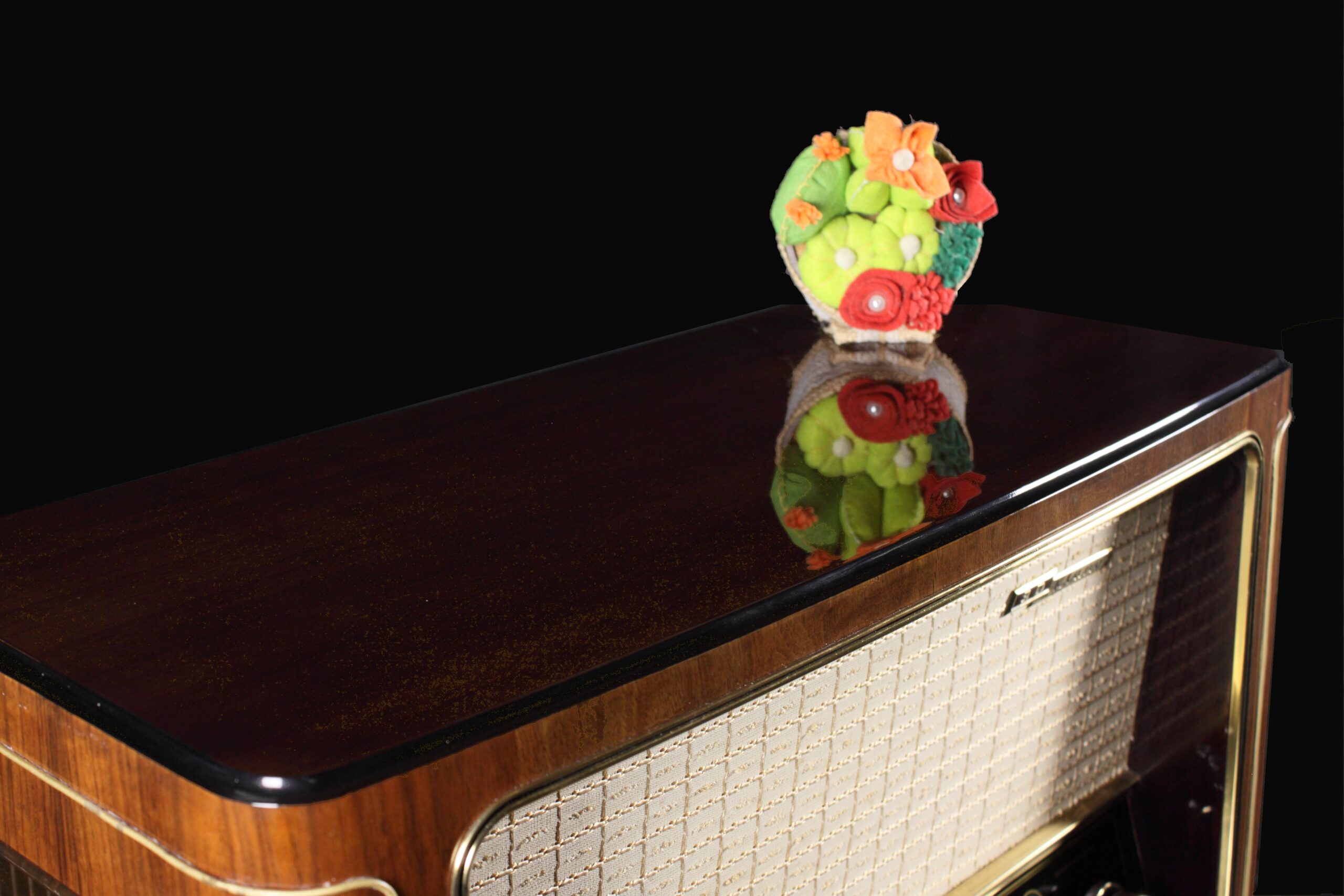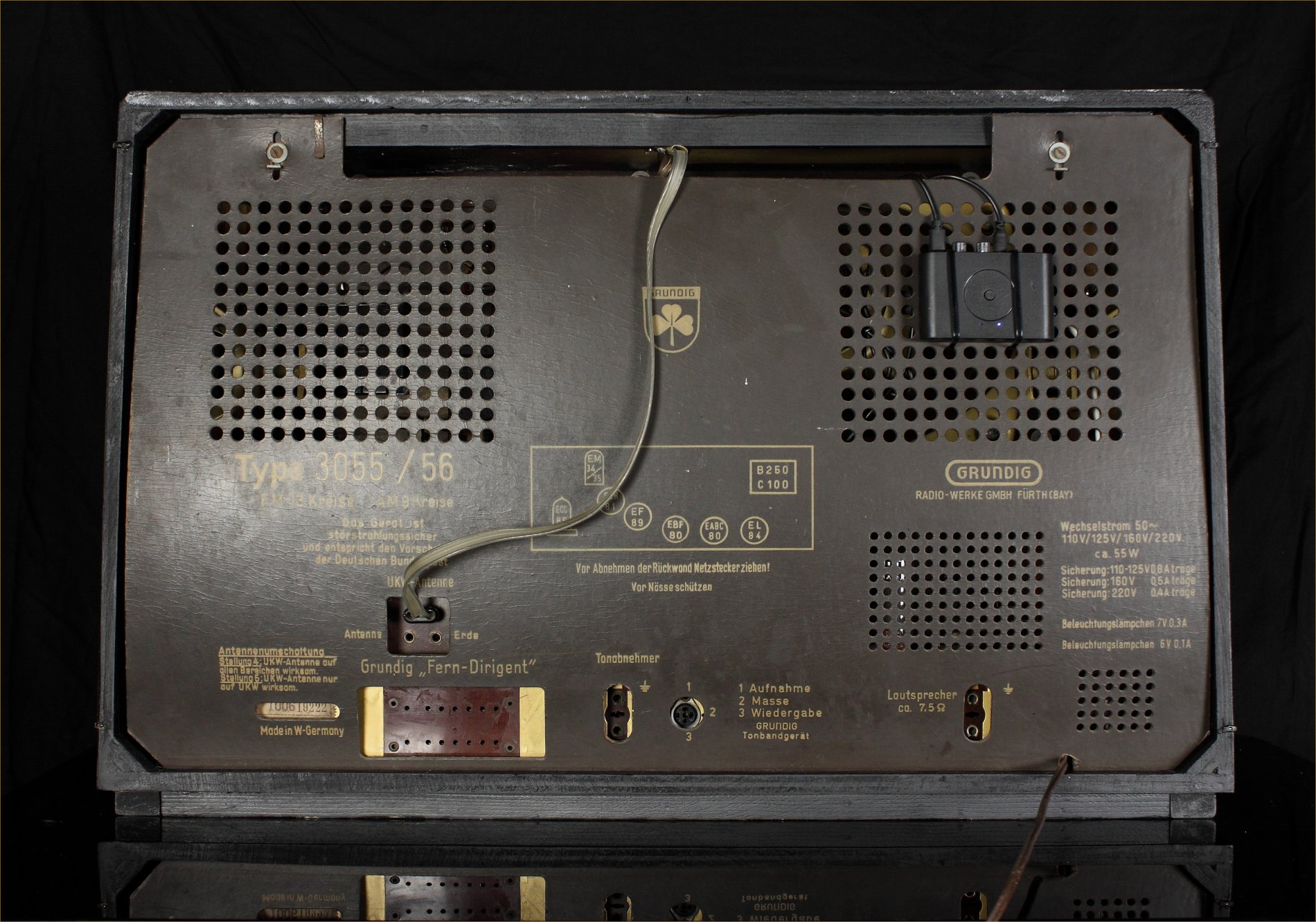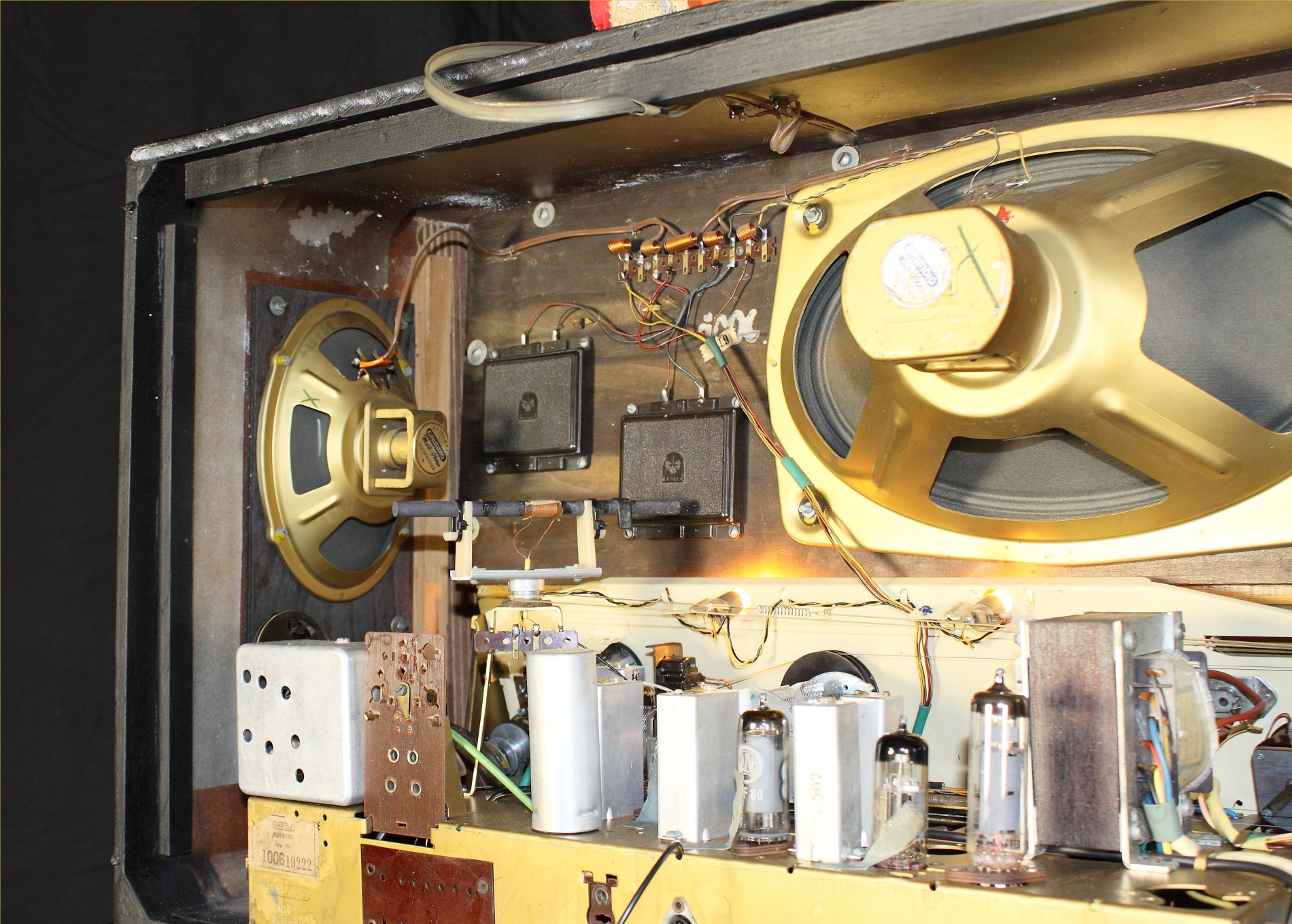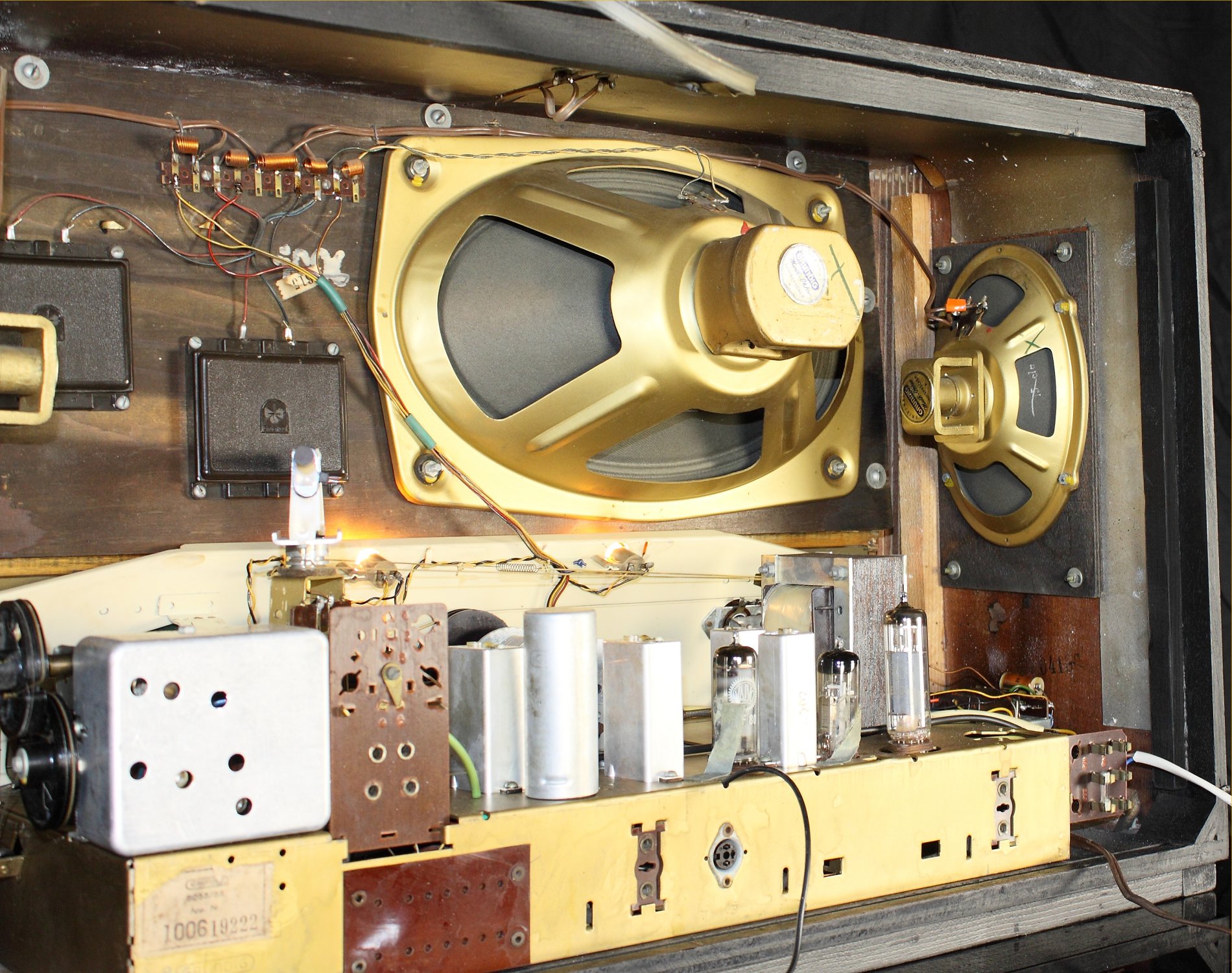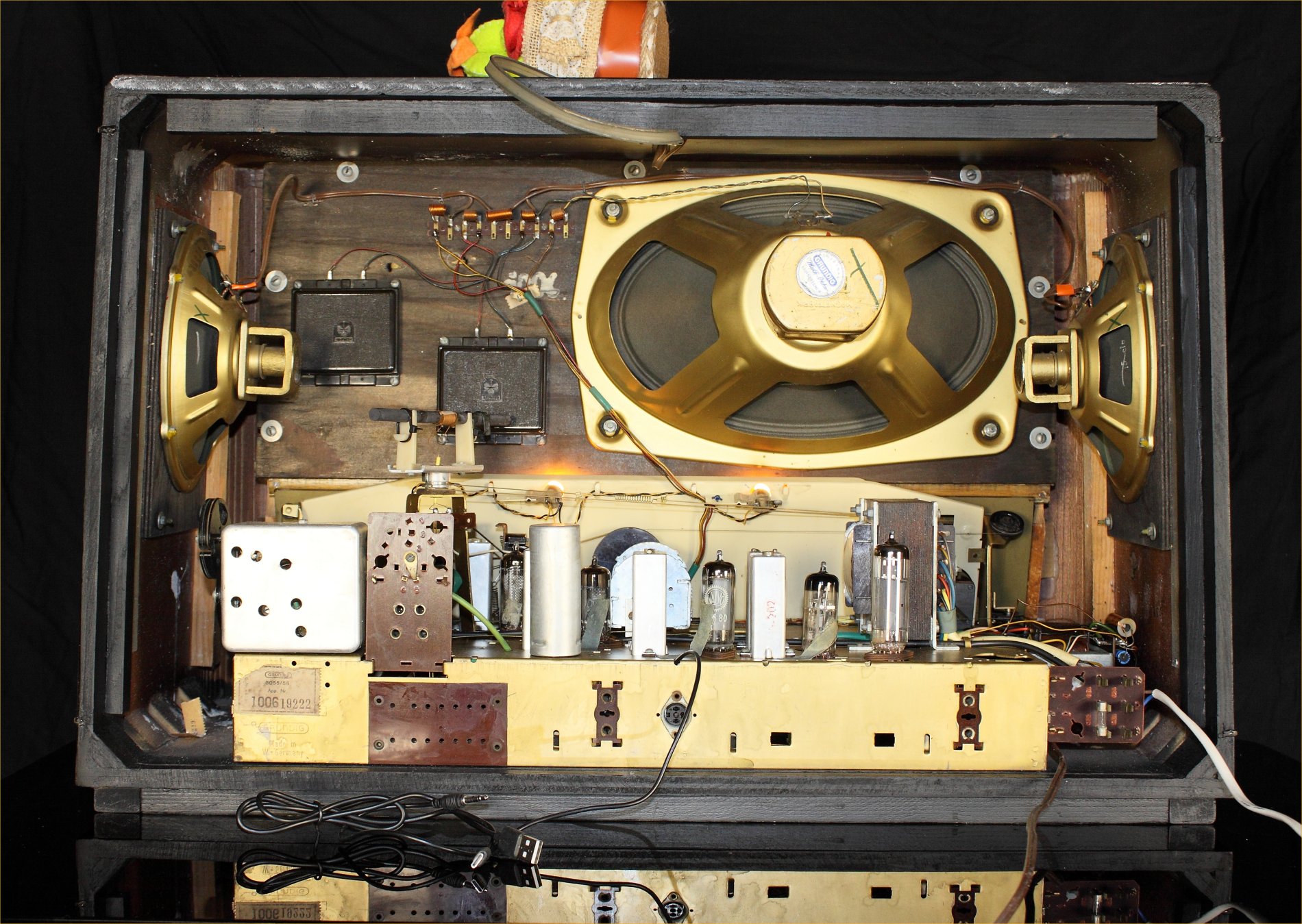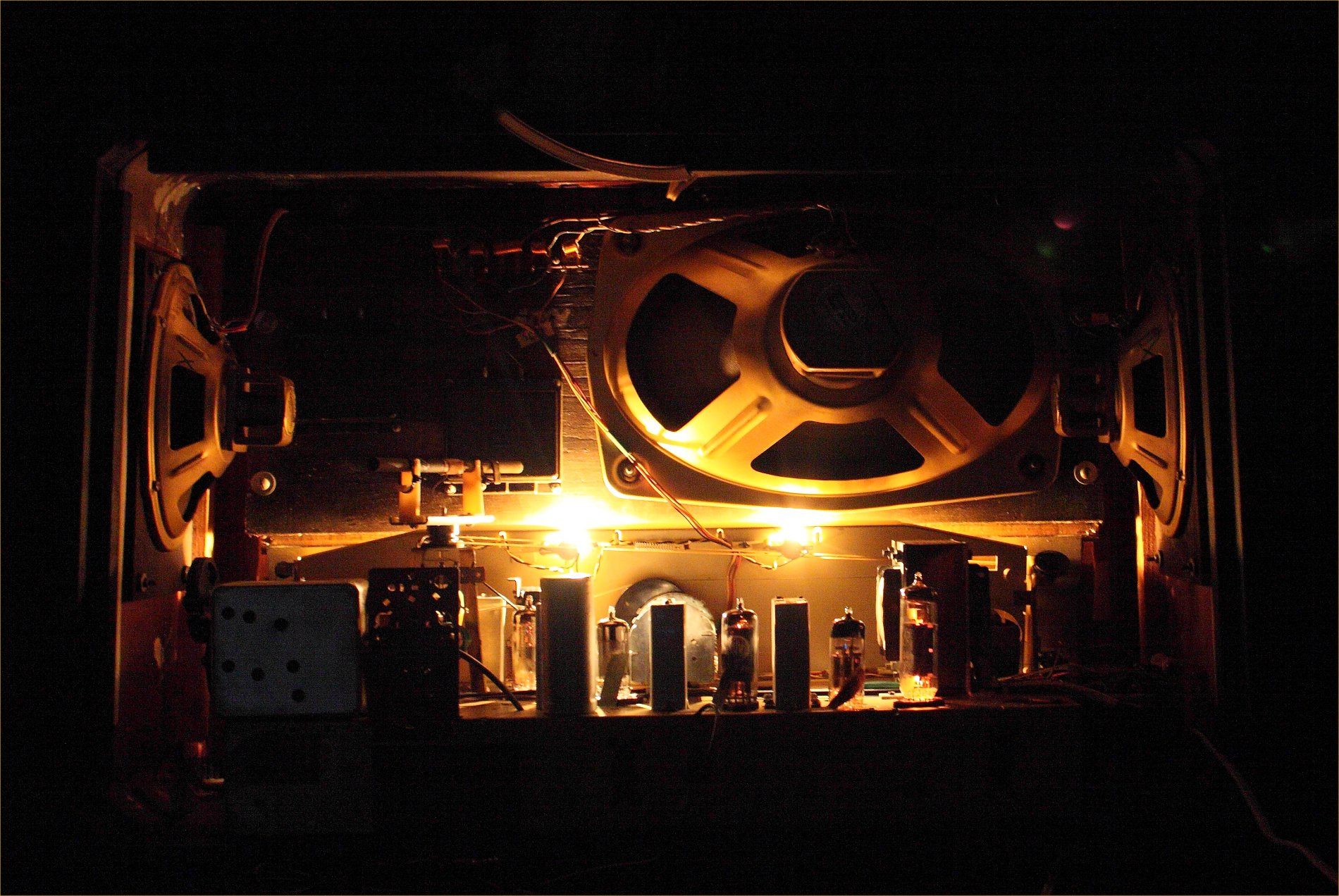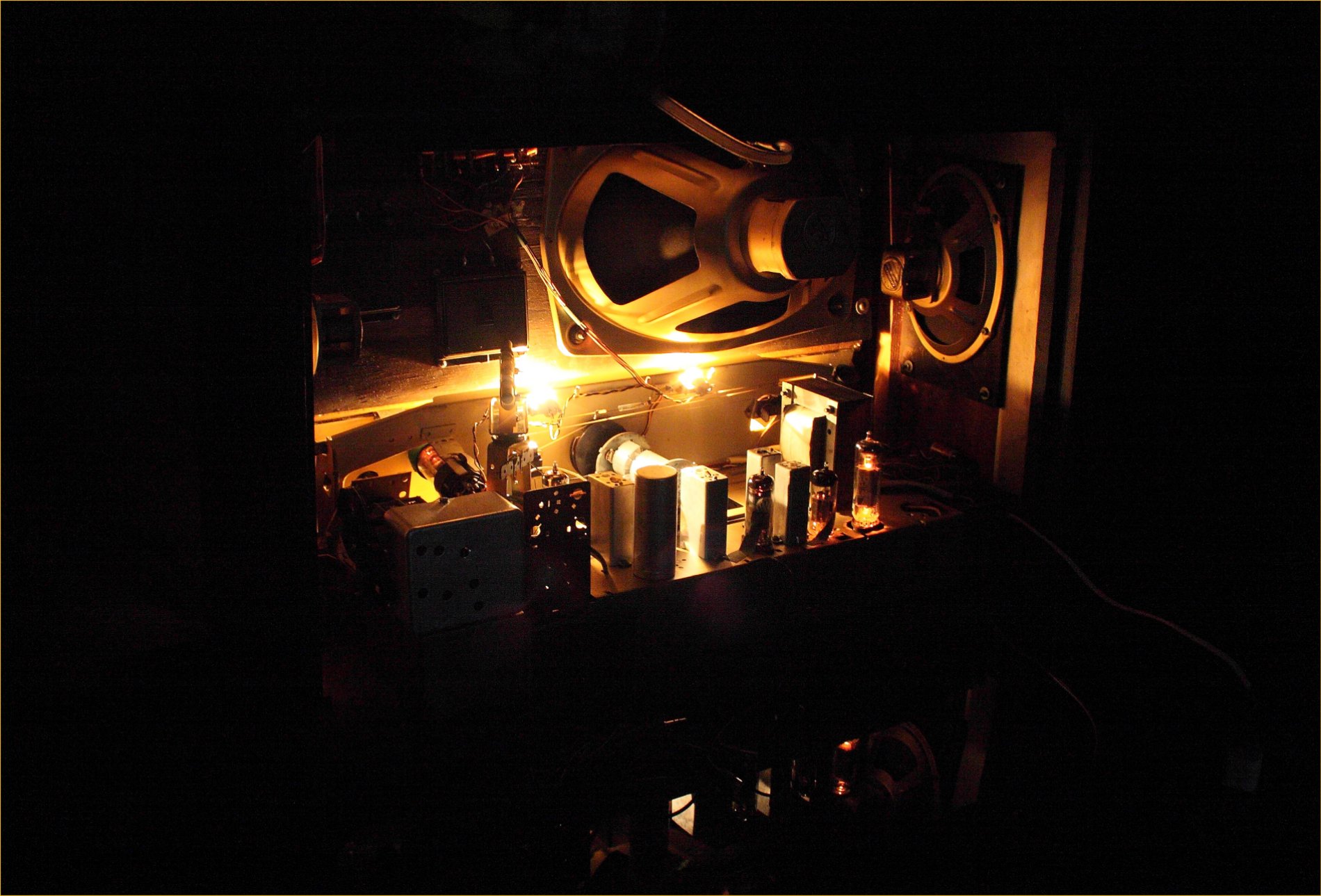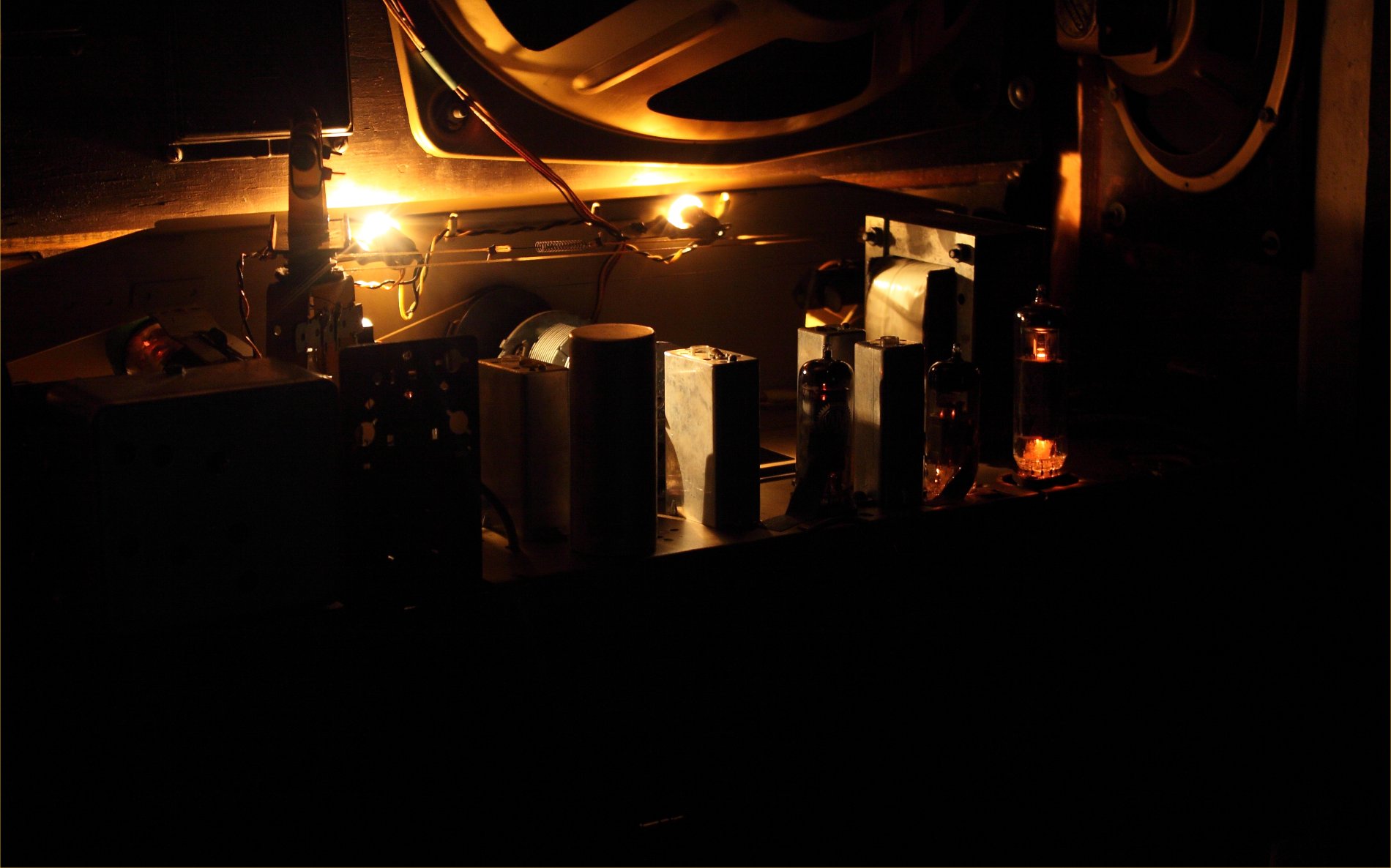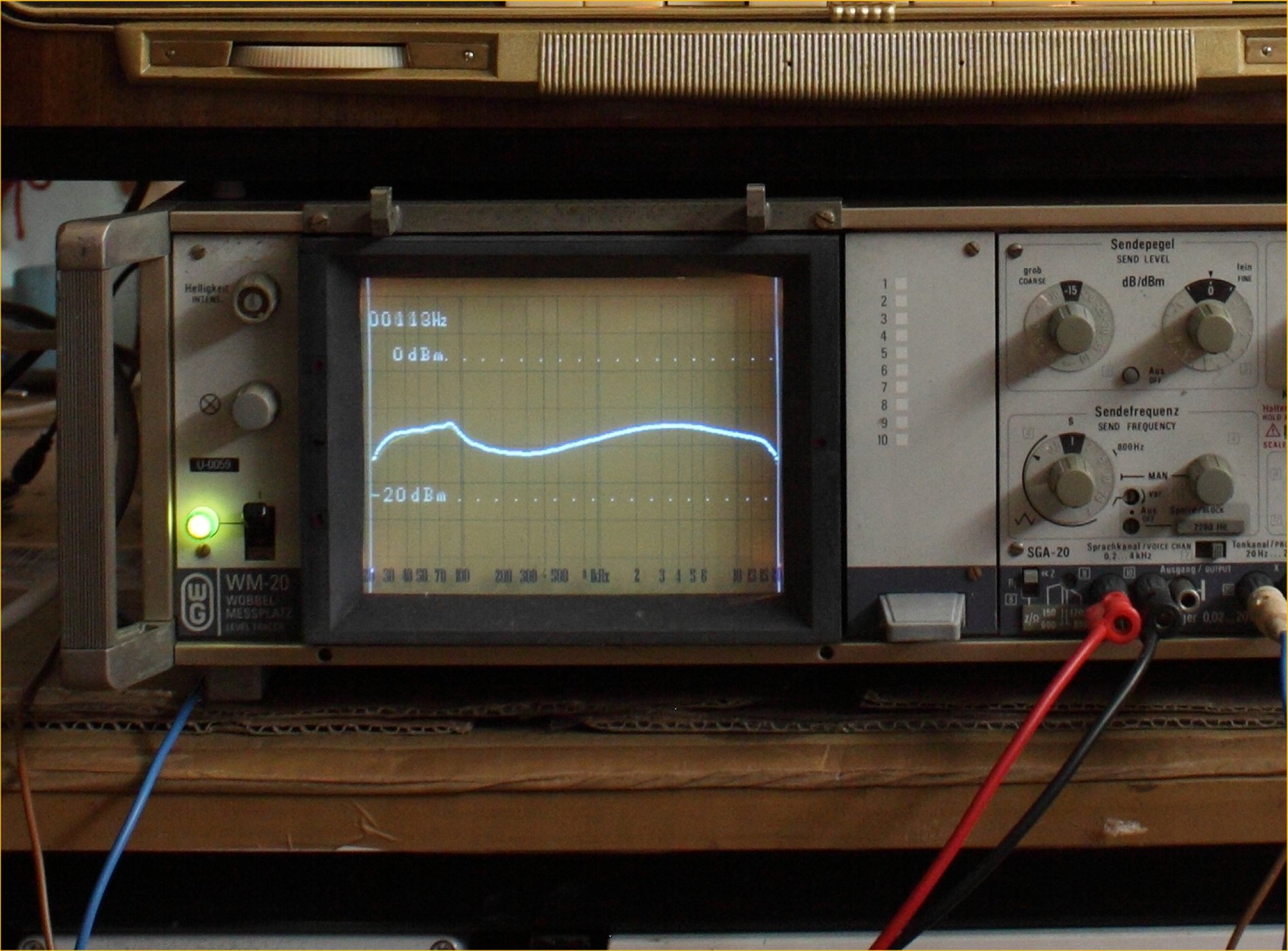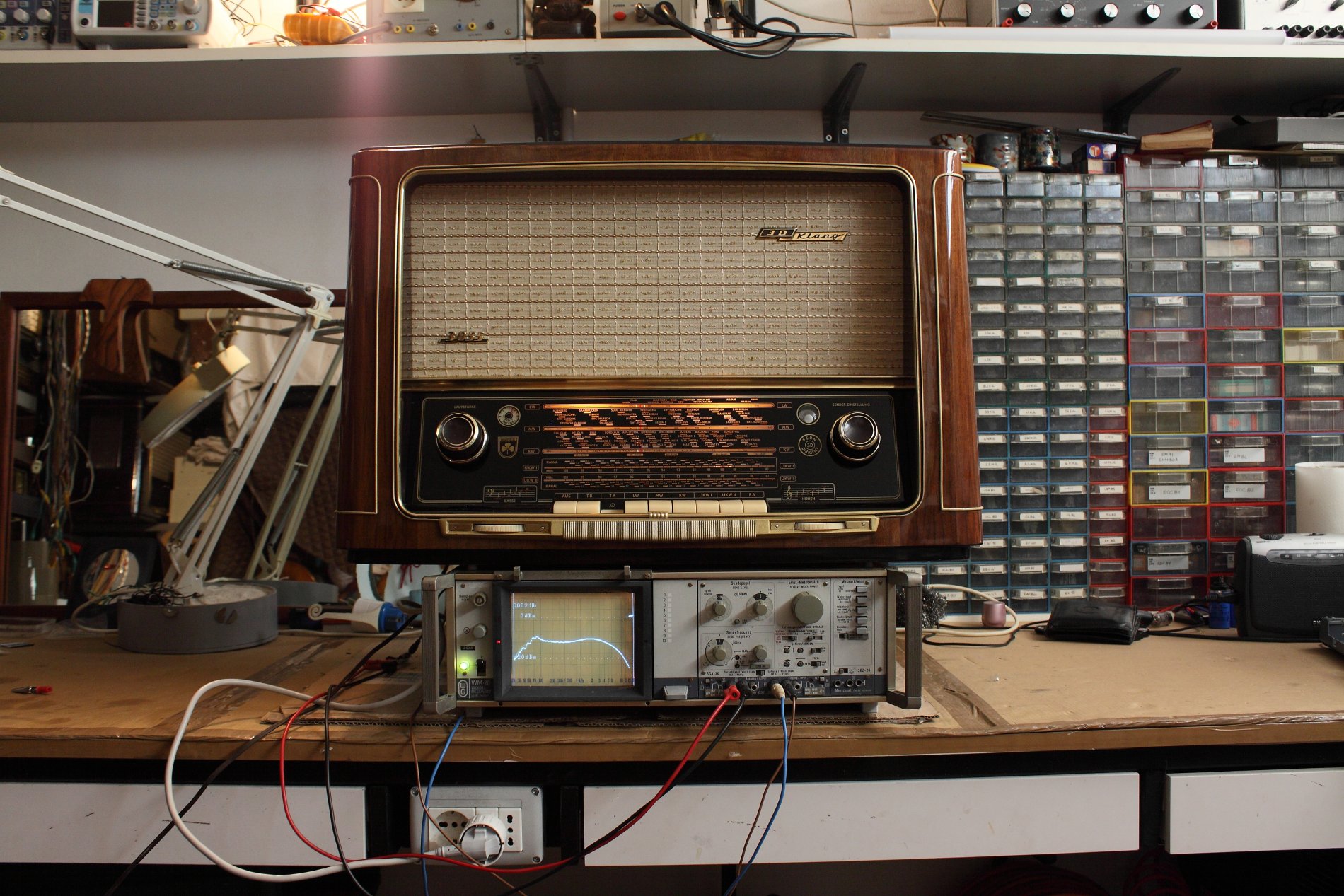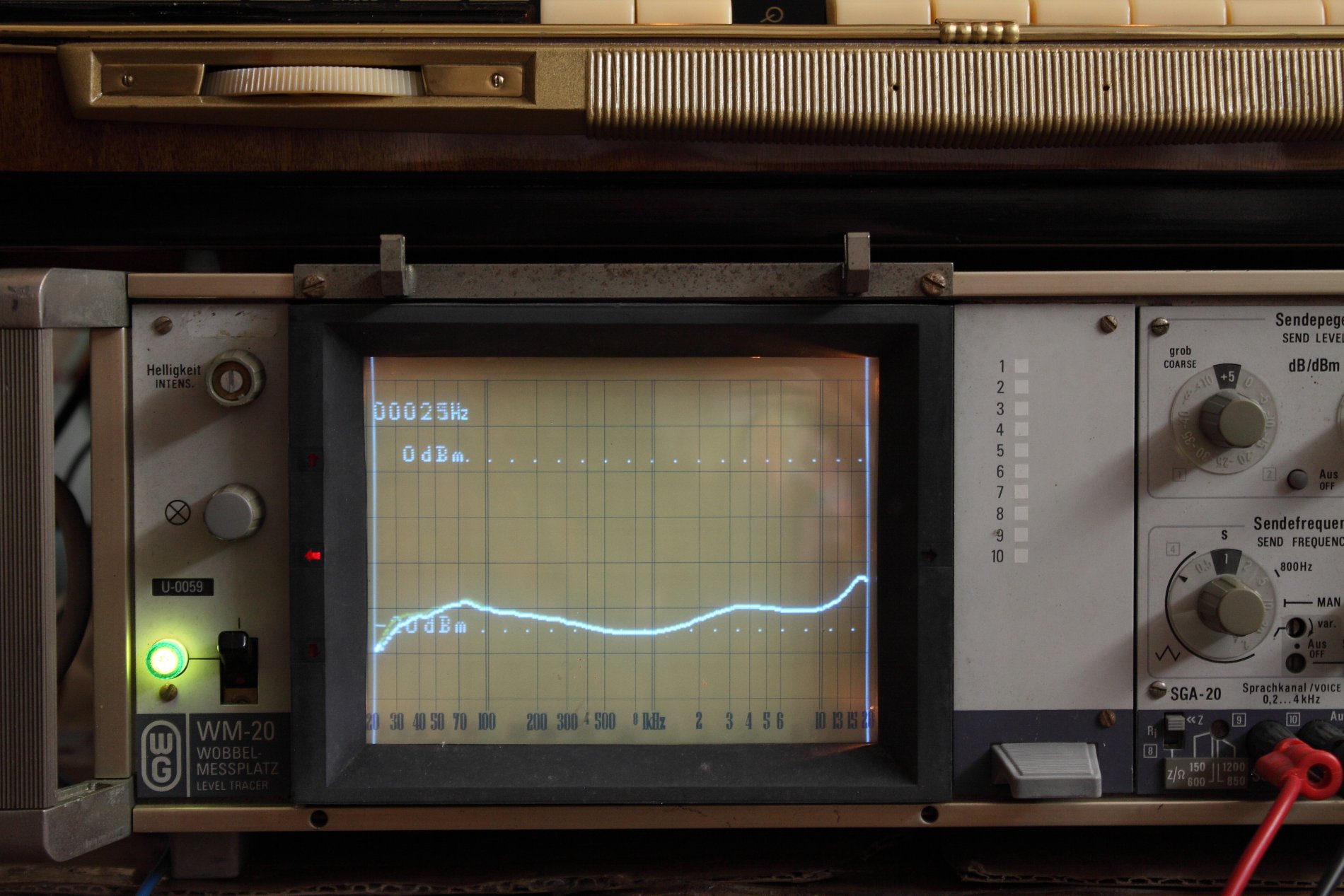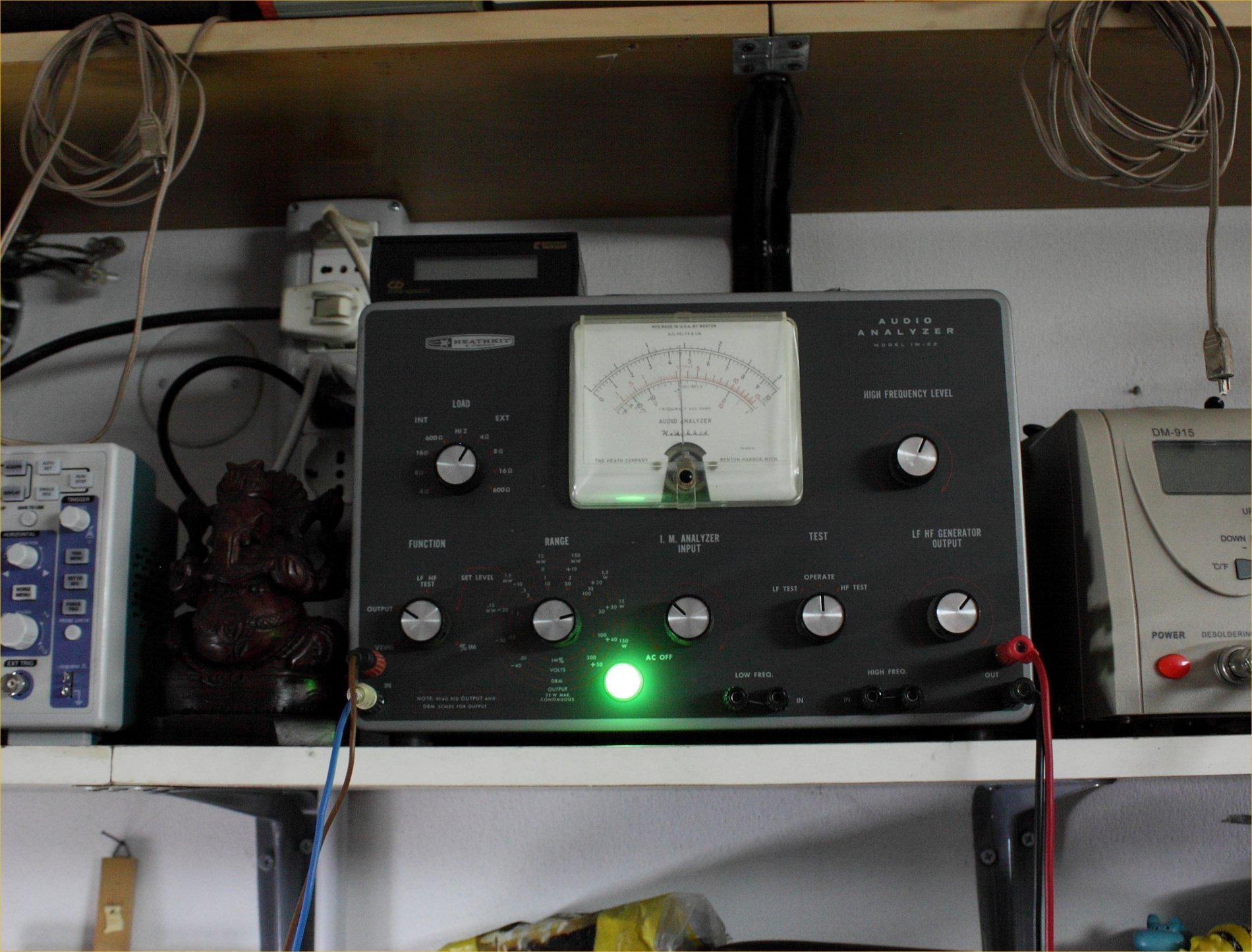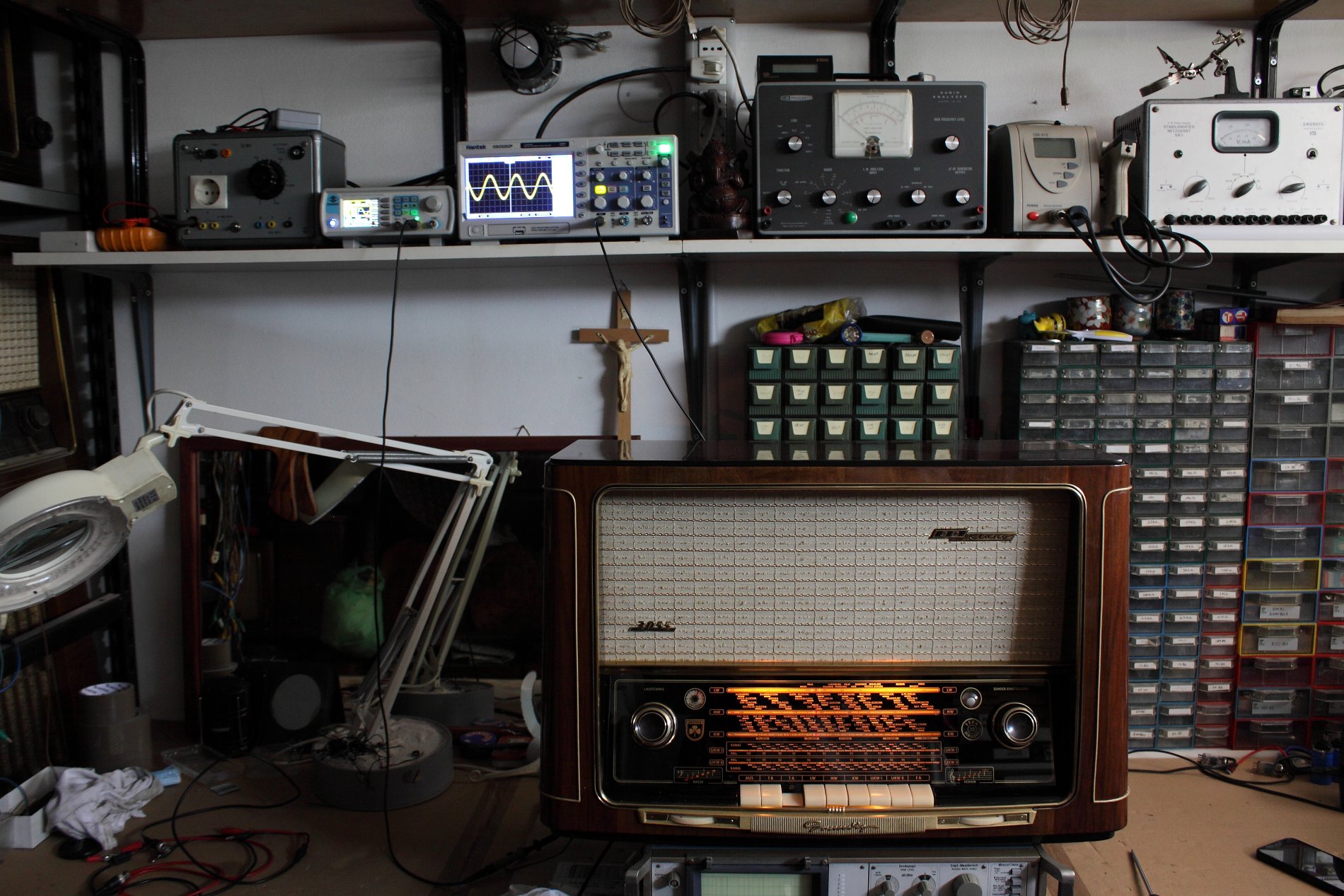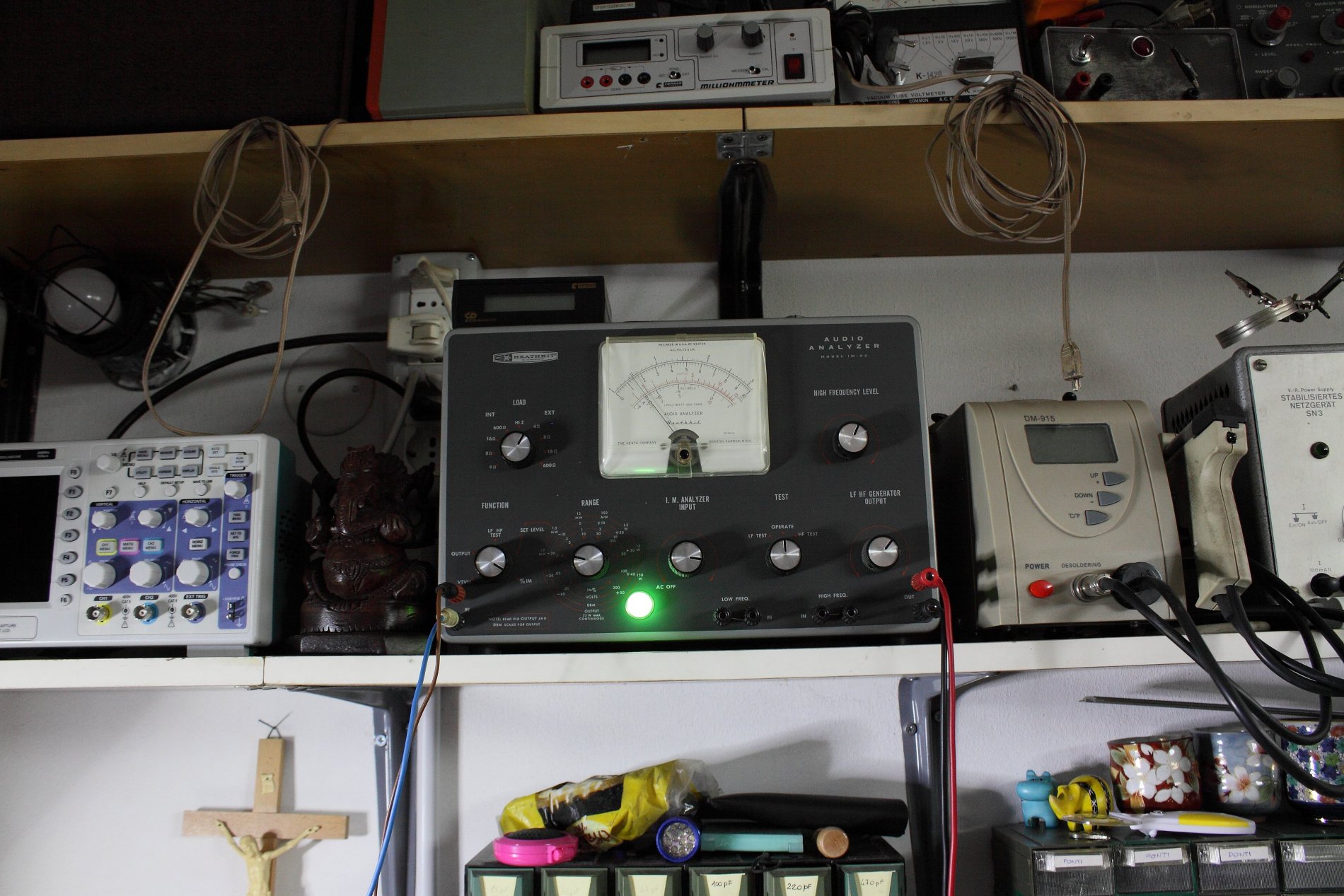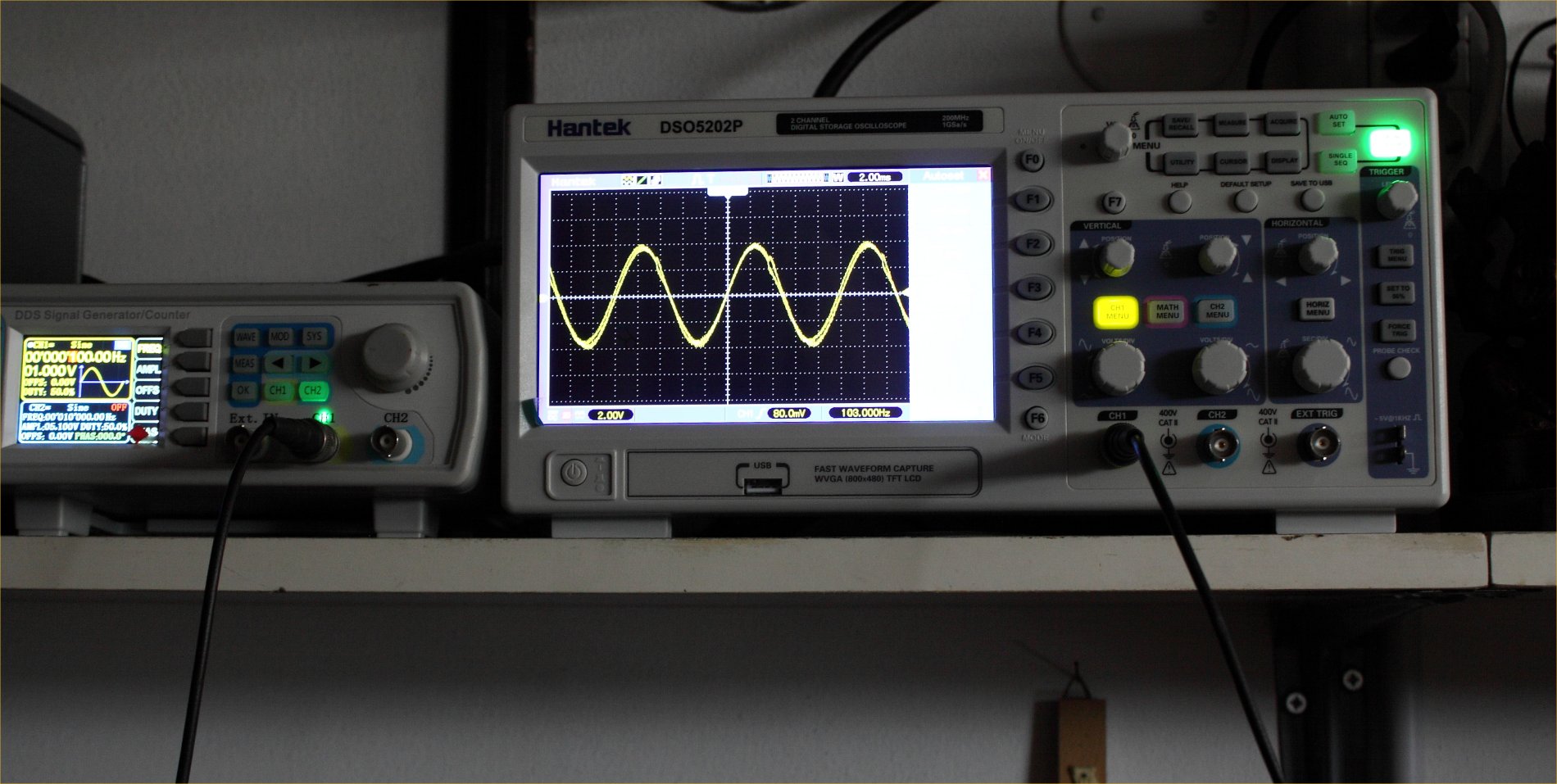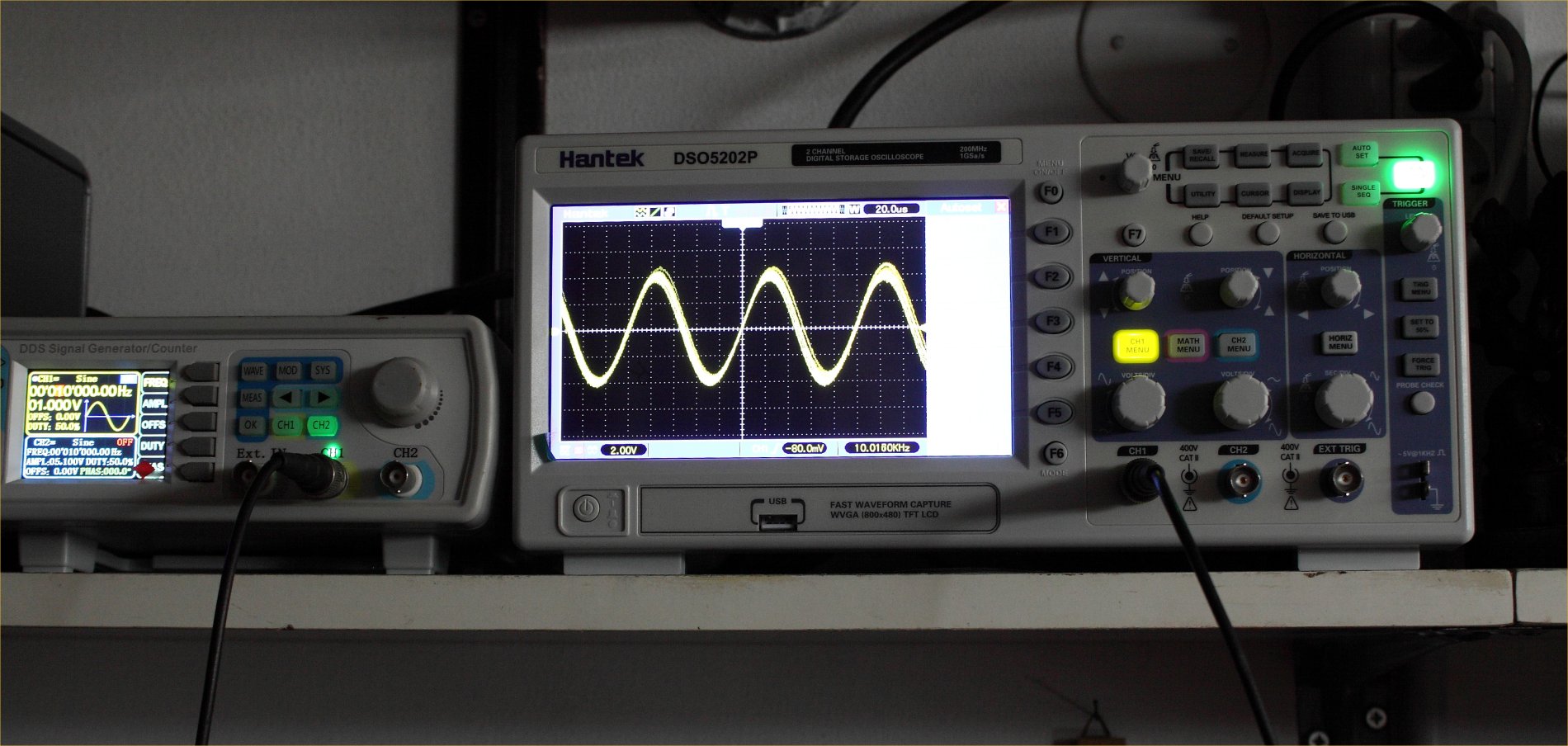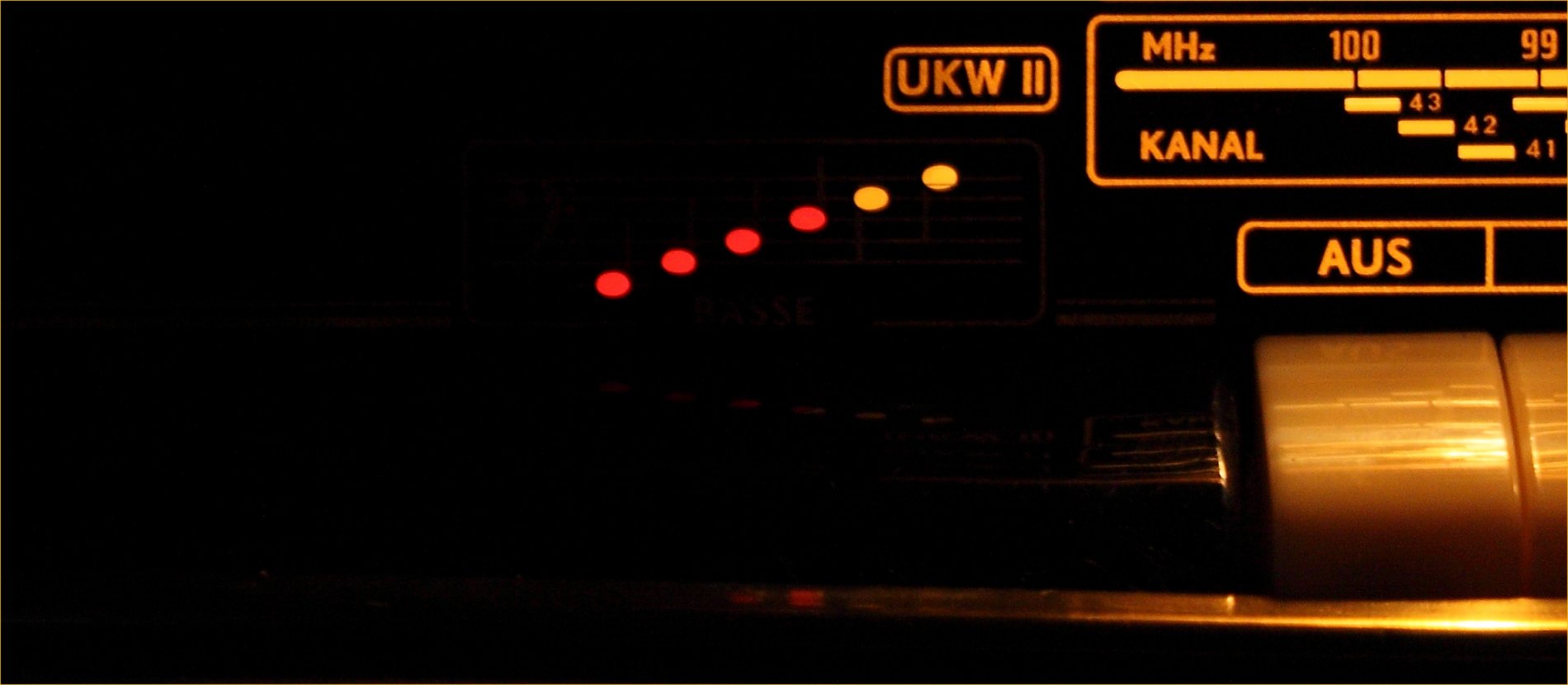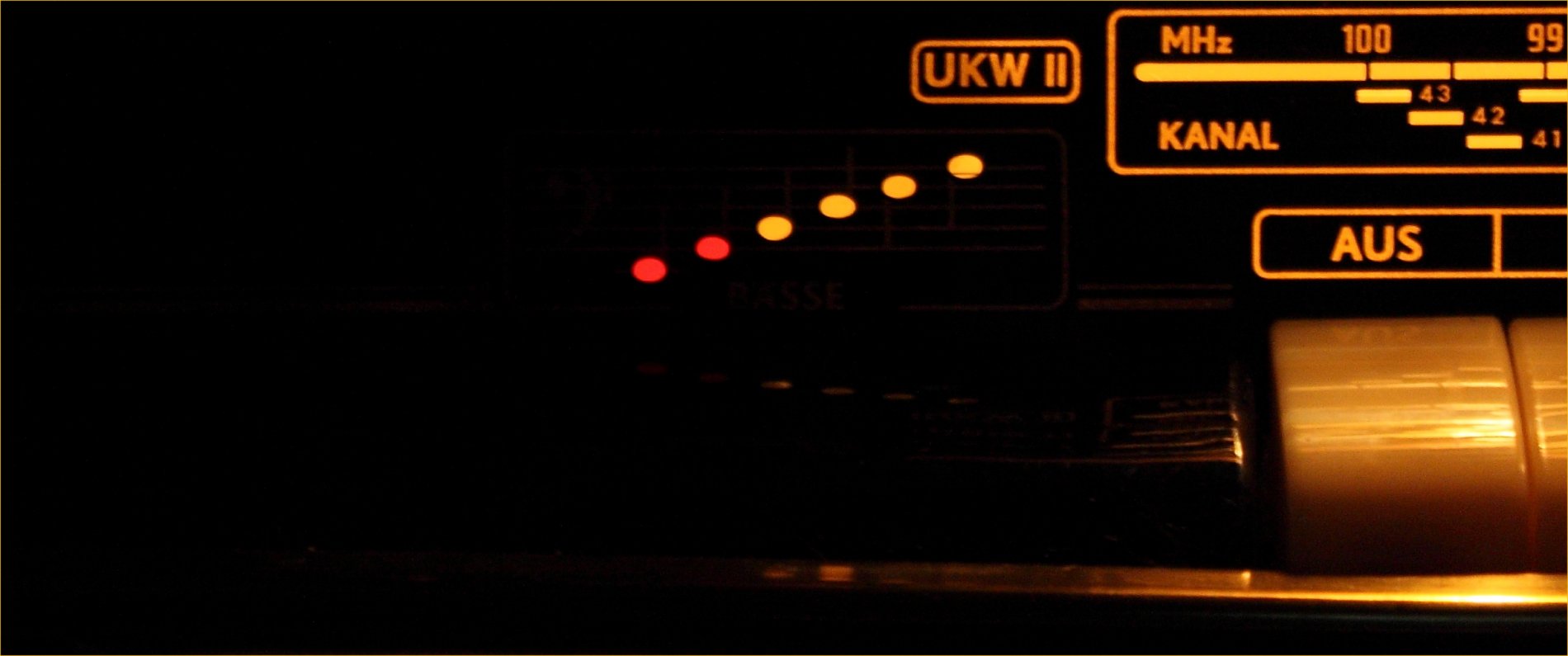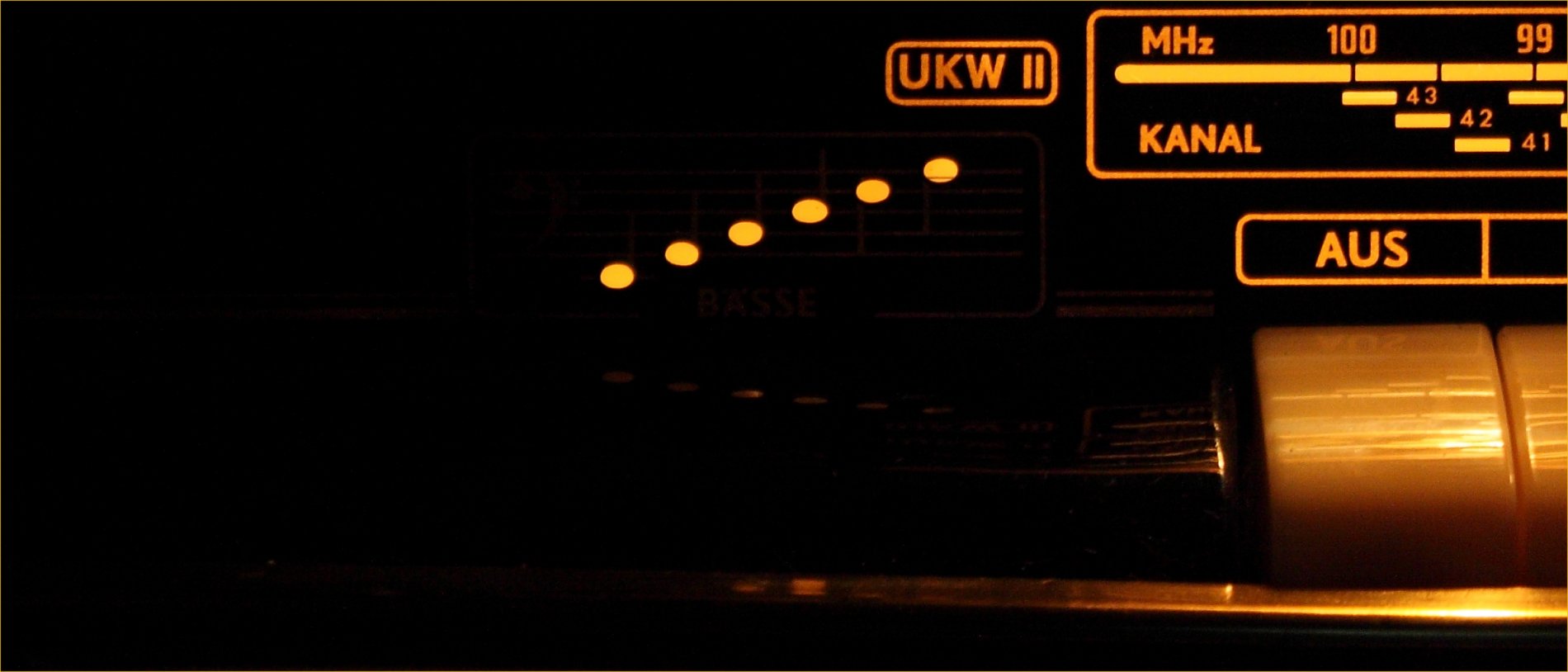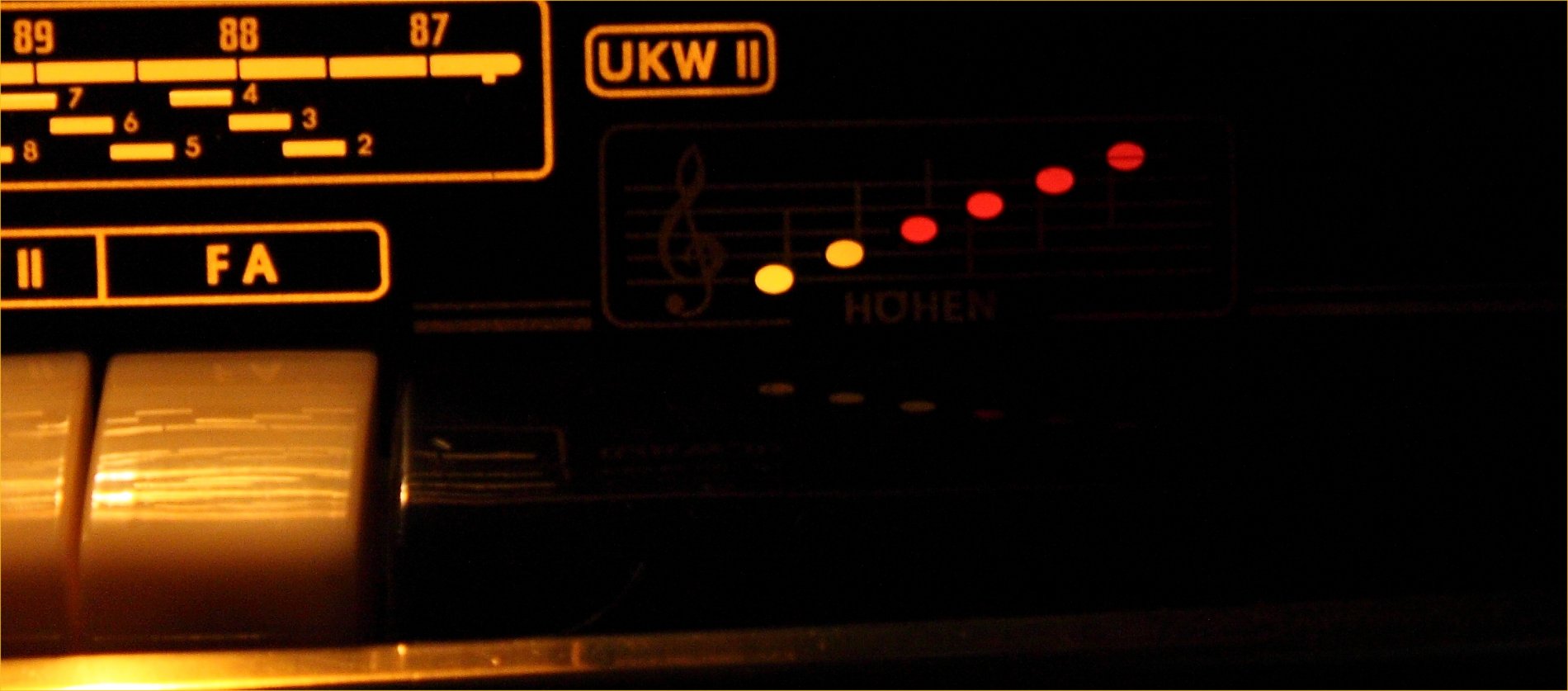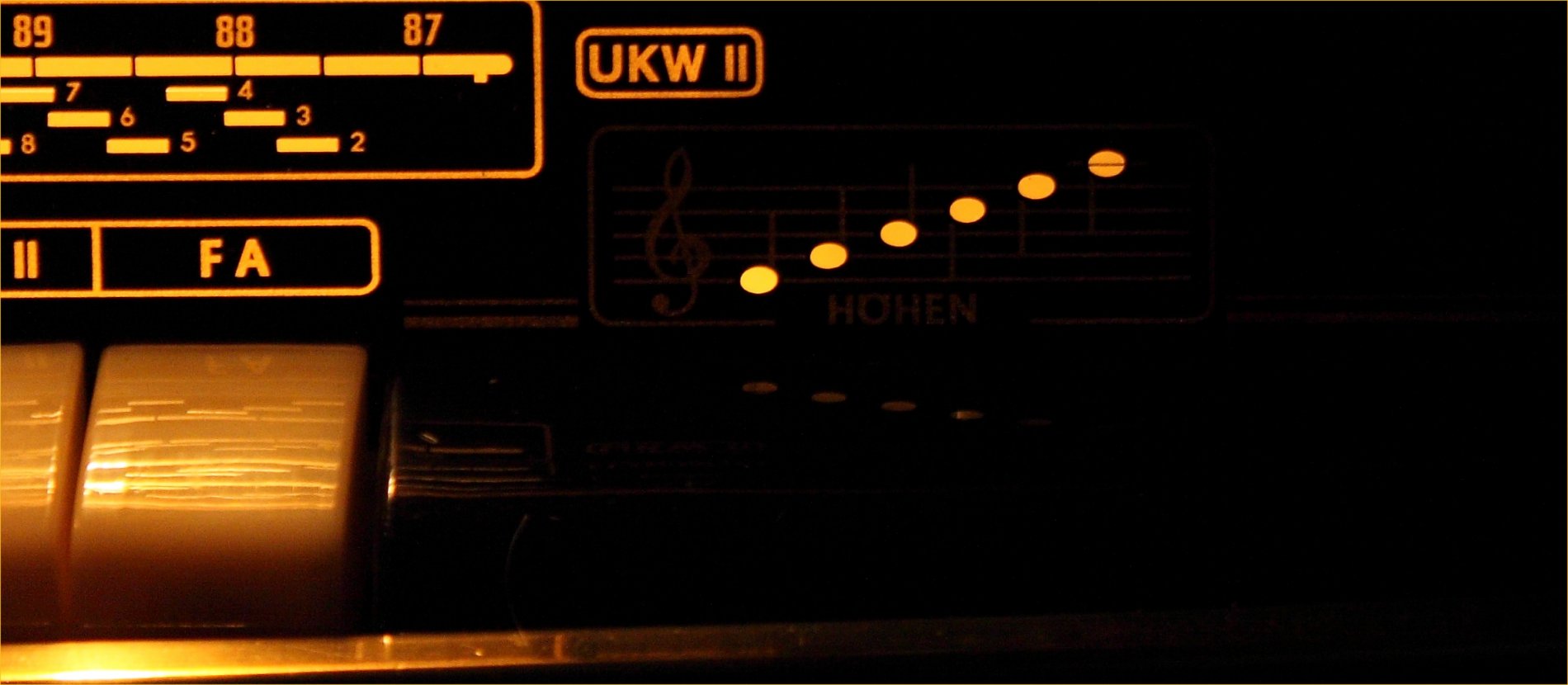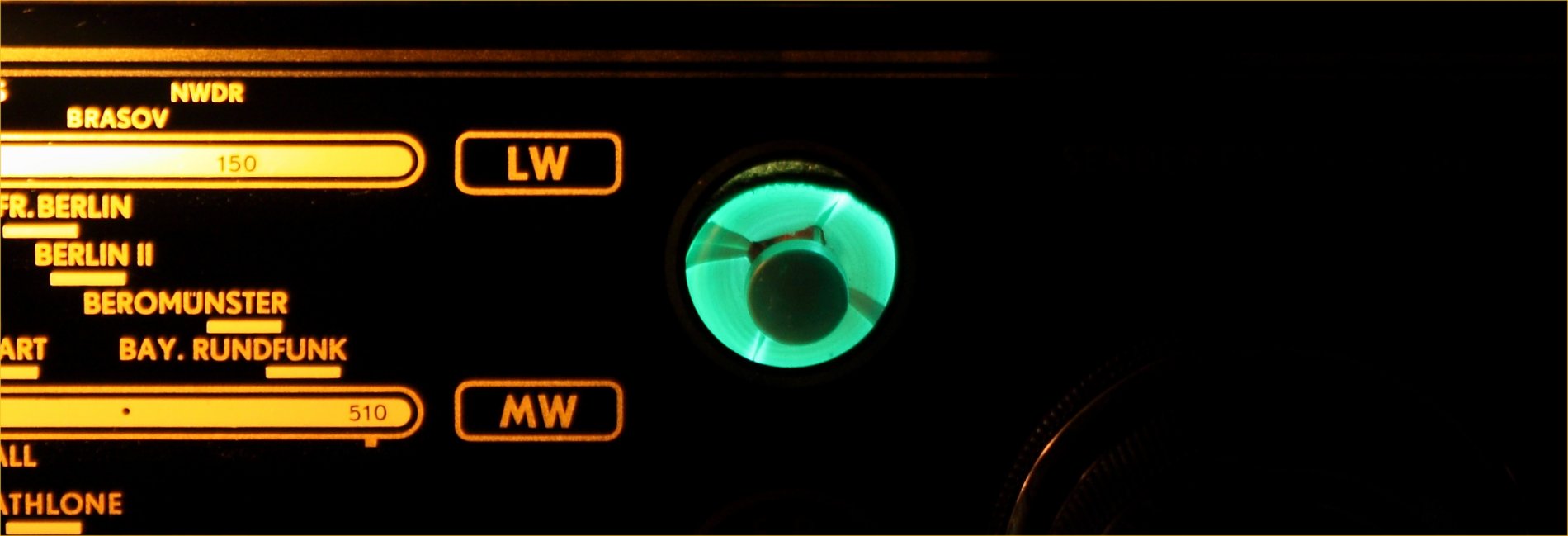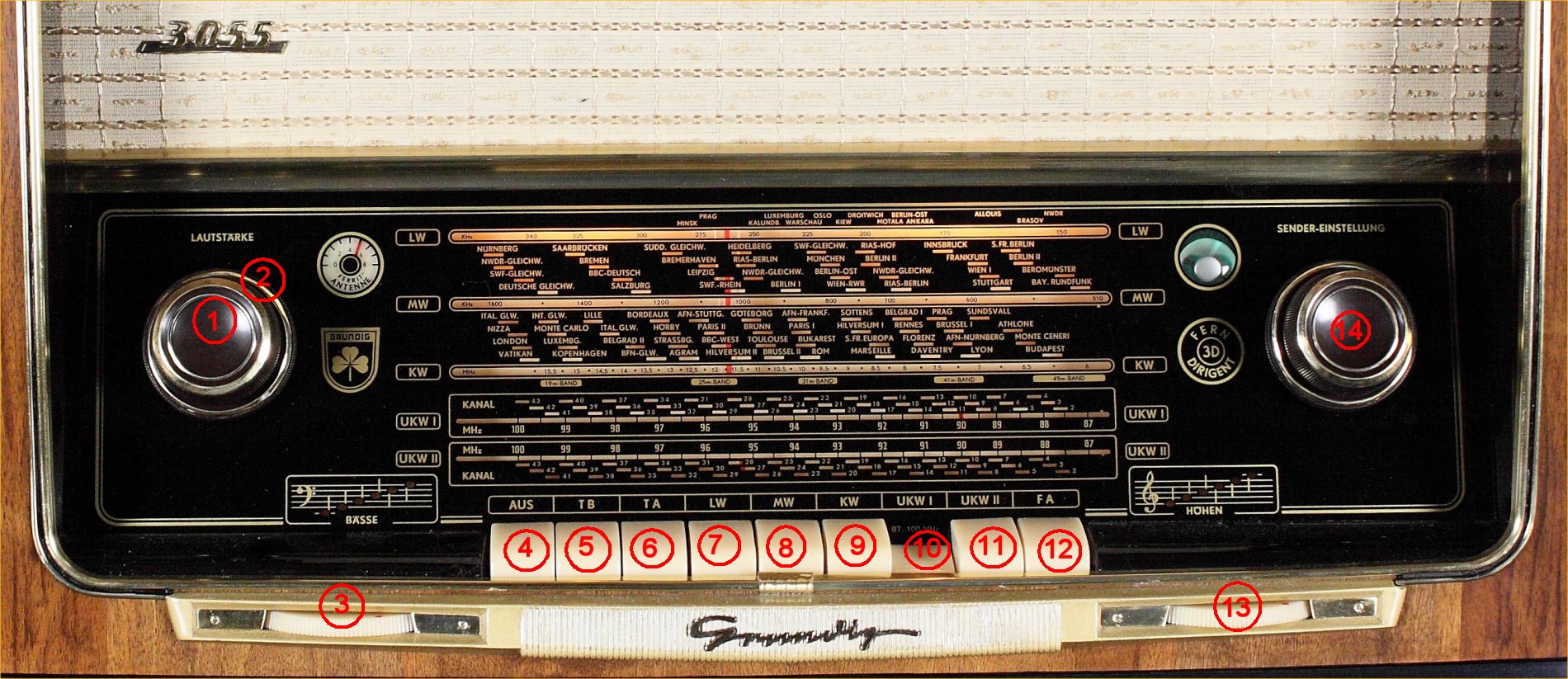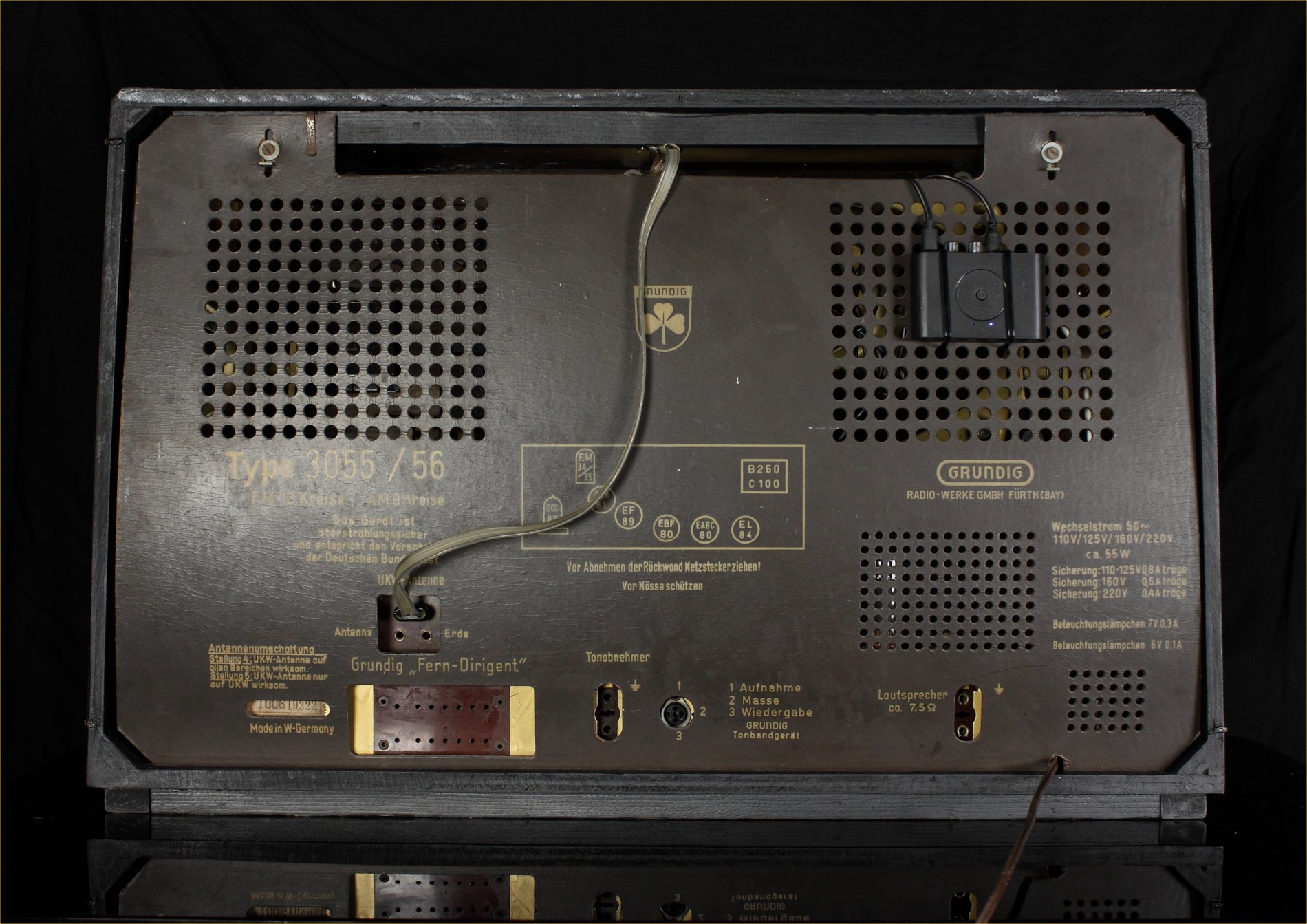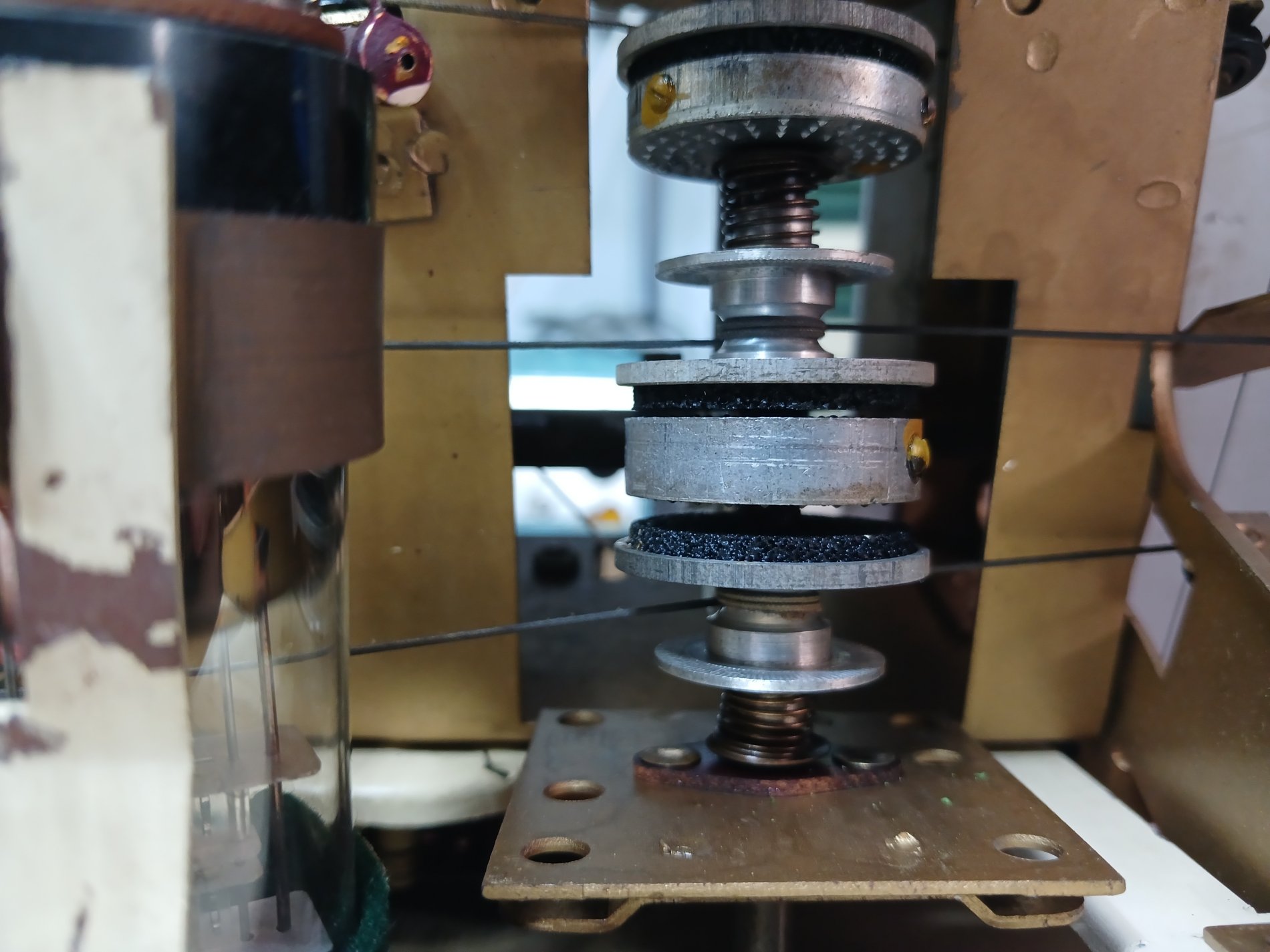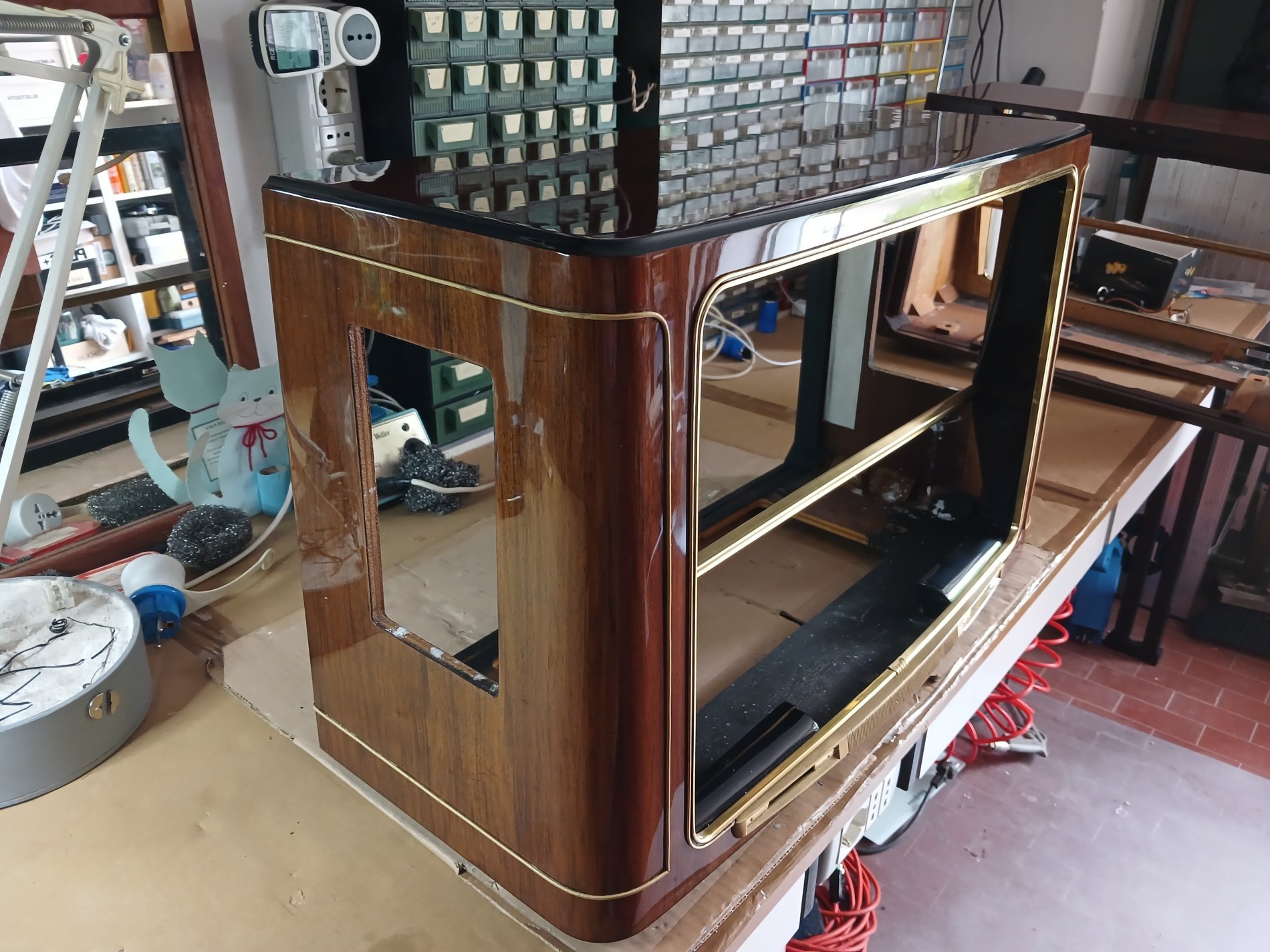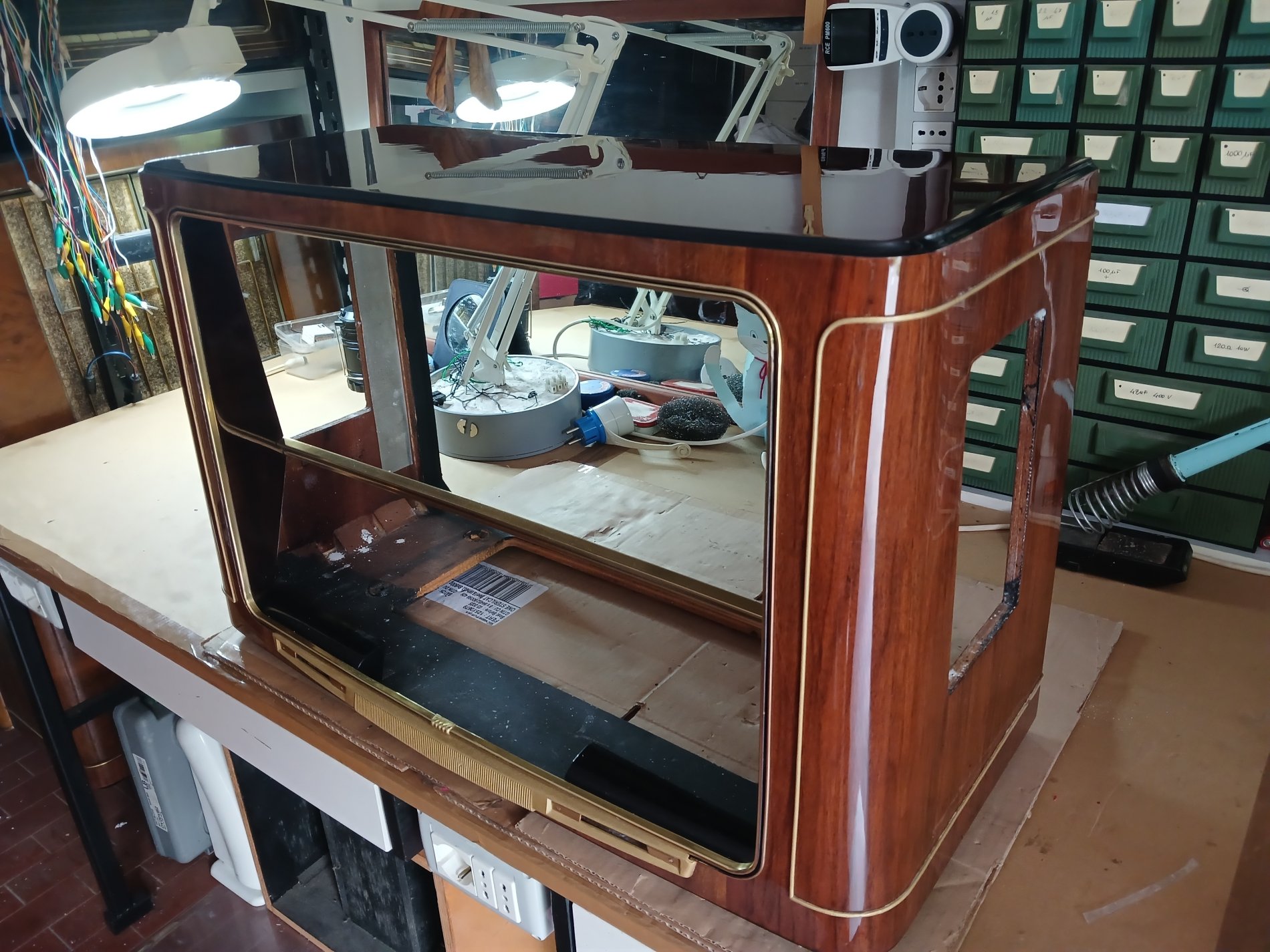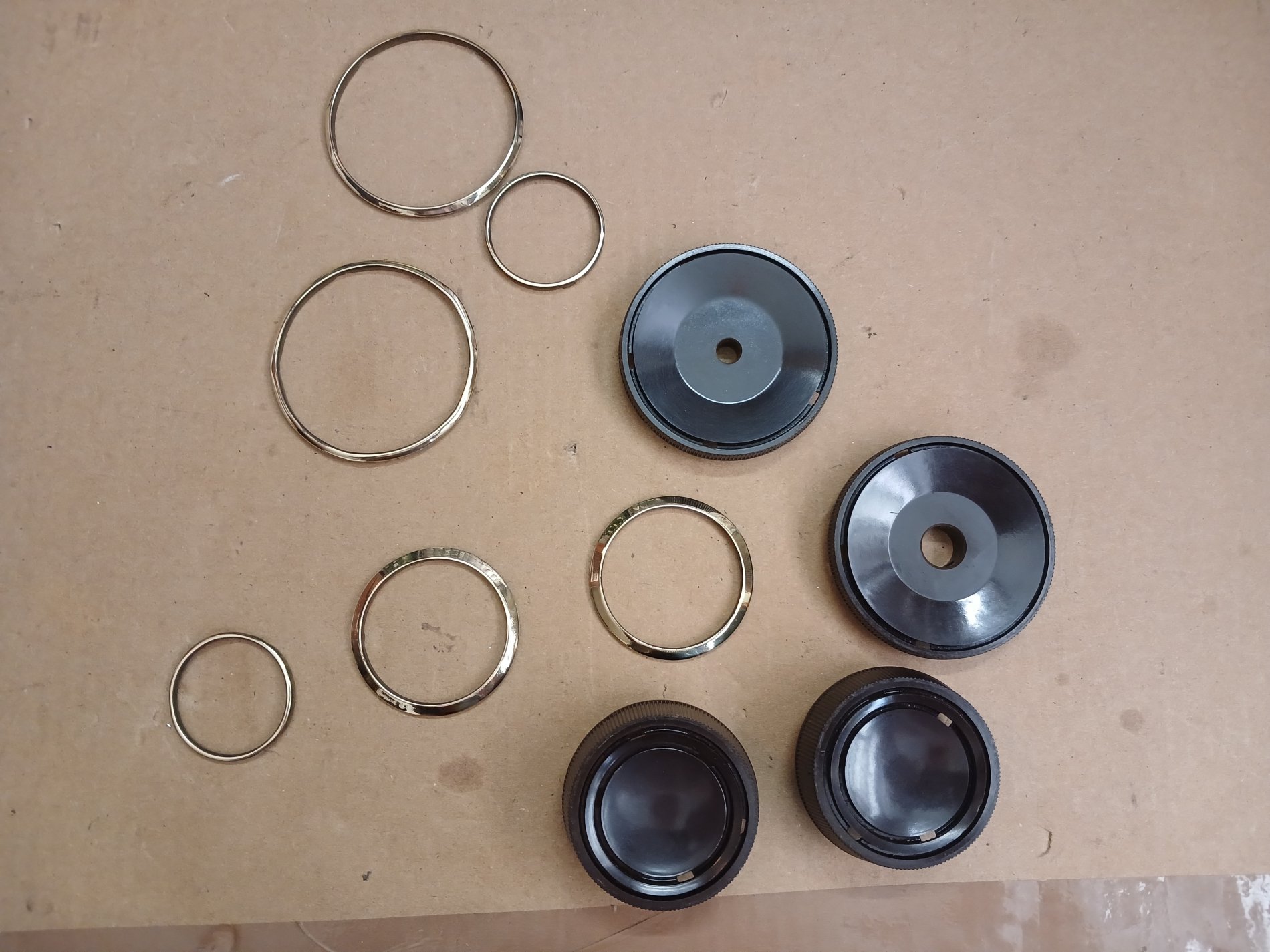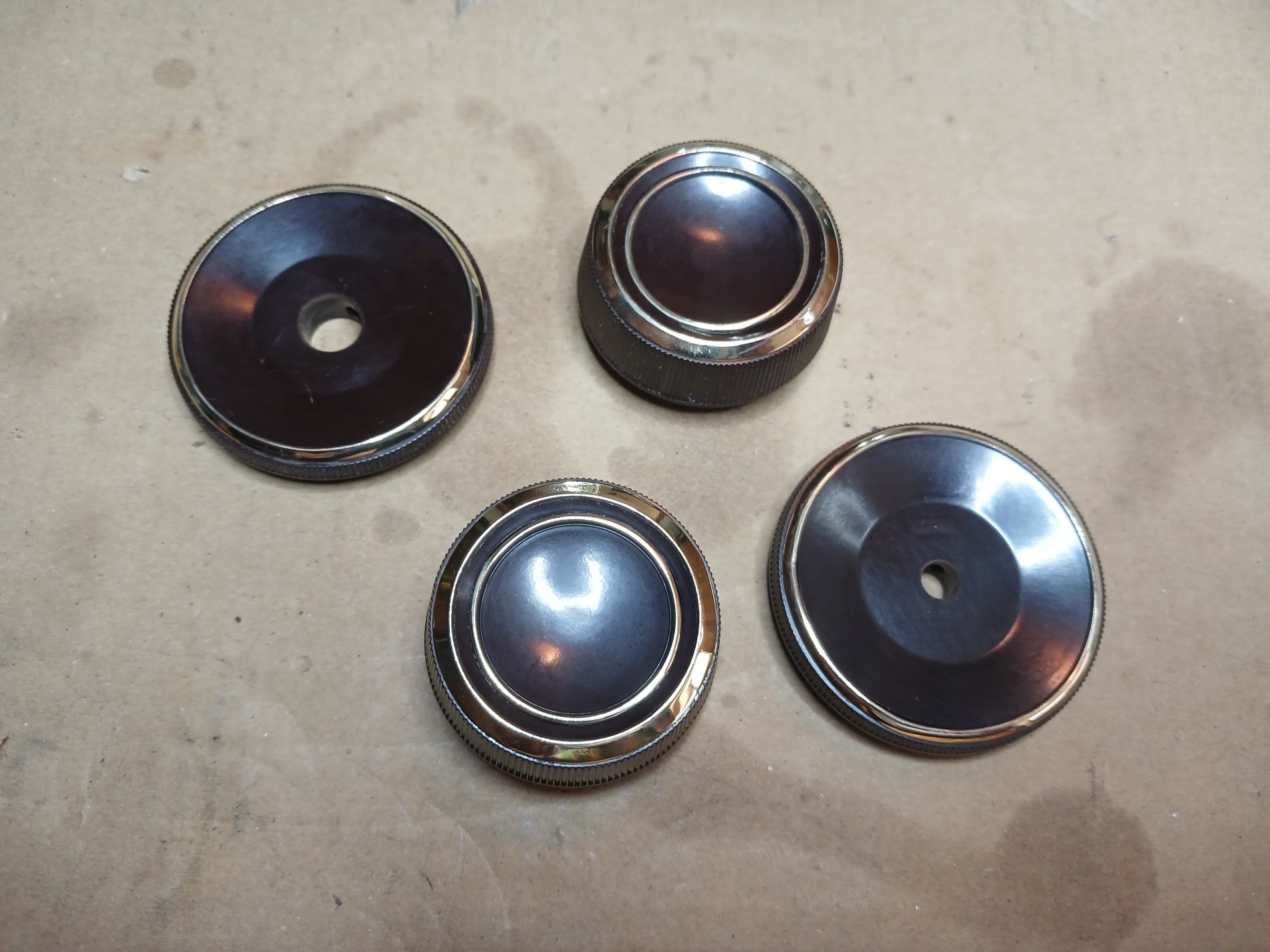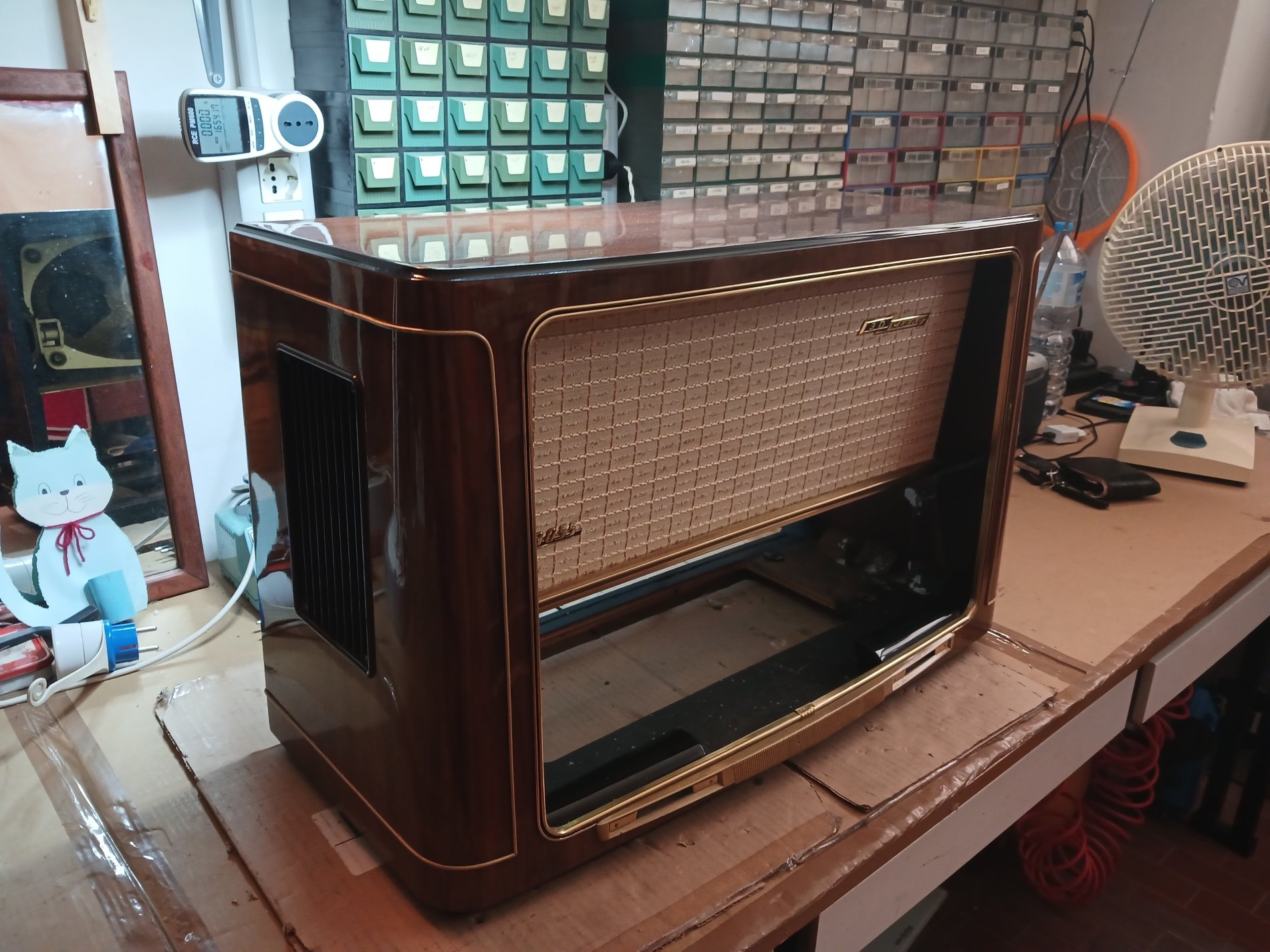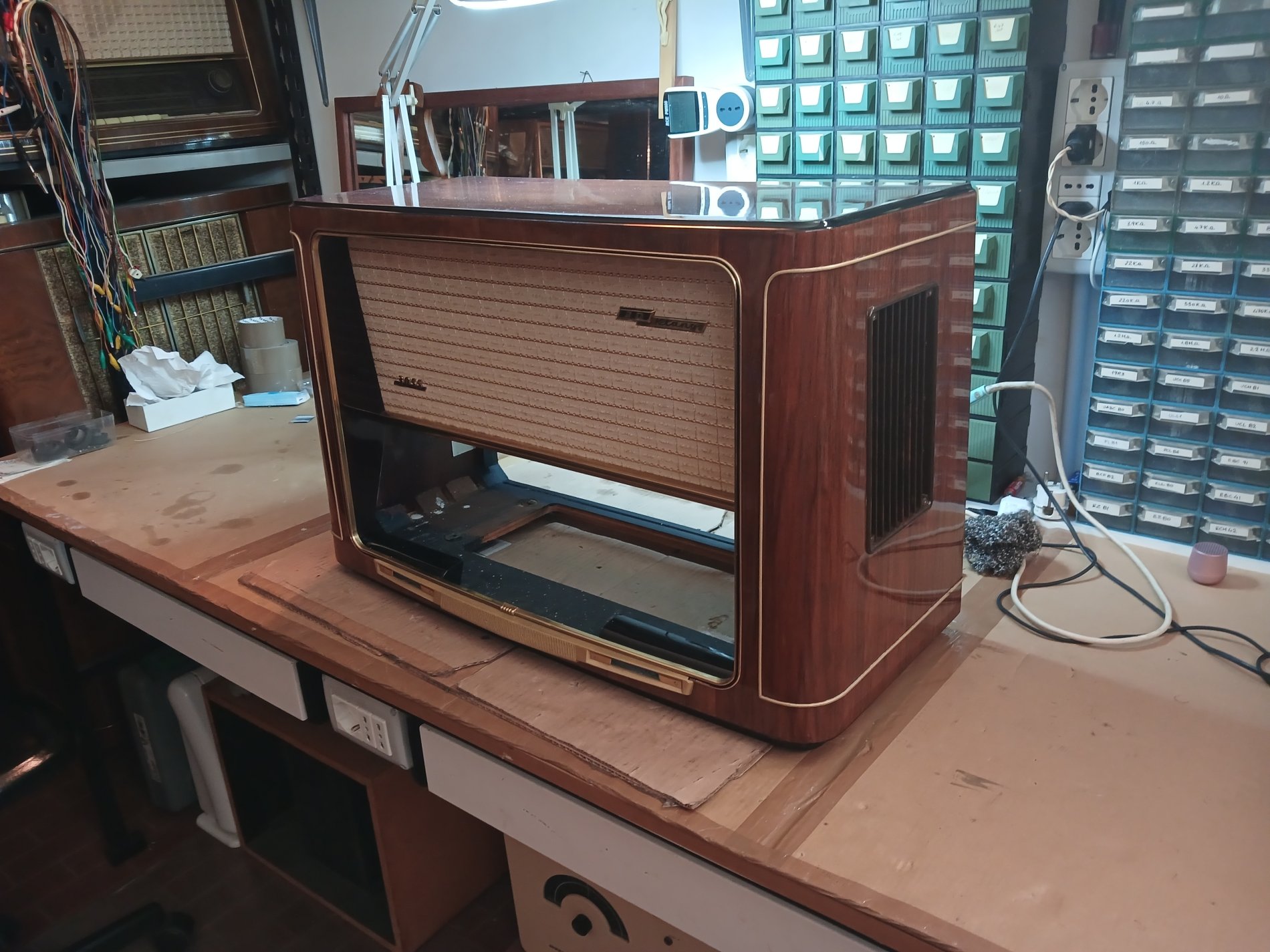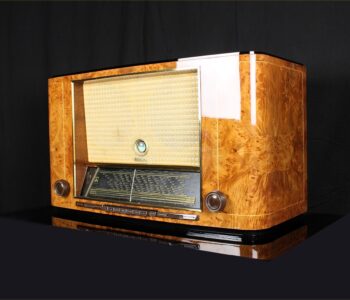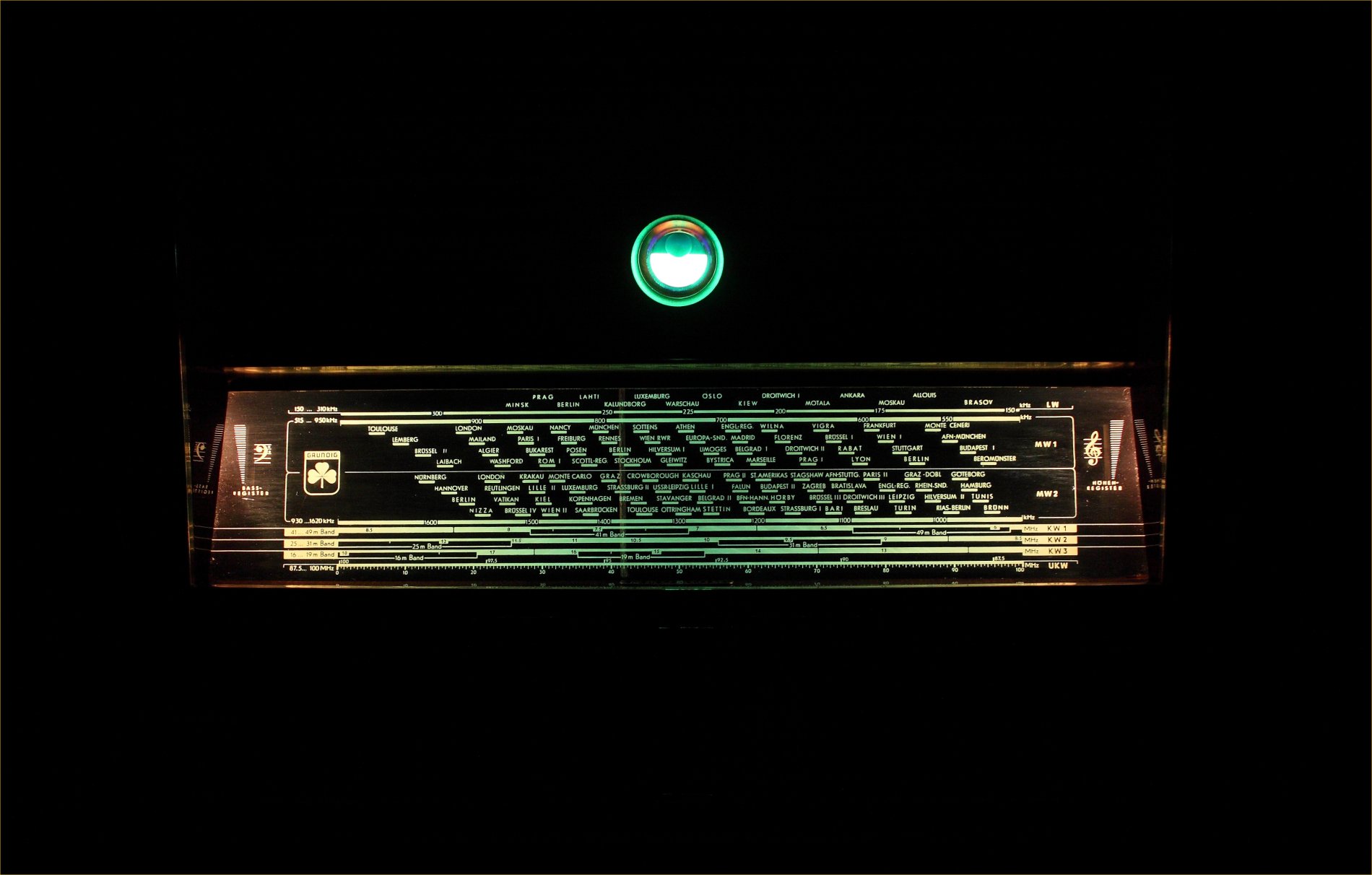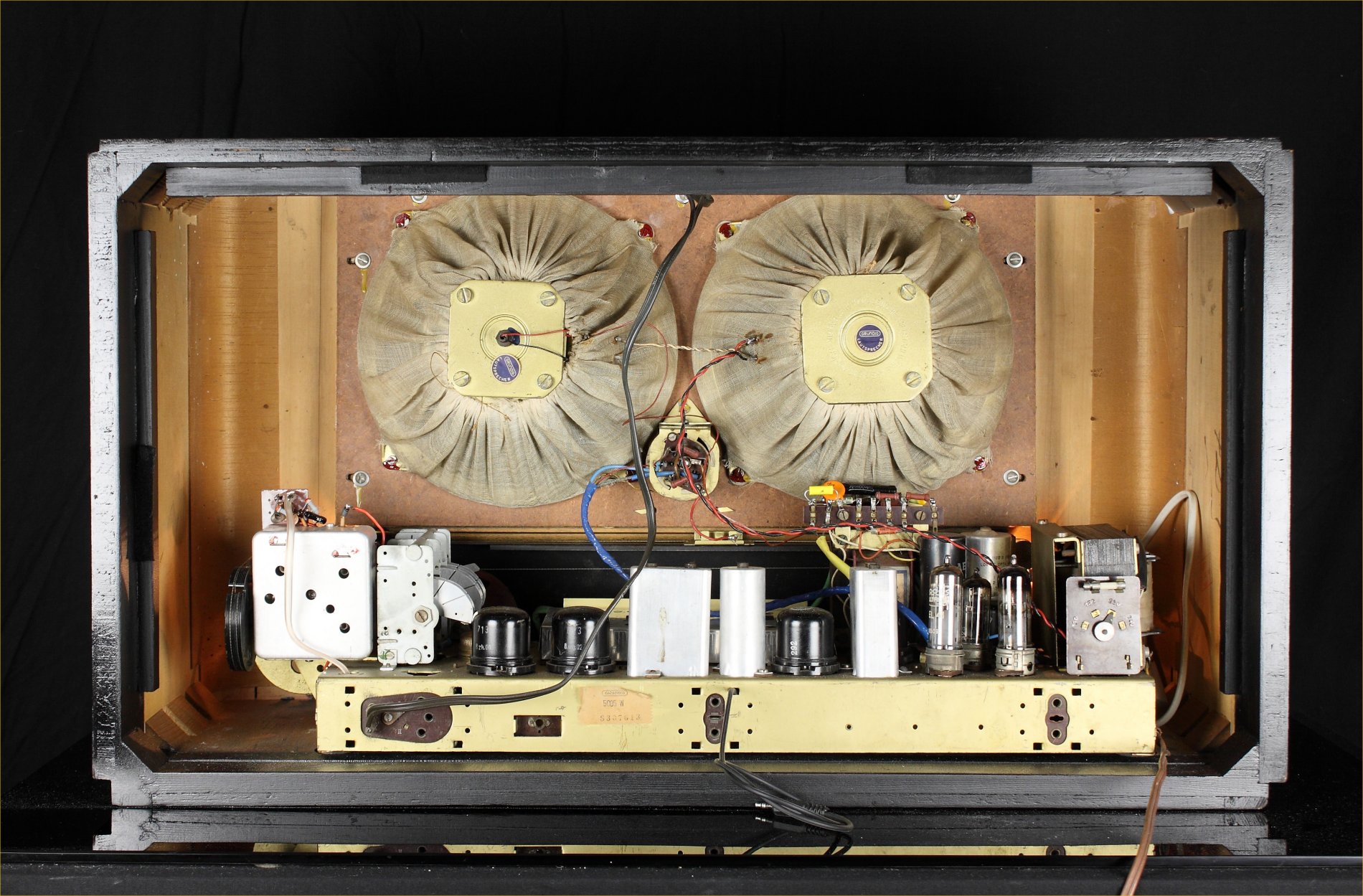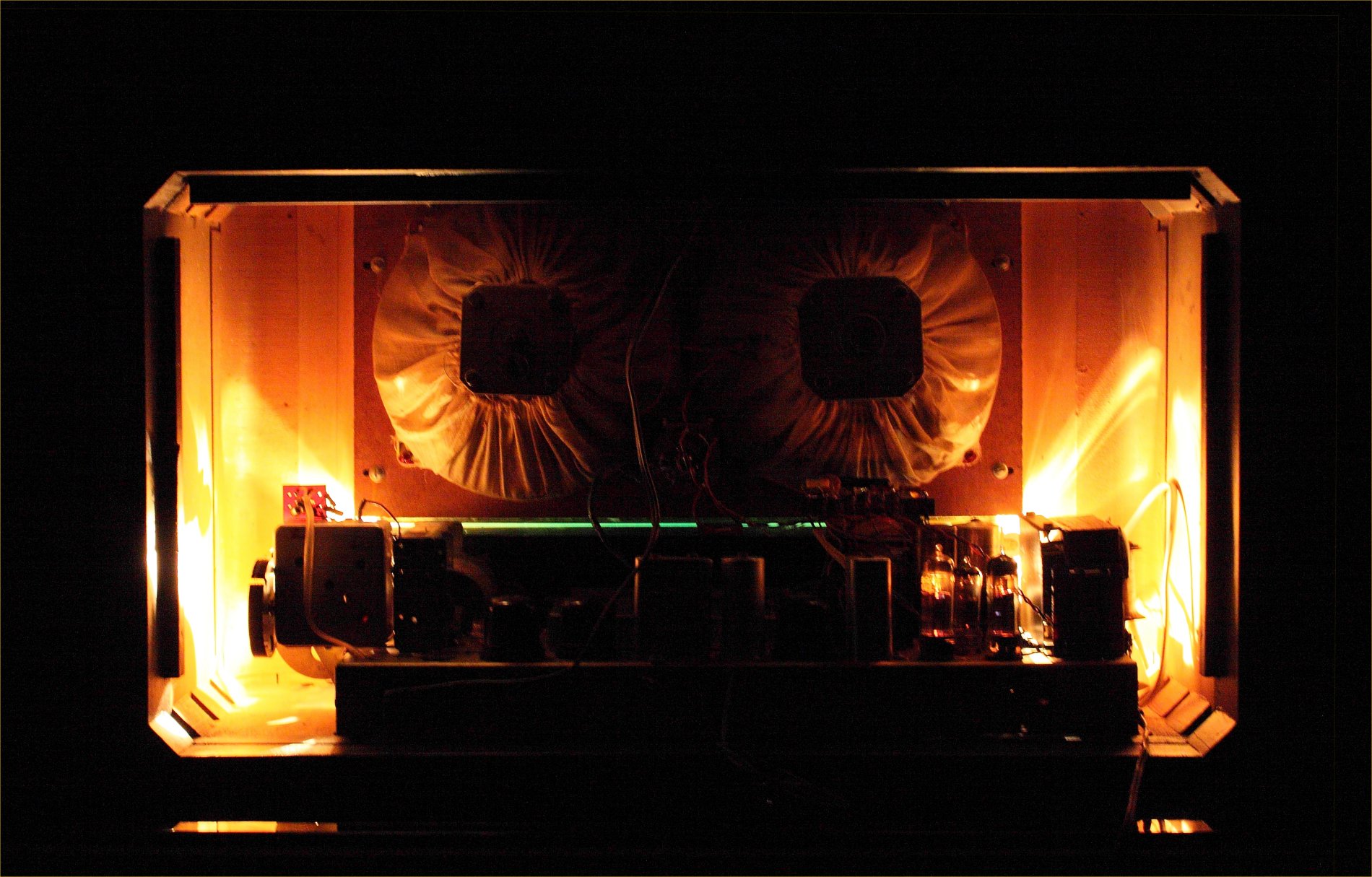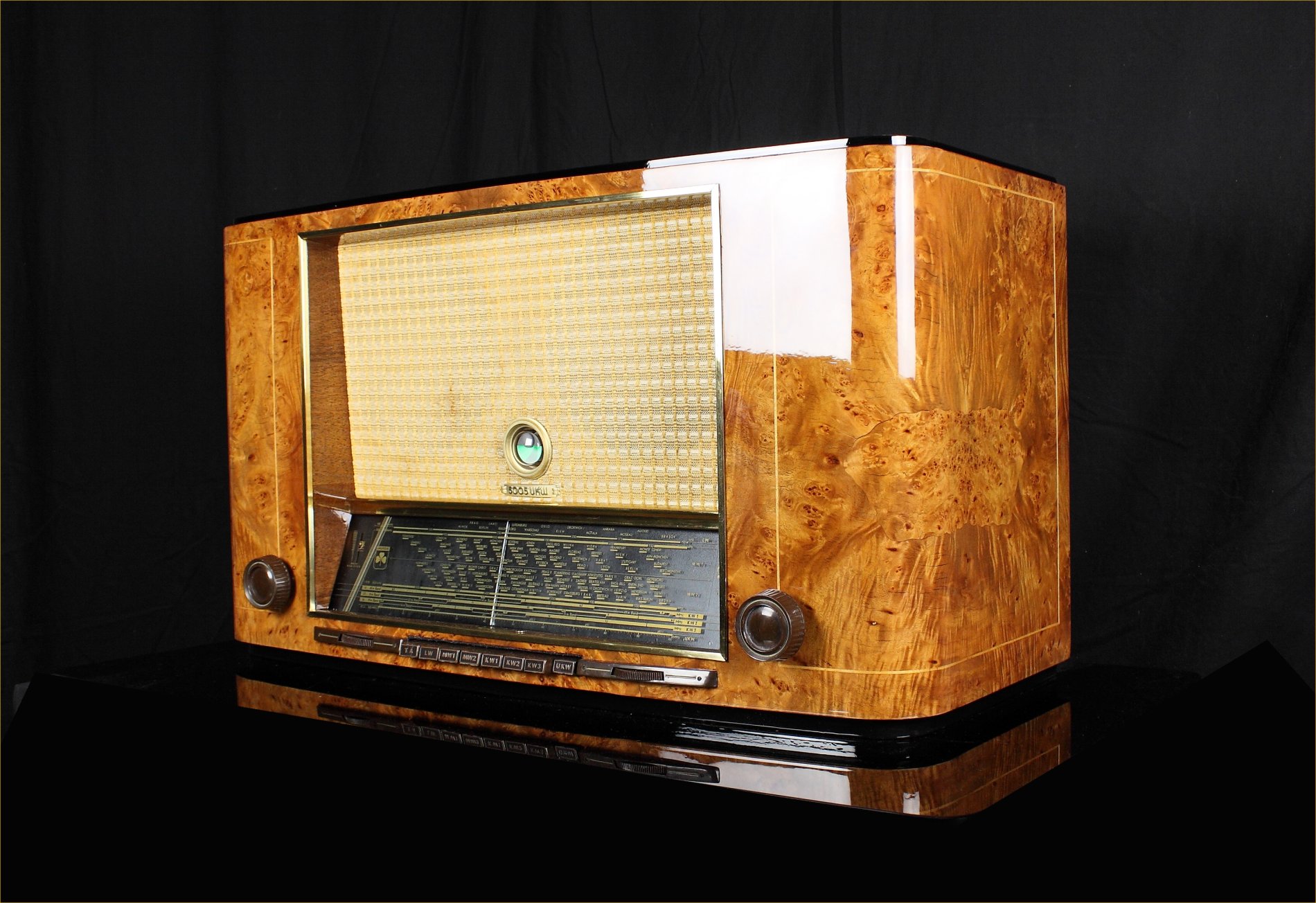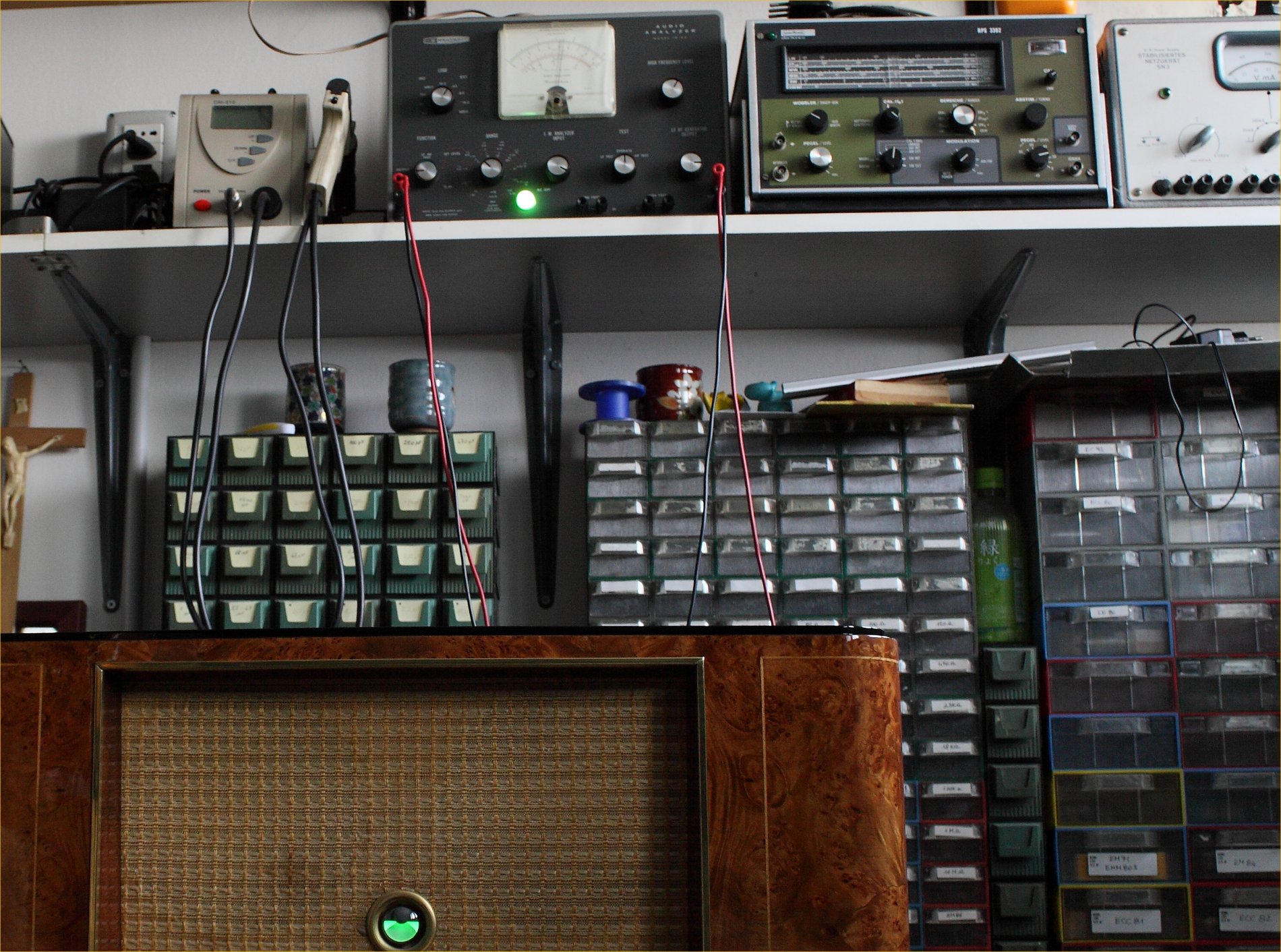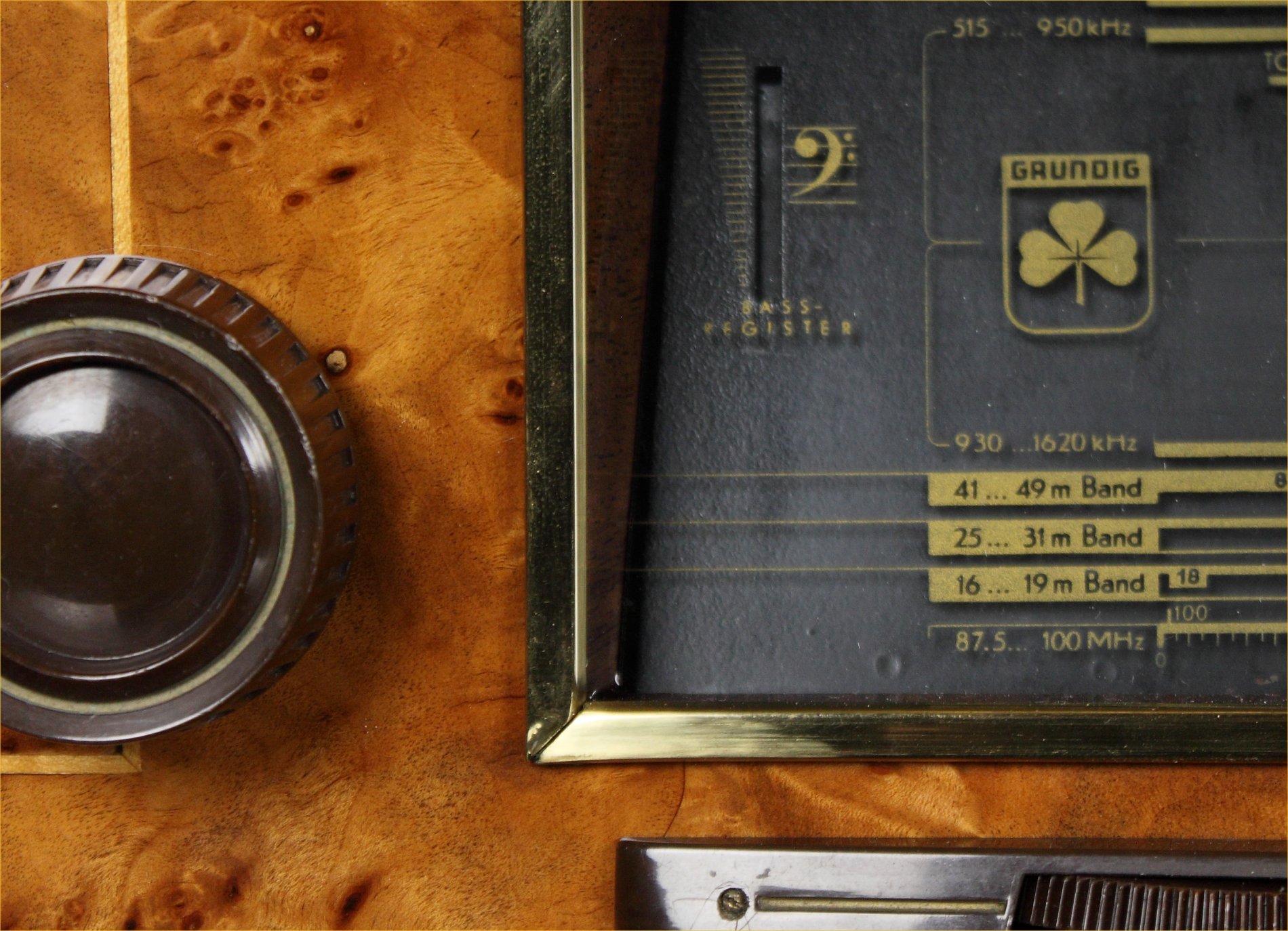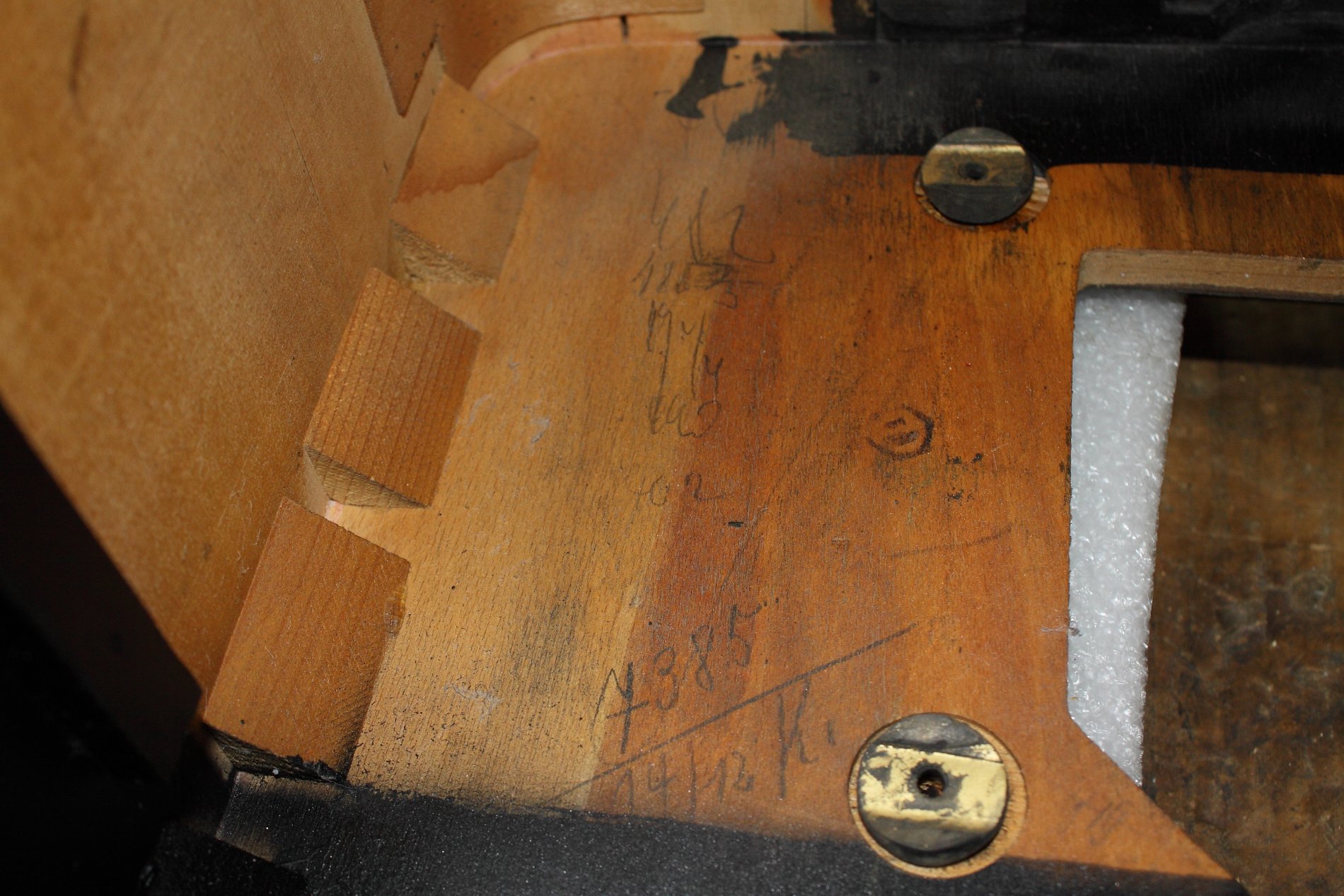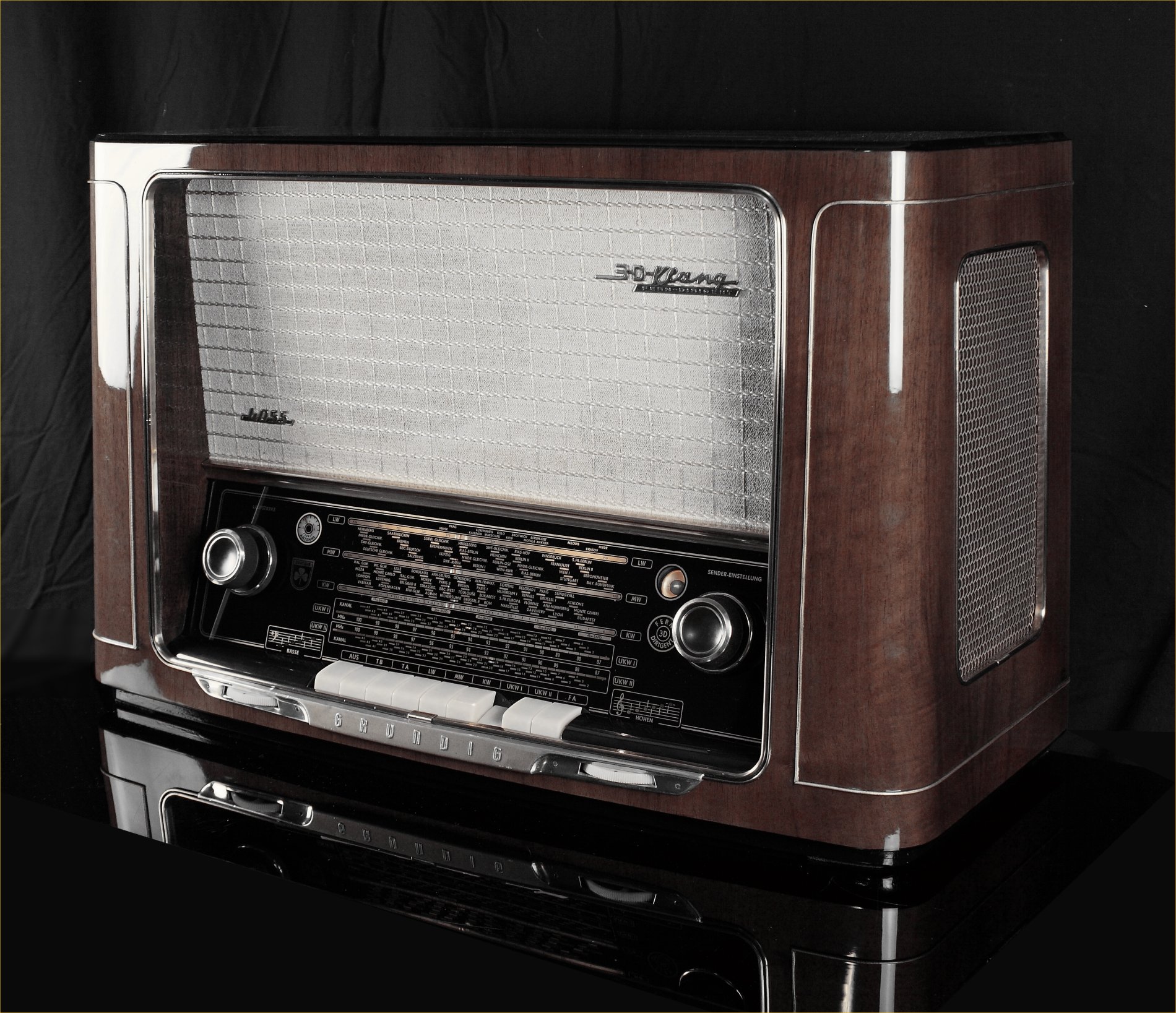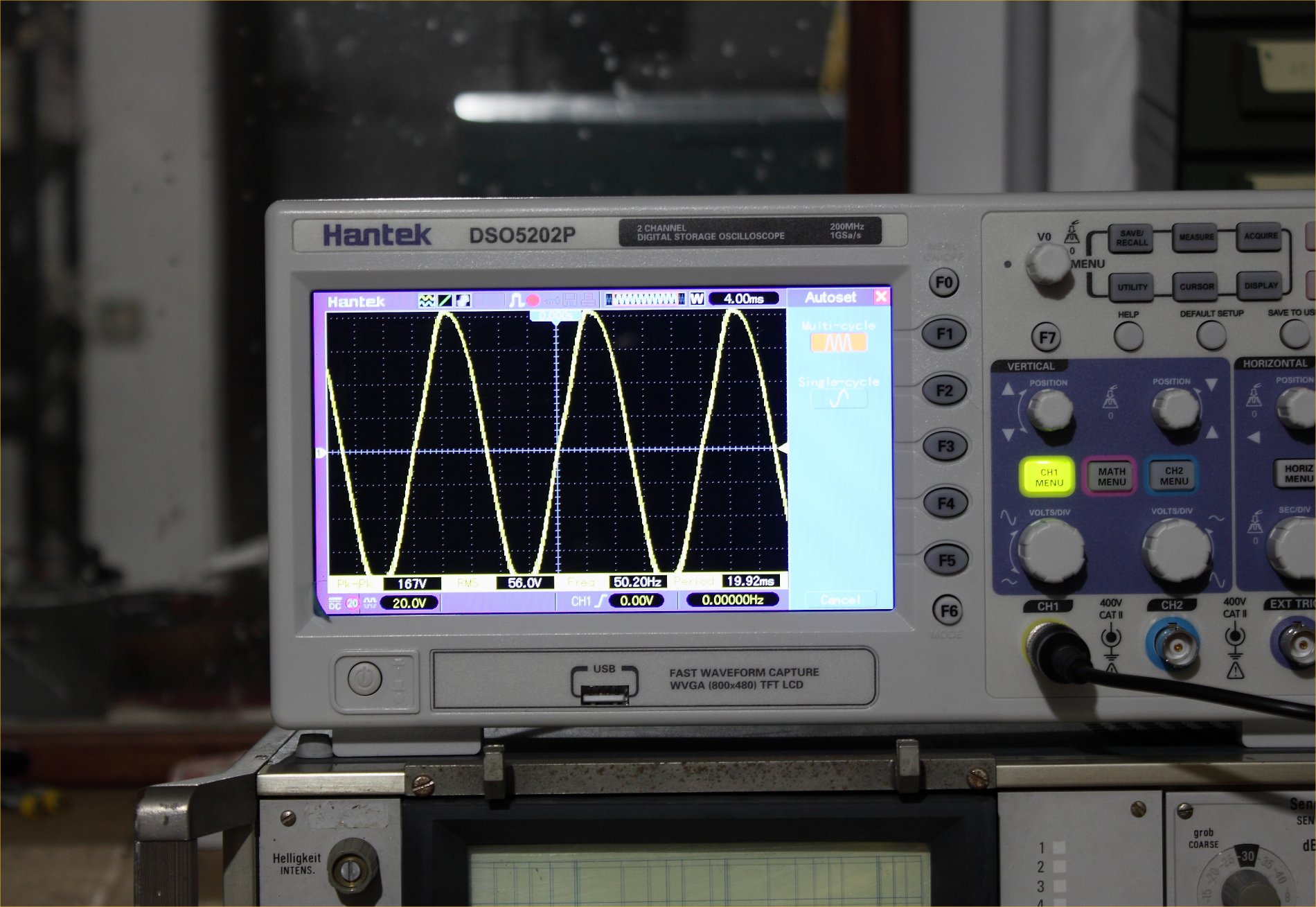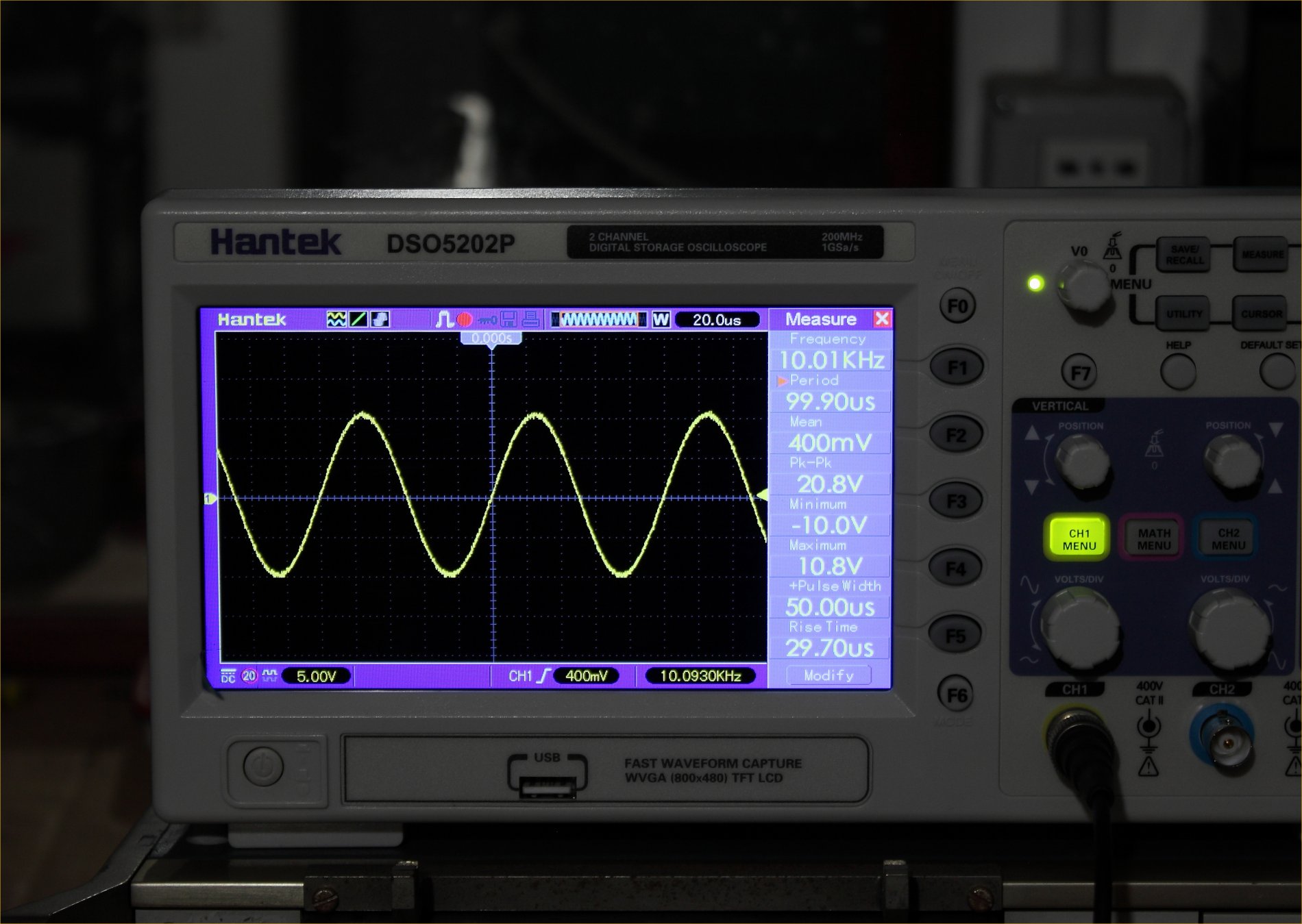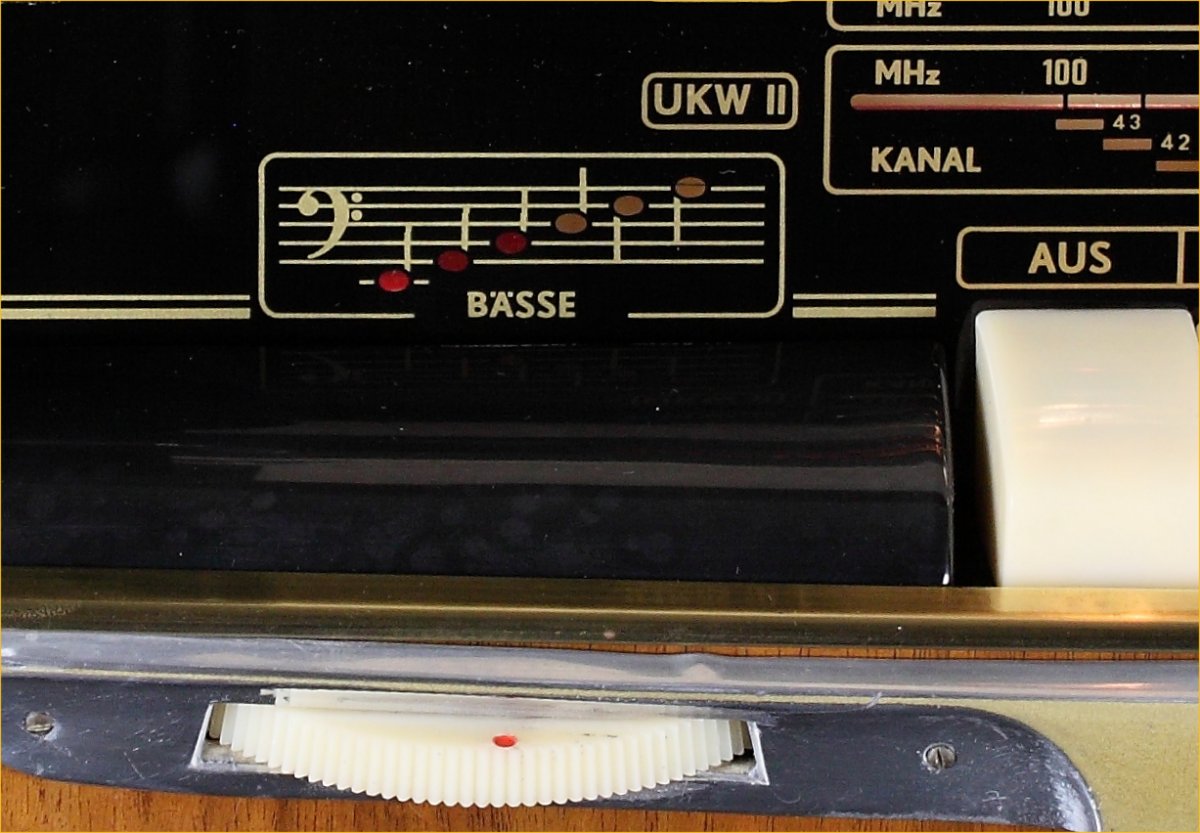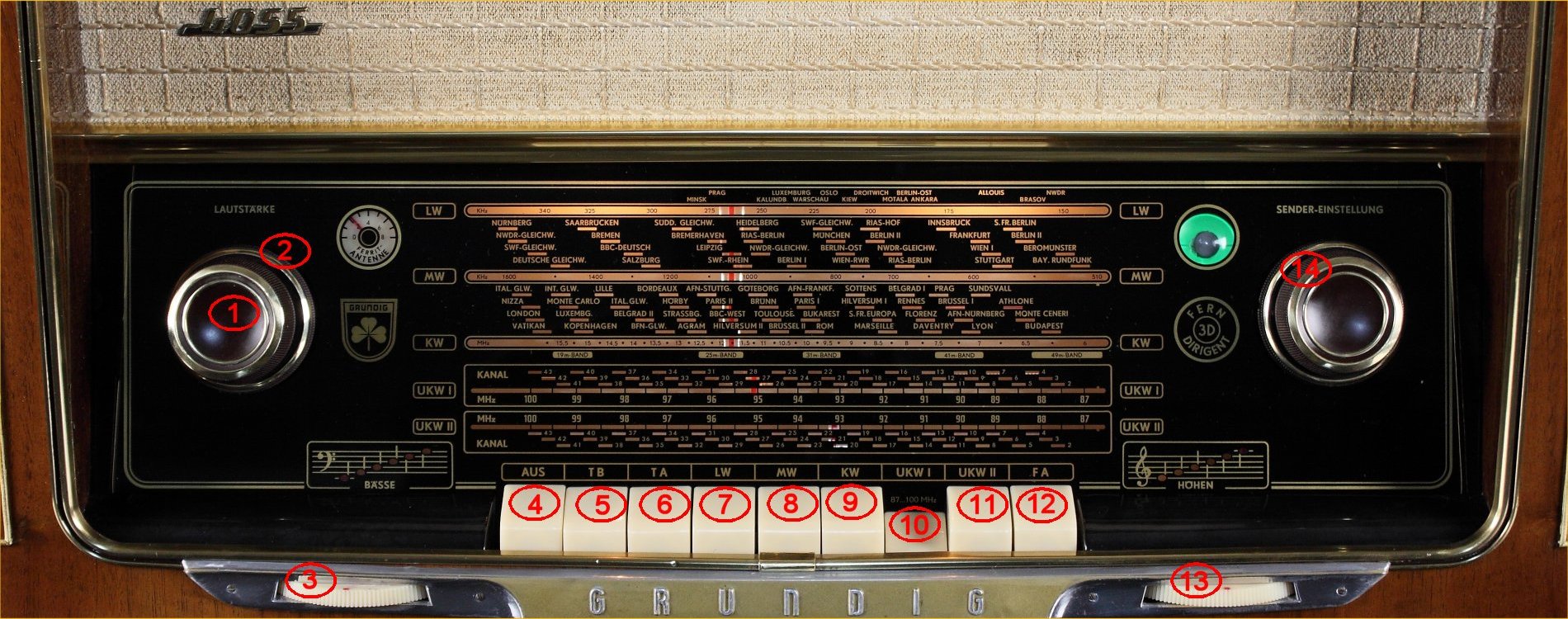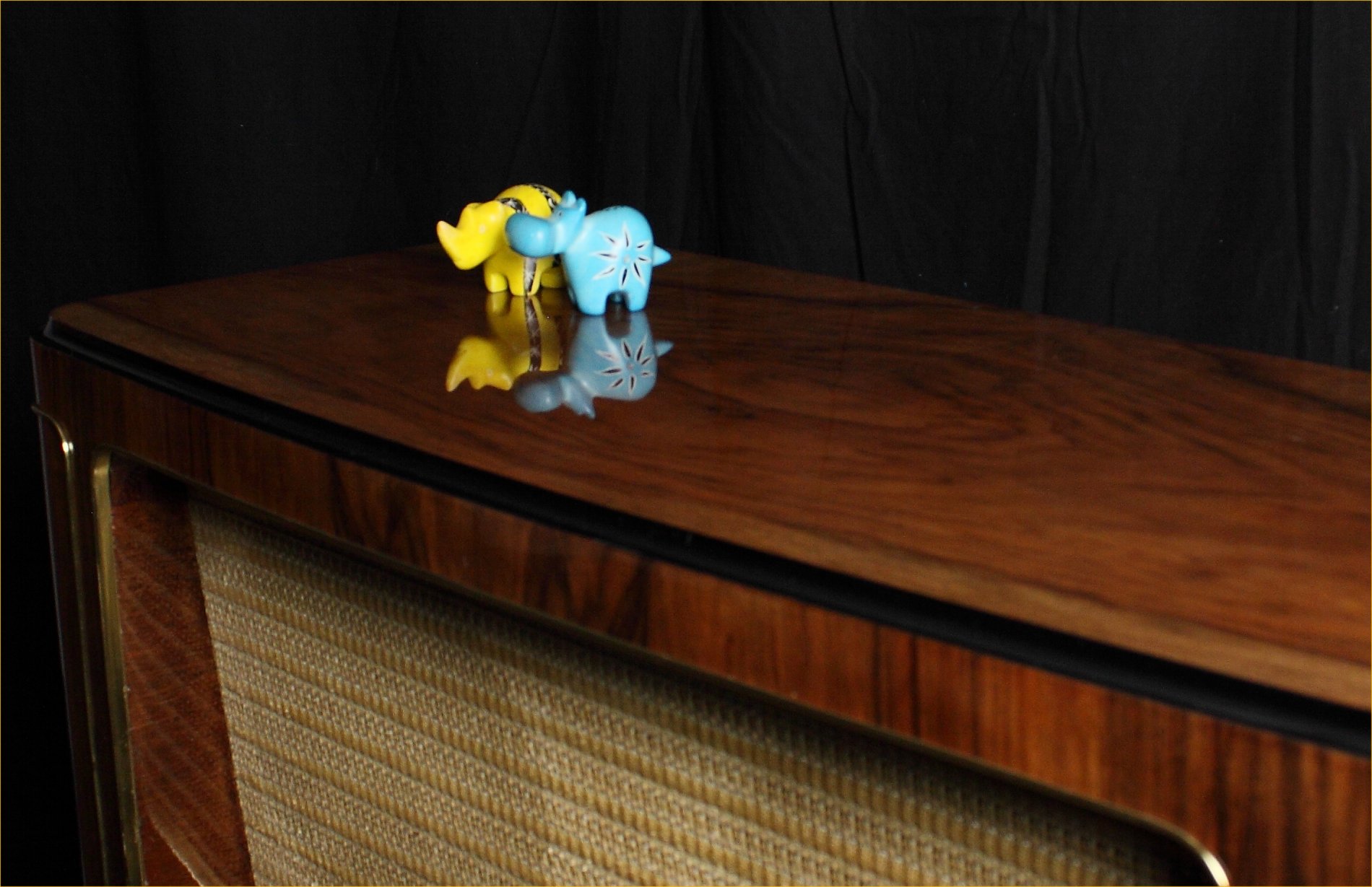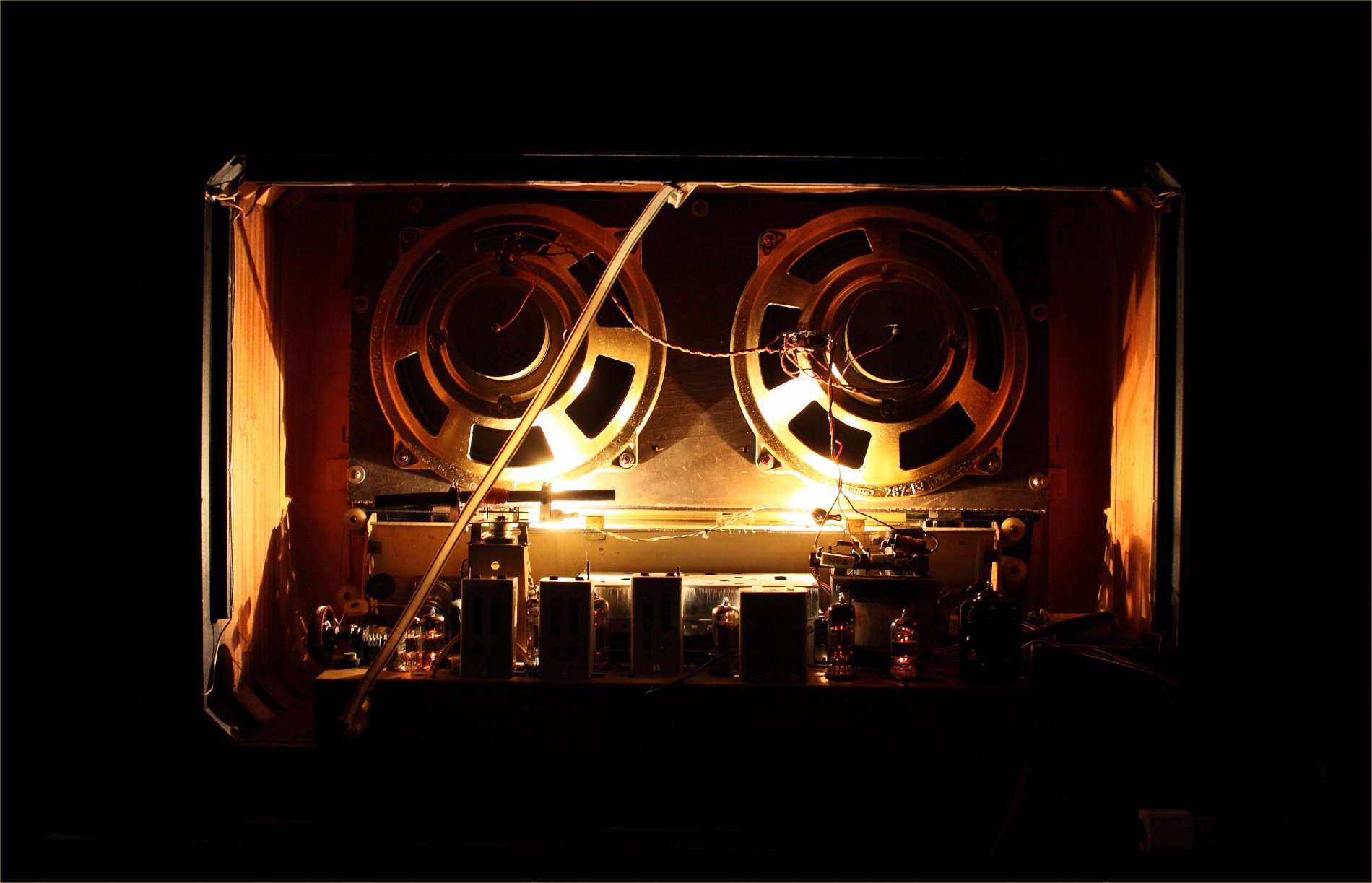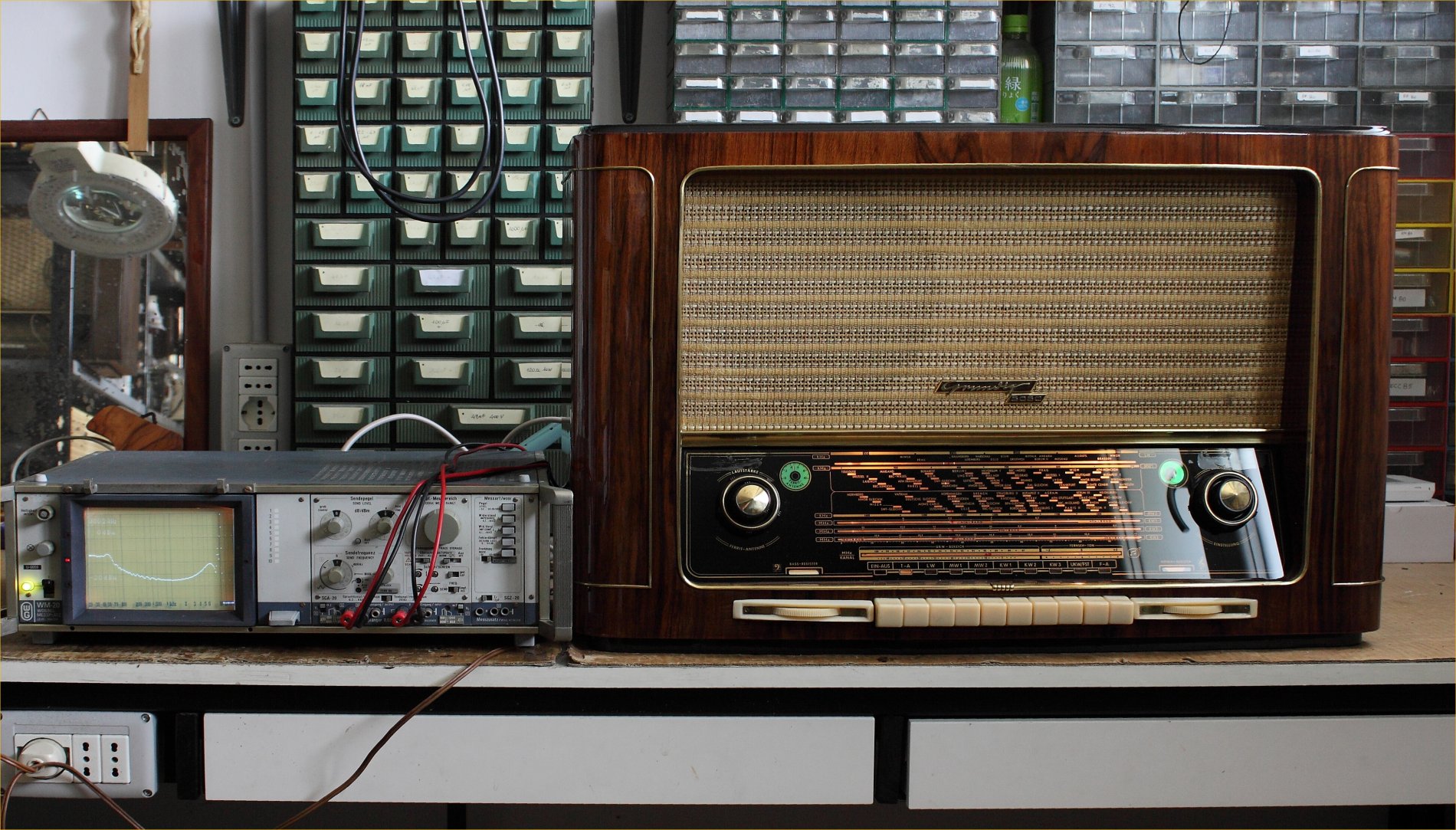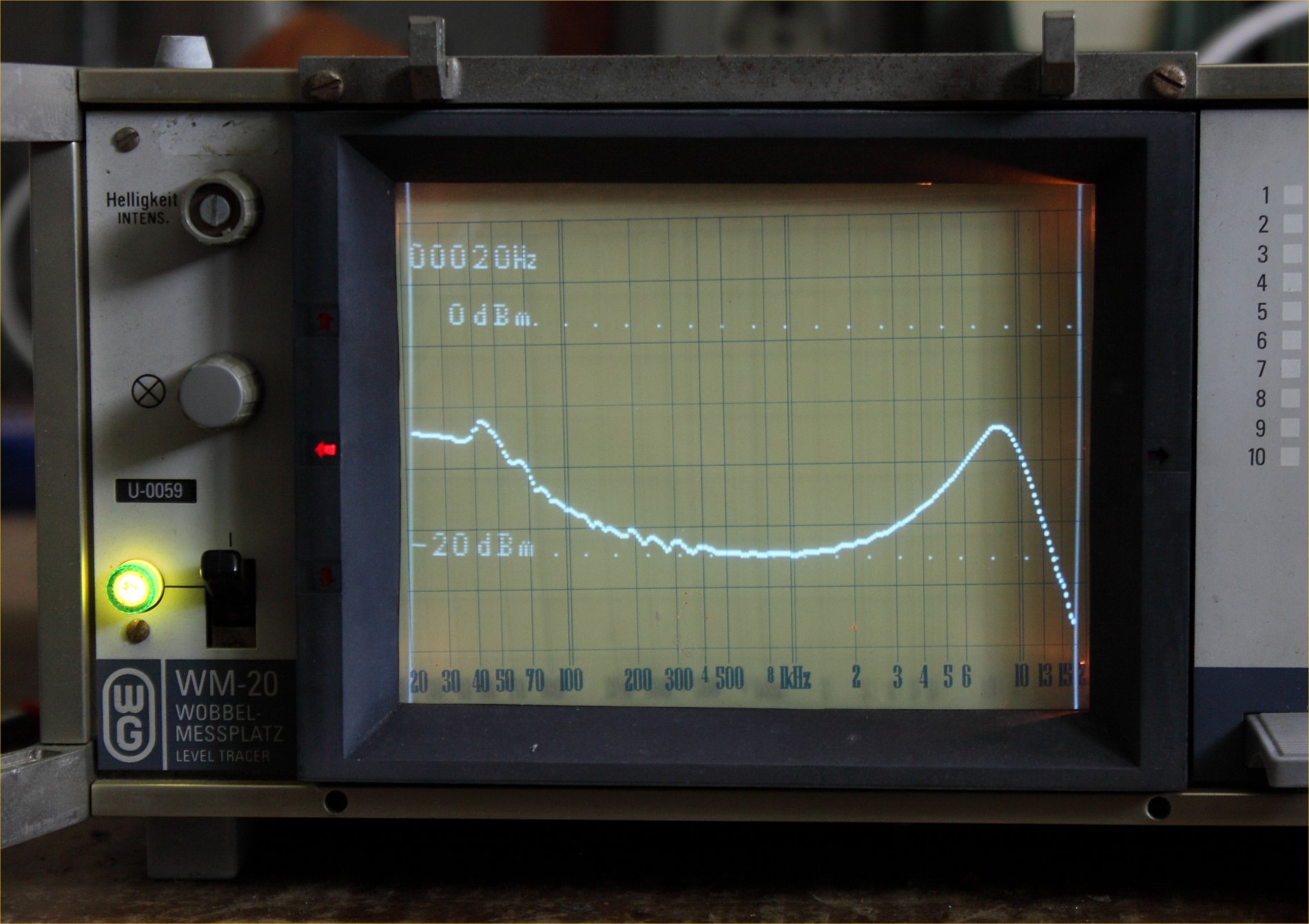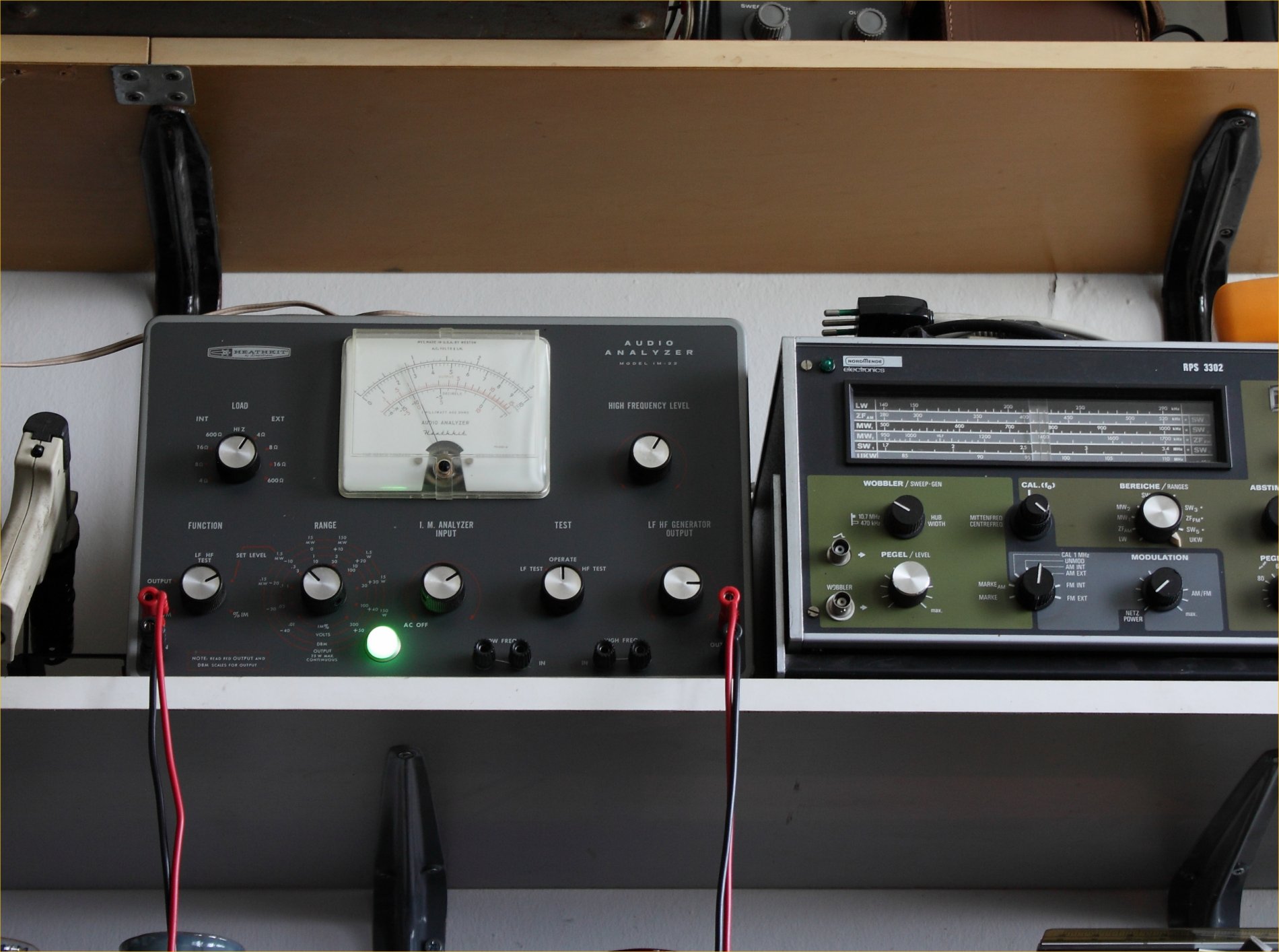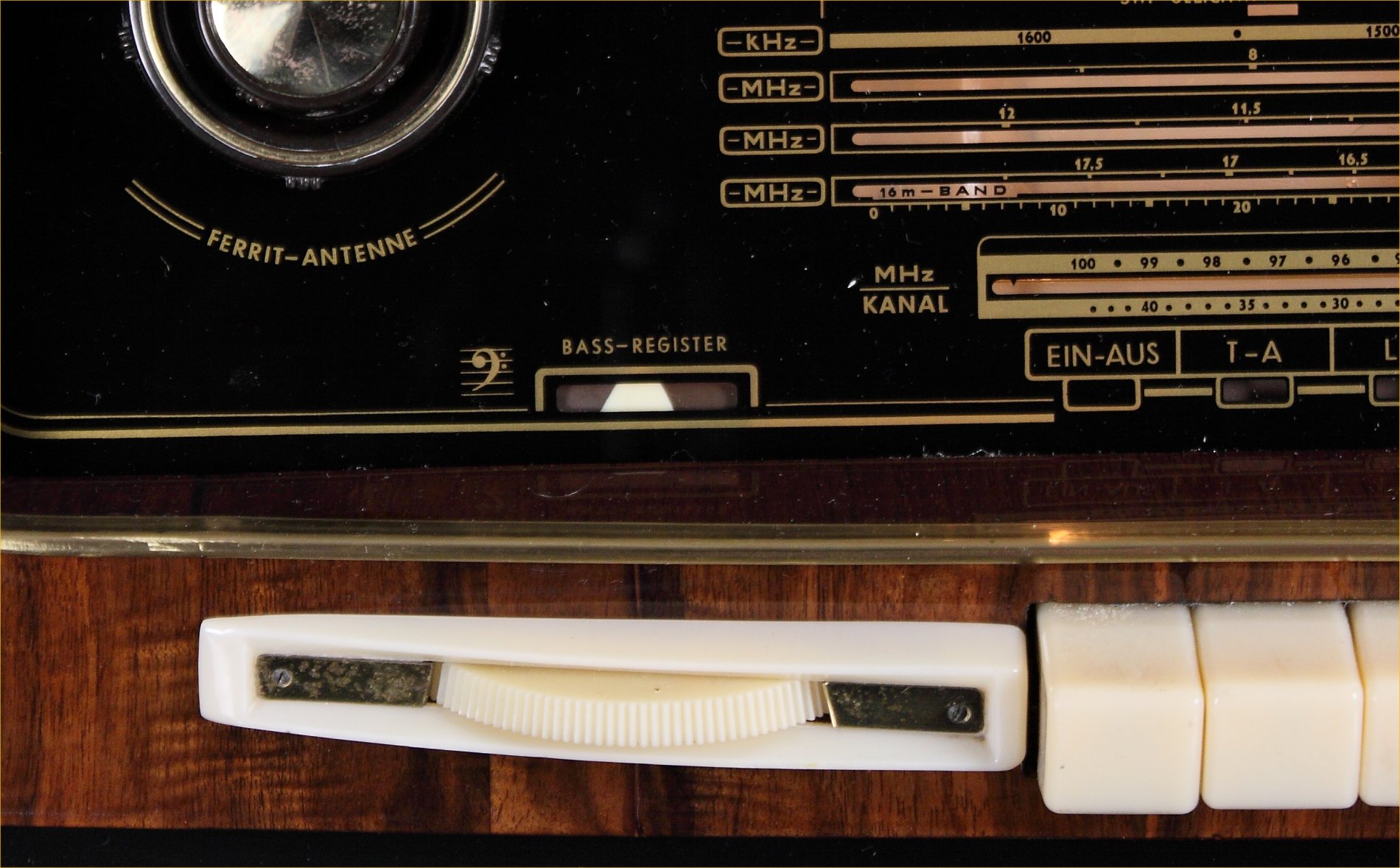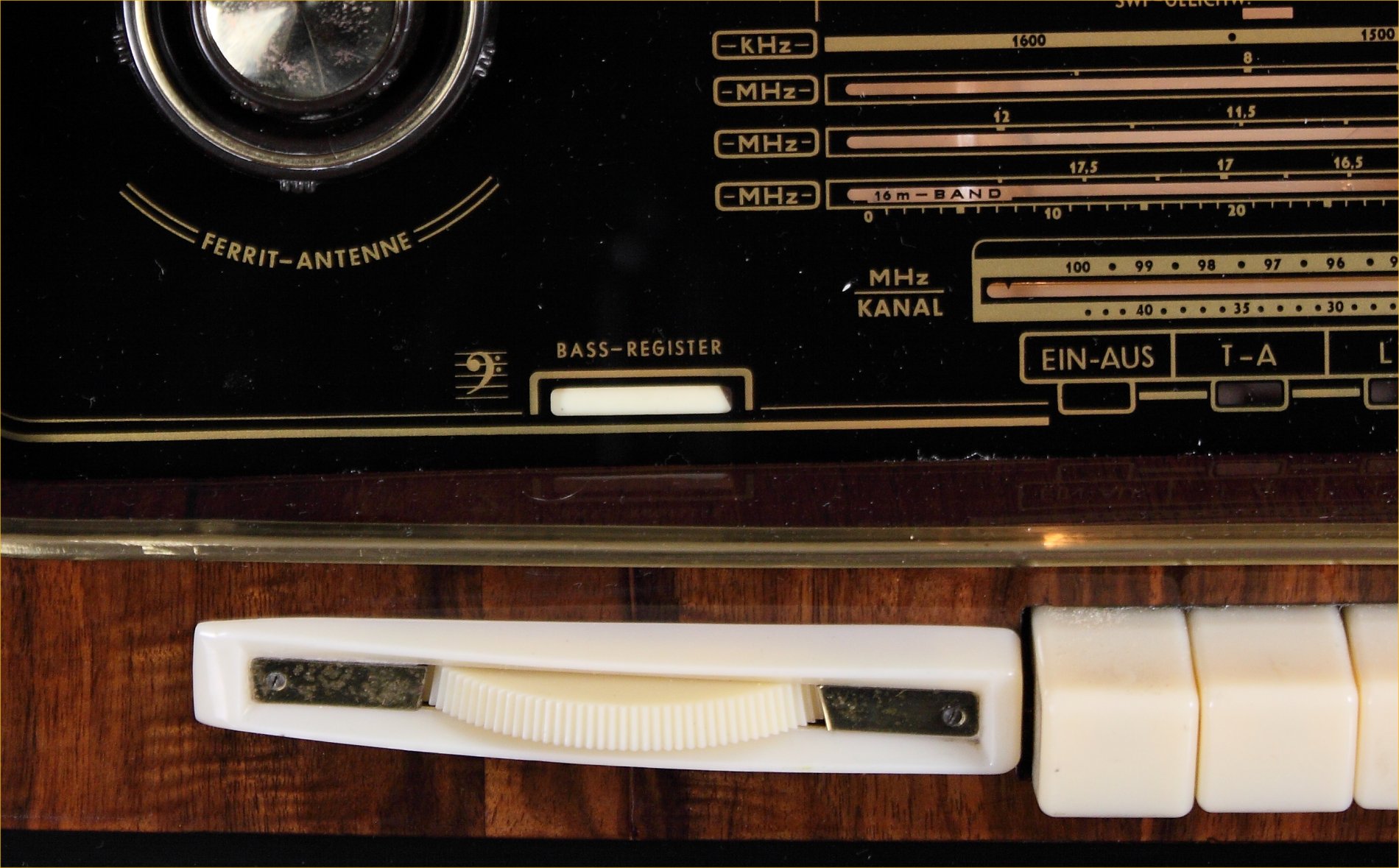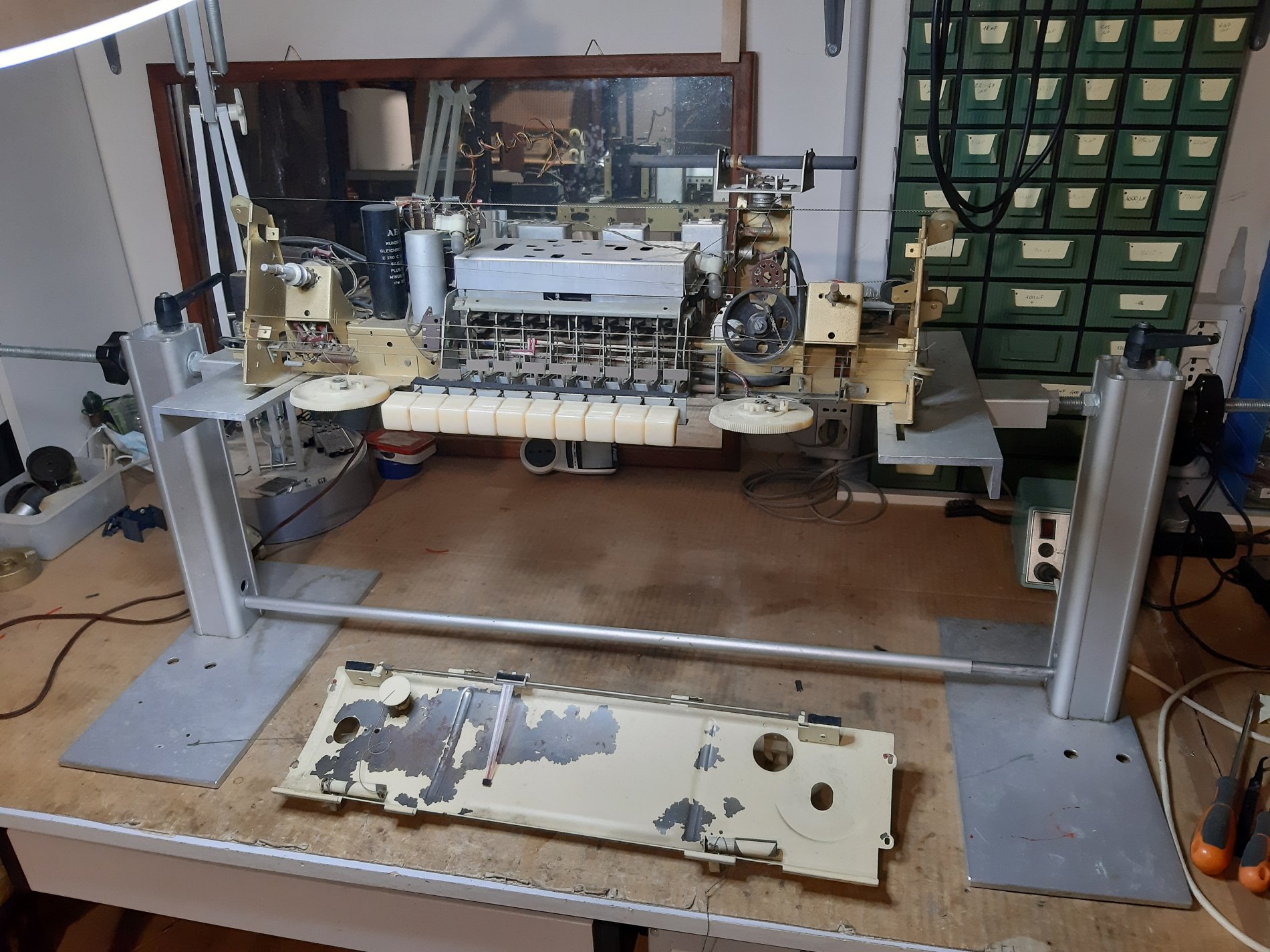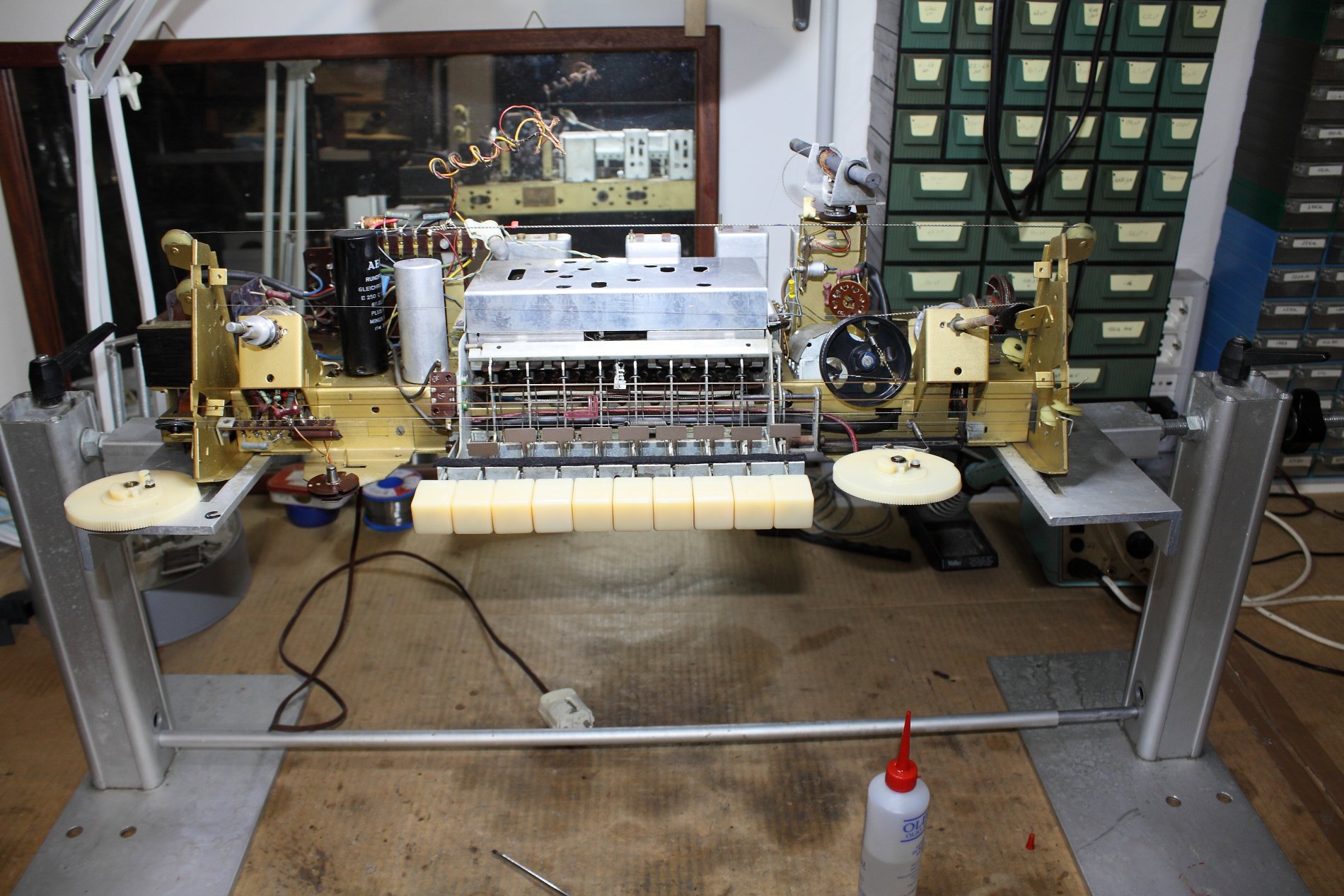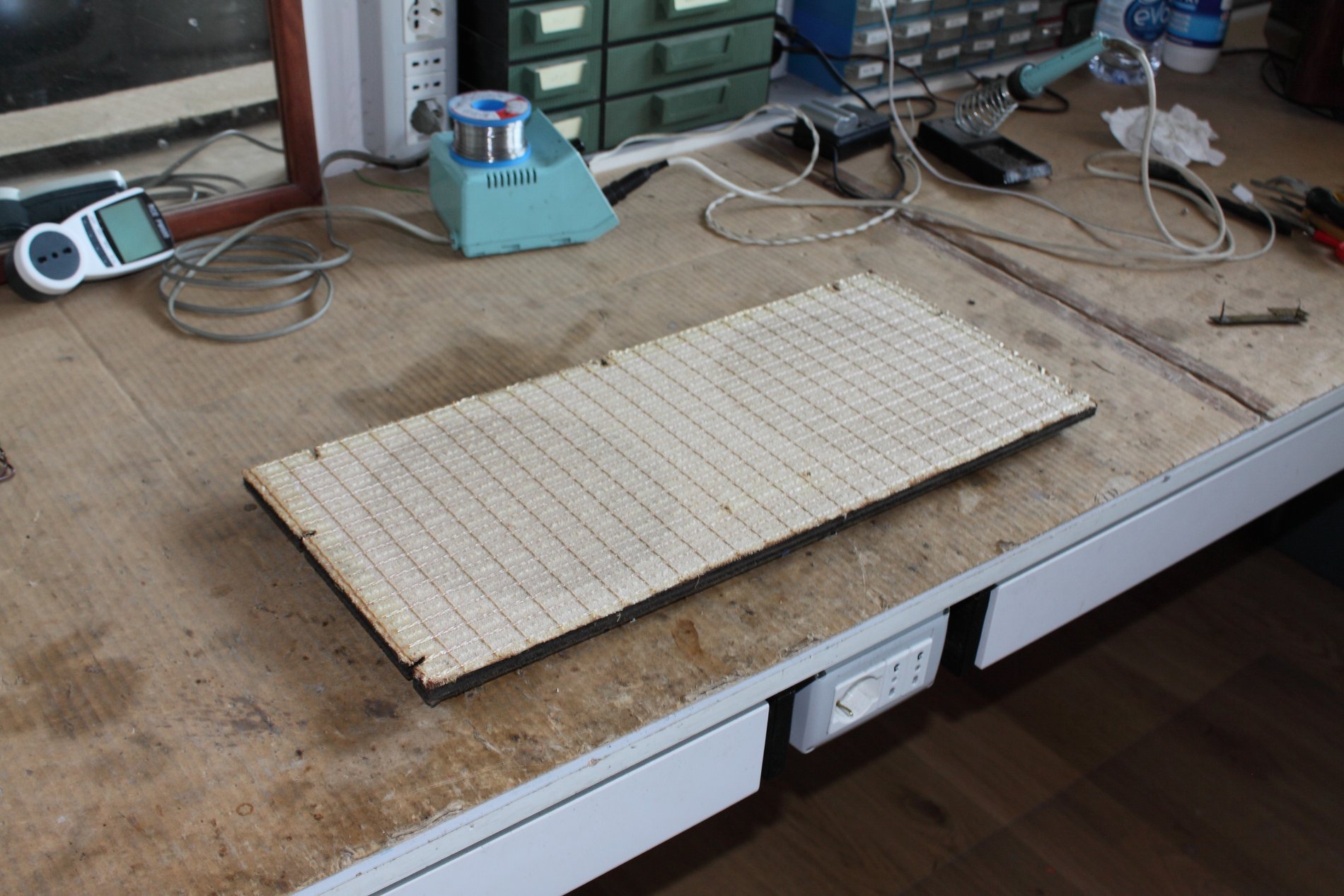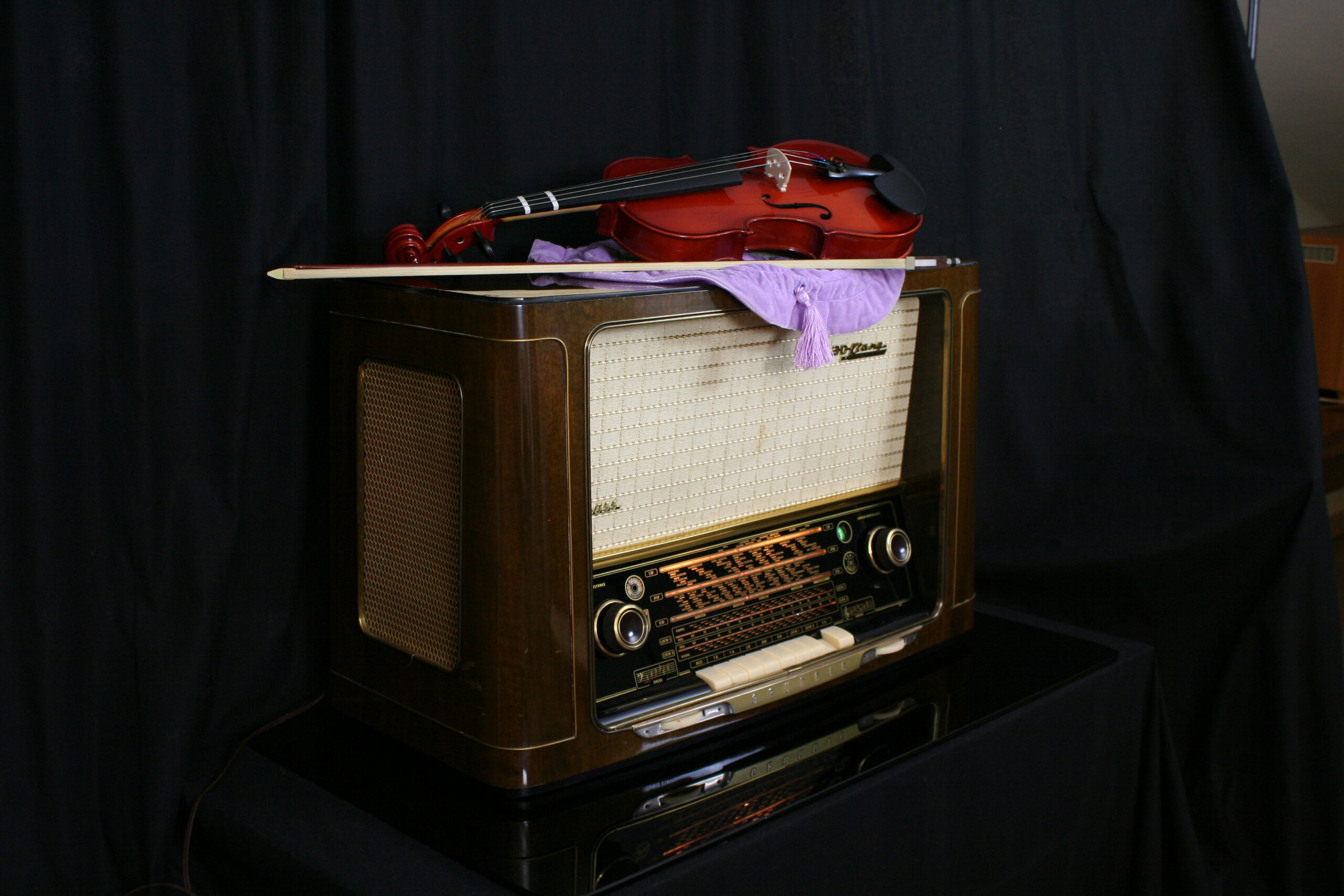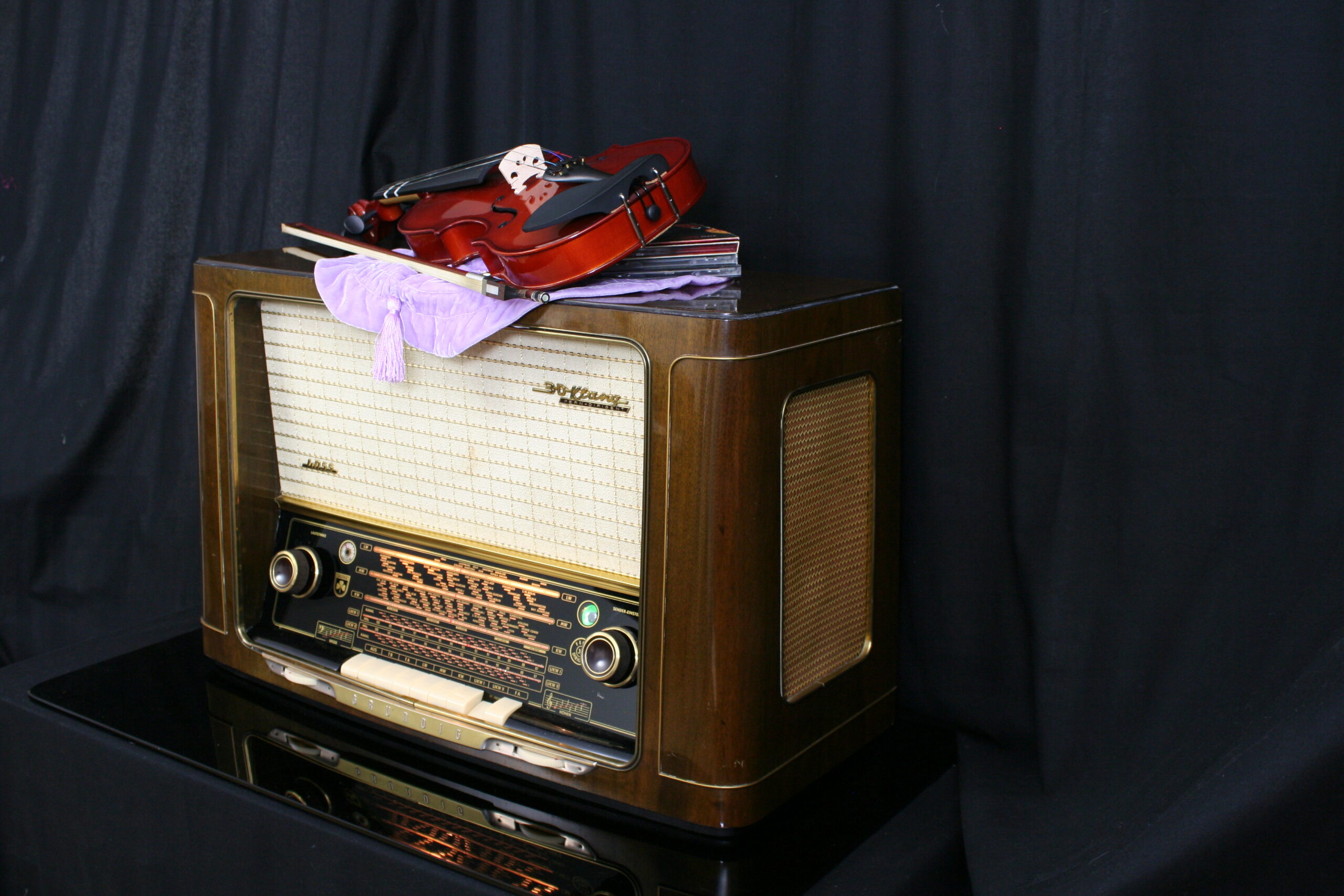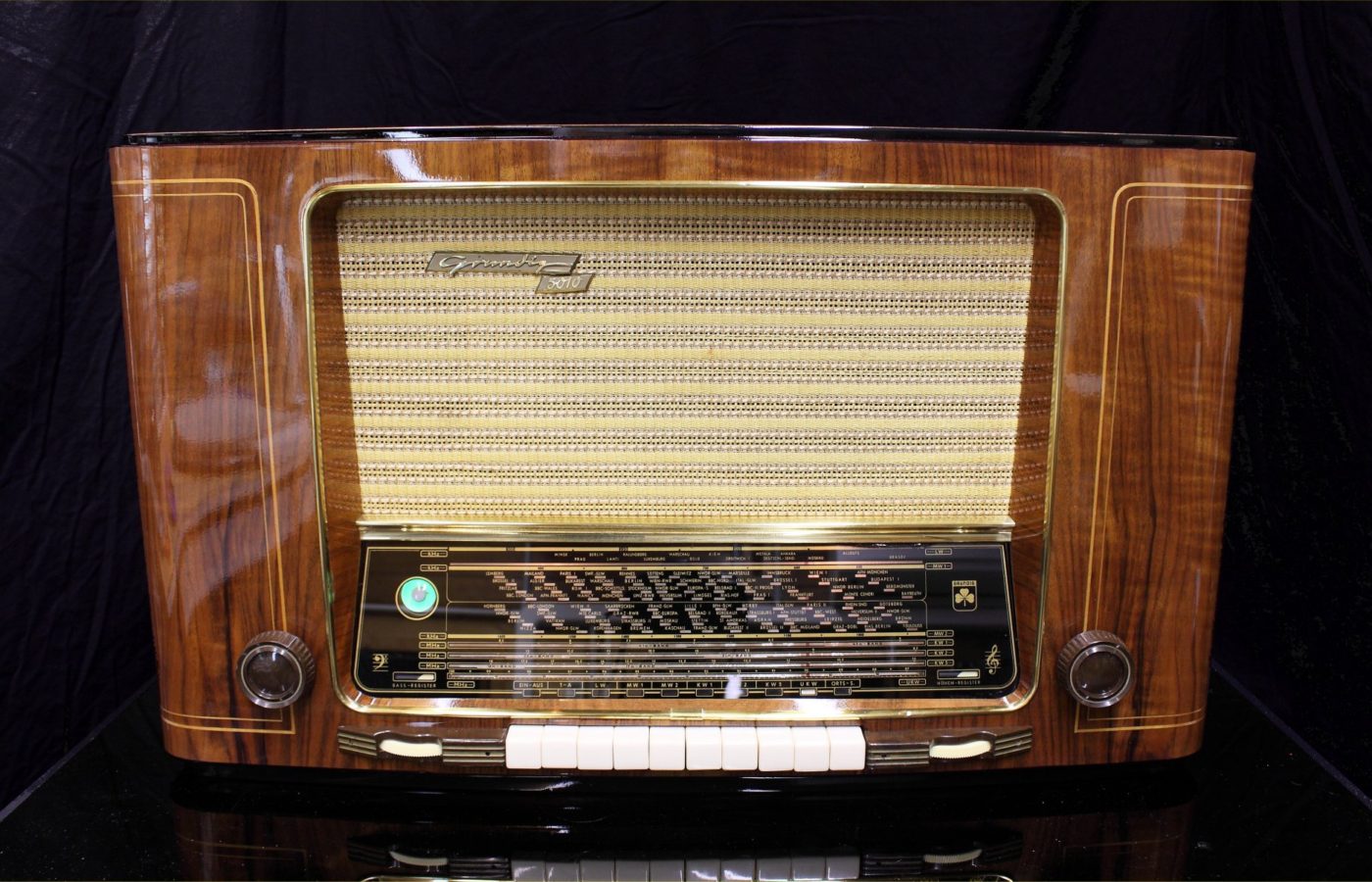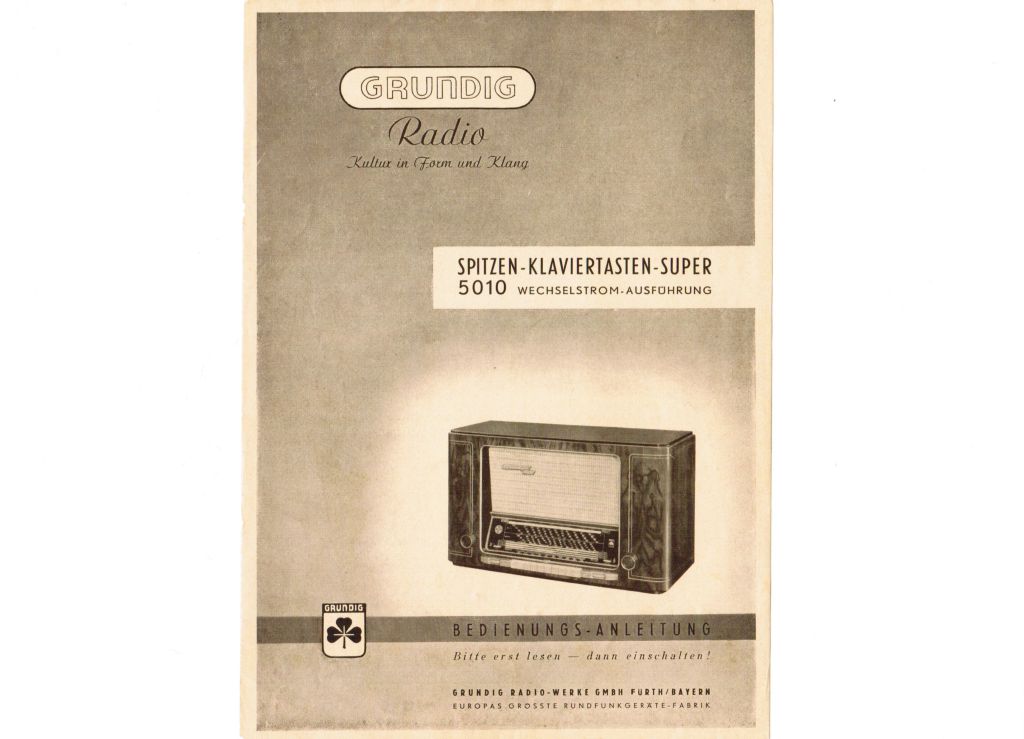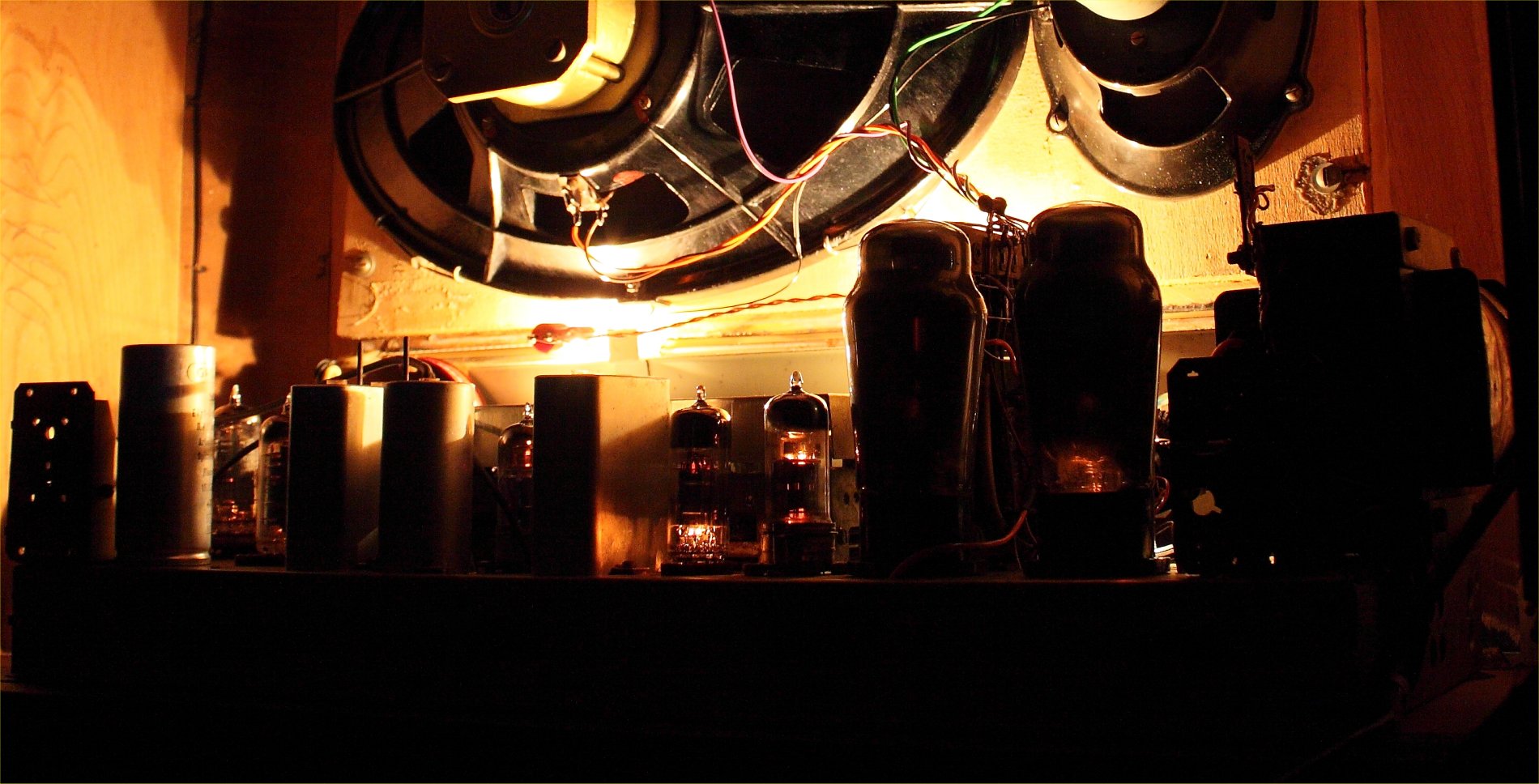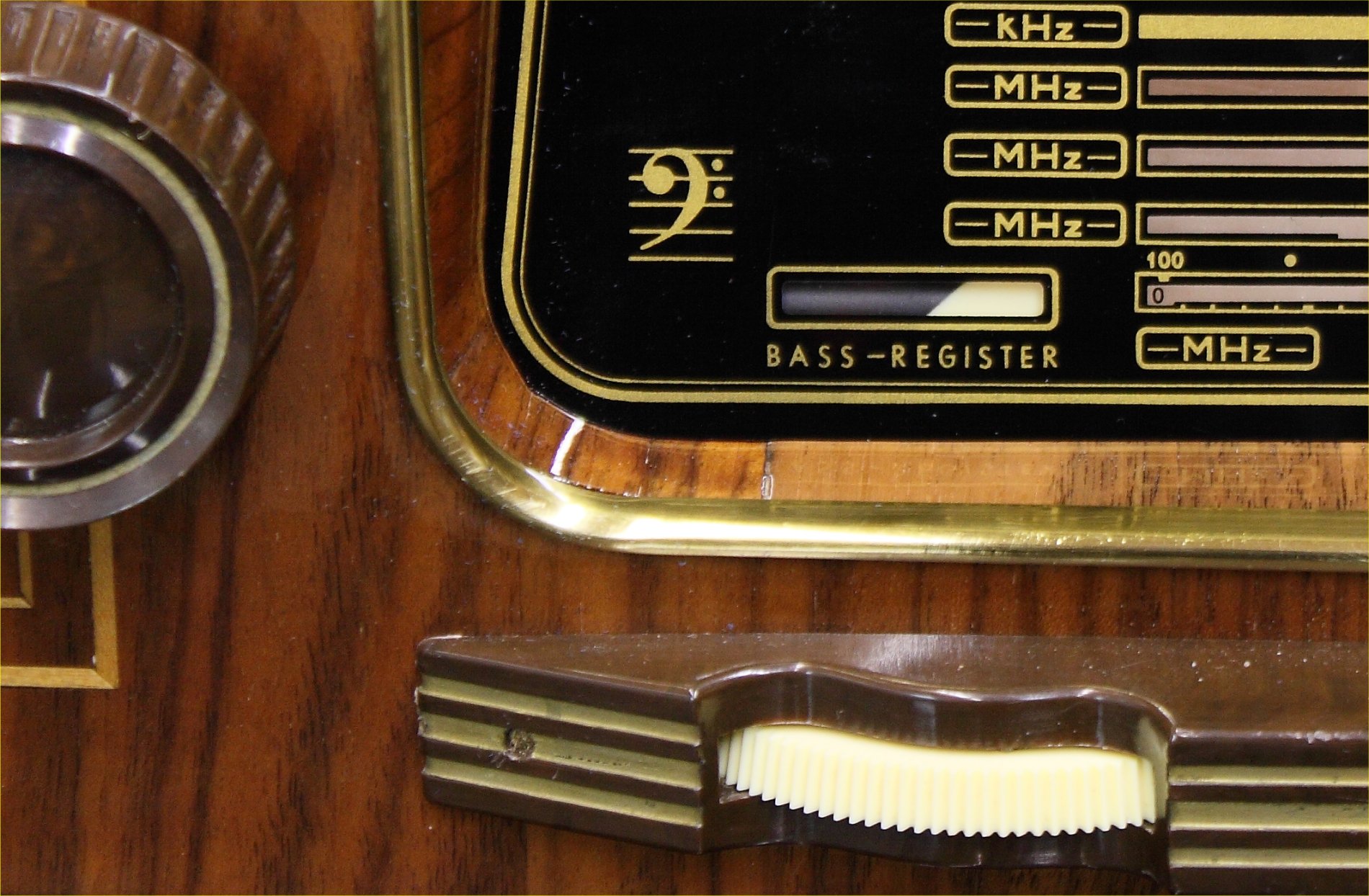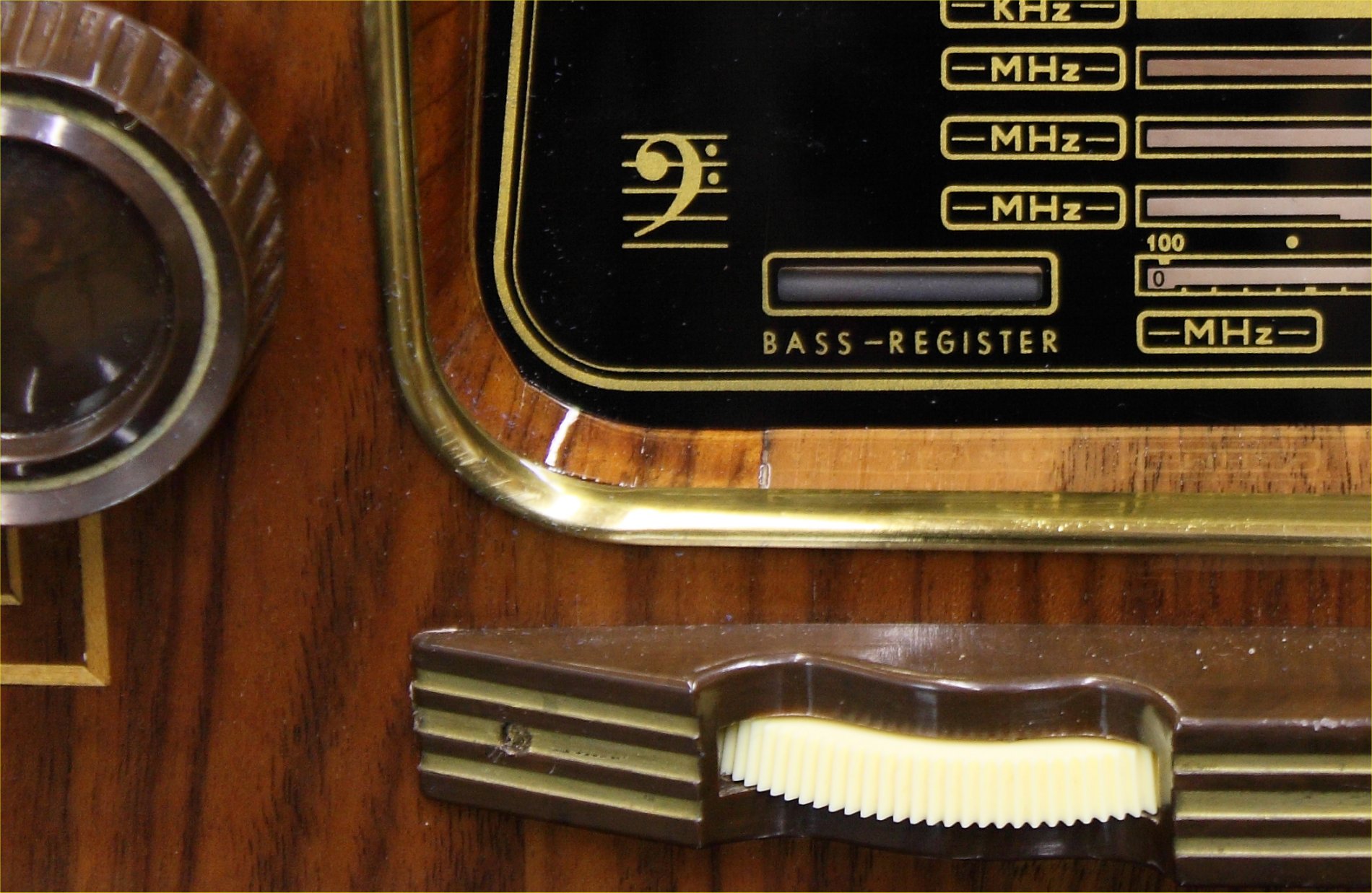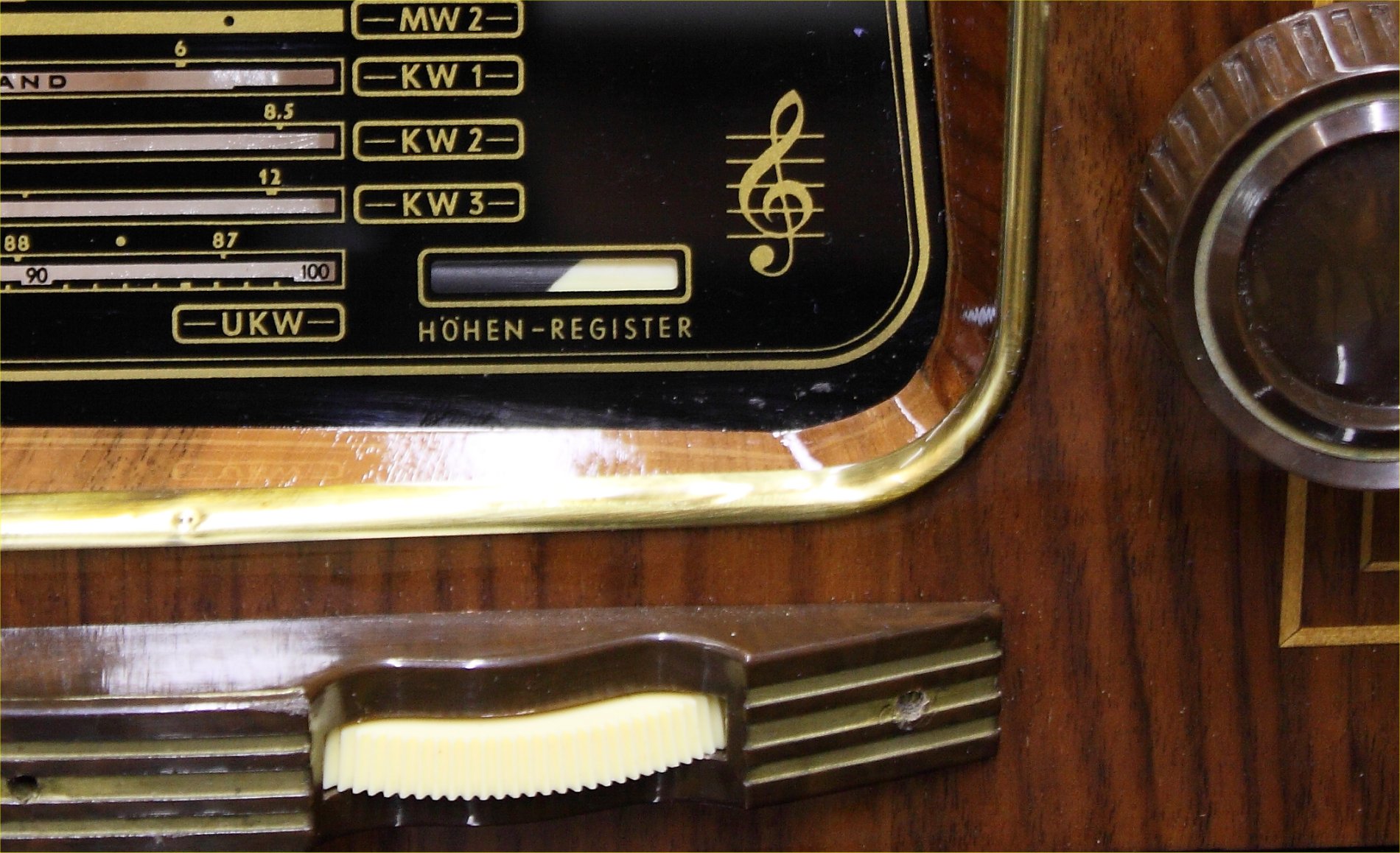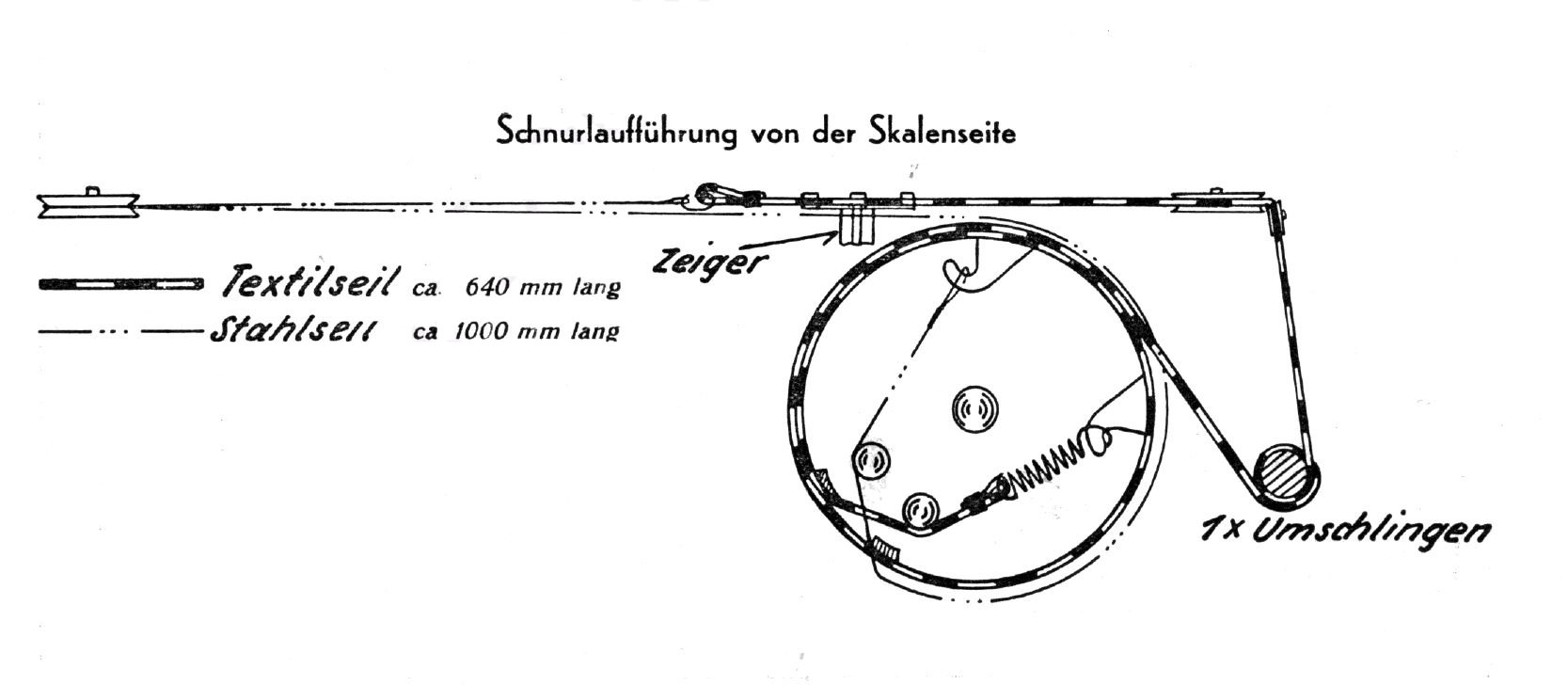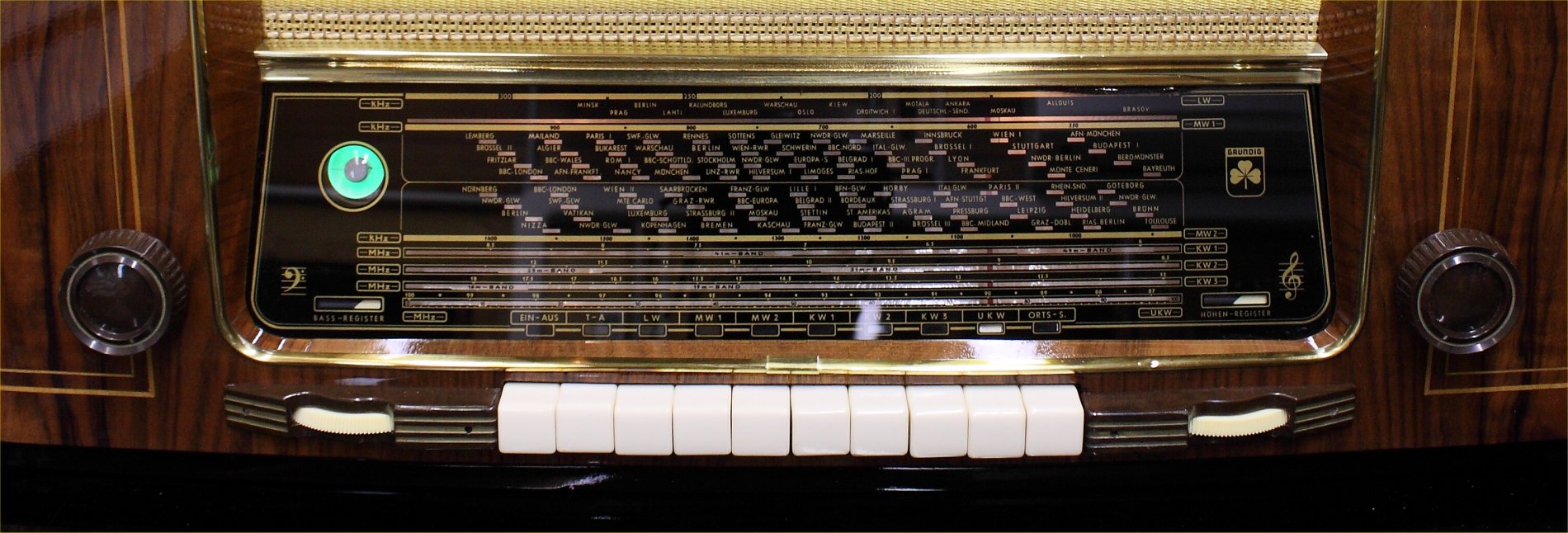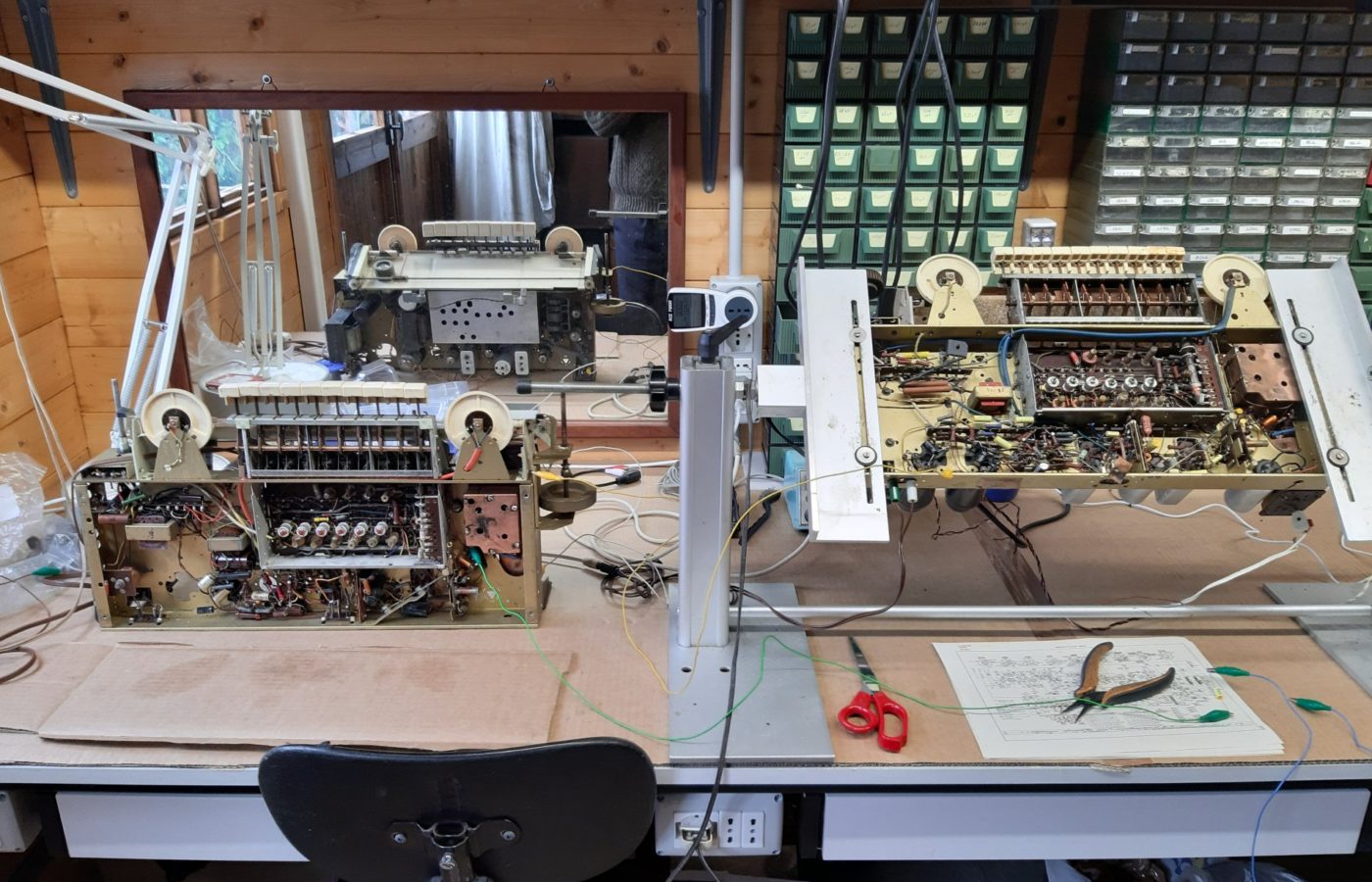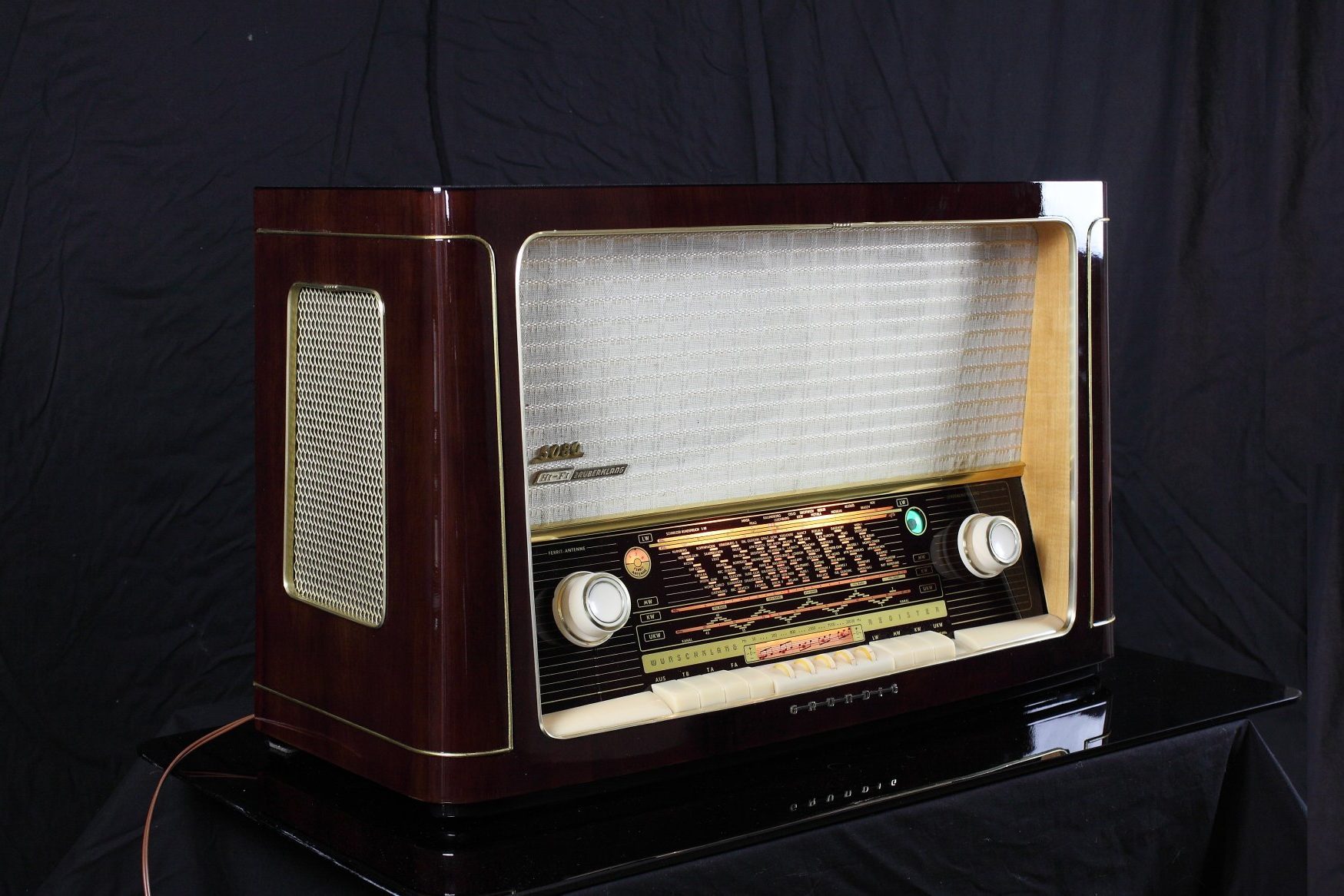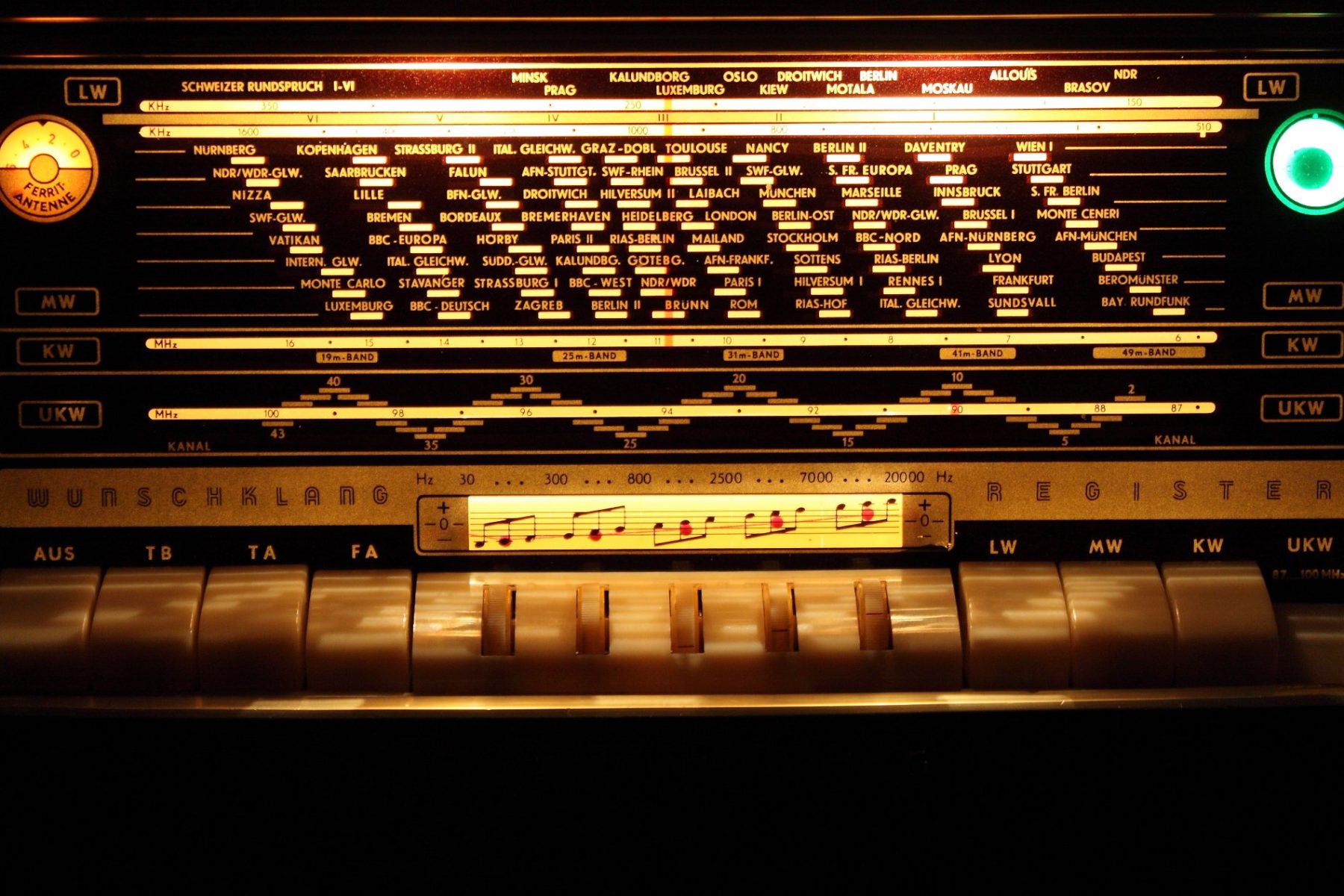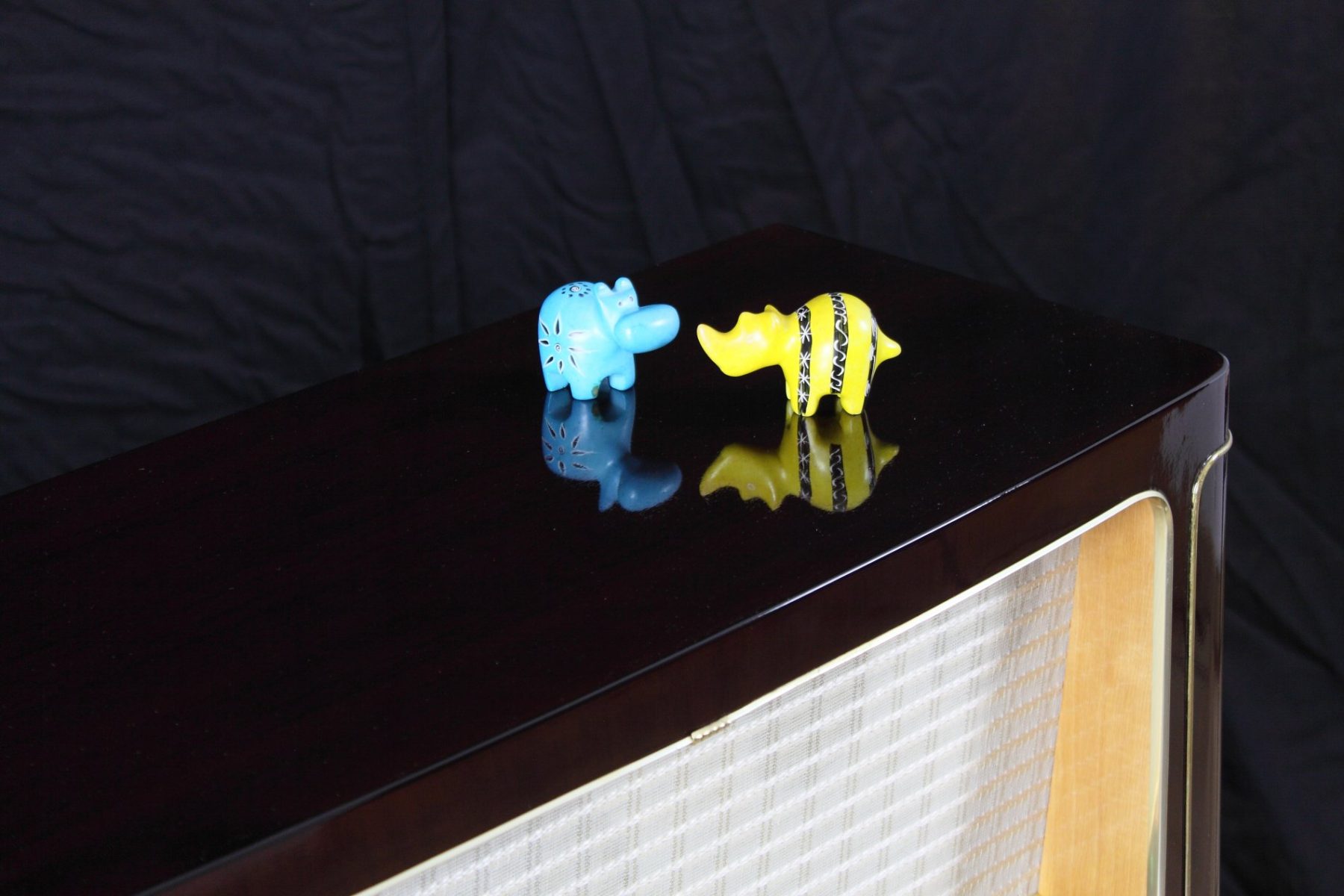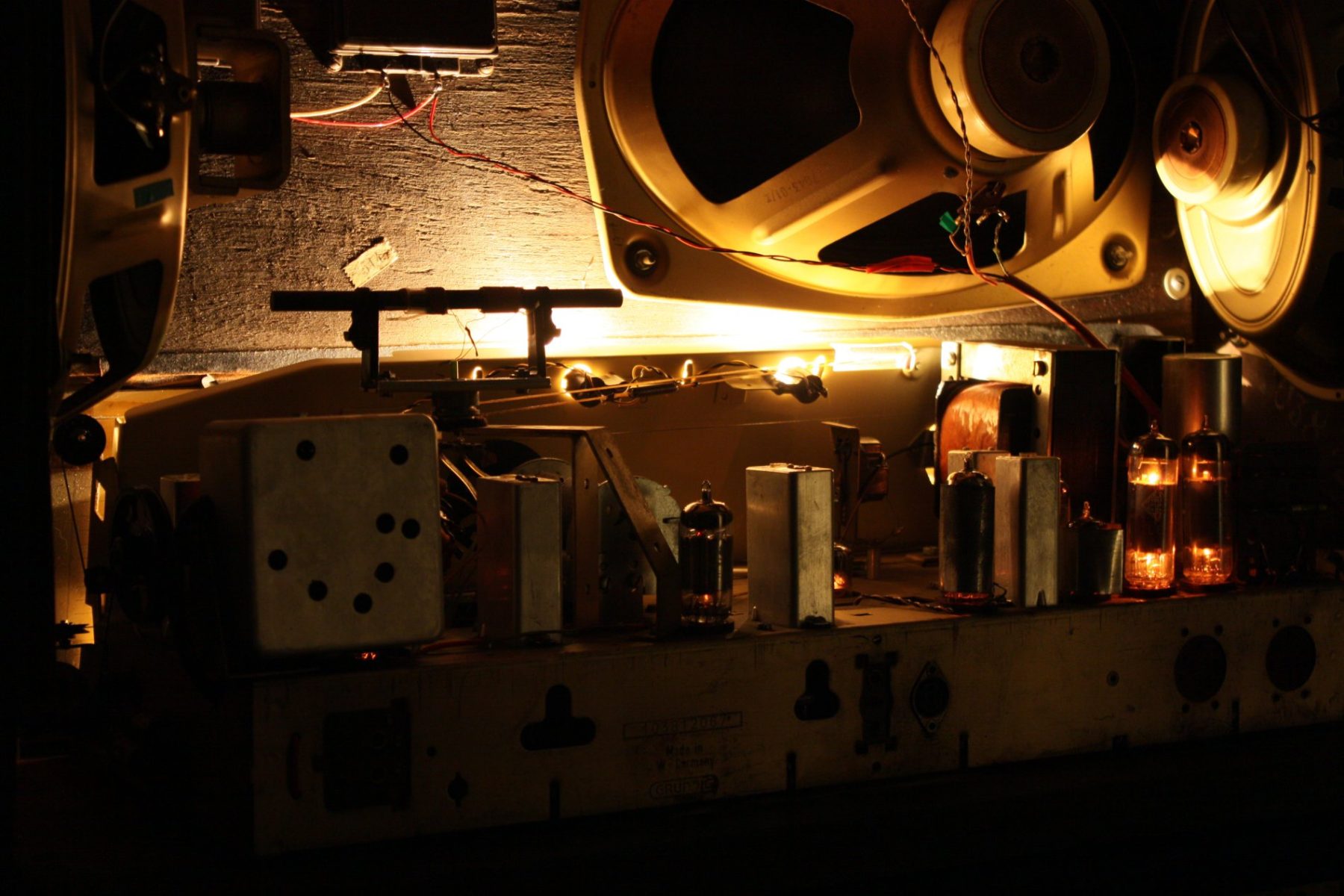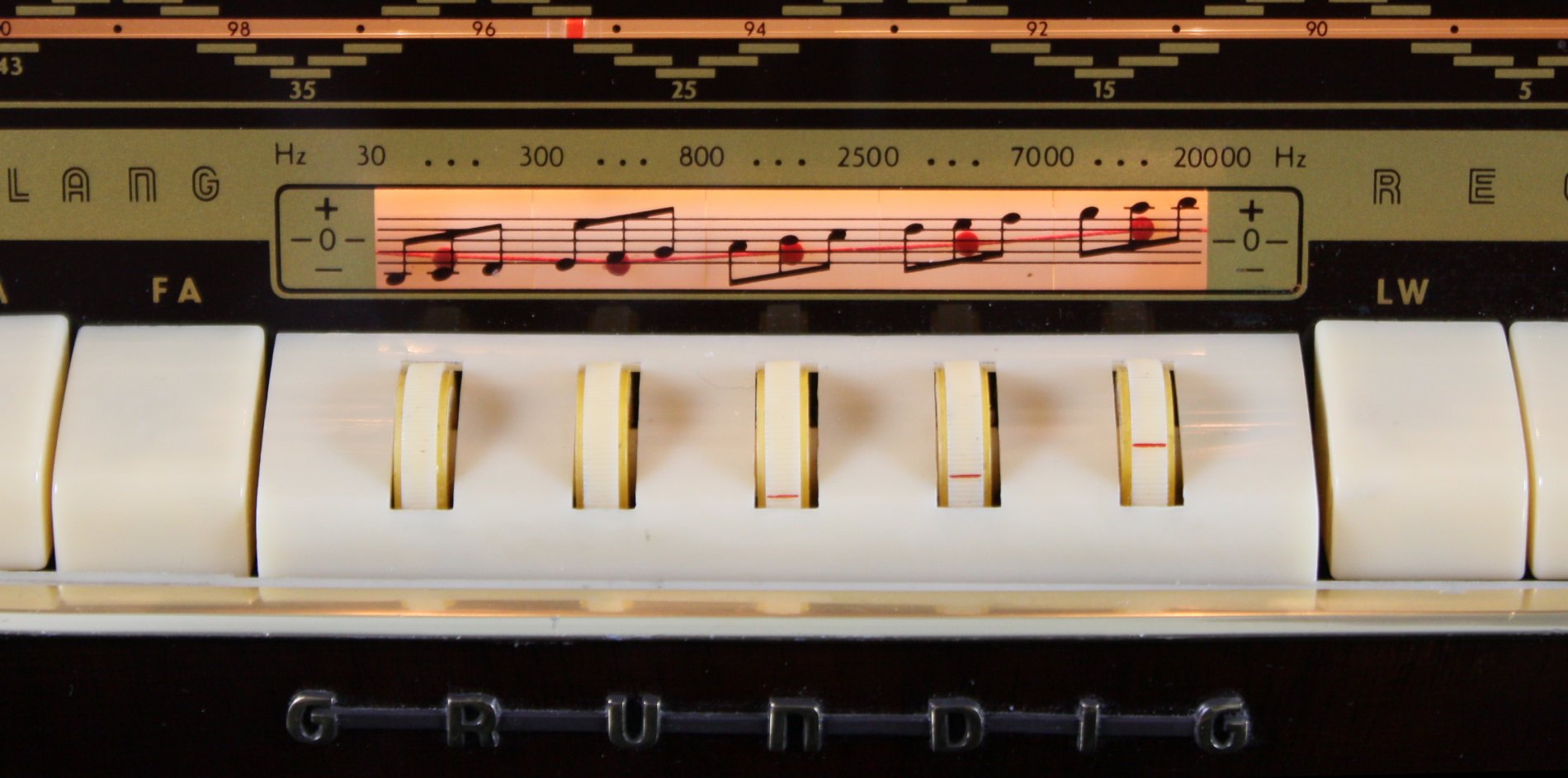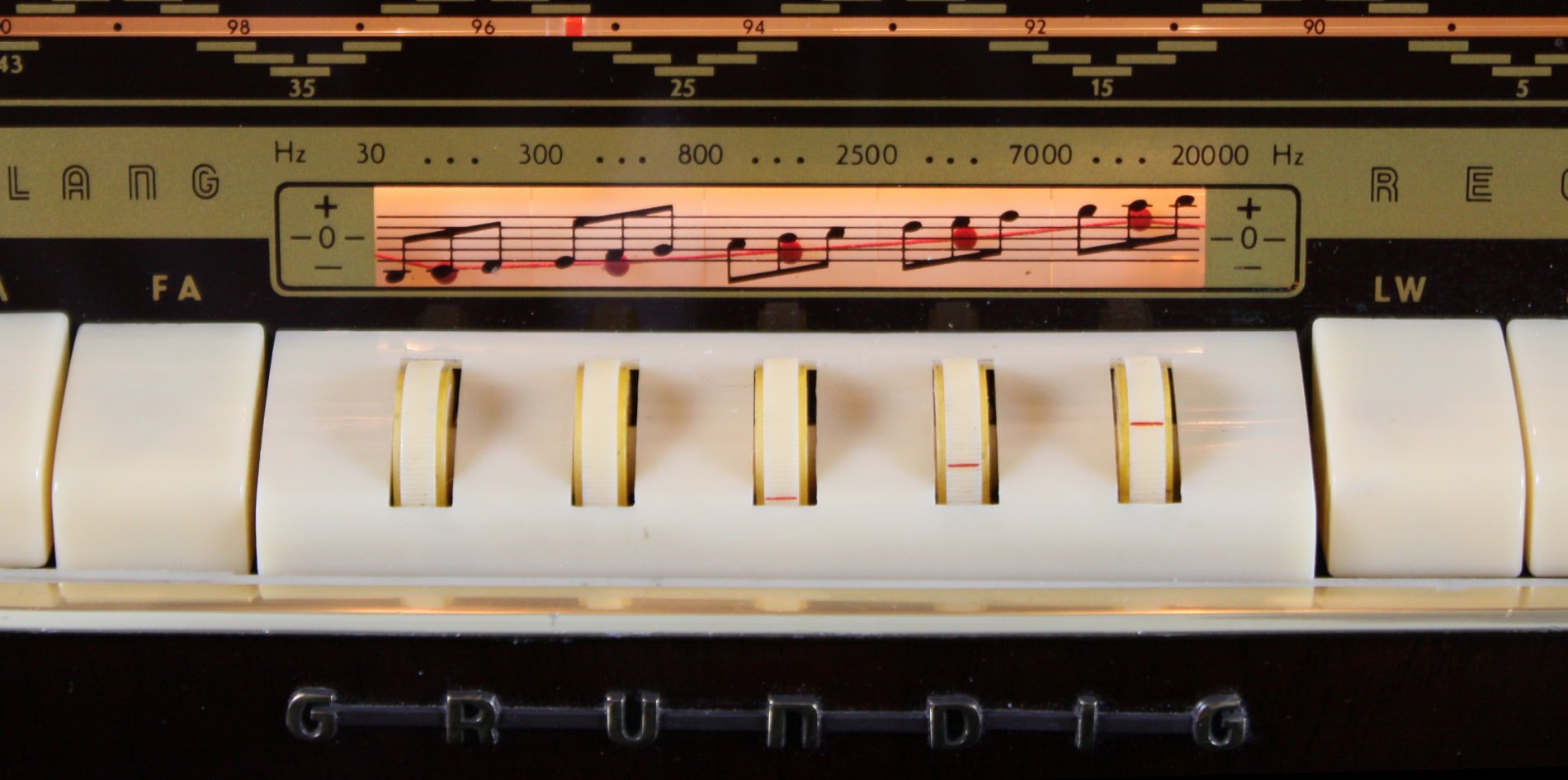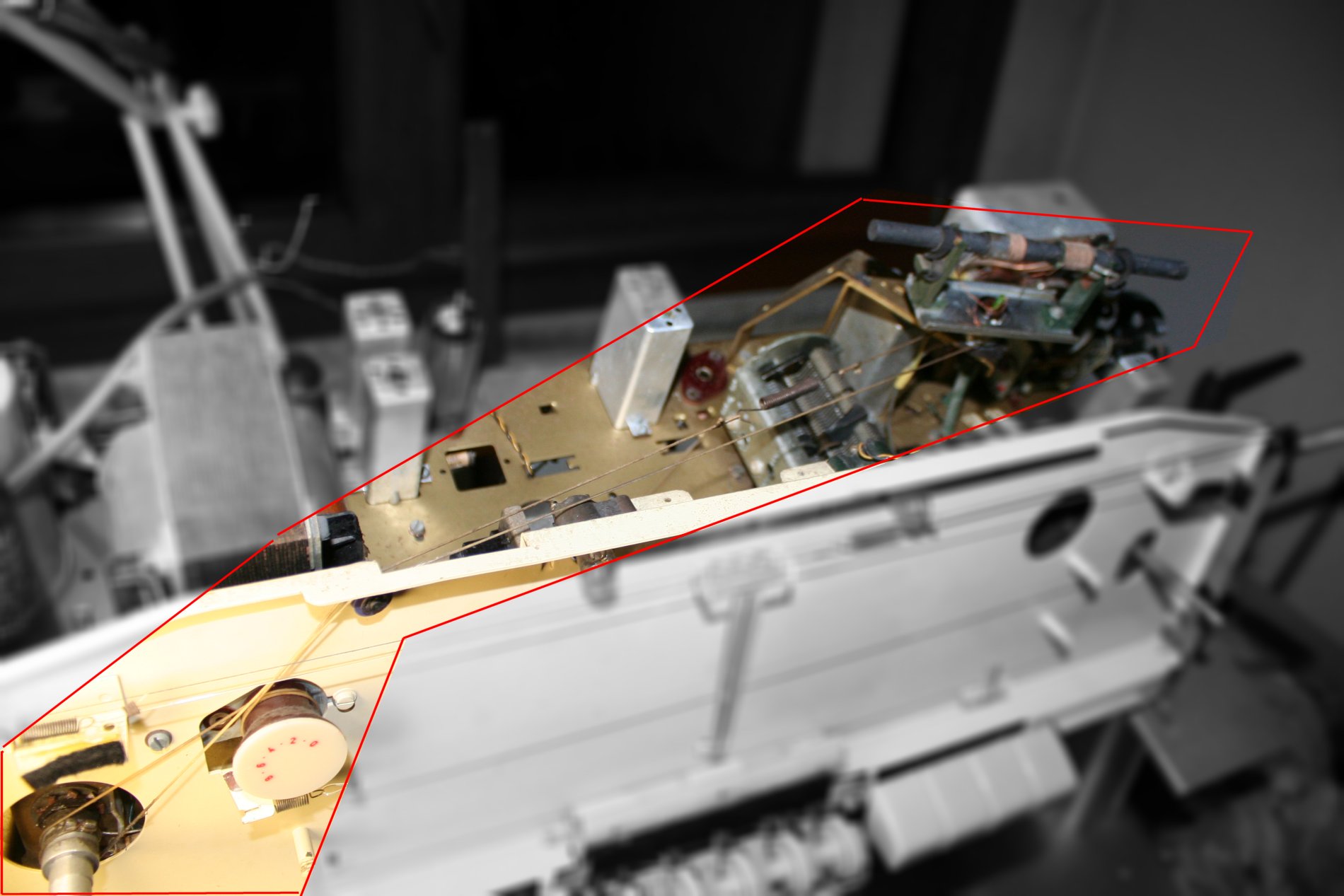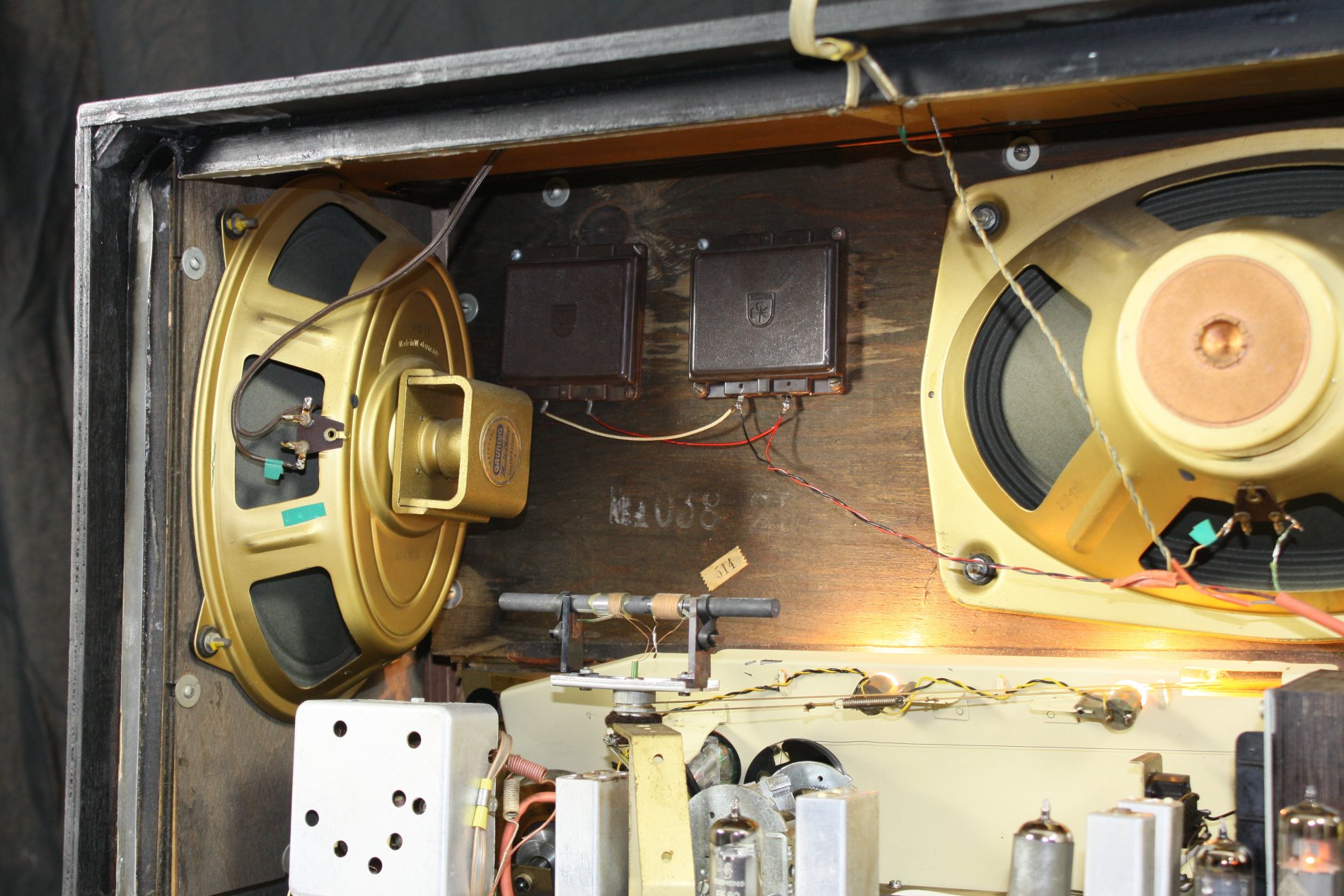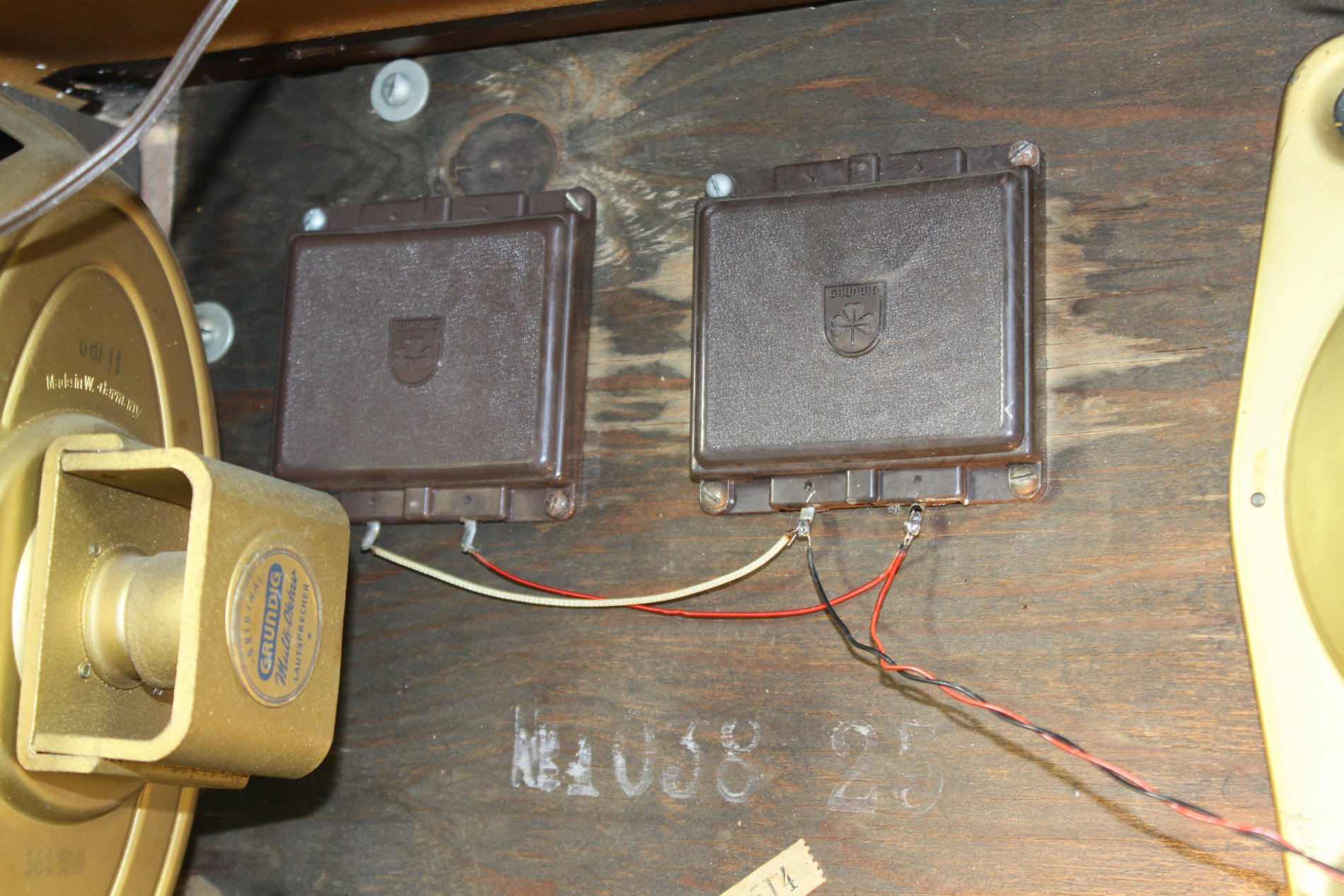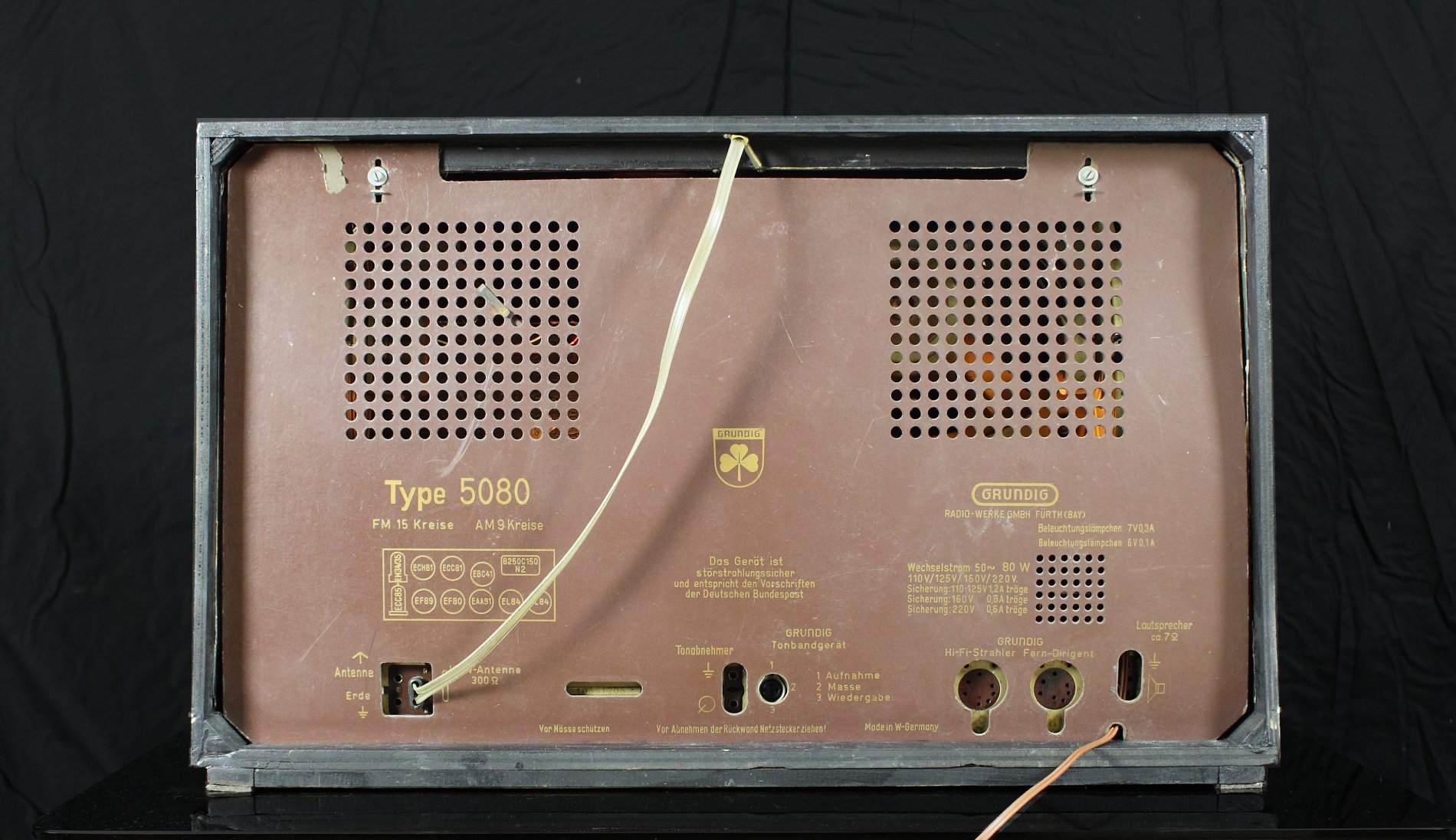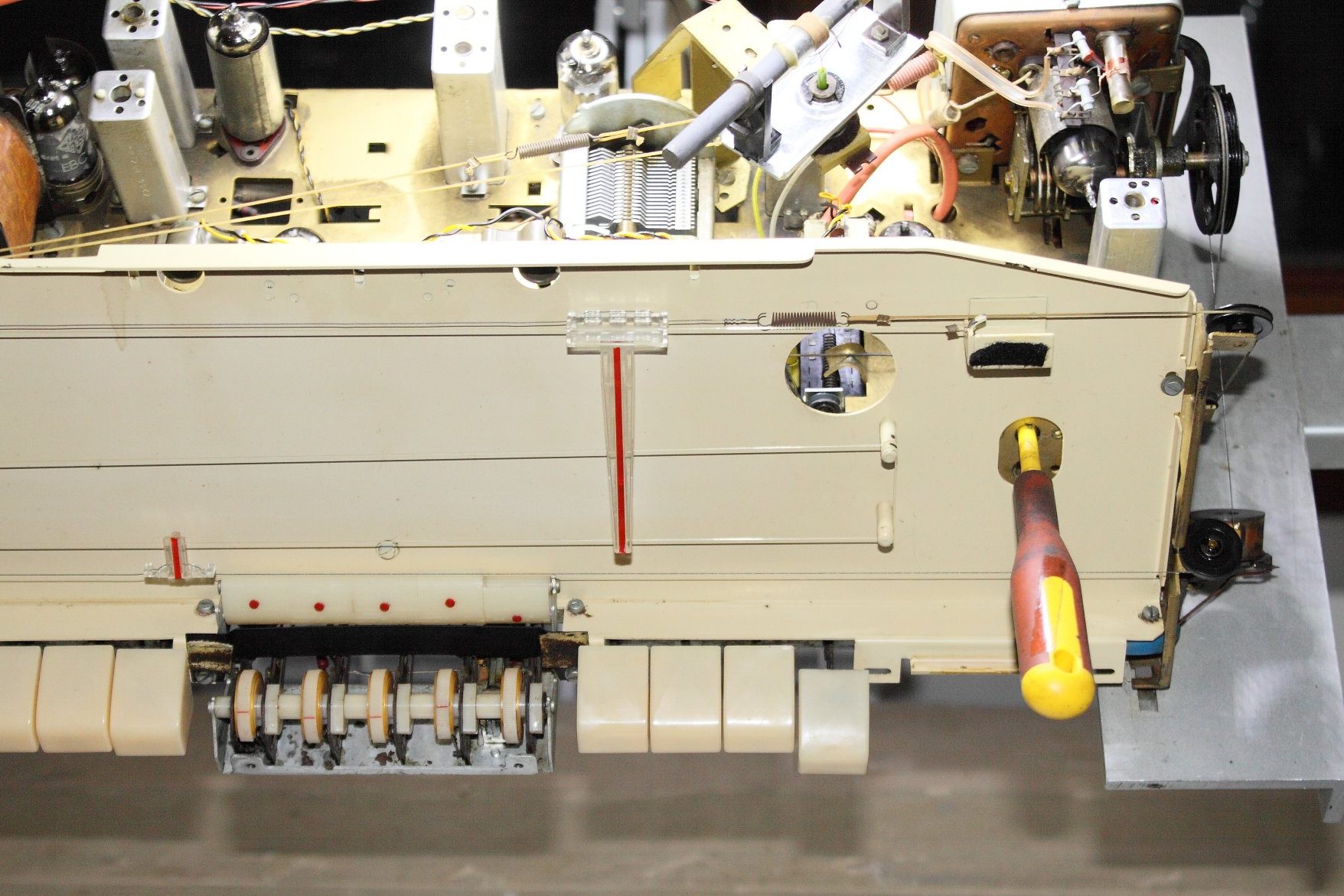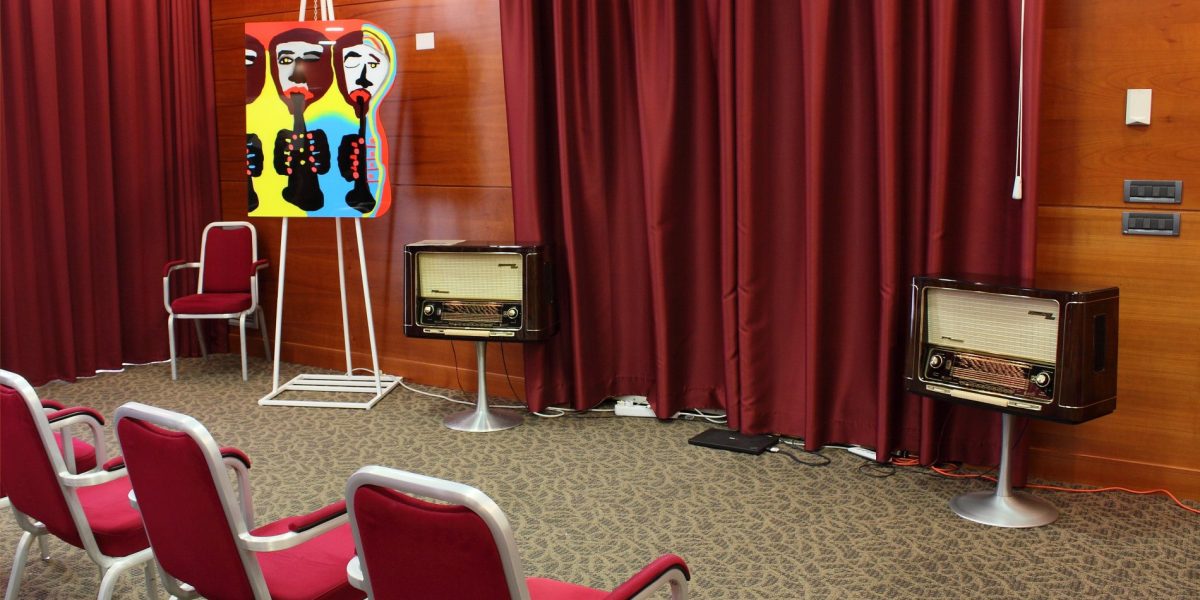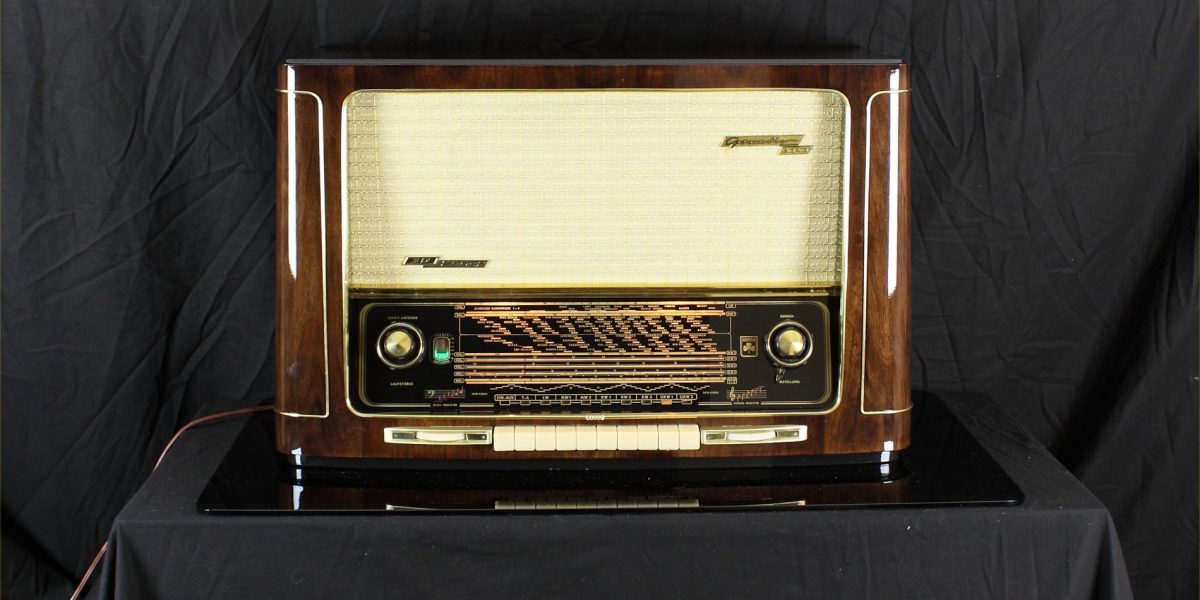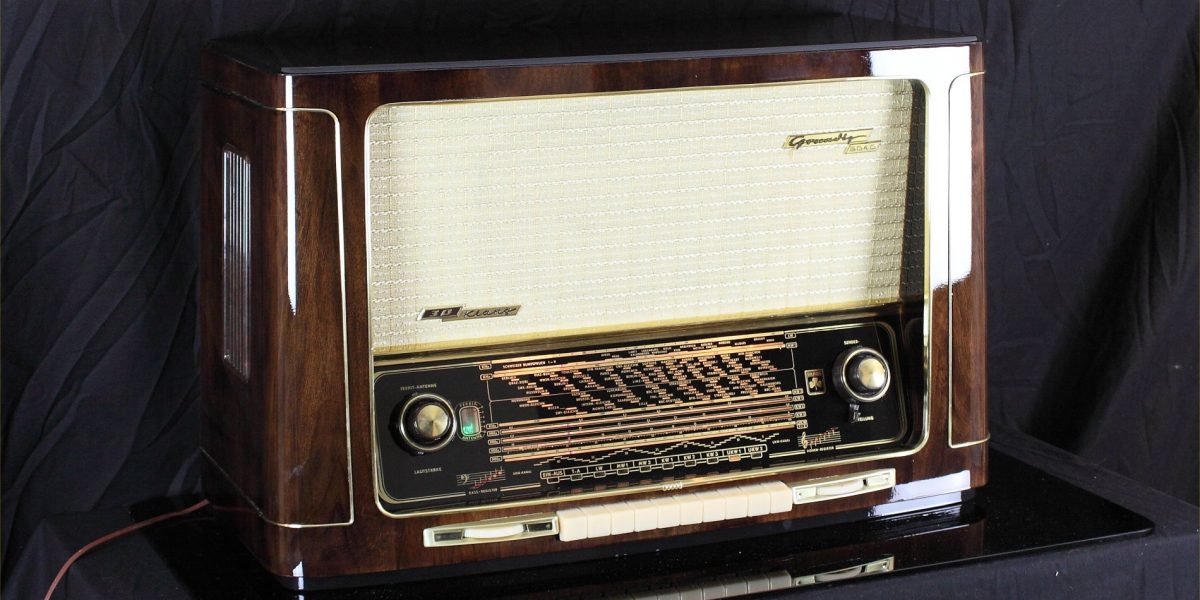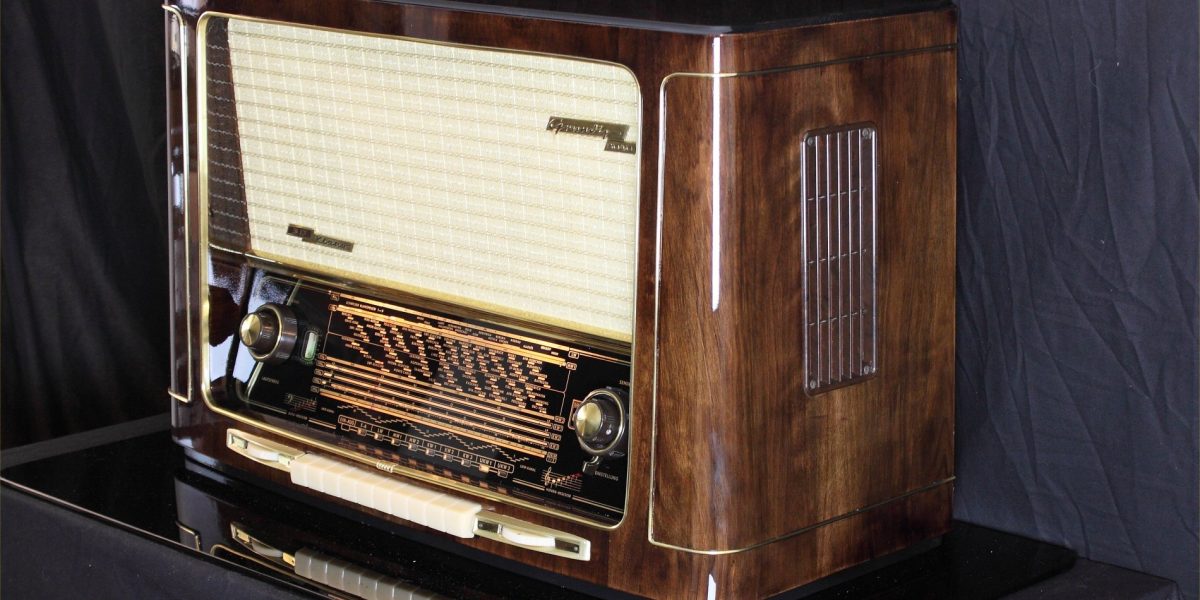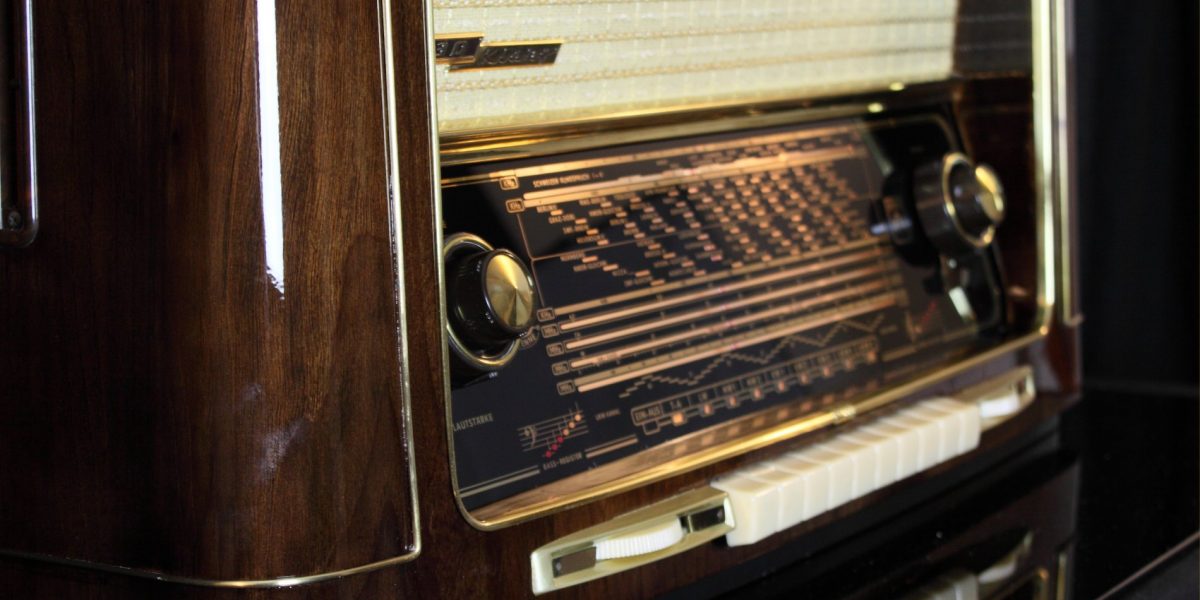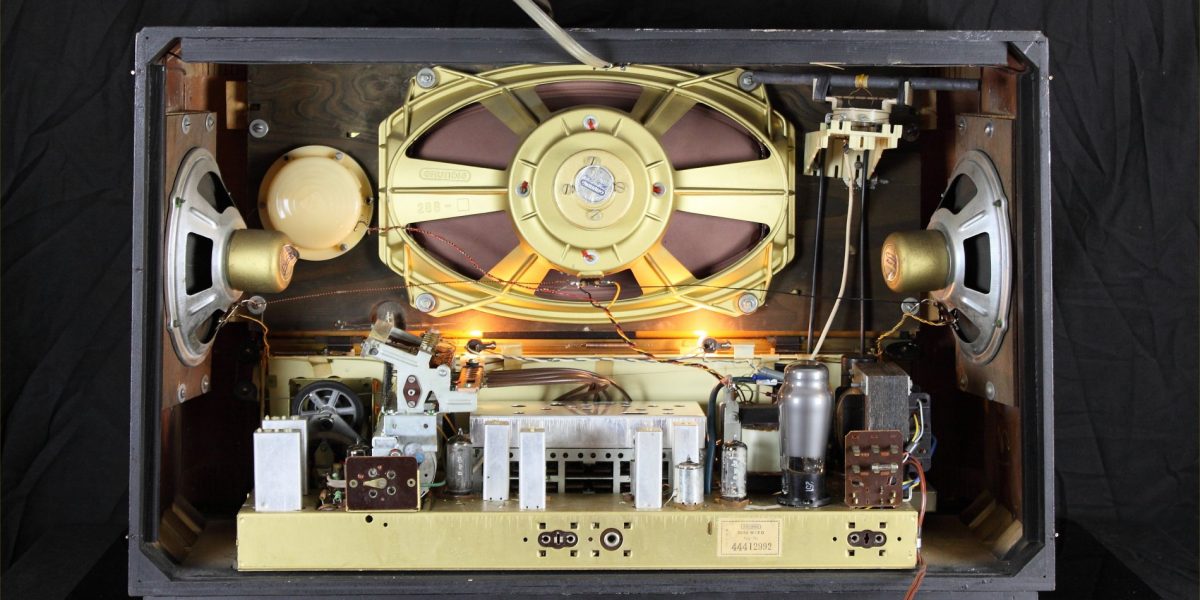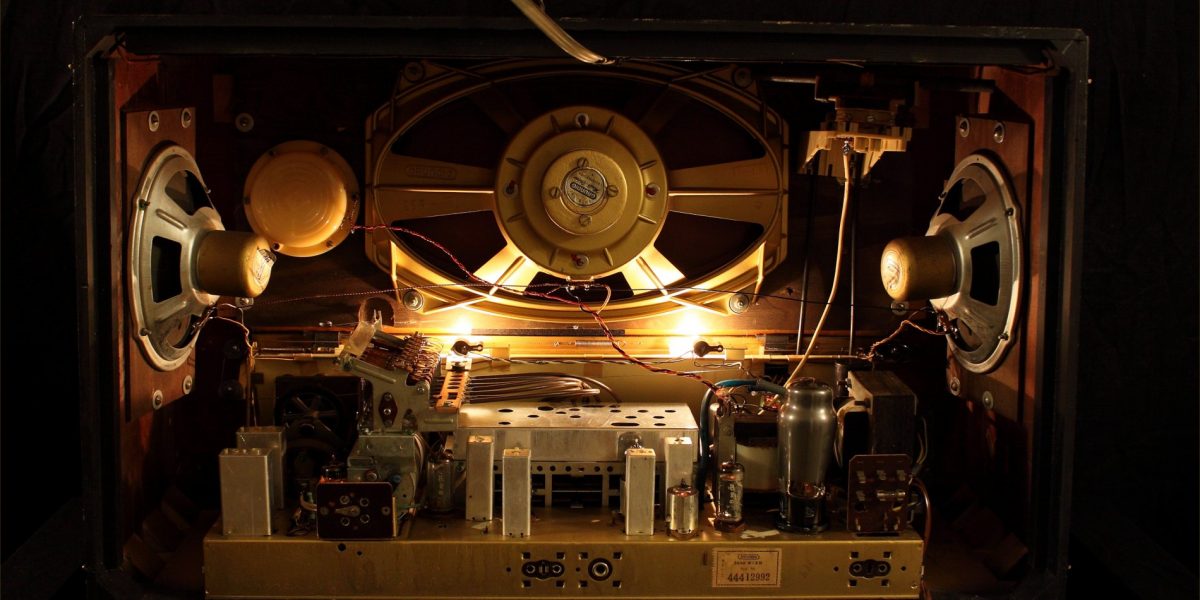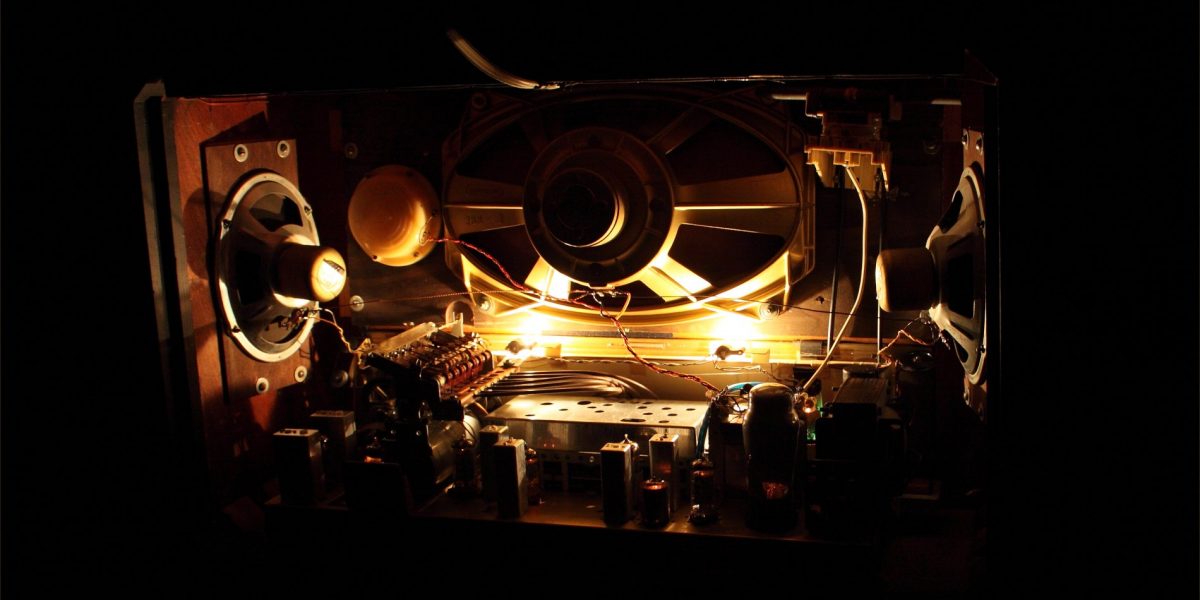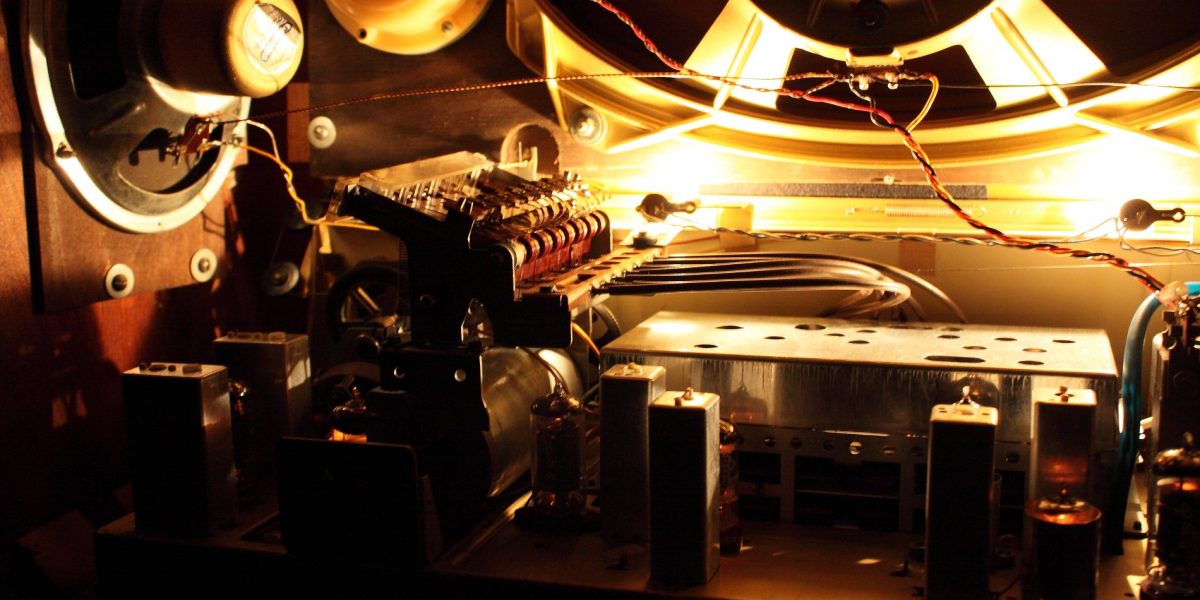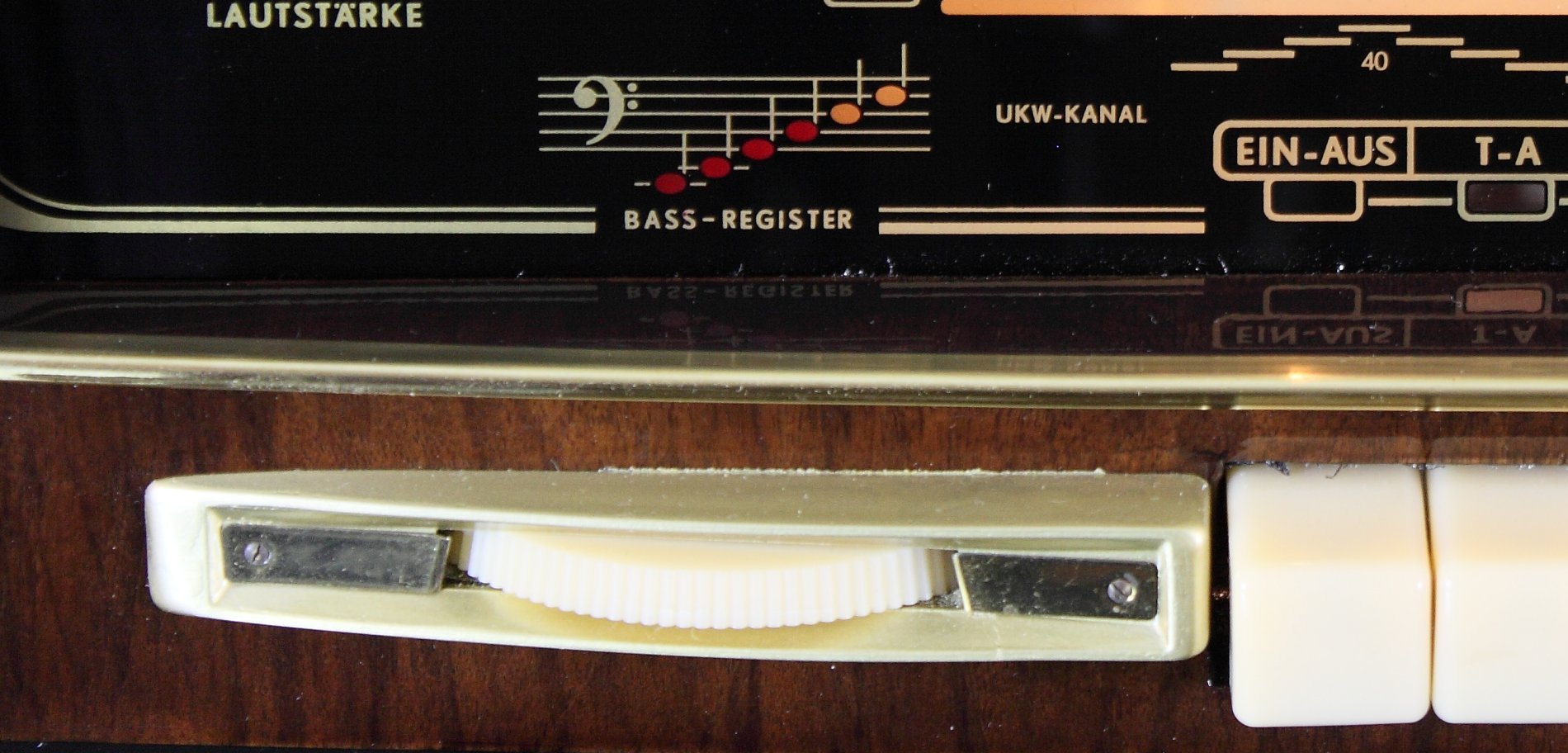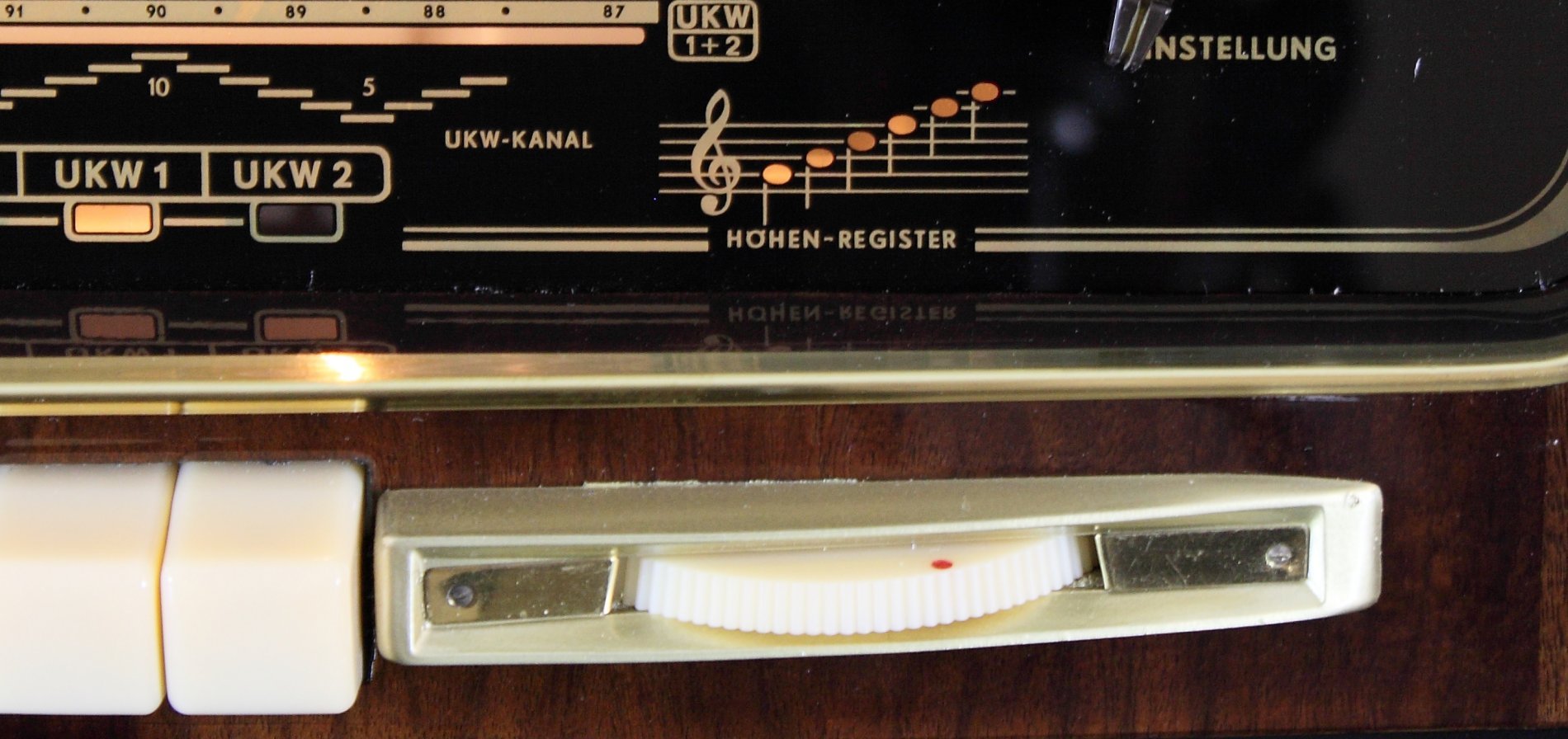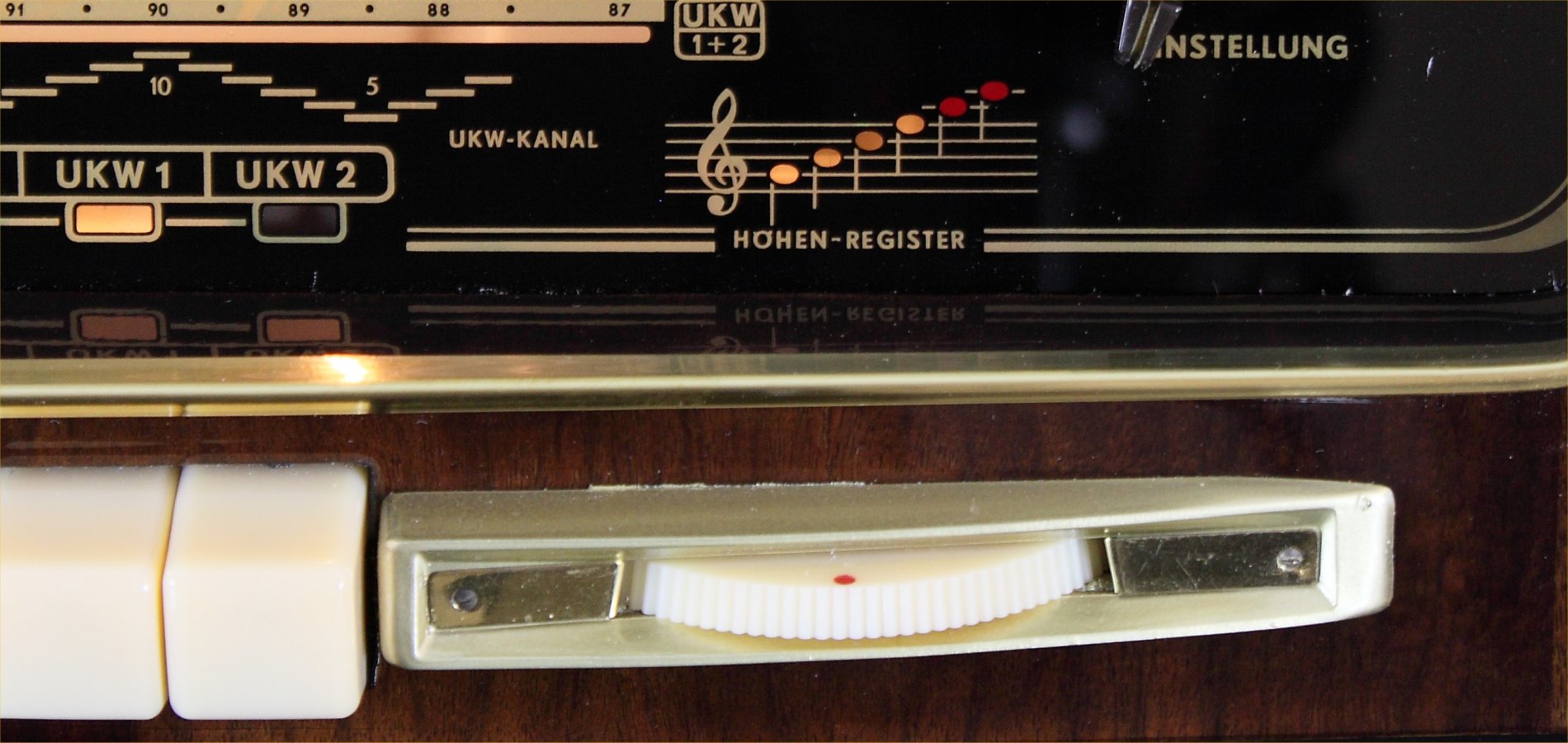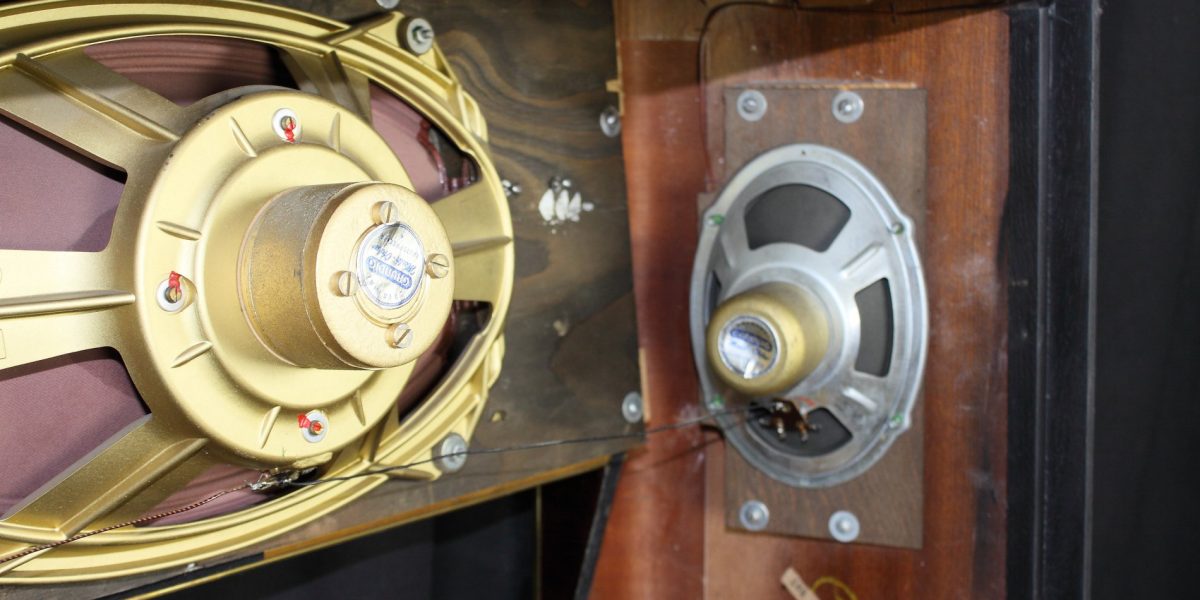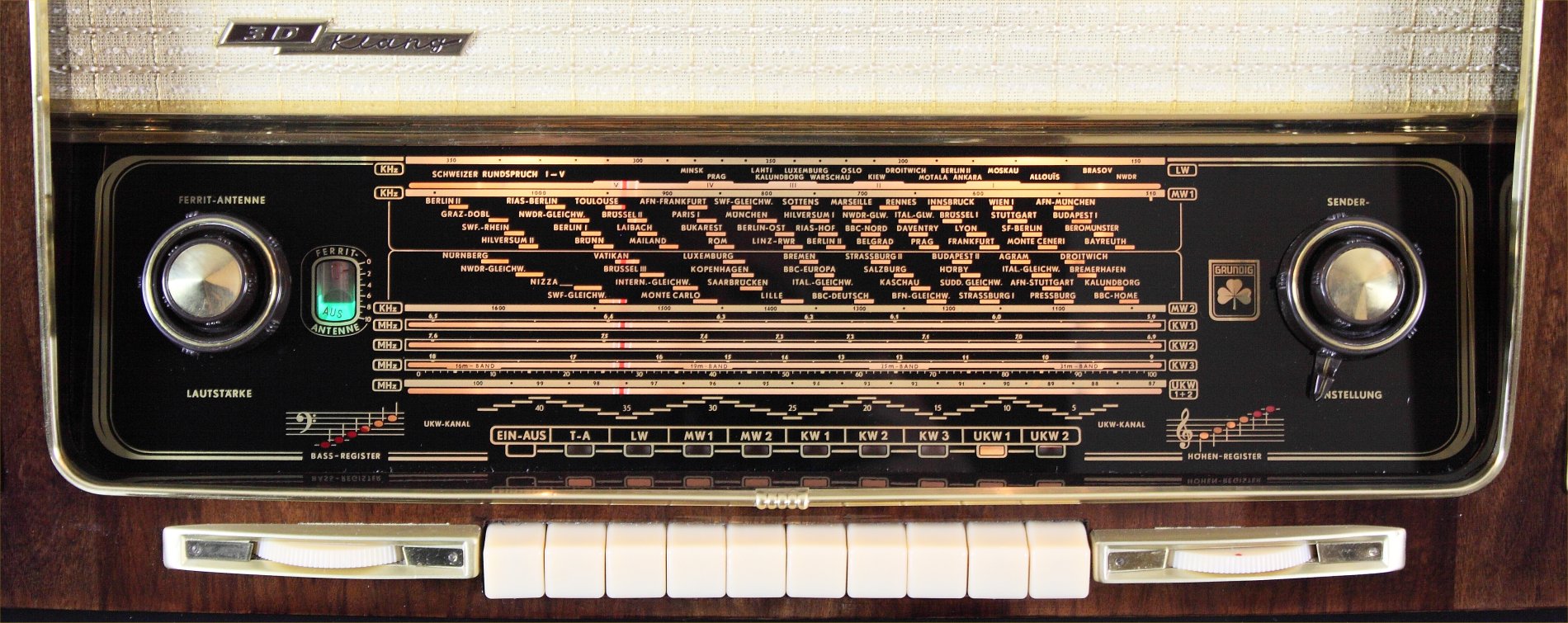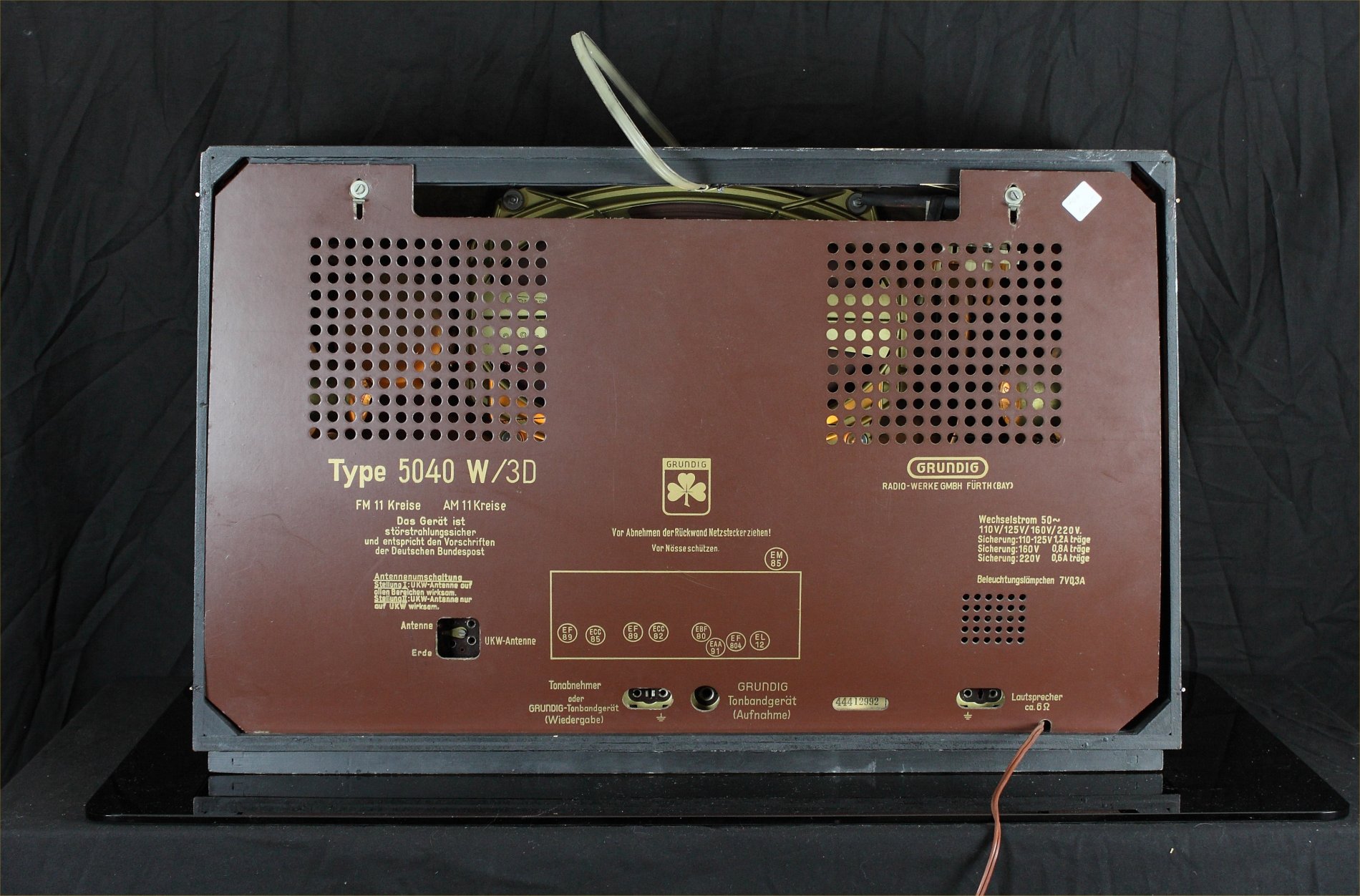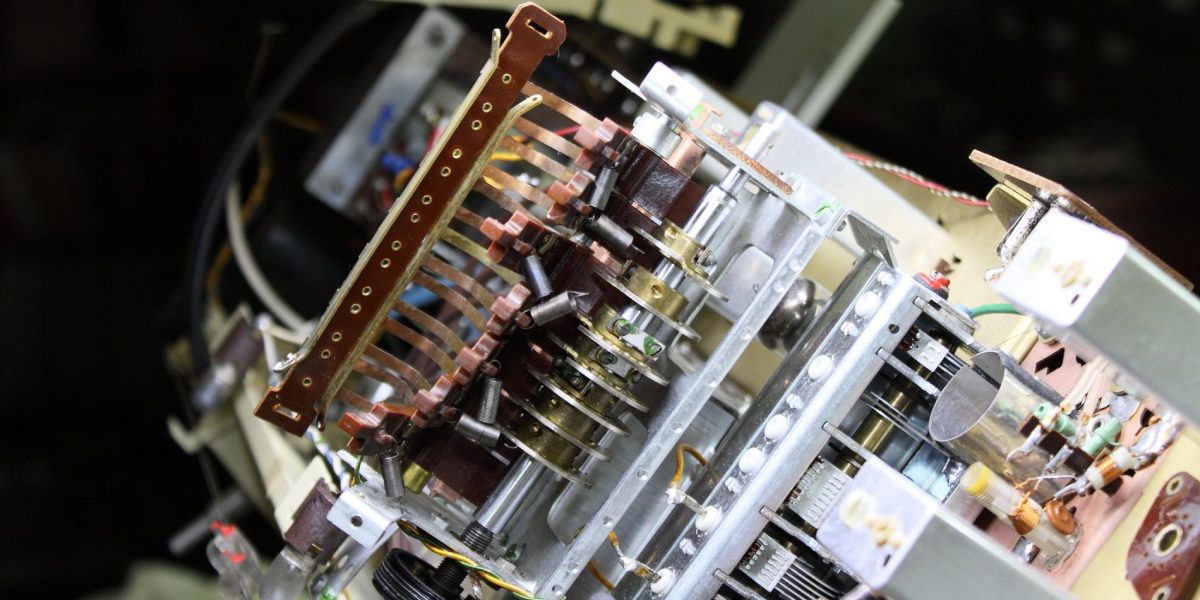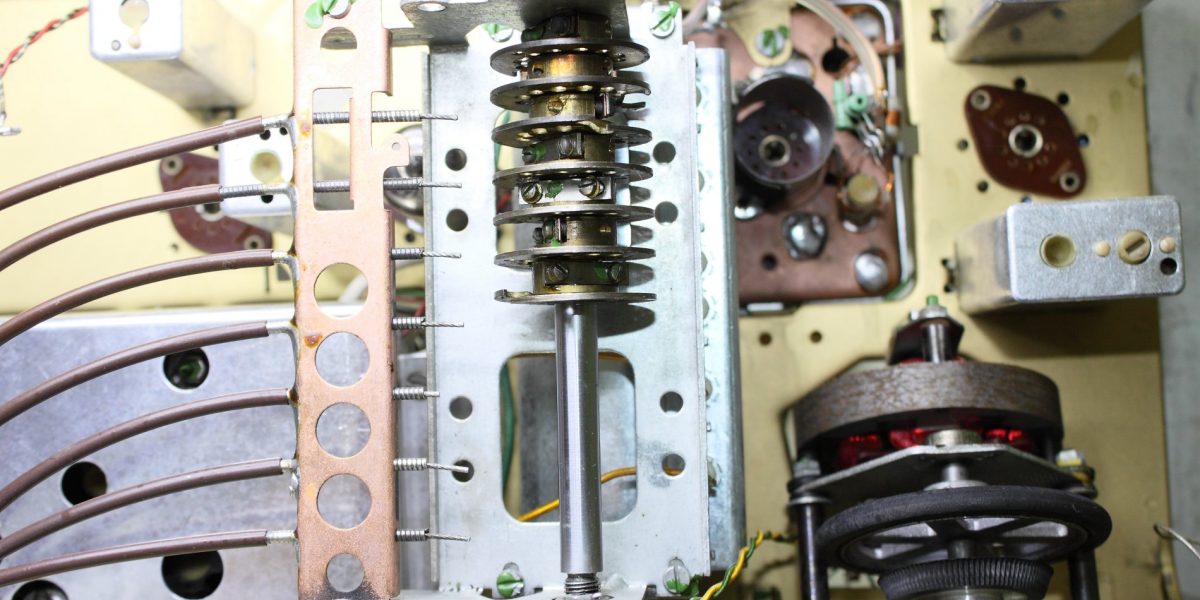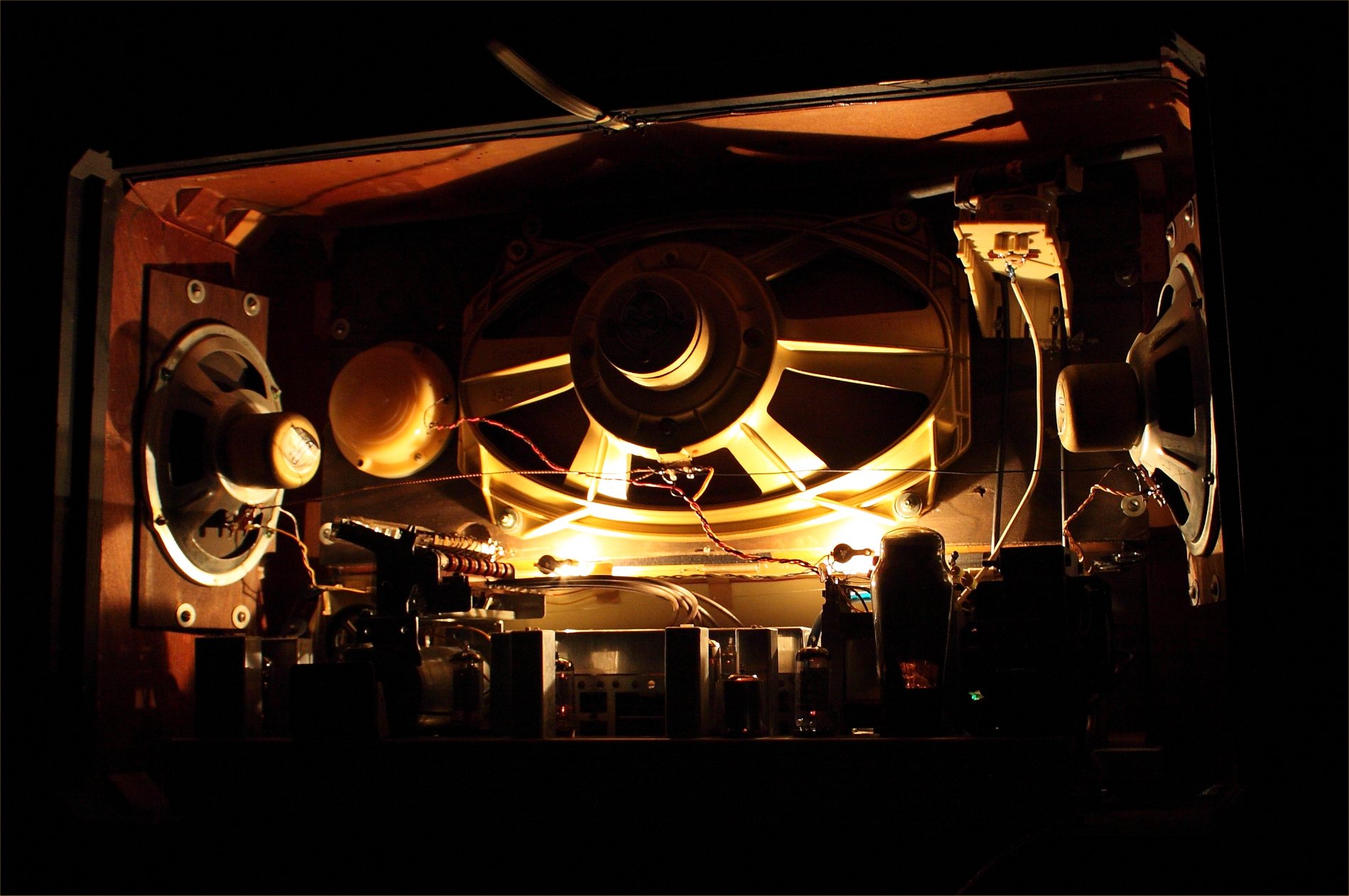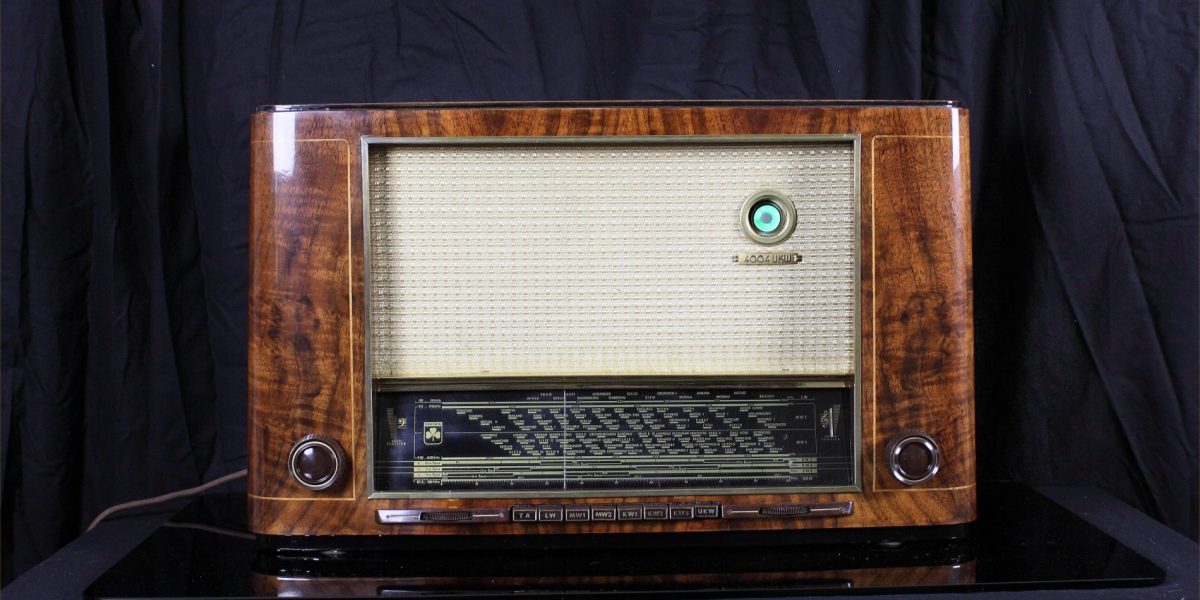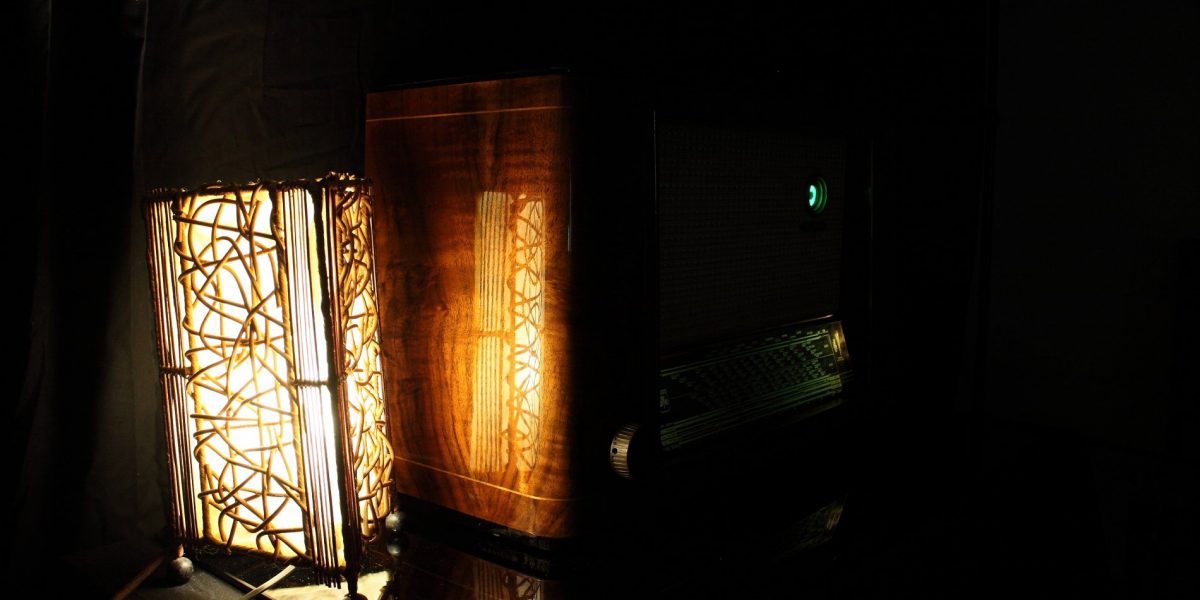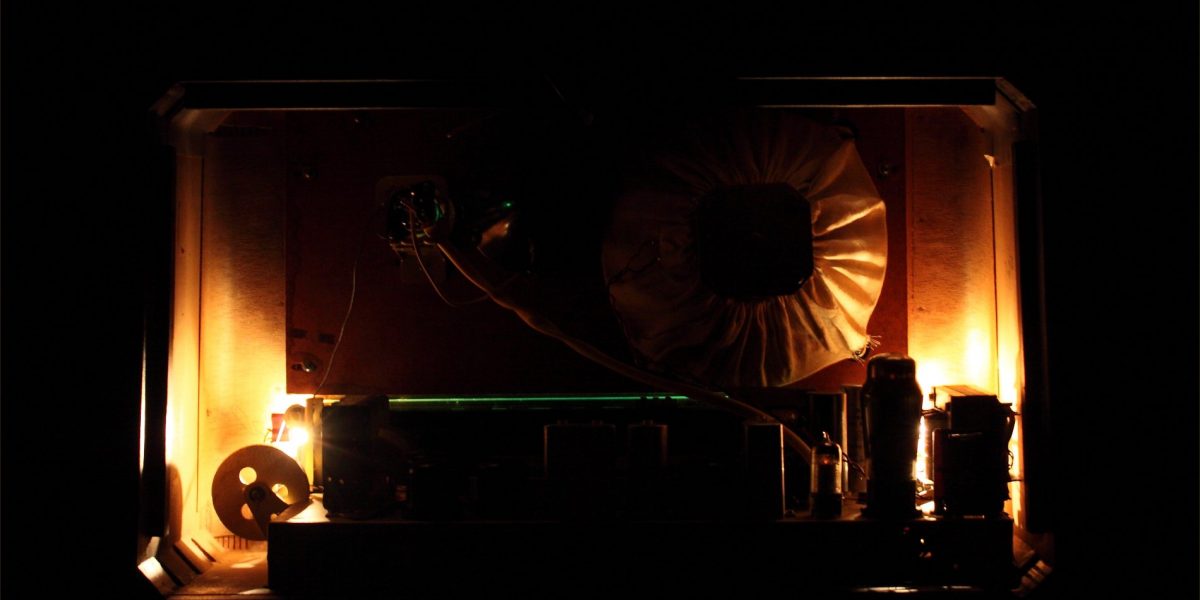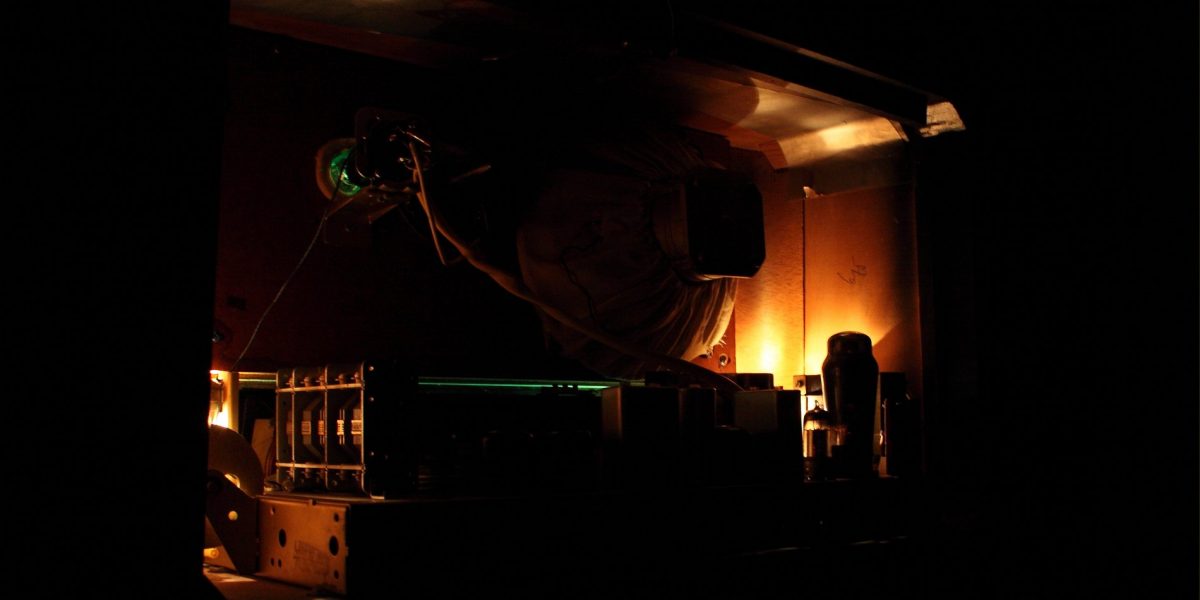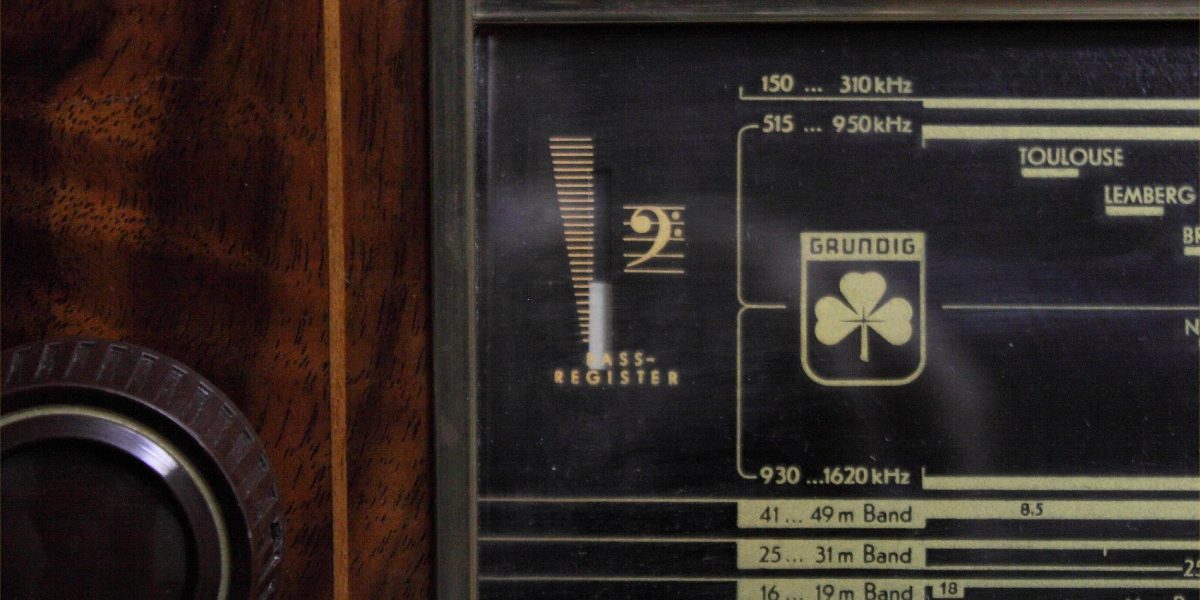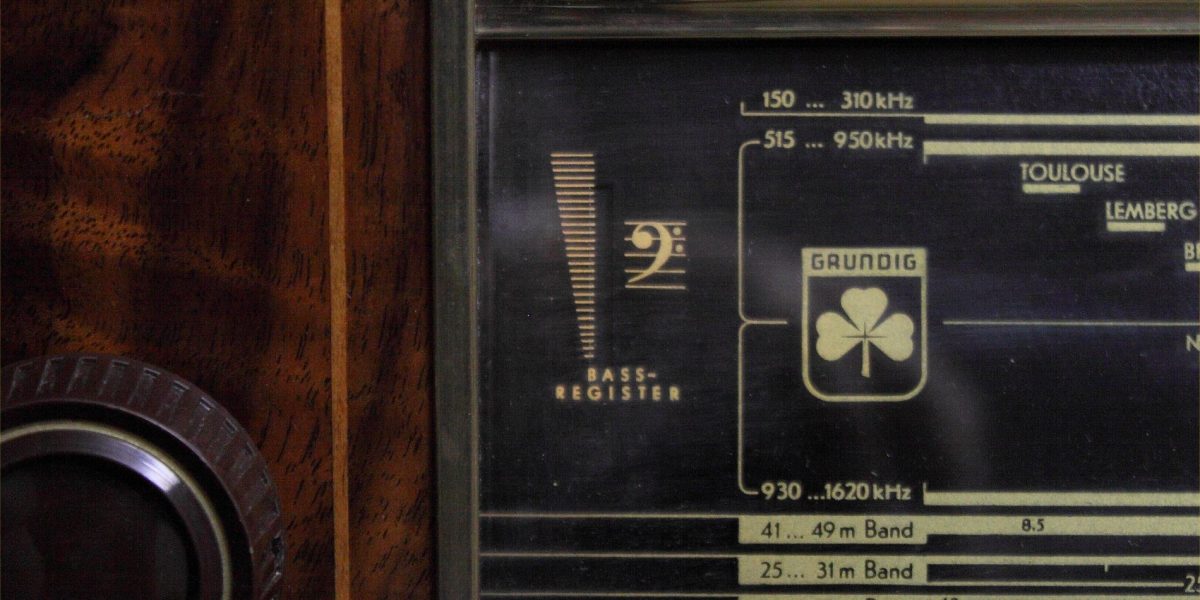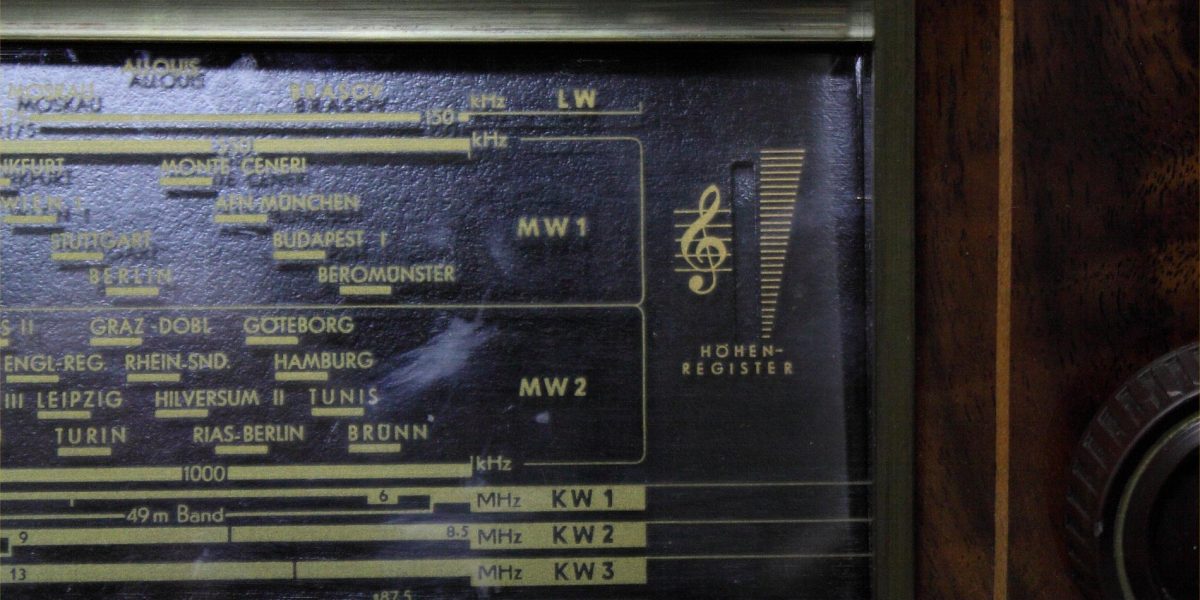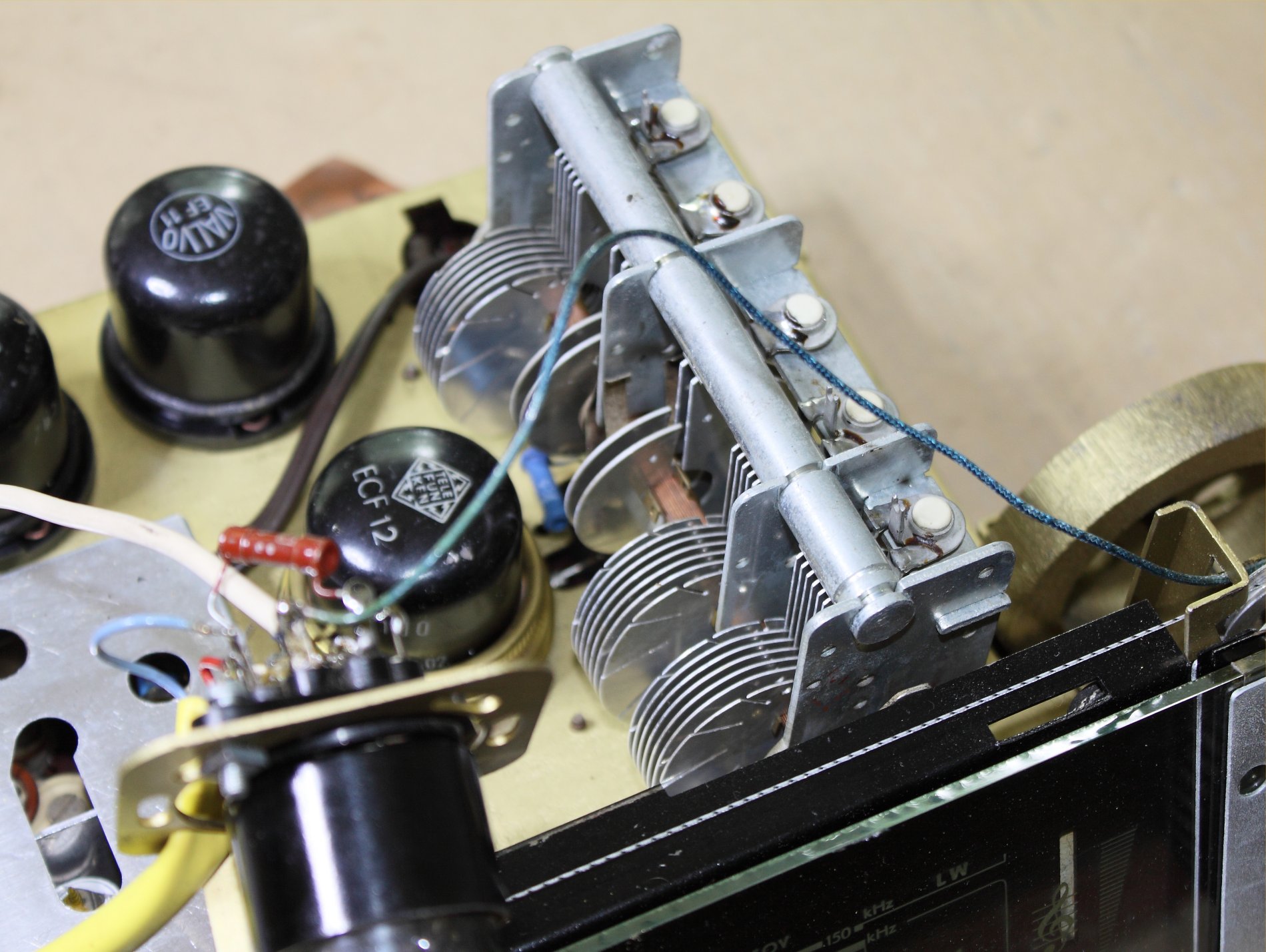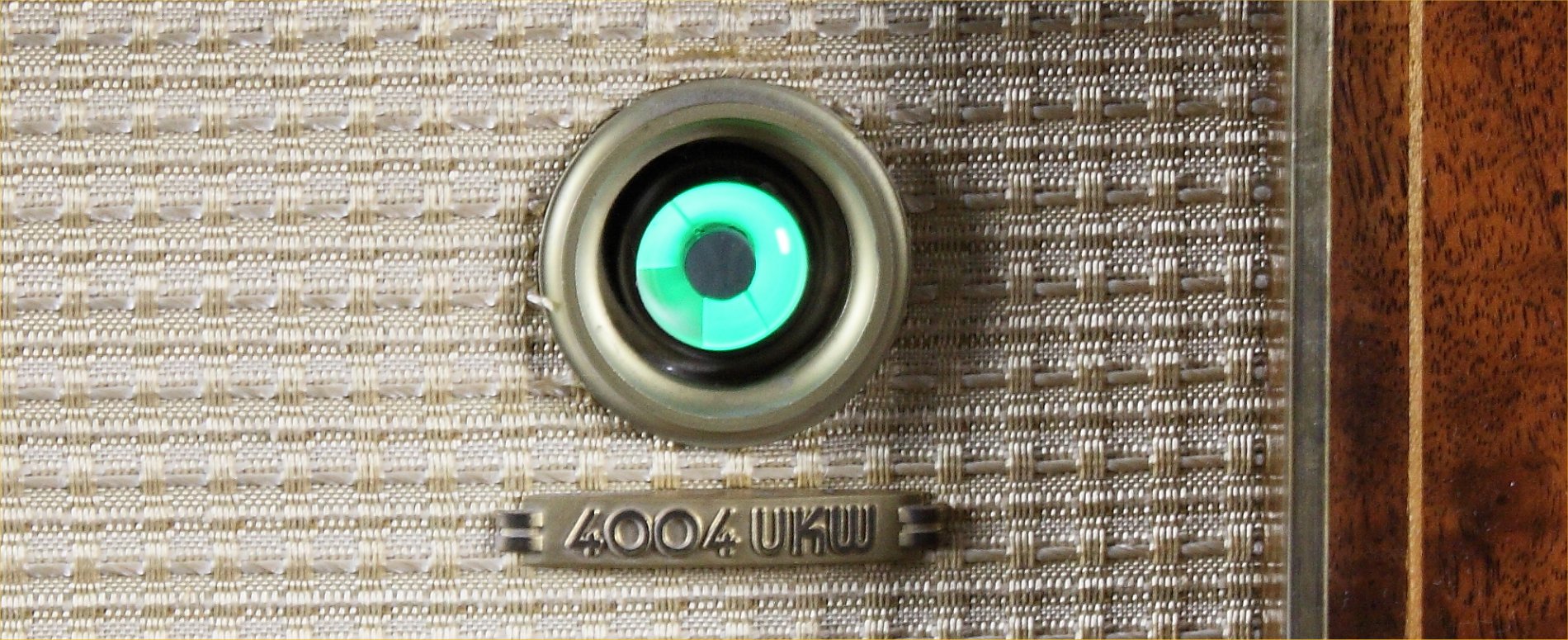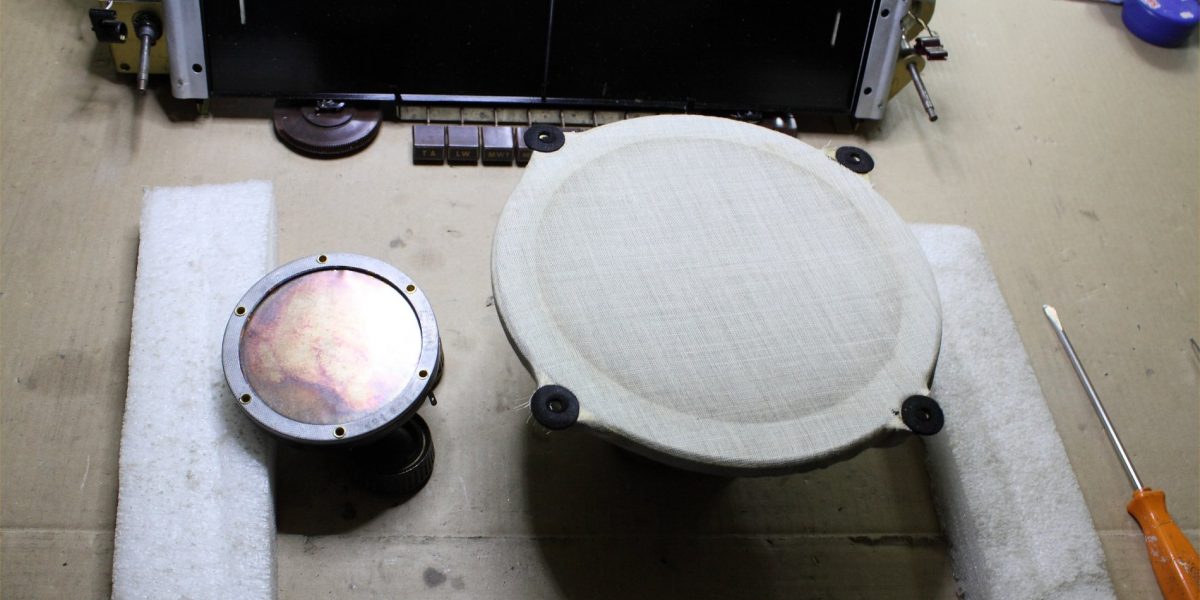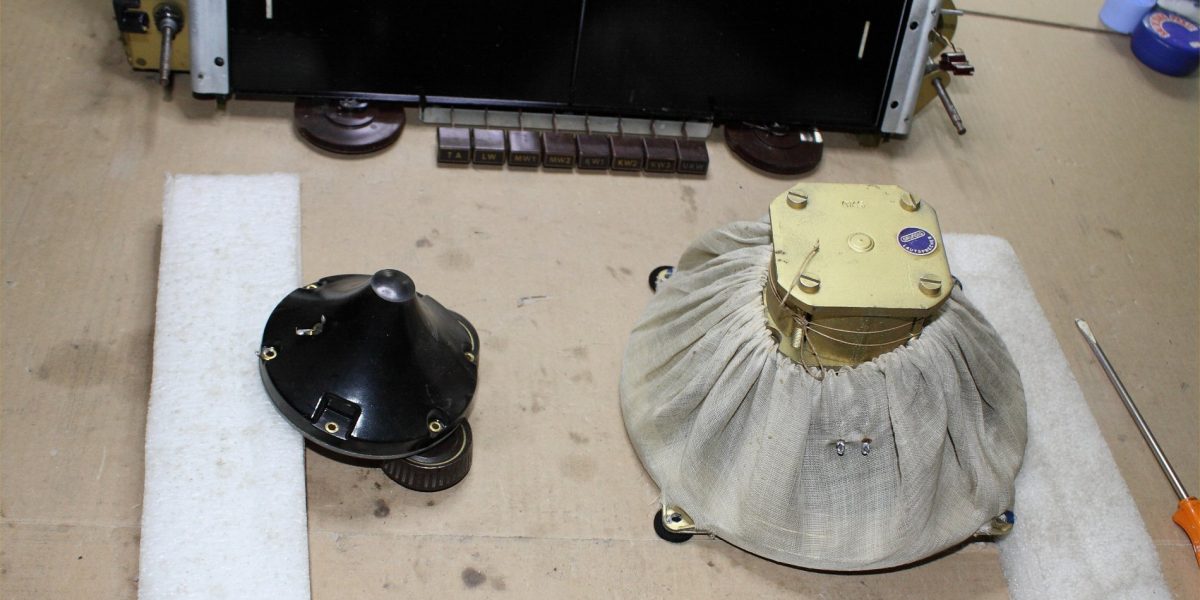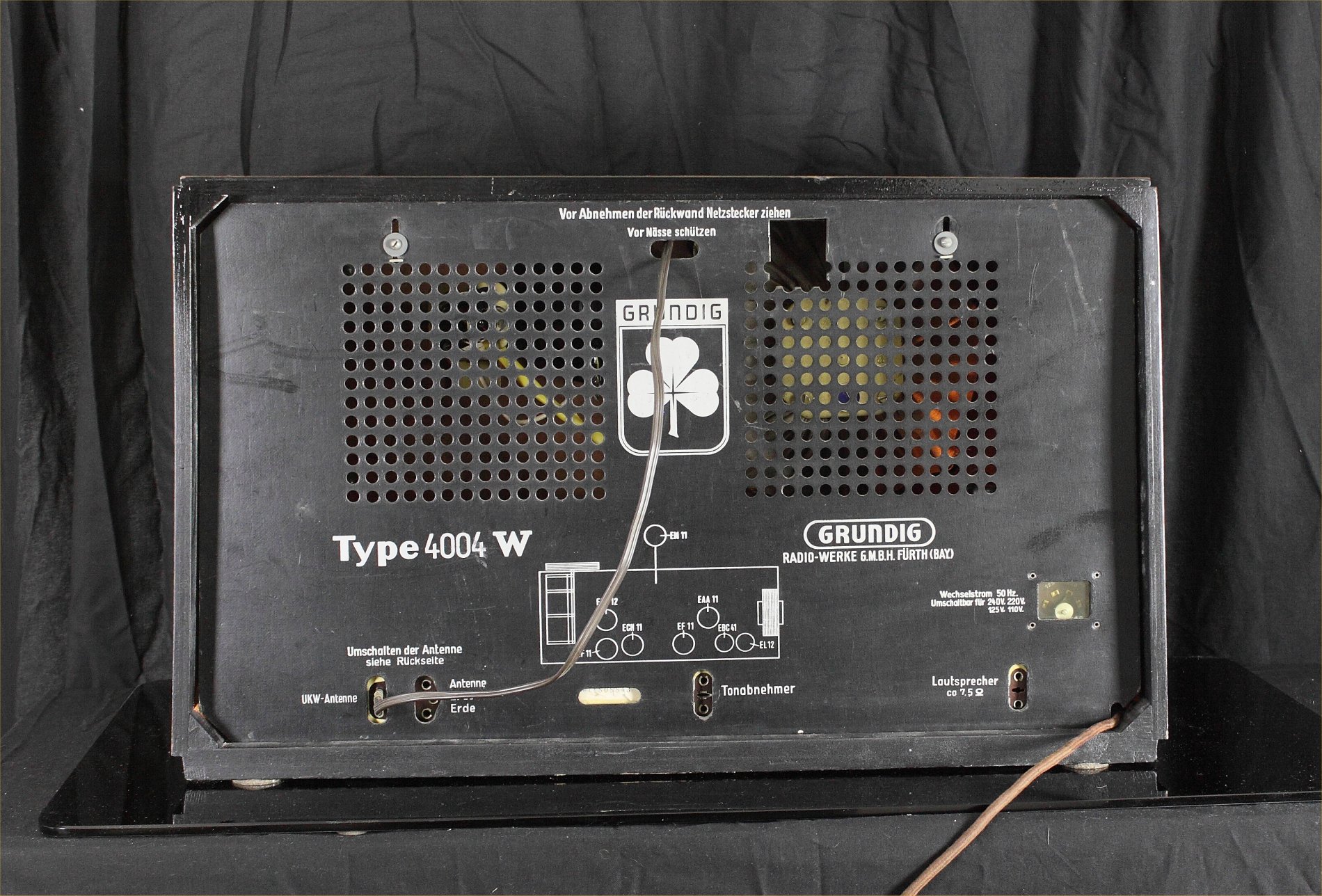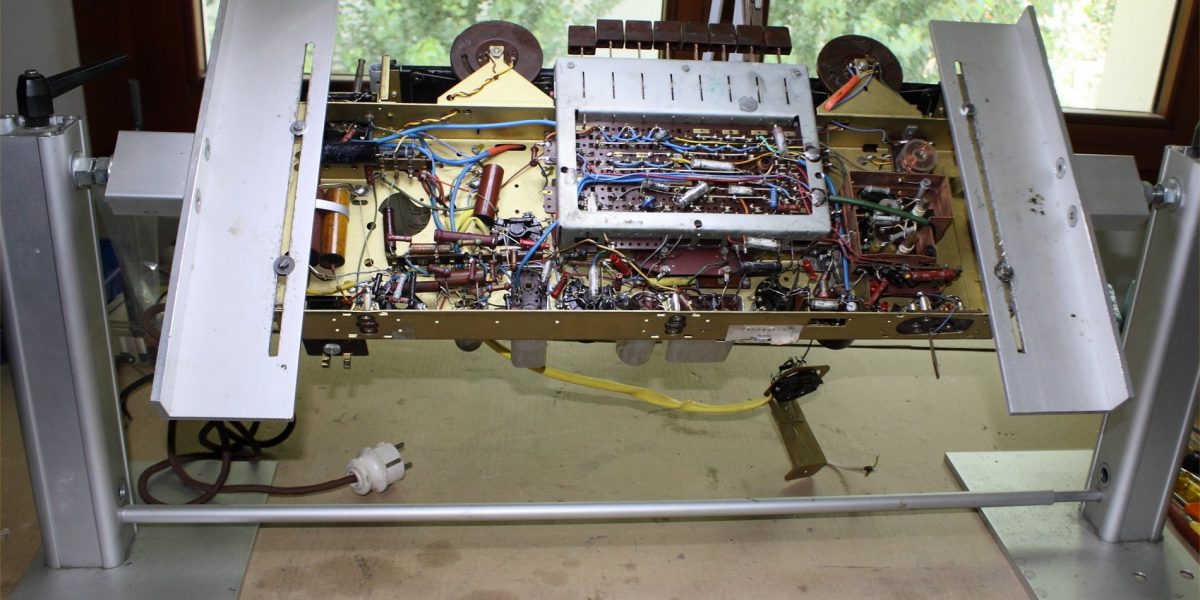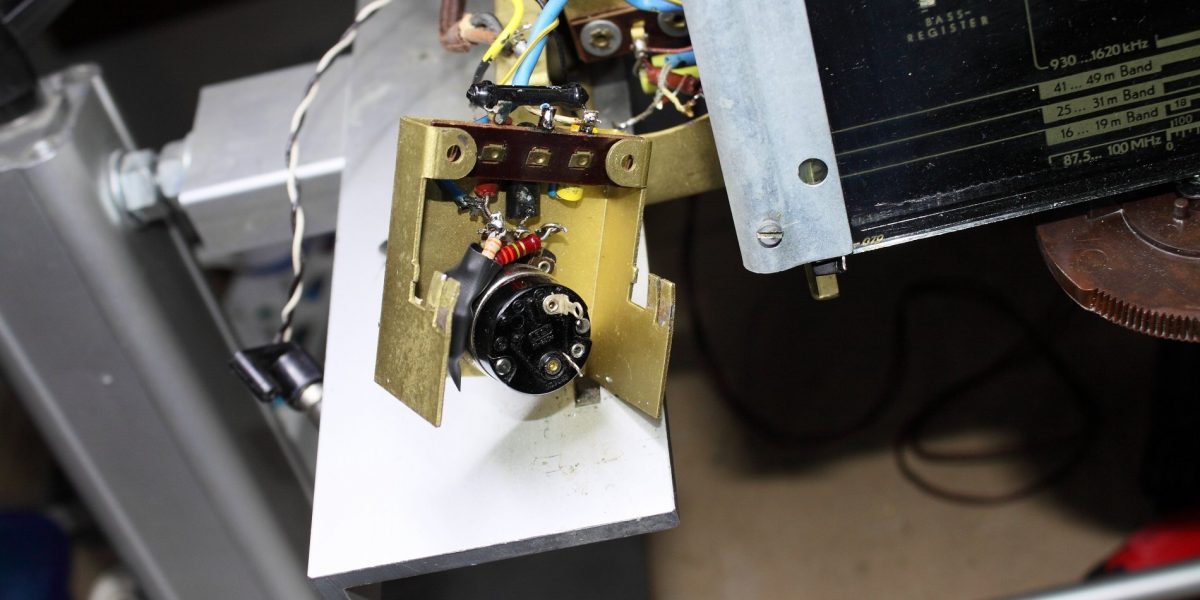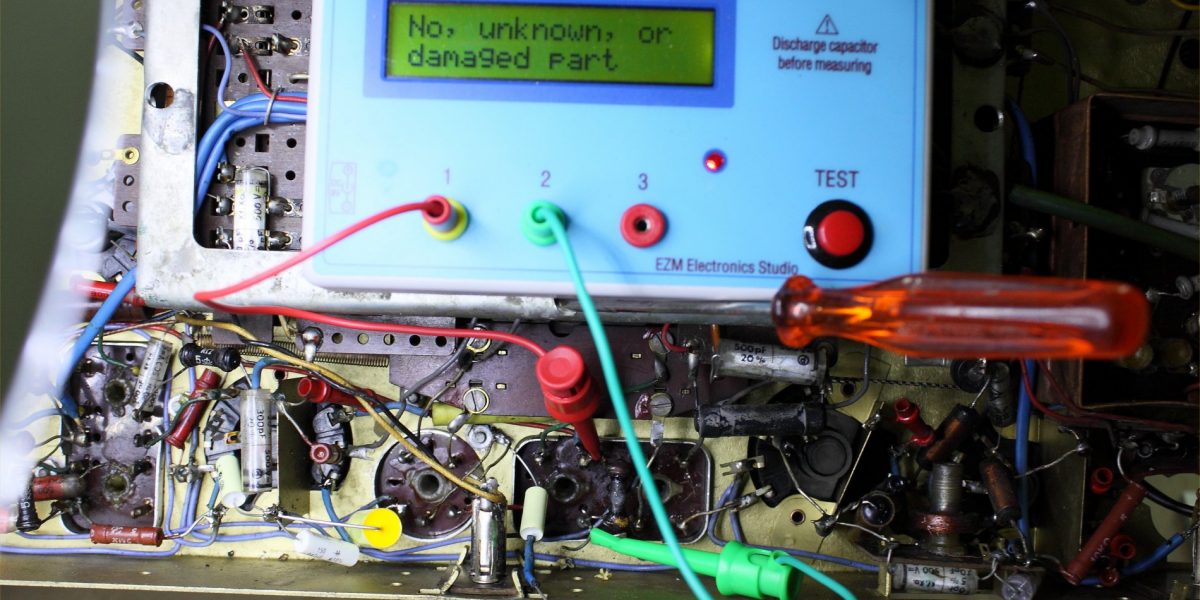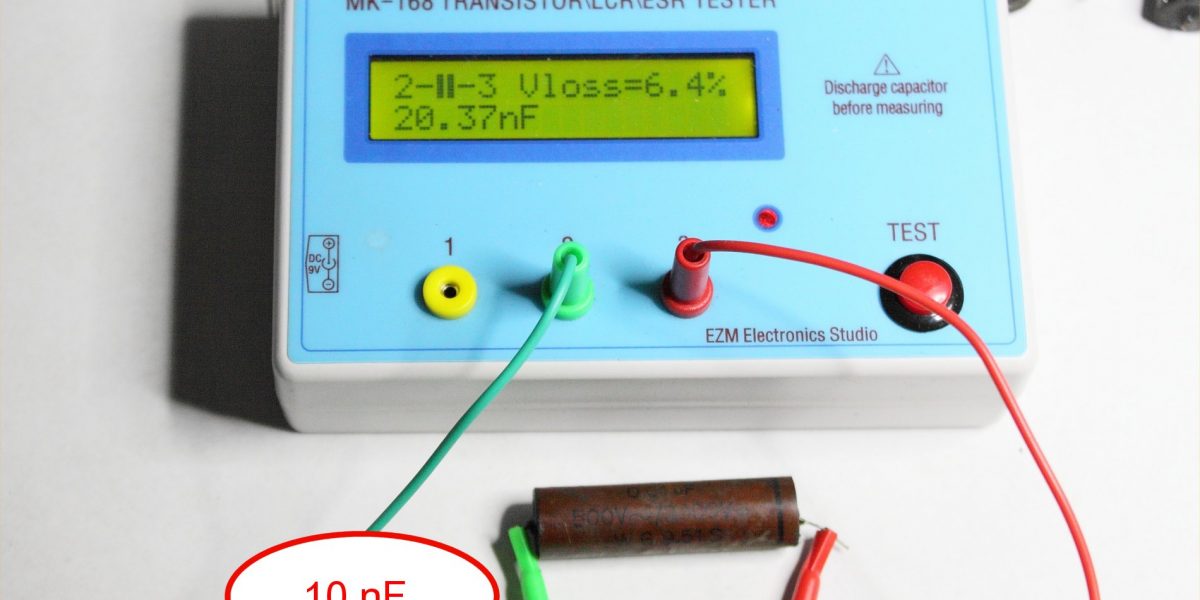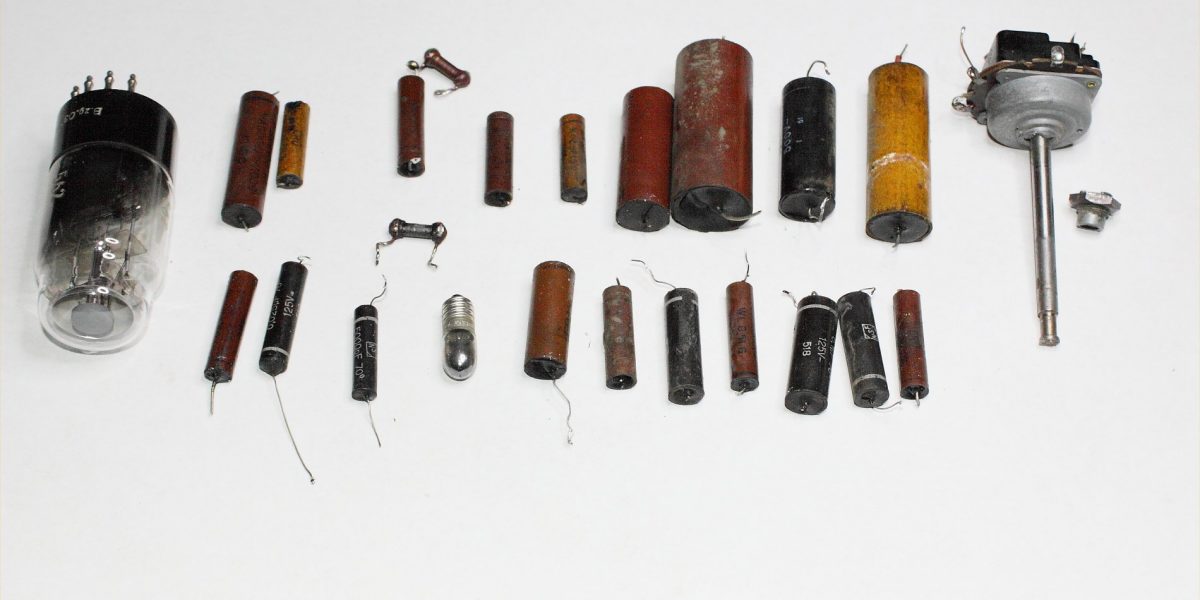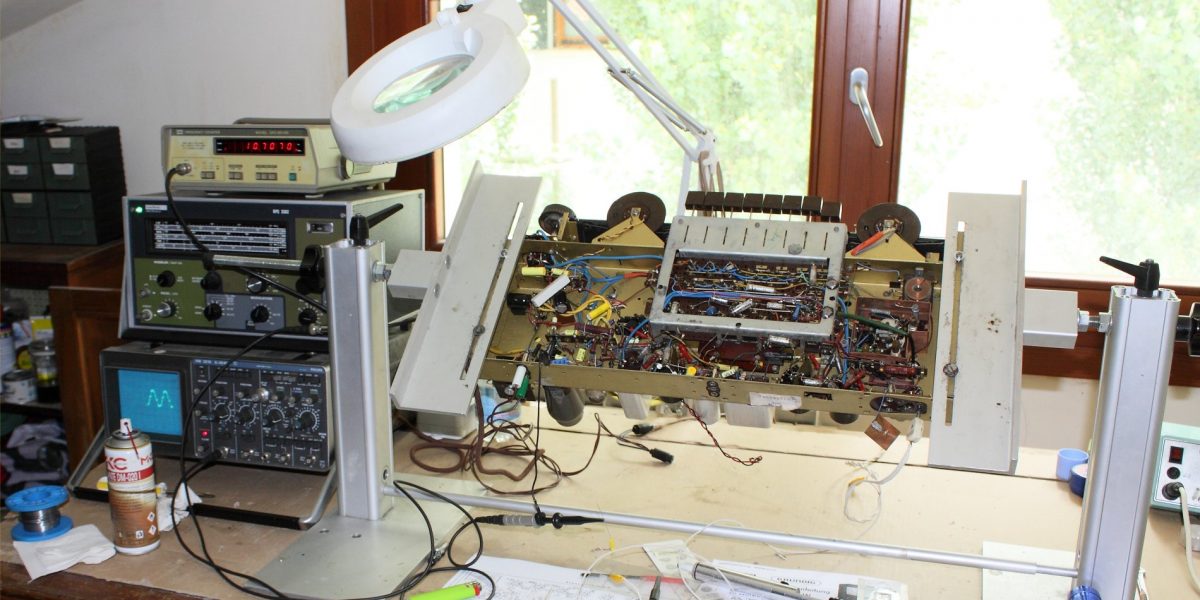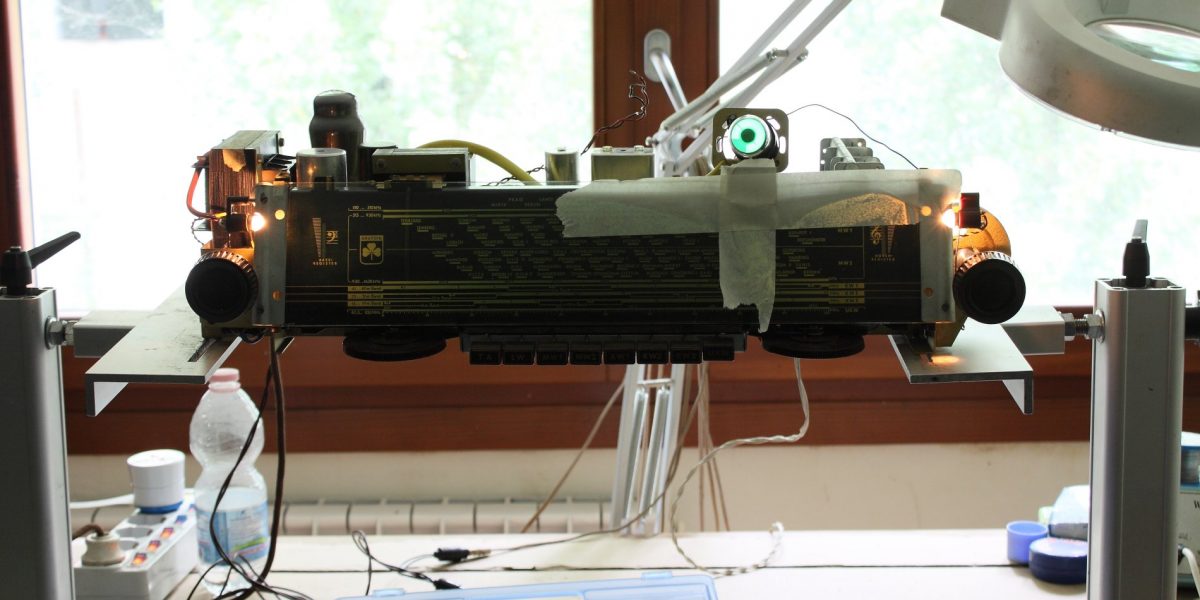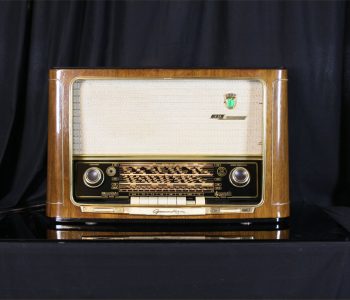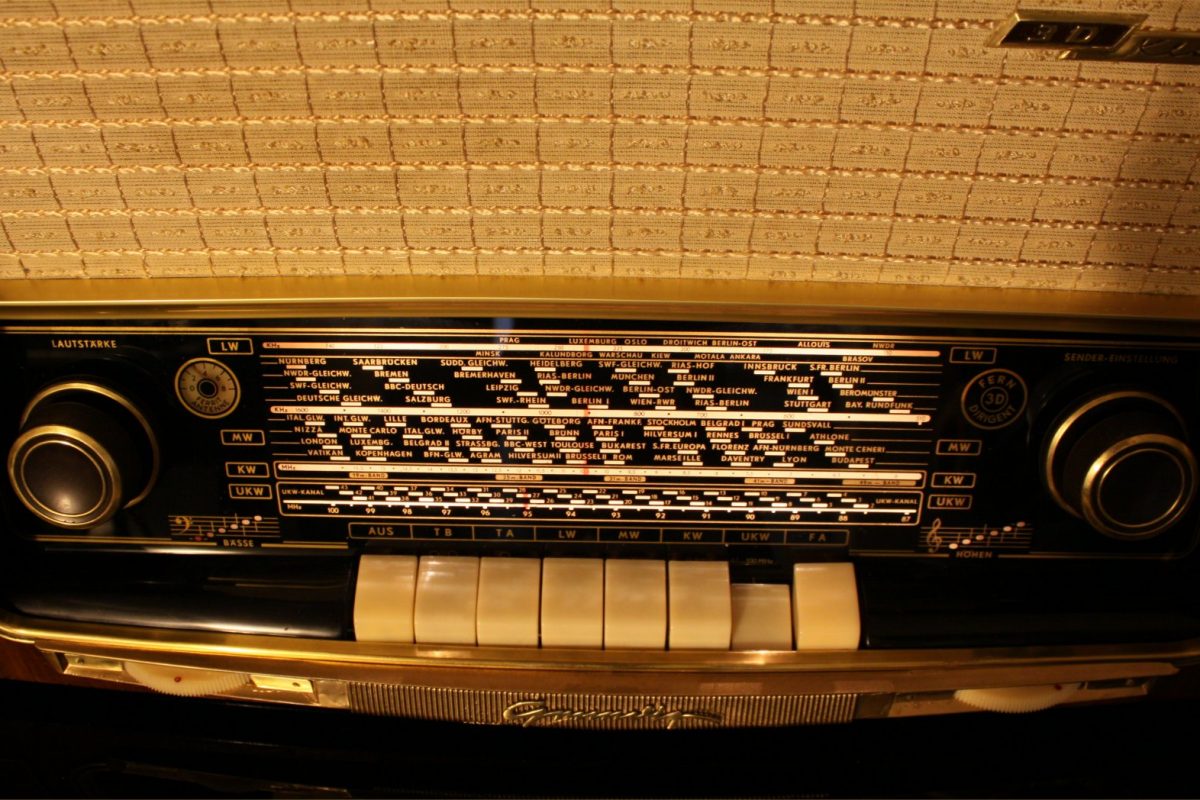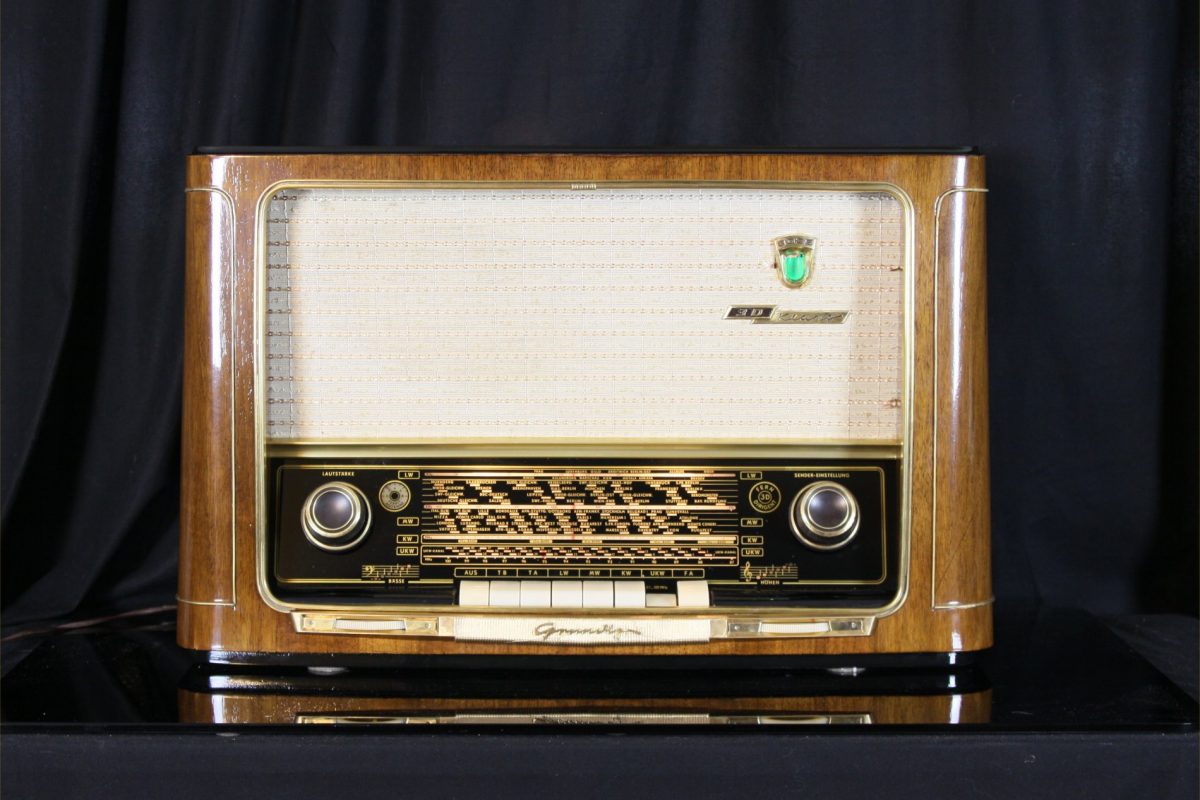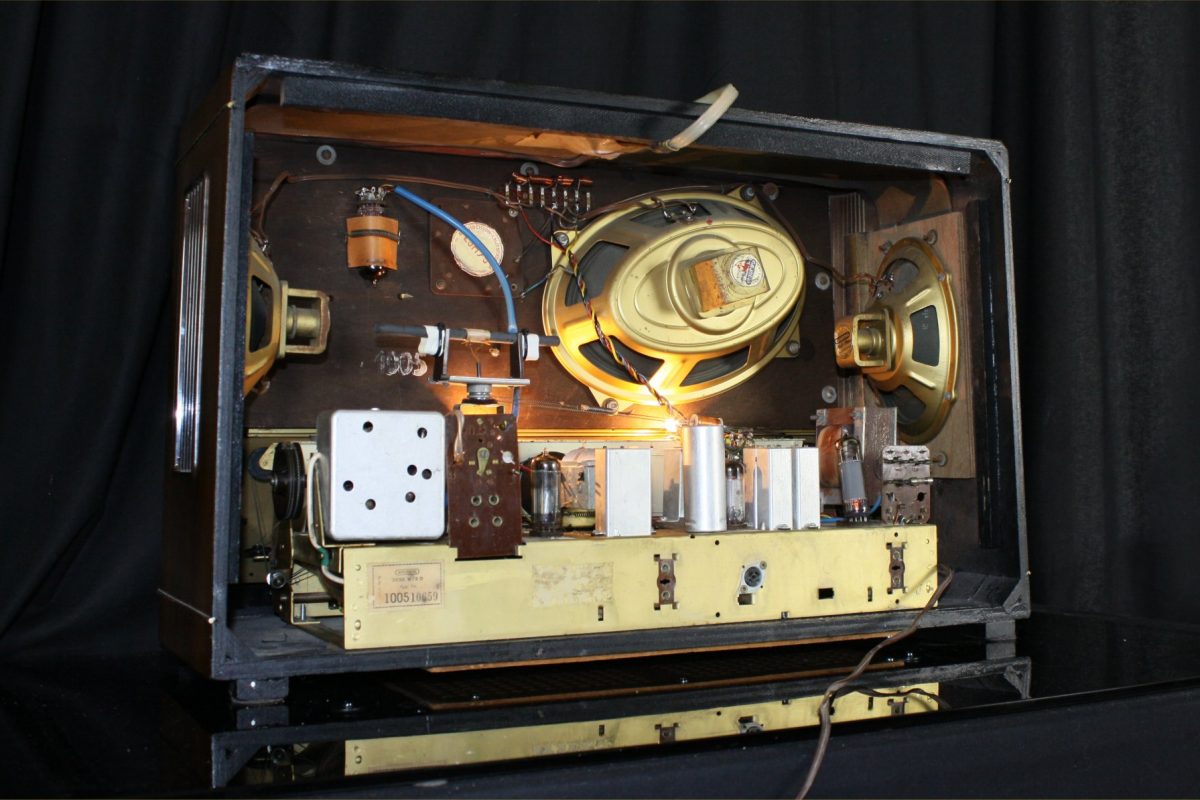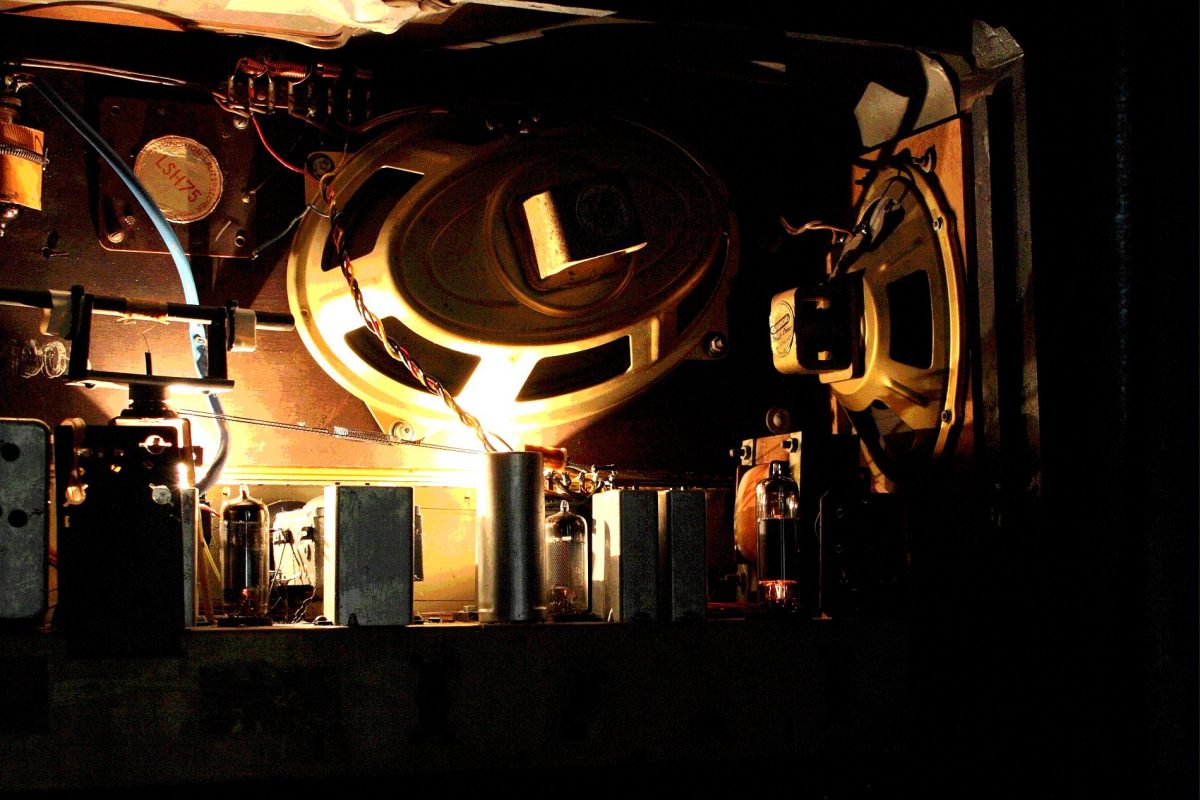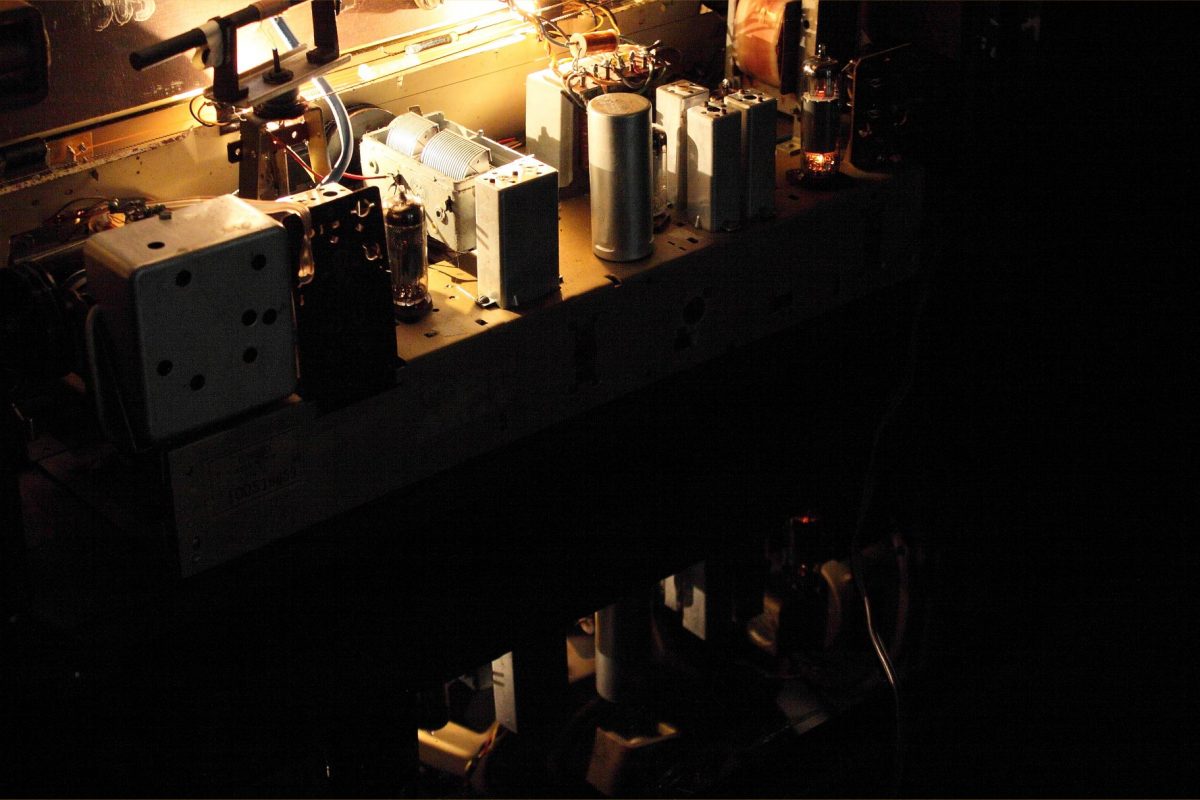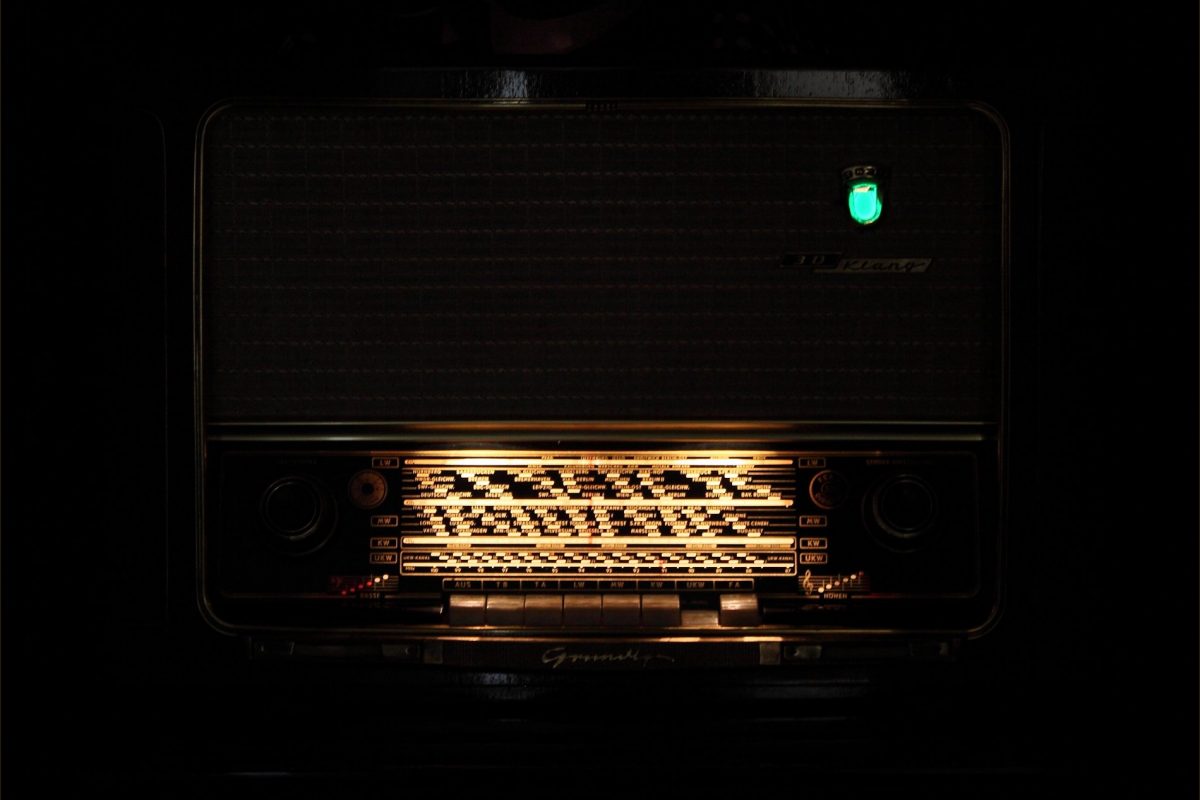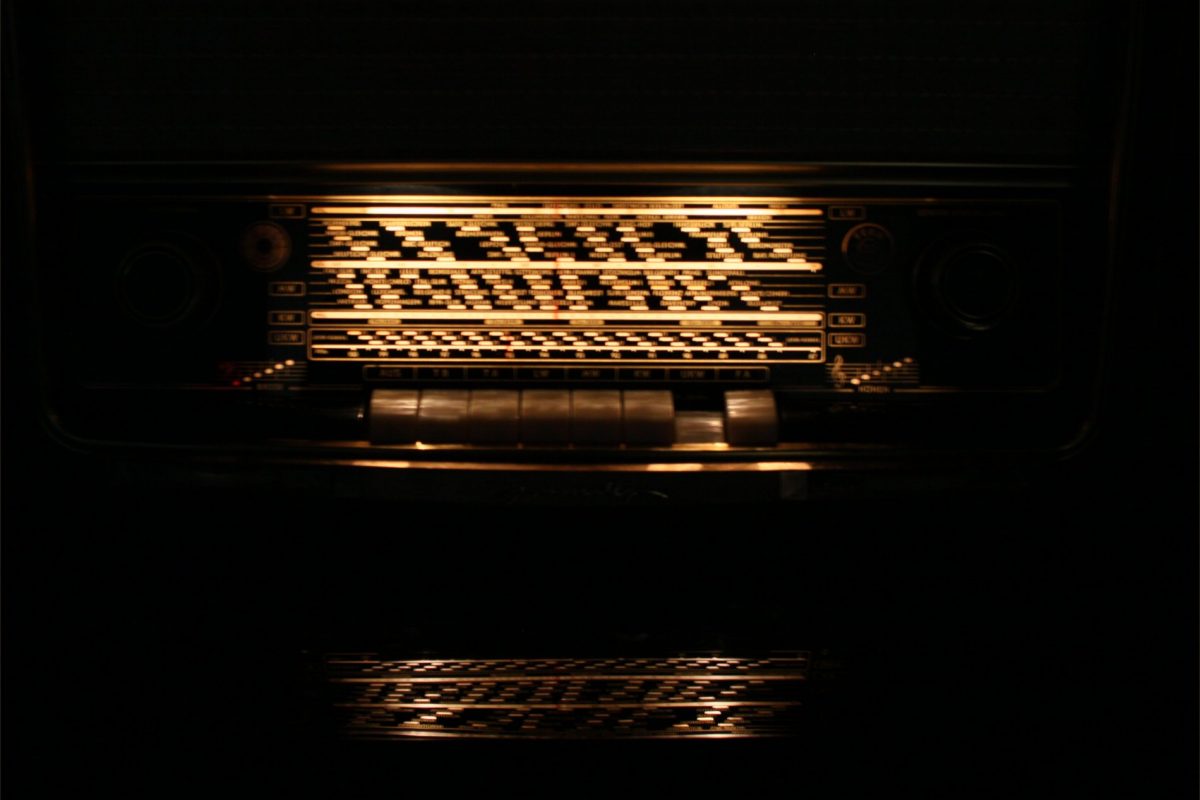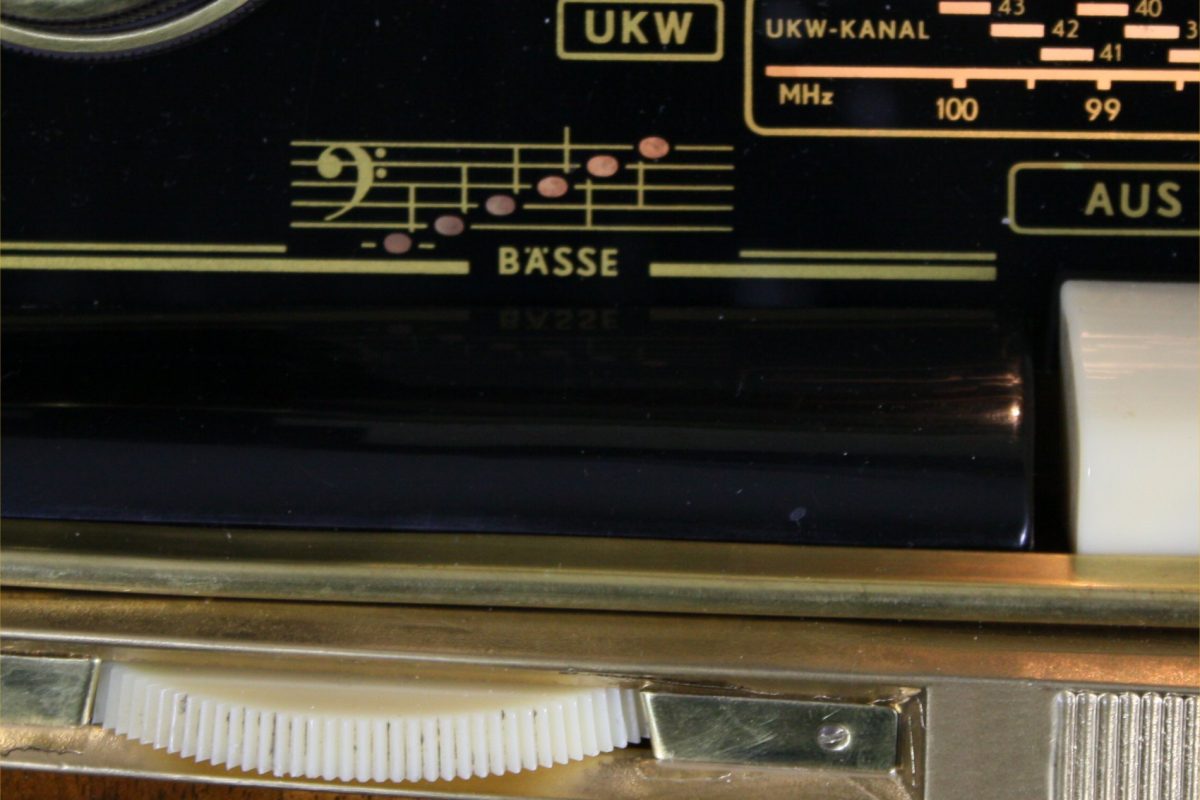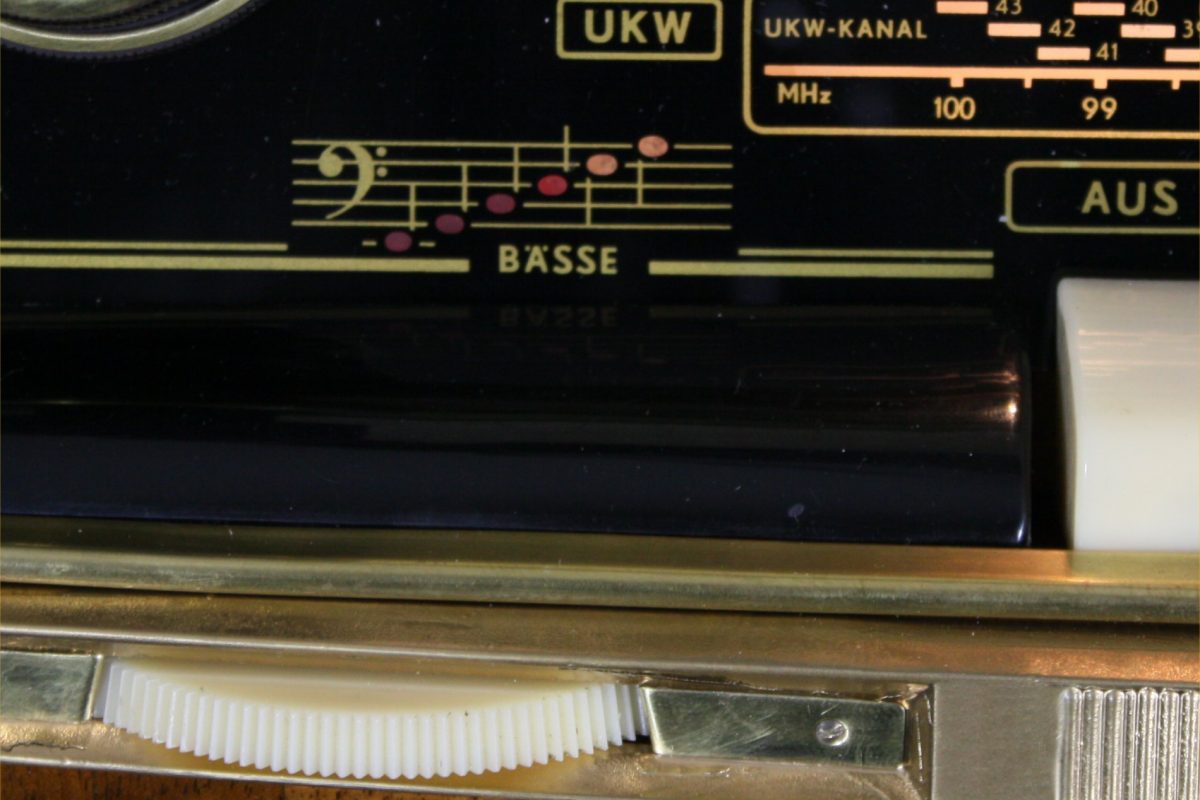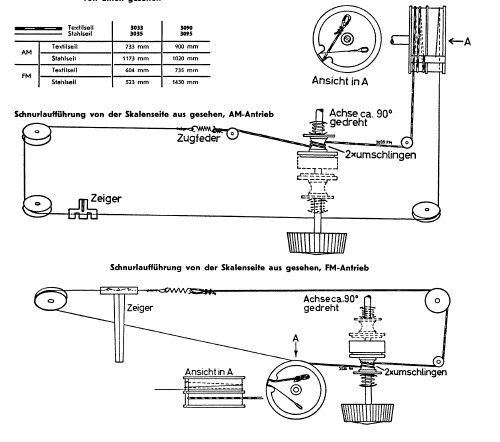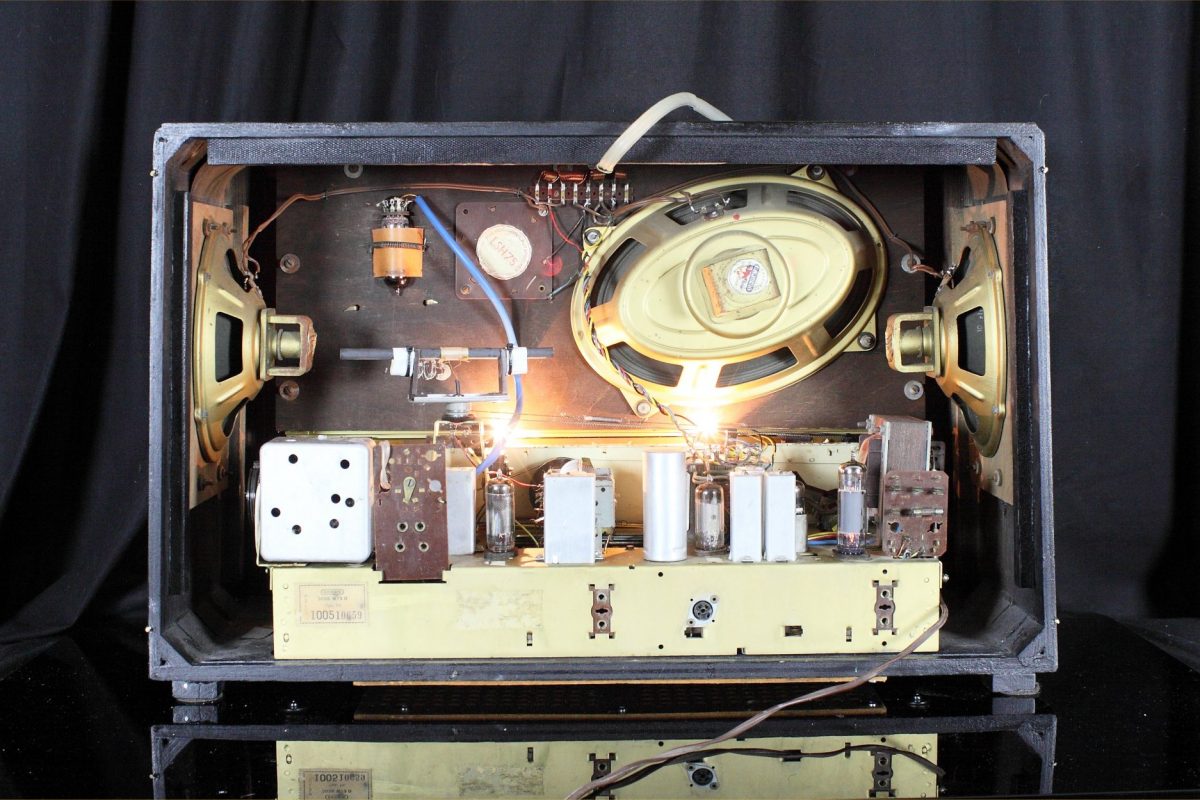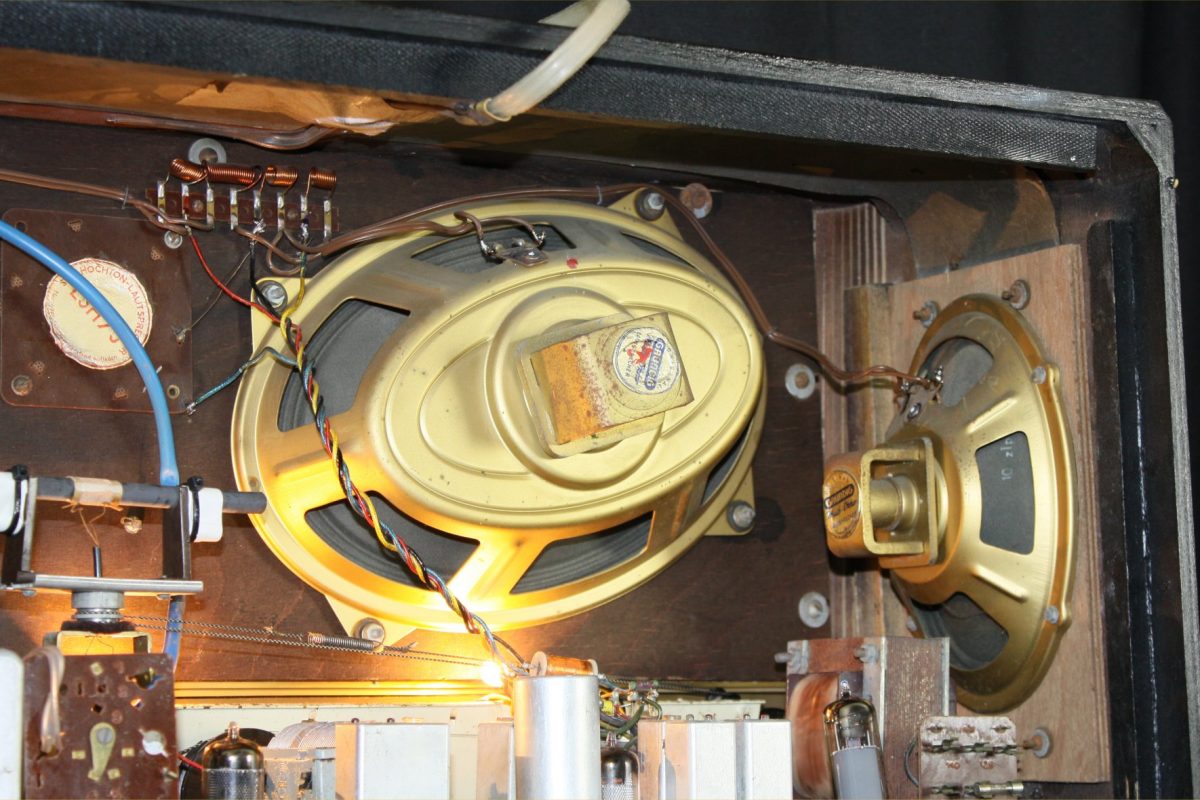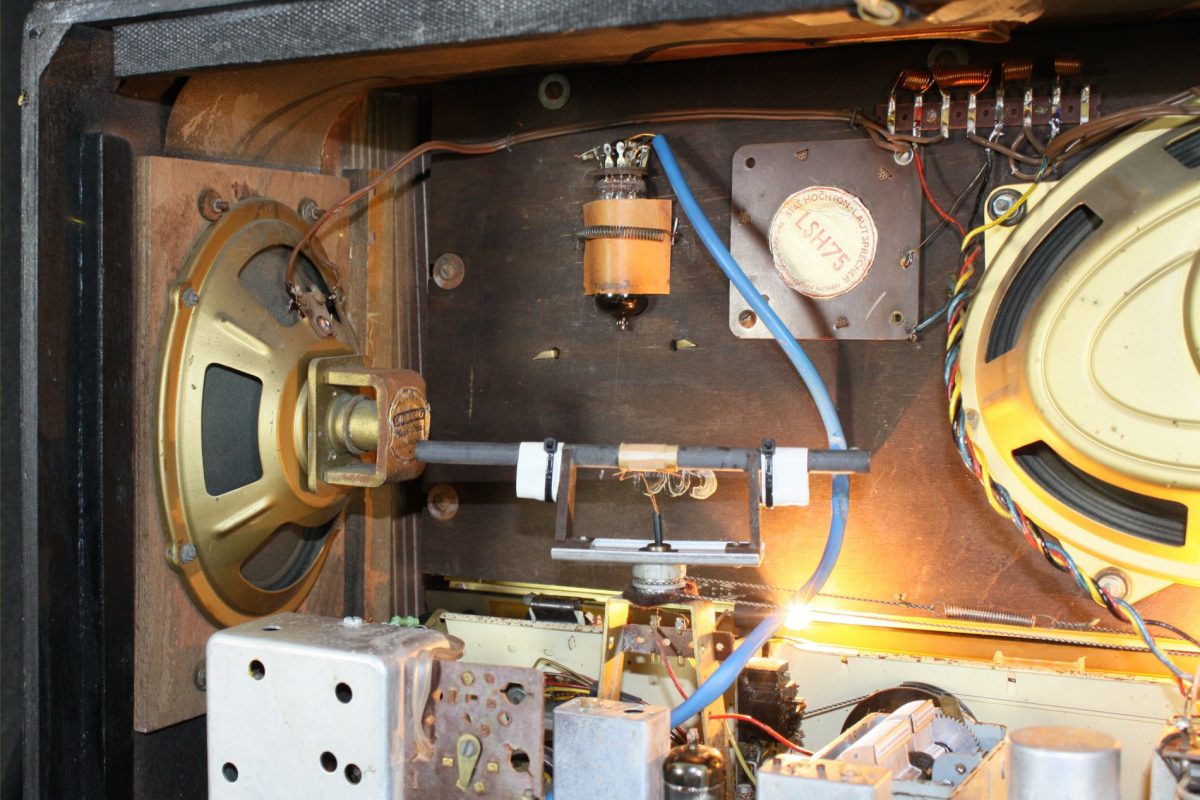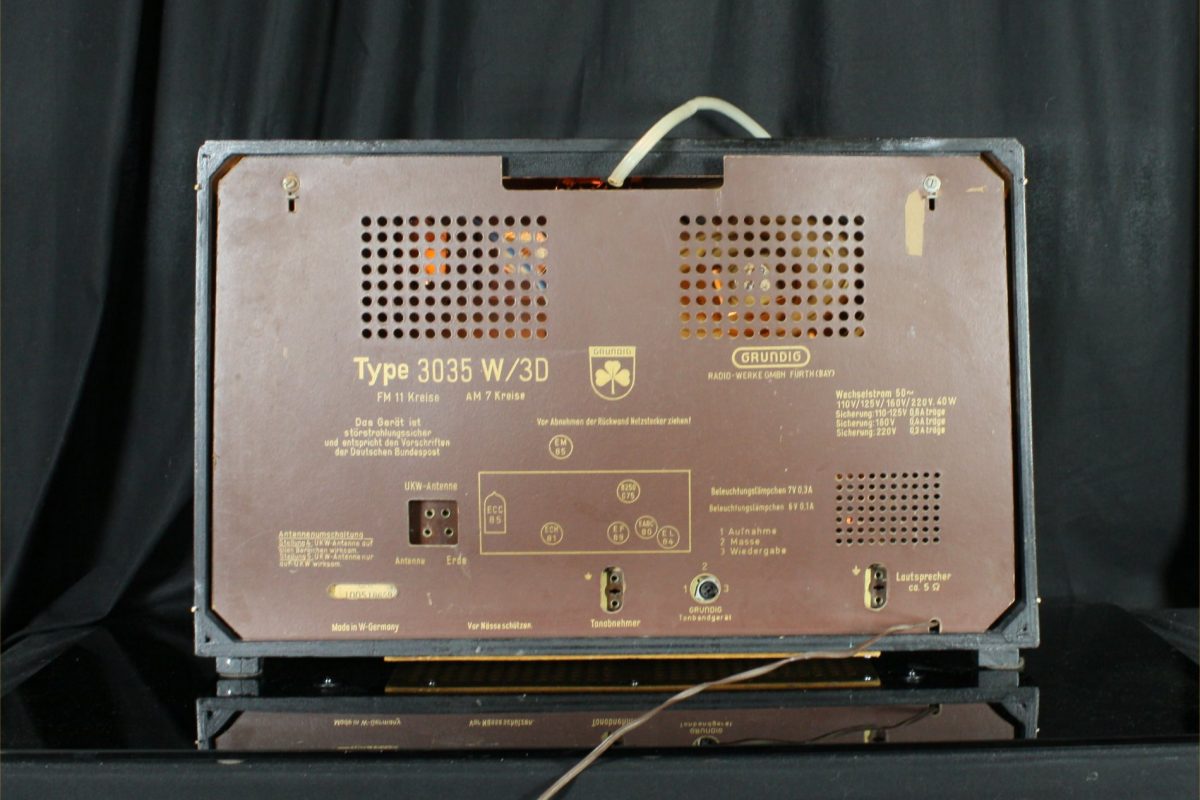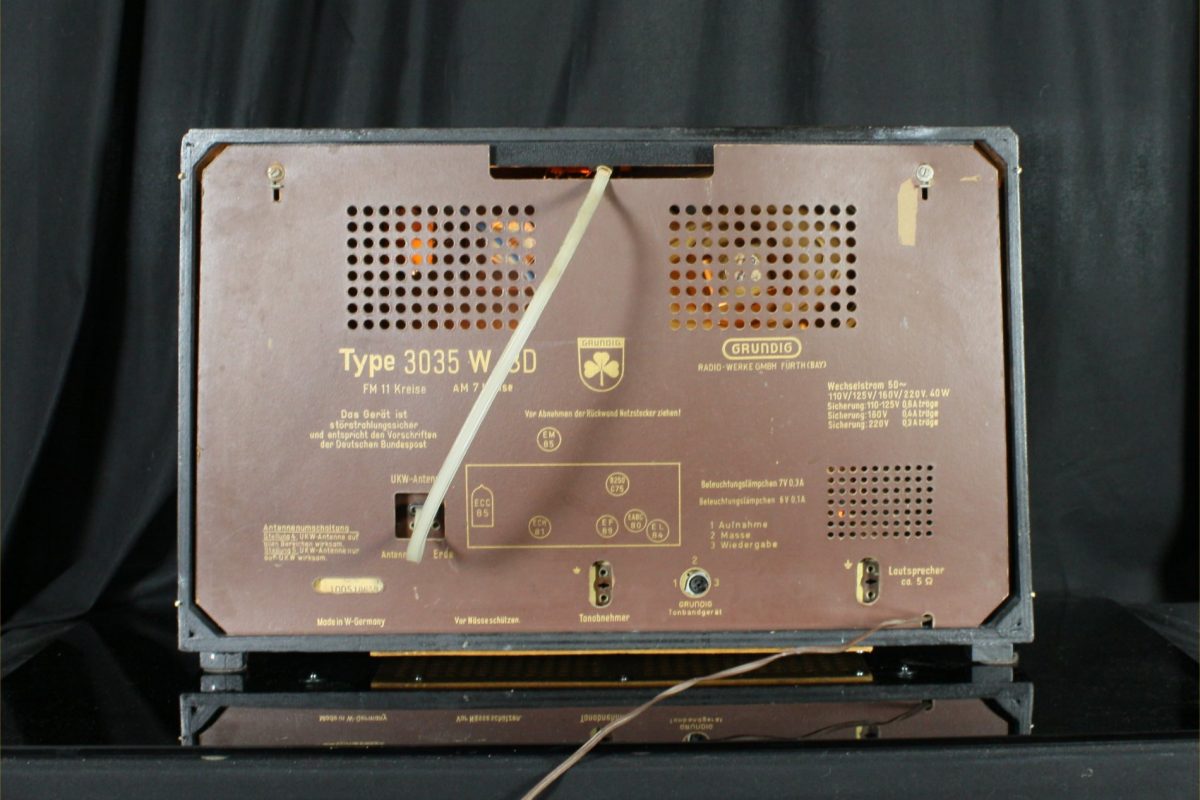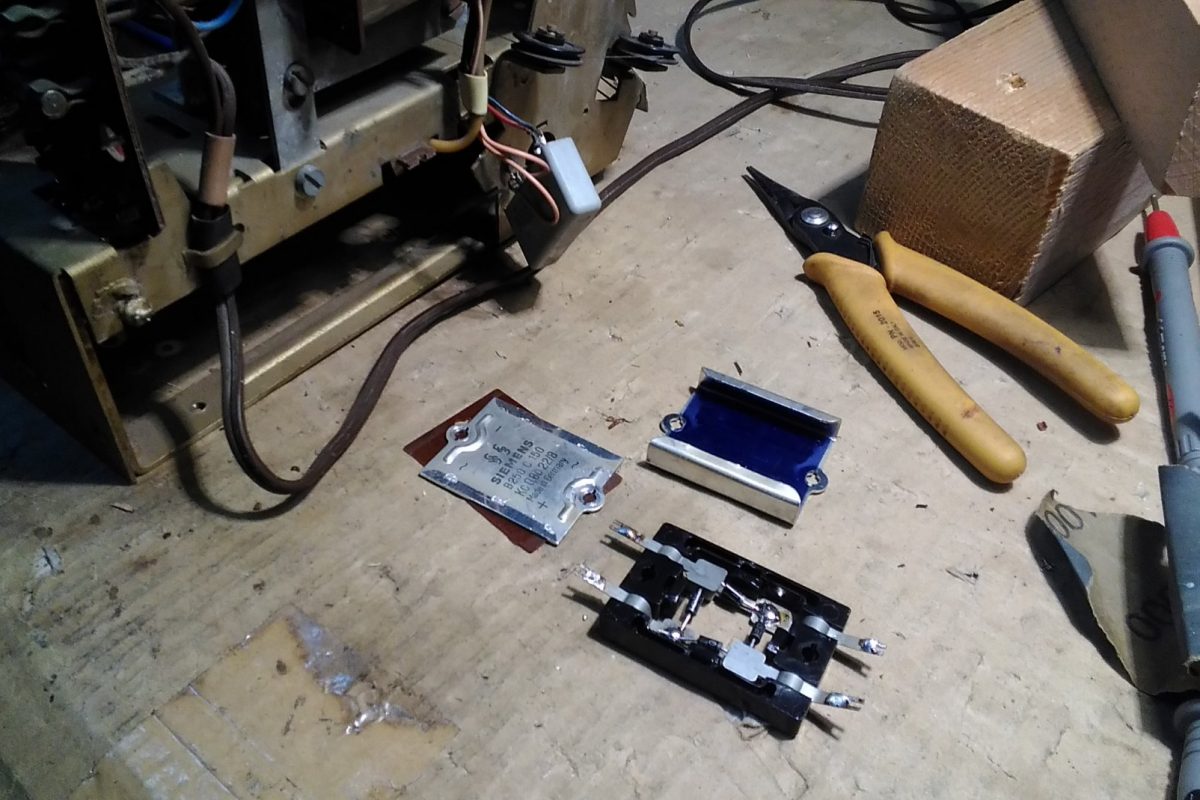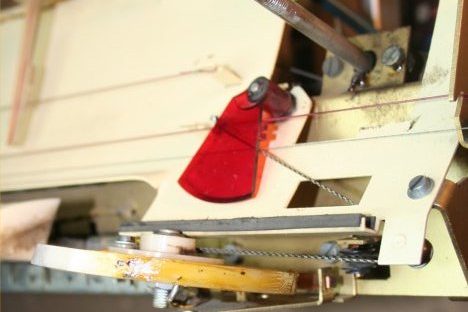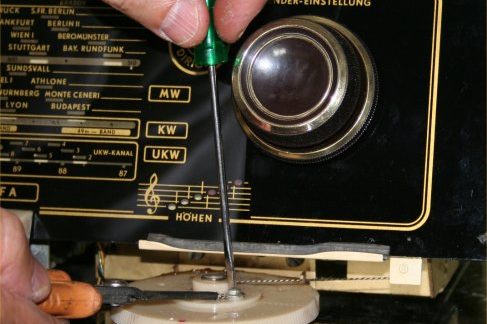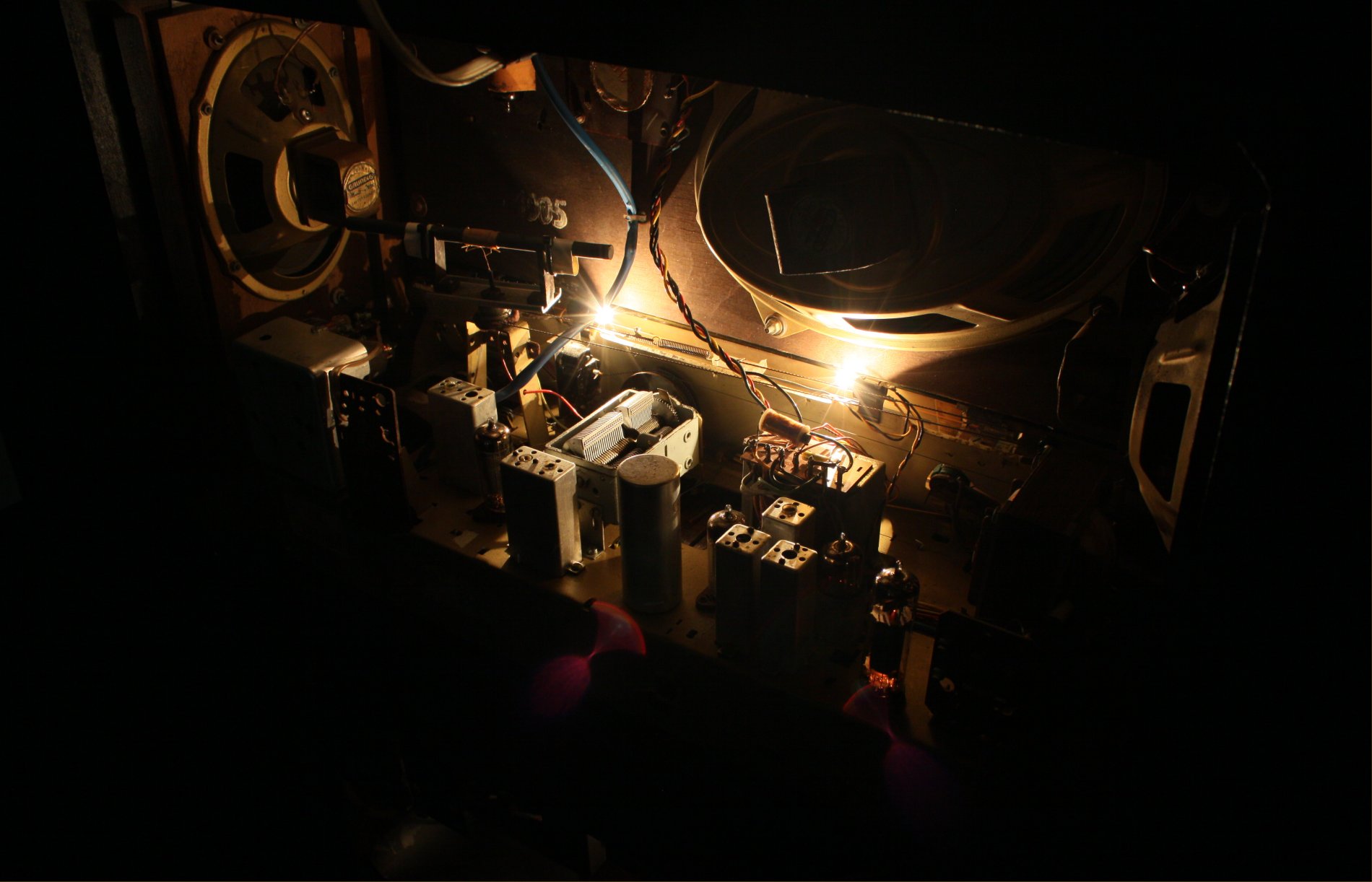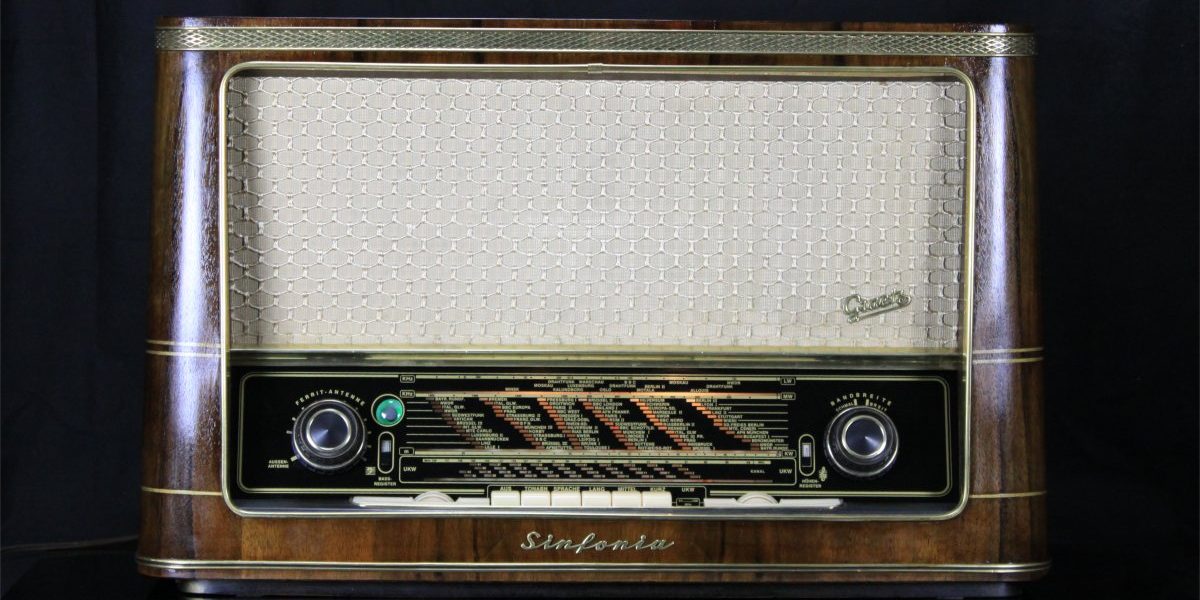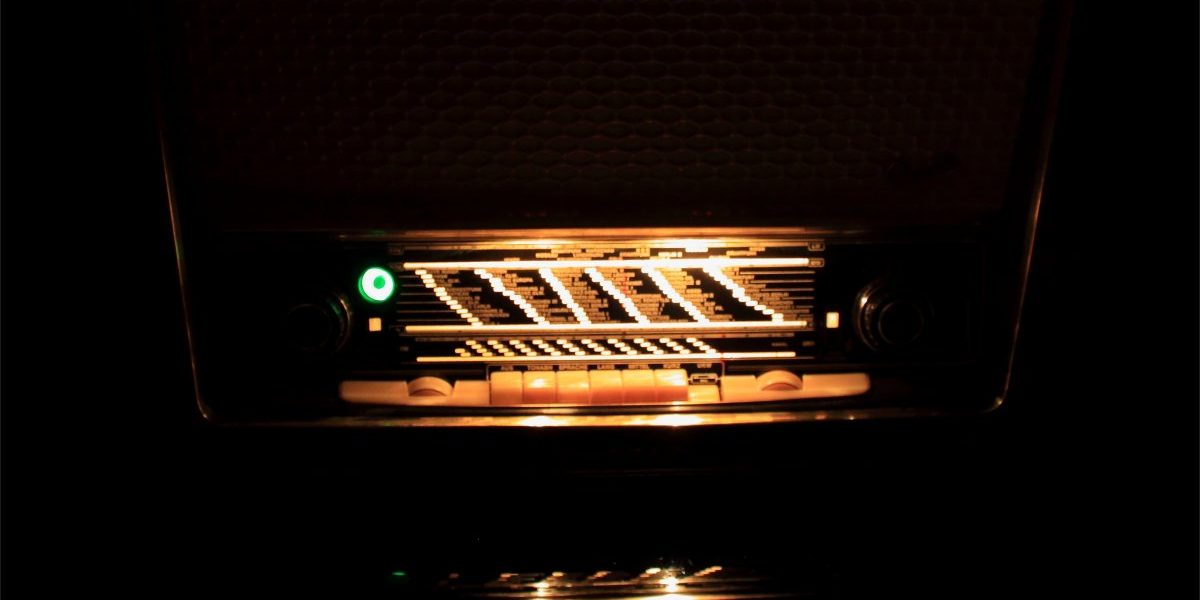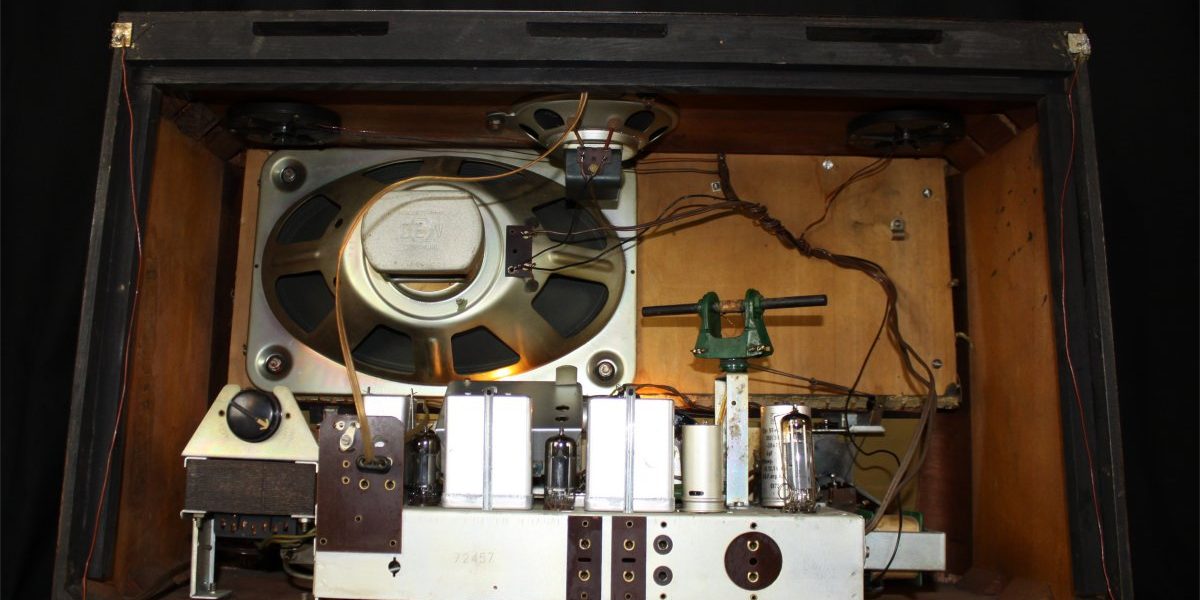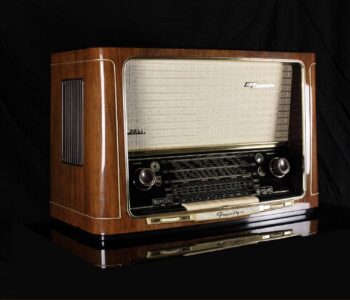 3055 - en
3055 - en
Grundig 3055/56 – en
- by giovanni
Grundig 3055/56 double FM band
Also this reviews will be accompanied by a section with graphs of technical measures of the most important parameters.
There is no such thing anywhere else, as far as I know. Not even the manufacturers themselves detailed the technical features of their own devices at this level.
This new section has been developed for an objective comparison of different devices.
In order to avoid interpreting the measurements incorrectly, it is very important to read the warnings carefully the first time.
The Grundig 3055/56 was the most powerful radio model with a class A amplifier produced by the German company in 1956.
The FM converter stage is particularly interesting. In fact, it is equipped with double amplifier and oscillator circuits that can be selected via two buttons on the front. Furthermore, in the dialglass there are two identical FM bands, FM1 and FM2. Pressing the UKWI button and rotating the tuning knob will move the UKWI scale indicator, pressing the UKWII button and rotating the tuning knob will move the UKWII scale indicator. In this way it is possible to store an FM station in the UKWI band and another FM station in the UKWII band. The Grundig 3055 and 4055 are the only radios in the entire German production of that period to have two FM bands.
Unlike the previous model, Grundig 3055W/3D, the 3055/56 model is equipped with a rear socket for the remote control. The remote control allows you to turn the device on and off, vary the volume and choose one of the predefined equalizations present on the remote control.
The low frequency stage is an excellent example of a Class A amplifier with the famous EL84 pentode with well-known sonic characteristics.
The preamplifier is made up of the triode section of an EABC80. The circuit is classic and very well tested. The high quality of the sound is given by the excellent quality of the output transformer and its considerable size, which together with the good quality of the air gap laminations and the alternating winding of the copper layers reaches saturation very late.
The feedback, as usual, is moderate, and intervenes on the response curve. The resulting sound is very open, with great presence on the medium and high tones and sufficiently damped bass.
The cabinet is very sturdy and free of vibrations and resonances.
The speakers:
There are five speakers, three on the front and two on the sides.
It is a huge elliptical full-range driver and two electrostatic tweeters. On the sides we find two large elliptical full-range drivers.
The entire frequency range is sent to these full-range drivers with a slight cut in the upper part, in reality the actual cut of the upper part is mechanical.
The front canvas covering the speakers is never completely transparent from an acoustic point of view.
For this reason the only way to obtain maximum performance from the appliance is to eliminate it.
We can build a false frame in which the original canvas is installed. This frame attaches to the speaker panel with magnets.
All this translates into an exciting dynamic, brilliance of sound, lack of oscillations of the canvas in the presence of low frequencies, making listening to this beautiful device very realistic and pleasant.
The first song is by Etta James, it is I'd rather go blind recorded live in Montreaux in 1975. Etta James whose real name is Jamesetta Hawkins is one of the most beautiful and famous voices of blues and rock. Also memorable is her "At last" published in 1960. Etta passed away in 2012 due to diabetes and a serious leukemia after having fought for years with health problems and drug abuse. The song was written together with a singer-songwriter from Detroit, Ellington Jordan (Fugi), while the latter was in prison. In her autobiographical book James wrote that the song was about having been blind in her love life and in her daily habits. The version that is proposed here was recorded live in Switzerland, at the famous Montreux festival in 1975. In this interpretation Etta James, already a mature artist, was able to involve the audience by showing off her powerful voice, singing at times even without a microphone, and also exchanging a few jokes with the audience during the song. A true artist.
The second song performed by Chico Barque is entitled O que serà (a flor da pele). This very famous song is by Milton Nascimento (Milton Silva Campos do Nascimento), a recognized Brazilian composer who has collaborated with artists of the caliber of Wayne Shorter, Pat Metheny, Paul Simon, Cat Stevens, Quincy Jones. O que serà is a sweet song, in the classic Brazilian melodic style that tells of falling in love and its inevitable consequences, "What will it be, What happens inside us and what shouldn’t ... Who have no rest, nor will ever have, Who is not tired, nor will ever be, What has no limit". Francisco Buarque de Hollanda, real name Chico Barque is a Brazilian singer-songwriter, politically engaged against the Gorillas regime, exiled in Italy in 1969, he is also a poet, screenwriter and novelist. He also played with Stefano Bollani.
The third song is performed by Louis Armstrong, and is the famous song What a wonderful world. It is a song written by Bob Thiele and George David Weiss expressly for Armstrong. The two, Thiele and Weiss, were not yet very well known and the collaboration with Armstrong was an incredible opportunity for them. It was such a huge success that it overtook the Beatles from the first place in the English charts. In the USA it did not have the success it deserved because it was hindered by the number one of ABC records, Larry Newton, who wanted a swing song in the wake of "Hello, Dolly!" Armstrong was 62 years old at the time, his lips destroyed by the mouthpieces of the trumpet and his heart suffering, Thiele and Weiss created something that Louis could sing with his heart rather than with his voice. The song celebrates the wonders of the world, the beauty of nature and kind people. The song was included in the soundtrack of "Good Morning, Vietnam" directed by Barry Levinson.
The fourth song performed by Luciano Pavarotti and Barry White is the equally famous You'r the first, the last, my everything. Peter Sterling Radcliffe, a friend of White, wrote it in 1956 in a country style, calling it "You're My First, You're My Last, My In-Between". When White heard it, in 1973, he immediately liked it. While keeping almost all the chords, he changed almost all the lyrics and the melody. White had worked as the manager of the female trio "Love Unlimited" in the 60s and 70s. From 1972 he began recording under his own name. "You'r the first, the last, my everything" was released in 1974, on the album "Can't Get Enough" and was an immediate success. Pavarotti's splendid voice made it even more enjoyable.
-
BLUETOOTH
Bluetooth receiver embed
-
MULTI PLATFORM CONNECTION
Each radio is equipped with a cable for connection to any digital device.
TUBESOUND IMPROVEMENT
– Bluetooth receiver embed – The unit is equipped with a BLUETOOTH receiver powered directly by the receiver power supply. This makes it possible to control the amplifier from any external digital device as an IPAD, a Smartphone, or a sophisticated multimedia station. So you can hear your preferred web station or your lossesless file without cables on the room. Wireless Receiver can be equipped upon requests.
– Multi Platform Connection – A customized adaptation cable to connect any digital device as Iphone, Smartphone, Laptop, CD Player etc. will be provided with this radio. This special cable suits the different impedances between the modern equipment and the receiver. Furthermore the two stereo channels flow into one without increasing the load to the input unit.
HISTORY
1930 - At 22 years old Max Grundig begin a radio repair business.
1939 - The II world War start. Grundig works primarily for the Wehrmacht and repair of telecommunication equipment.
1945 - Immediately after the war, the demand for repair work was very great. Max Grundig built the first two Grundig appliances: the Tubatest tube tester and the Novatest testing device.
1947 - Start the sale of a kit radio, the Heinzelmann. The unit is the basis of success, sold more than 15,000 pieces.
1950 - Very high frequency (VHF) is introduced to Germany and places new demands on the industry. Grundig launches the 380 W on the market.
1952 - The first television channel starts up in Germany. After intensive research, Grundig launches the FS 080 onto the market. In the same year the first portable tape recorder Reporter 500 L is created.
1956 - After a lot of radio produced with progrssively high performances was produced the Concert Radio 5080 equipped with an equaliser, which has five controls and a visual display.
1965 - A new factory is established in Braga, Portugal. The Satellit 205 is one of many appliances in the Satellit series. This product marks the beginning of Grundig production of high-quality global receivers.
1970 - The Audiorama 7000 Hi-fi was produced, it has twelve dynamic speaker systems in one speaker.
1976 - The Reel Tape Recorder TS 1000 is equipped for semi-professional use.
1980 - The slim-line Hi-fi Tuner ST 6000 and the Monolith Hi-fi Dynamic Flat Top Antenna, which has 22 speaker systems, are two particularly popular appliances in the new hi-fi range.
1984 - After severe drop in sales Philips increased its stake in Grundig 31.6 percent and takes over the corporate management.
1997 - Philips pulls out of its involvement with Grundig.
2003 - The company files for bankruptcy.
2008 - Turkey's Koç Holding took full ownership of Grundig Multimedia B.V., the parent company of Grundig Intermedia GmbH in Nuremberg.
Courtesy of: Grundig
MAIN FEATURES
Year of production: 1956
Superheterodyne IF 468/10700
8 AM circuits
12 FM circuits
Wavebands:
Medium wave (MW), Long wave (LW),Short wave, FM1 (UKWI), FM2 (UKWII)
Loudspeakers:
1 elliptic wideband
2 electrostatic Tweeter
2 cone Mid/Tweeter
Dimensions (LHD): 660 x 430 x 280 mm / 26 x 16.9 x 11 inch
Net weight: 15.9 kg / 35 lb 0.4 oz
7 Tubes: ECC85 ECH81 EF89 EBF80 EM34 EABC80 EL84
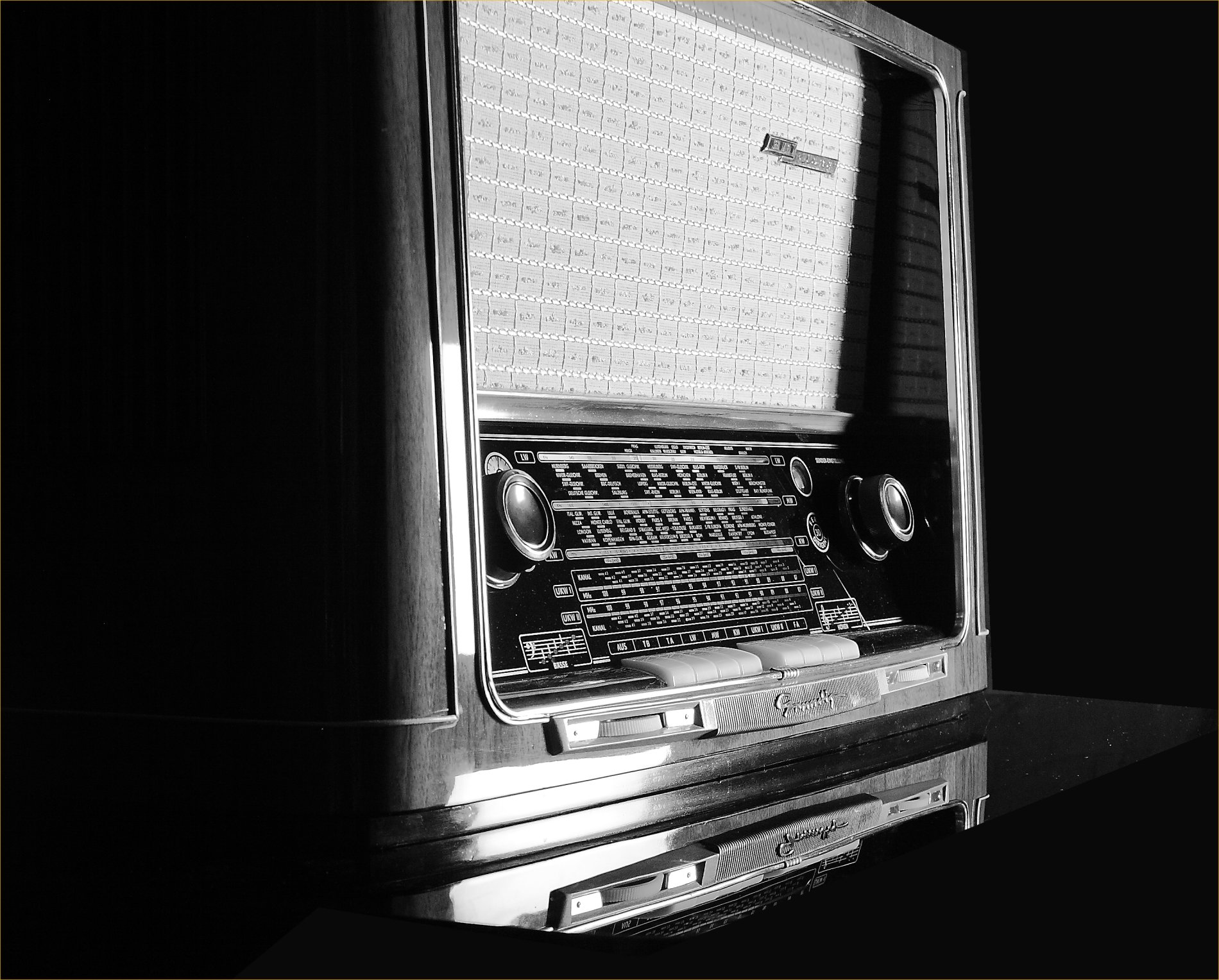
MEASURED TECHNICAL FEATURES
IMPORTANT REMARK
(to be read carefully at least the first time)
- The following measures have been carried out in order to compare, from an electrical point of view, the devices that will be reviewed on this site. It is not possible to make comparisons with measurements made by other laboratories on different devices. The instrumentation and measurement conditions are probably very different.
- The instrumentation used for the measurements is obsolete and unprofessional. We believe that more precise instrumentation is not necessary due to the tolerances of the human auditory system. Distinguishing a distortion of 1% from one of 1.1% or 1.001% only makes sense from the electrical point of view. Probably no one can hear the difference by ear. Only a child and very few lucky people can perceive the difference between a flat response curve up to 16 KHz and one up to 20 kHz.
- The perception of sound depends on many factors, namely the age of the listener, the listening environment, the musical genre that is being reproduced, the listener's expectations, his or her listening habits and knowledge and many other factors, besides of course the quality of the other devices. Therefore, there is no direct and unique relationship between the results of the measurements made and the pleasantness of listening to a specific device.
BANDWIDTH
Normally the measurement of the bandwidth is done on a resistive load. Therefore, the deformation caused by the loudspeakers' inductive load and the effect of the mechanical resonance of the speakers themselves on the feedback circuit are not considered. The effects are by no means negligible, the measurements carried out on a purely resistive load are always very linear but they don't coincide with the real frequency response.
On the other hand, this response curve was measured on an inductive laod, that is, with its own loudspeakers.
The frequency response measurements were made with a sinusoidal generator and a Wandel & Goltermann WM – 20 level meter.
You can see the actual frequency response on the vobulator' screen.
RMS POWER
he lower of the RMS voltages measured at the three sample frequencies divided by the load resistence.
The measurement conditions are the following:
- sample frequencies, 100, 1000, 10,000 Hz
- 8 ohm resistive load
- distortion less than or equal to 1%.
The measuring instrument provides the RMS value directly.
The measured RMS power is 3,3 W
INTERMODULATION DISTORTION %
The Intermodulation Distortion % was measured with the SMPTE standard and measured at 1W RMS.
The two measurements were carried out by modulating the 50 Hz sine wave with a 1080 Hz sine wave and then with a 10400 Hz sine wave, with an amplitude in a ratio of 1/4 compared to the basic sinusoid.
The output voltage was kept around 2.83V on an 8 ohm carico.
The measured Intermodulation Distortion % (IM%) is 0.15%
TONE CONTROL WITH LEVEL INDICATION
AERIALS
Inside the cabinet there is a dipole for FM reception and a ferrite rotating aerial for AM reception.
Ferrite aerial can be rotated from the outside to achieve a perfect tuning of the device in the AM.
In this picture you can see the rotation mechanism, and the aerial position indicator.
The reception sensitivity with internal aerials is very good. This unit was in fact produced when there were not many radio stations, and those available were far from each other.
Using an external aerial sensitivity is further increased.

FERN-DIRIGENT
Connection for remote control (fern-dirigent) which allows you to control the ignition, volume and equalization.
Below, on the right, you can see the "remote control" diagram.
It is not easy to find, very few have been sold in Italy, the price of the (fern-dirigent) ranges from €350 upwards.
1 - Volume control (with built-in loudness)
2 - Ferrite antenna rotation control.
3 - The bass control knob
4 - Switching off
5 - Recorder
6 - Turntable
7 - Long Waves
8 - Medium Waves
9 - Shortwave
10 - FM 1
11 - FM 2
12 - Ferrite antenna for medium and long waves
13 - The treble control knob
14 - Tuning knob
THE USUAL AMAZING LAST IMAGE
